Travelling is ultimately a tool for growth. If you want to venture further, click this banner and take the leap 😉
- Meet the Team
- Work with Us
- Czech Republic
- Netherlands
- Switzerland
- Scandinavia
- Philippines
- South Korea
- New Zealand
- South Africa
- Budget Travel
- Work & Travel
- The Broke Backpacker Manifesto
- Travel Resources
- How to Travel on $10/day
Home » Asia » Japan » Hiroshima

HIROSHIMA Itinerary • MUST READ! (2024)
Whether you plan on spending one day in Hiroshima, or an entire week, a detailed Hiroshima itinerary will help guide your experience. If you are wondering “what to do in Hiroshima?” or “how many days in Hiroshima you need?” then look no further than this in-depth Hiroshima itinerary!
When you think of the famous Japanese city, you probably think of the atomic bomb that was dropped in 1945, and you wouldn’t be the only one to think this! However, Hiroshima has got so much more to offer travelers from all over the world!
After the war and the destruction left behind the bomb, the city underwent a massive rebuild, and the reconstruction has made the city a modern travel destination with a fascinating history.

Unlock Our GREATEST Travel Secrets!
Sign up for our newsletter and get the best travel tips delivered right to your inbox.
Best time to visit Hiroshima
Where to stay in hiroshima, hiroshima itinerary, day 1 itinerary in hiroshima, day 2 itinerary in hiroshima, day three and beyond, staying safe in hiroshima, day trips from hiroshima, faq on hiroshima itinerary.
Wondering when to visit Hiroshima? Arguably one of the best parts of planning a trip to Hiroshima is the fact that you can visit comfortably all year round! The city experiences a moderate climate, making it very pleasant to visit regardless of the time of year.
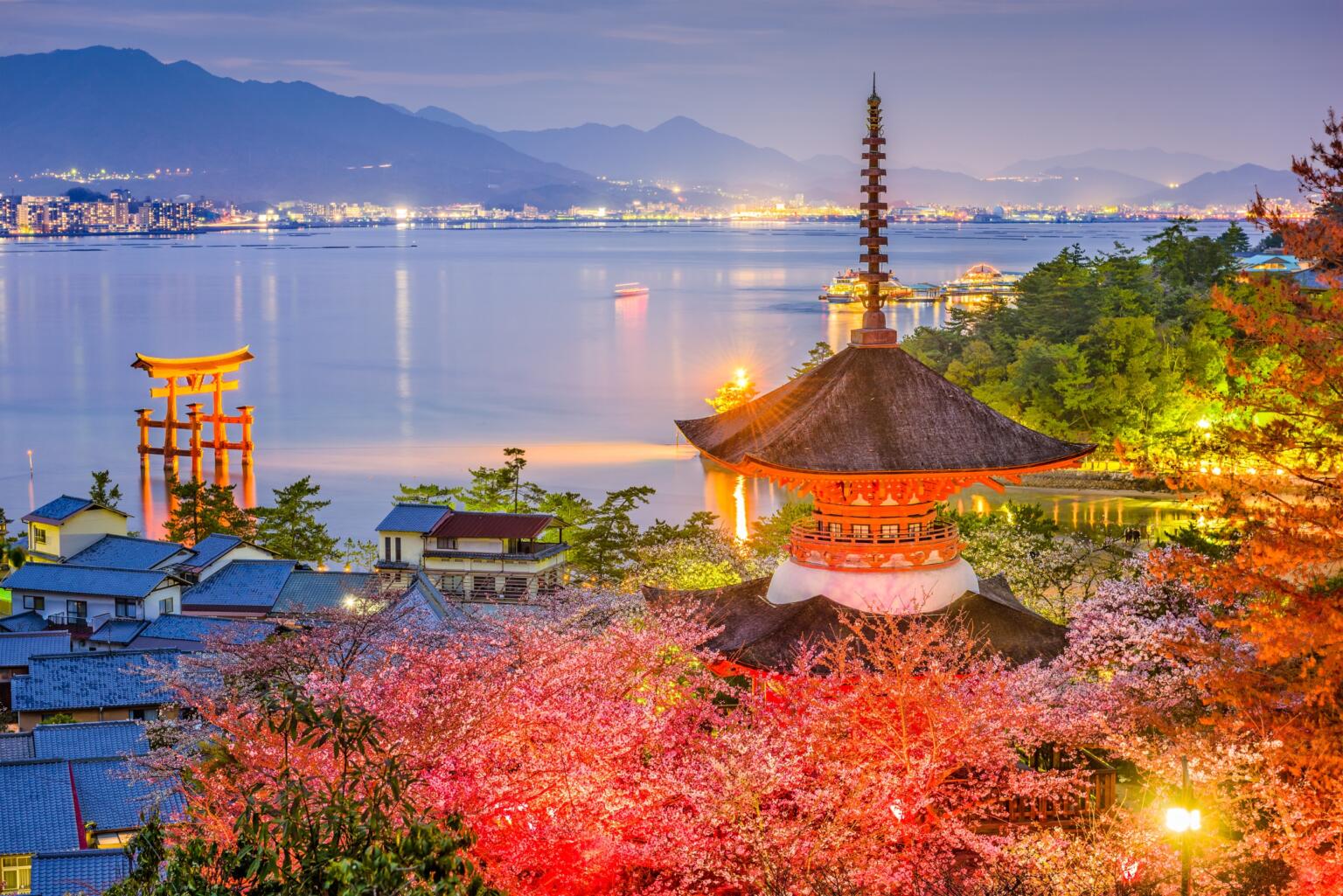
The Broke Backpacker is supported by you . Clicking through our links may earn us a small affiliate commission, and that's what allows us to keep producing free content 🙂 Learn more .
Summer, which stretches from June to August, tends to be quite hot and humid, while winter, from December to February can be a bit cold. With this in mind, the best time to visit Hiroshima is during fall (October and November) and spring (March to May).
The rainy season runs from mid-June to late July, but the rain doesn’t dominate the day, and the city is still pleasant to visit. For a truly special experience, plan your visit in early April which is when the cherry blossoms bloom.
The city has several districts to choose from, making it a bit tricky to choose the best place to stay in Hiroshima. The most important thing to consider is what you want to accomplish on your trip.
If you are visiting Hiroshima for the first time, then staying in Motomachi is your best bet! Motomachi is nearby the city’s most famous tourist attractions, including Hiroshima Castle and Peace Memorial Park.
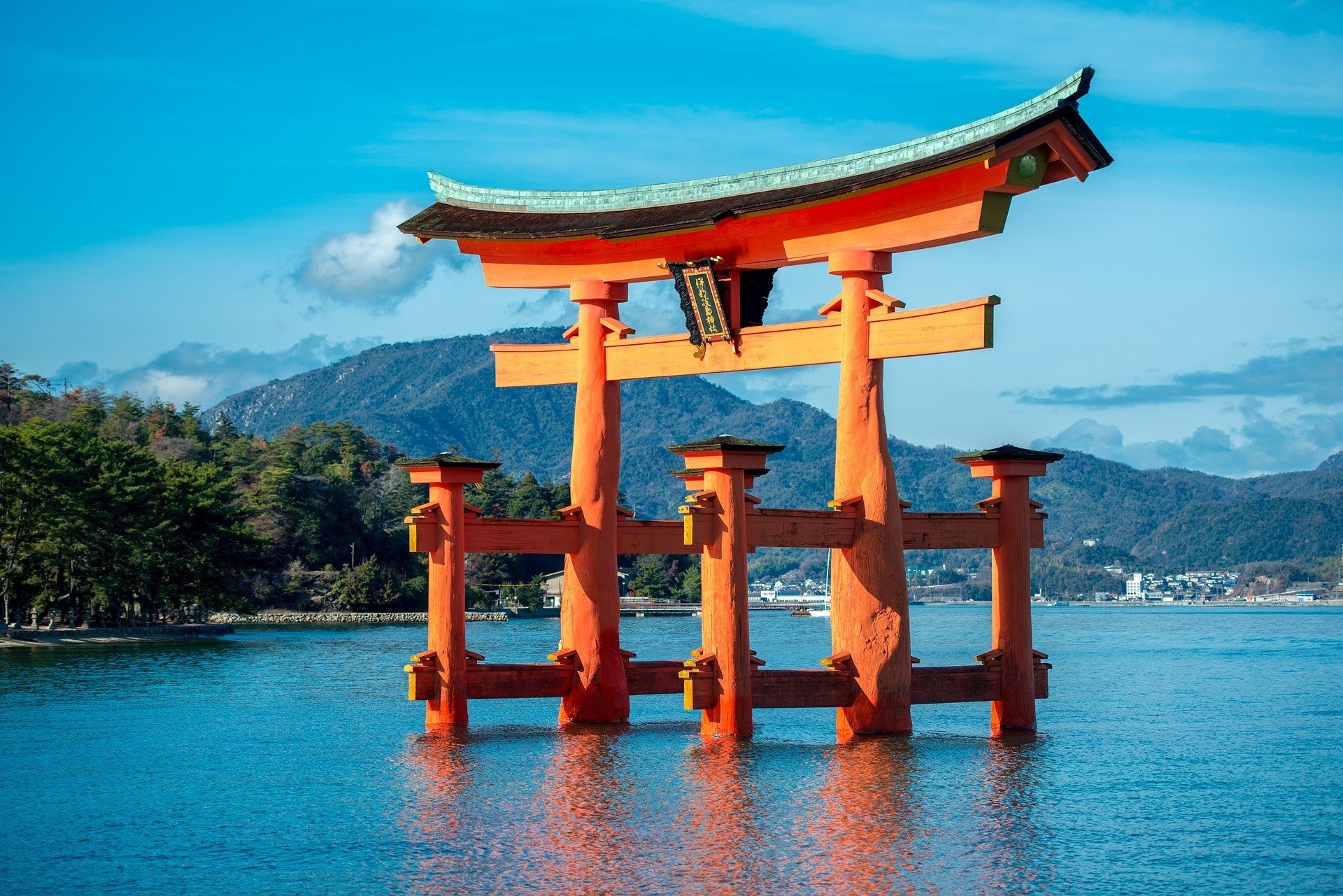
If you plan to travel to Hiroshima on a budget, then Kakomachi is a great area to stay. It’s small but central, and a short walk to popular bars, clubs and Hiroshima attractions. Planning on making the most of Hiroshima’s busy nightlife? Then Hondori is the best district for you!
For a lively and trendy spot to stay, Nakamachi is a very cool area. It offers a wide range of bars, clubs, and cafes that are suitable for all ages and preferences. Lastly, if you are traveling to Hiroshima as a family, then Hijiyamahonmachi is a well-connected neighborhood that offers the tranquility that a busy parent needs at the end of a day!
Renovated Home next to the Peace Park | Best Airbnb in Hiroshima
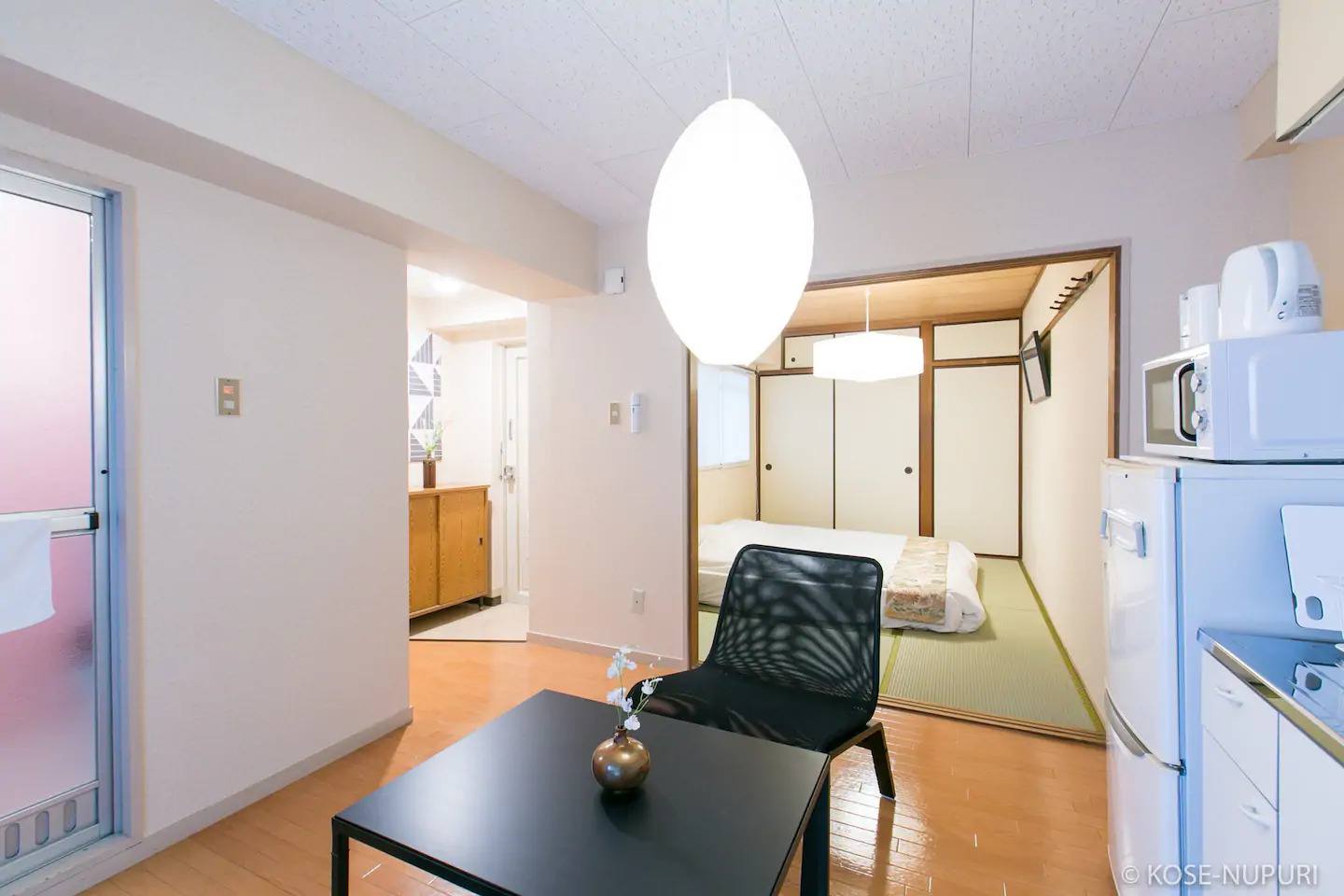
Nestled in the middle of two major Tourist Parks, is this modern apartment that is anything but average. The interior is modern, however, the bathroom has a random a blue toilet with pink walls, strangely enough, it’s still functional, plus you get a bathtub to soak your feet in at the end of the day from walking around all those parks and museums so conveniently located never this home. This home is set up for 2 but can sleep up to 3.
Chisun Hotel Hiroshima | Best Budget Hotel in Hiroshima

Chisun Hotel Hiroshima is simple, comfortable and clean, making it a top choice for a budget hotel in the city! It is located right next to Kanayamacho Tram Station and features an in-house restaurant, which serves incredible food! The staff are particularly friendly and always willing to offer some tips on touring Hiroshima!
Candeo Hotels Hiroshima Hatchobori | Best Luxury Hotel in Hiroshima
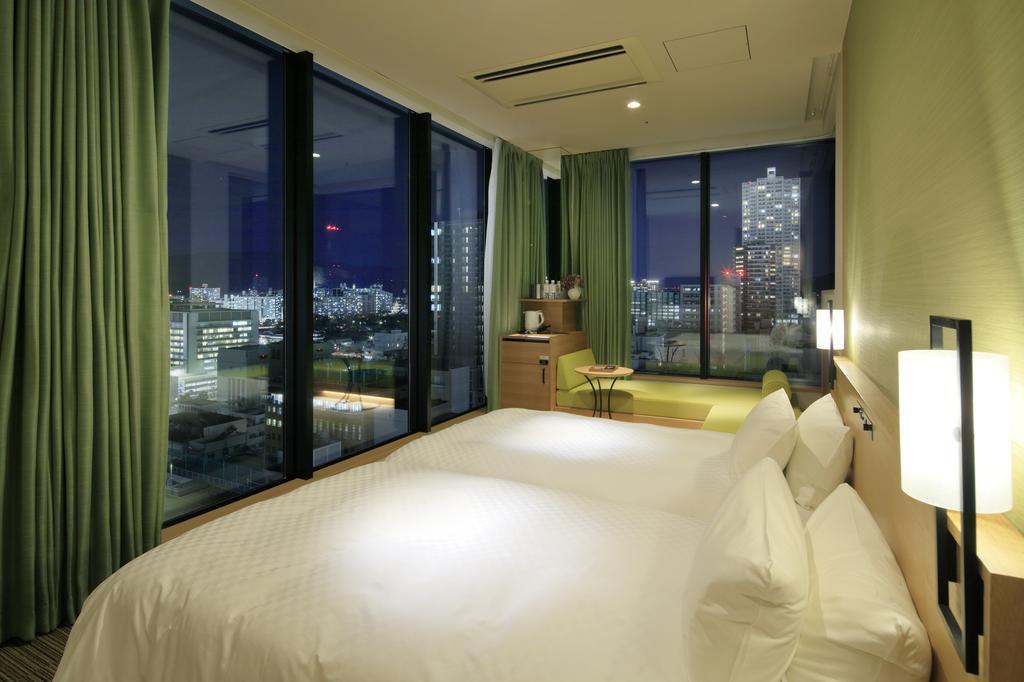
Experience Hiroshima from the lap of luxury by staying in Candeo Hotels Hiroshima Hatchobori! Not only is the hotel conveniently located in the heart of the city, but the comfortable and modern rooms also promise an unforgettable stay! The hotel has all of the facilities that you’d expect from a luxury hotel, such as a spa and wellness center, and a super tasty breakfast!
Backpackers Hostel K’s House Hiroshima | Best Hostel in Hiroshima

Looking for a friendly and cozy hostel in Hiroshima? Hostel K’s House is the place to be! Conveniently located, the hostel offers a spacious common room to chill out and clean rooms to catch a kip after a busy day exploring! This hostel is the best choice for security, location, atmosphere, and value for money!
Prefer to stay in hostels? Check out these really cool hostels in Hiroshima.
If you’re wondering how many days in Hiroshima you need? It’s important to know what you want to see and where you want to stay. To make the most of your itinerary for Hiroshima, it’s best to familiarize yourself with the easiest way to get around. As a city, Hiroshima is moderately large, meaning that you’ll probably use public transport at some point.
If you are staying in Downtown Hiroshima, you can explore most of the city by foot. However, if you want to venture a bit further, then you can take advantage of several transport options. The most popular being the tram, bus and taxi.
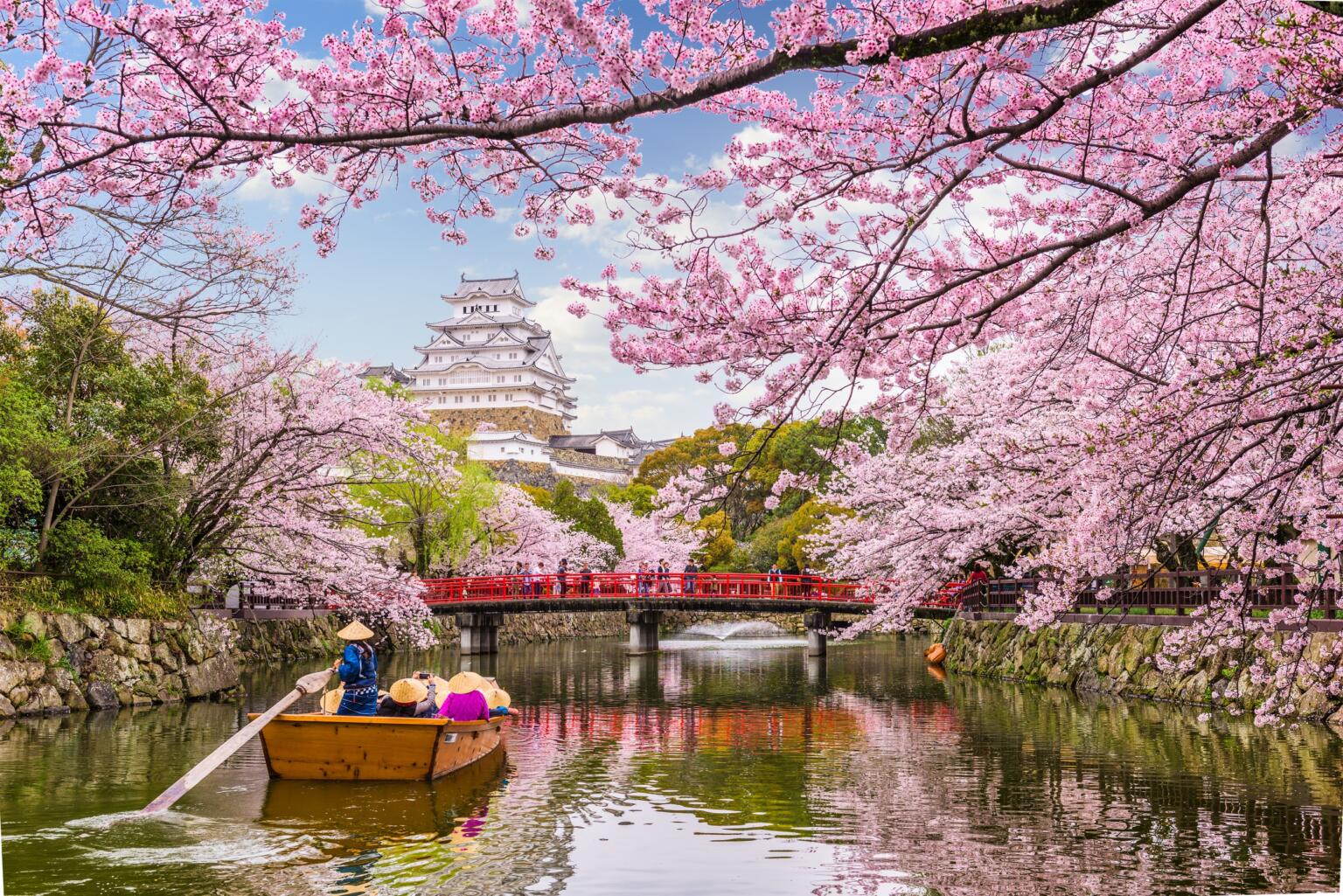
Street trams operate along several popular routes and can be used by anyone for a flat fee of USD $1,5. If you spend up to three days in Hiroshima, you may want to purchase an IC card from the tram terminal at Hiroshima Station or from one of the tram drivers.
There are two main bus lines that foreigners will likely take advantage of- the green and orange Hiroshima sightseeing loop buses. A single ride on these buses will cost you approximately USD $2, or you can buy a day pass for approximately USD $4.
If you prefer private transport, then Hiroshima also offers readily available taxi services for your convenient use!
Peace Memorial Museum | Atomic Bomb Dome | Hiroshima Castle | Mitaki-Dera Temple | Hiroshima Toyo Carp | Mount Haigamine
The first day of your Hiroshima trip itinerary is dedicated to exploring the tragic, but fascinating history of the Japanese city.
Day 1/Stop 1 – Peace Memorial Museum
- Why it’s awesome: Better understand the drastic effect that the atomic bomb had on Hiroshima!
- Cost: USD $ 0,5 for adults, and free for children!
- Food recommendation: Sheba Cafe is a cozy and casual cafe near Peace Memorial Museum which is known to serve the best brunch in Japan!
The atomic bomb that destroyed the city of Hiroshima in 1945- drawing World War II to an abrupt end- is intricately tied to the history of Hiroshima. The Peace Memorial Museum is one of the most popular Hiroshima points of interest and for very good reason!
The museum captures the tragedy through various accounts and information that shares the tragic story of the bomb. The experience is described as an intense one and is not for the faint-hearted. A visit to the museum is incredibly moving, offering a clear perspective on the 1945 events and how they still have an impact on the city today.
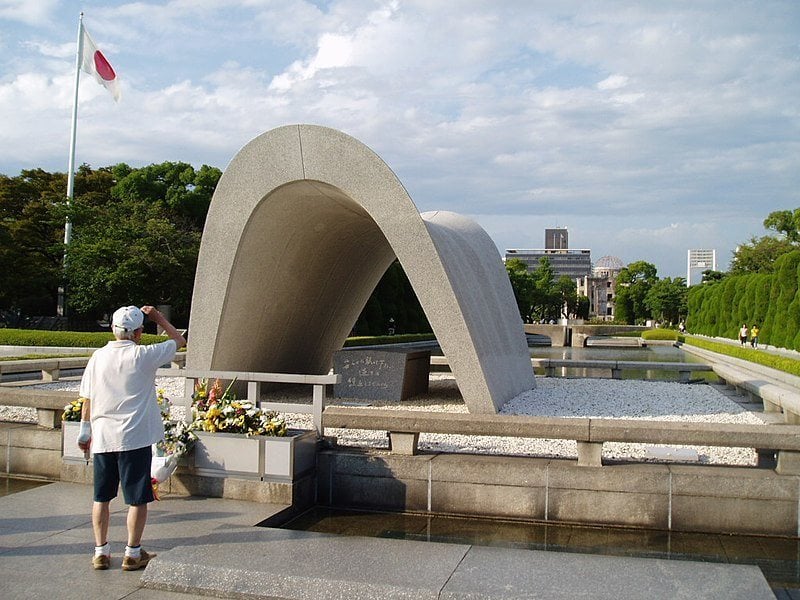
The museum is open from 8:30 am to 5 pm daily, and is a great first stop on your Hiroshima itinerary. After a visit to the museum, you can explore the rest of Hiroshima with a better understanding of how the city has overcome its challenges.
A visit to the Peace Memorial Museum is a must-visit spot in Hiroshima to learn about the immediate aftermath and get a detailed chronology of events that followed. Just make sure that you pack tissues if you are a sensitive soul!
Day 1/Stop 2 – Atomic Bomb Dome
- Why it’s awesome: The Atomic Bomb Dome is the symbol of Hiroshima’s legacy, and it has been left untouched since the explosion!
- Cost: Free!
- Food recommendation: To taste the best local okonomiyaki in Hiroshima, visit Nagataya which is a short walk away from the Atomic Bomb Dome!
Today, the Atomic Bomb Dome sits exactly as it appeared years ago after the explosion. The site is open every day and is free to explore. Walking through the rubble and twisted metal of the bomb site is an unparalleled experience.
The skeleton of the building stands as a memorial and painful reminder of the horrors of the locals, as well as a hope for a peaceful future! It was the only structure left standing in the area after the bomb was released, and visiting the dome can also be a very emotional experience.
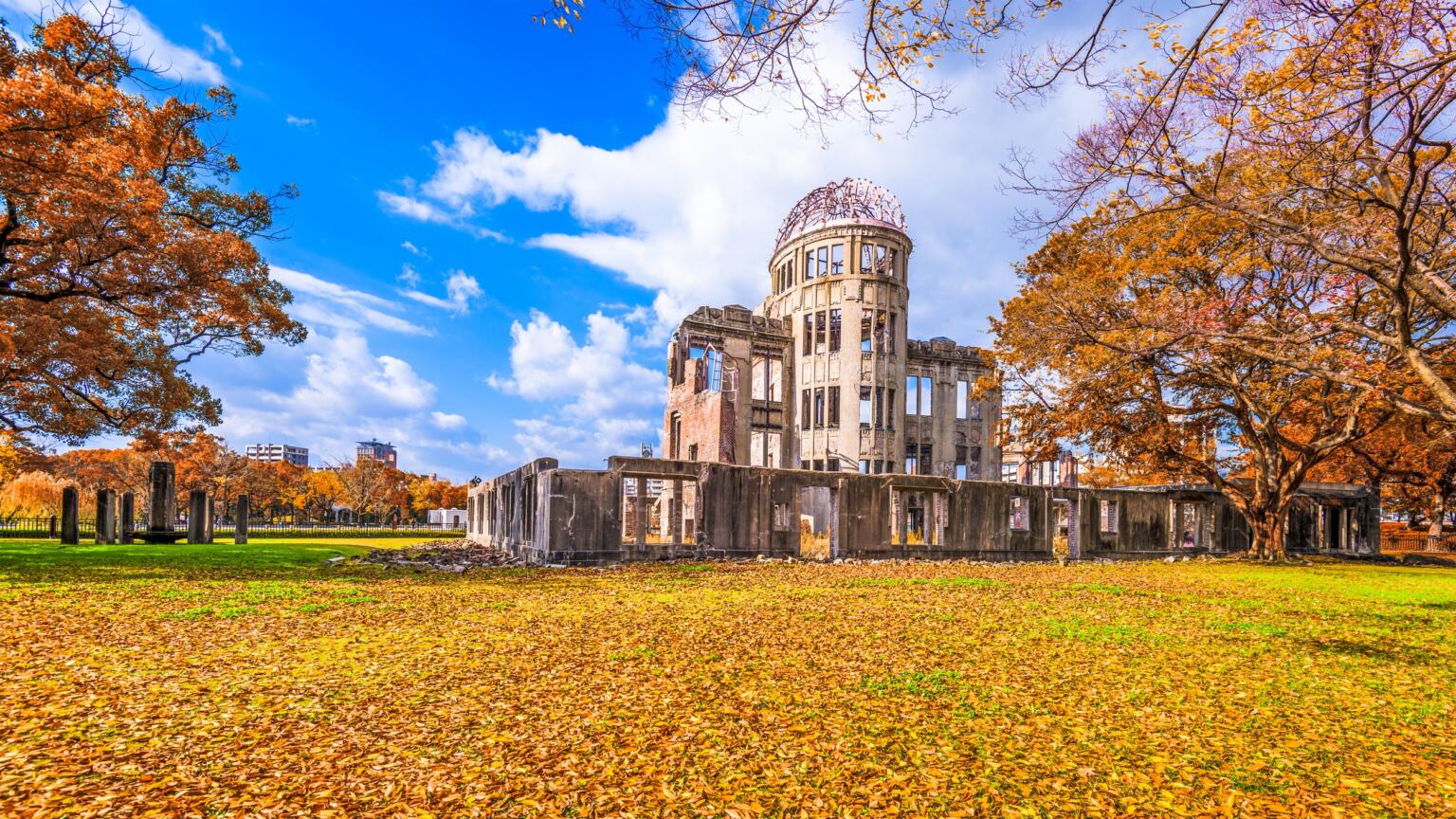
Not only is the explosion site untouched, but the surroundings have also been left the same. The dome also goes by the name of Hiroshima Peace Memorial Park or simply Peace Park . Despite being destroyed in appearance, it is a powerful representation of destruction that nuclear weapons can cause, as well as a symbol of peace in the middle of a war.
There are paper cranes made by children from all over the country as a symbol of peaceful ambition. If you visit Hiroshima, then you simply have to visit the Atomic Bomb Dome!
Insider Tip: If you want to take the time to fully embrace the atmosphere of the Atomic Bomb Dome without crowds, avoid going on weekends and during the middle of the day.
Day 1/Stop 3 – Hiroshima Castle
- Why it’s awesome: Built in 1589, the castle is an icon of traditional Japenese construction!
- Cost: USD $3,5 for adults, and free for children!
- Food recommendation: Coco’s Restaurant is a nearby family restaurant that offers convenient and affordable nosh in between exploring the city!
Also known as Carp Castle, the Hiroshima Castle is an iconic emblem of intricate and beautiful Japanese architecture! Originally built in 1589, the castle is located in a plain in the center of the city. The castle was reconstructed after it was destroyed during the war.
Hiroshima was originally built as a castle town, and the castle is still one of the most profound Hiroshima points of interest. It is located a short 20-minute walk from the Atomic Bomb Dome.
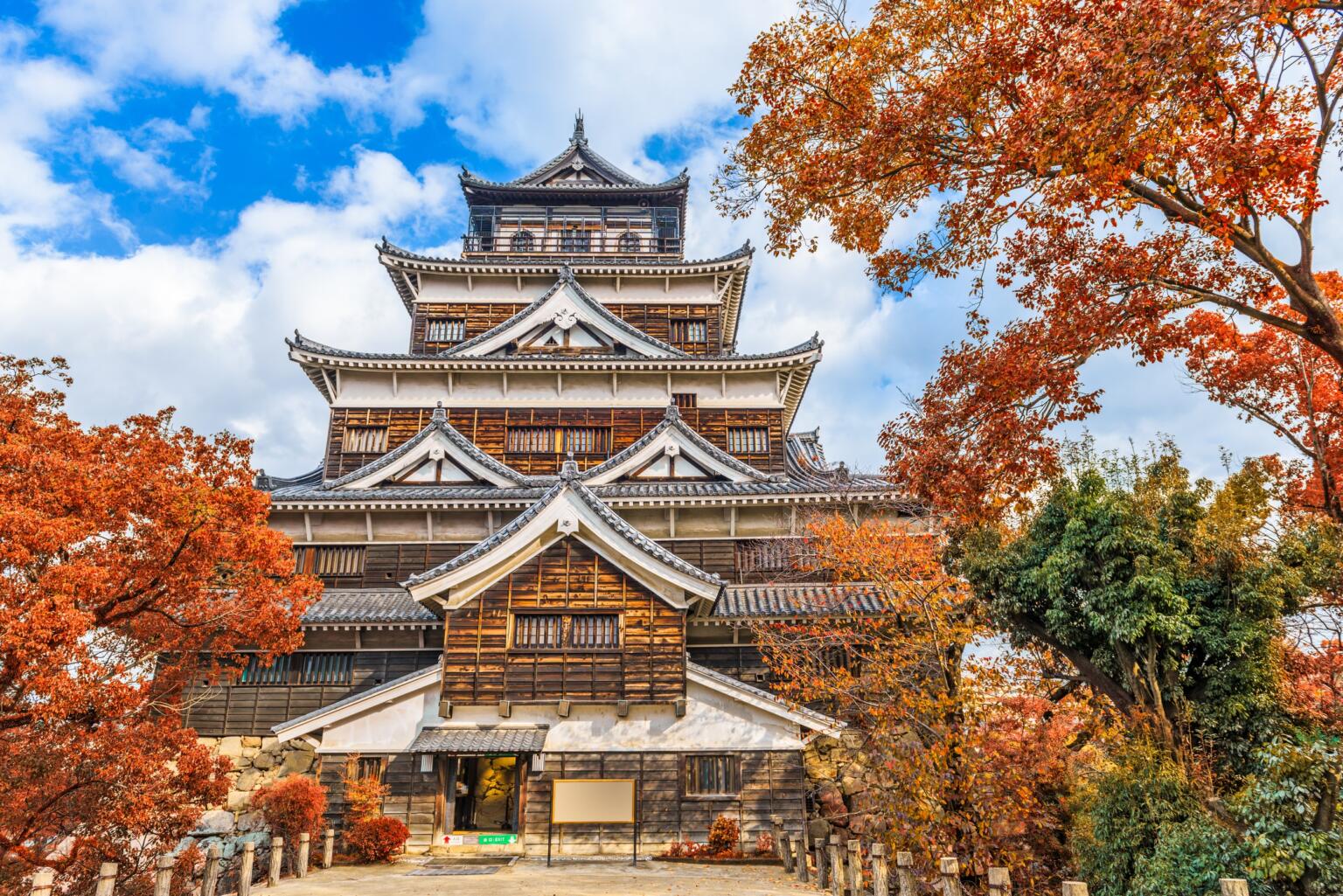
As an elegant icon of the city’s history, the main keep reaches five stories up and is surrounded by a moat. The view of the city from the top of the main keep is particularly beautiful and well worth a photograph (or two)!
Within the castle’s precincts are a shrine, ruins and reconstructed buildings of the Ninomaru, which is the castle’s second circle of defense. Hiroshima Castle is open to explore from 9 am to 6 pm from March to November, and from 9 am to 5 pm from December to February.
A vacation in Hiroshima would incomplete without visiting Hiroshima Castle, a beautiful image of Japanese architecture and history!
Day 1/Stop 4 – Mitaki-Dera Temple
- Why it’s awesome: Enjoy an incredibly beautiful and tranquil escape from the busyness of other Hiroshima attractions.
- Food recommendation: There’s nothing like sinking your teeth into a cheesy slice of pizza after a day of exploring, and nearby Pizza Riva offers the perfect opportunity to do so!
The serene and tranquil Buddhist temple located in downtown Hiroshima in a beautiful forest on a mountain slope. The beautiful space offers travelers the opportunity to chill out and enjoy the quiet, especially after a busy day in Hiroshima!
In addition to being a beautifully designed woodland temple, the Mitaki grounds are filled with Buddhist statues and waterfalls just waiting to be explored. Strolling through this grounds and the two-story pagoda will leave you feeling rejuvenated and relaxed.
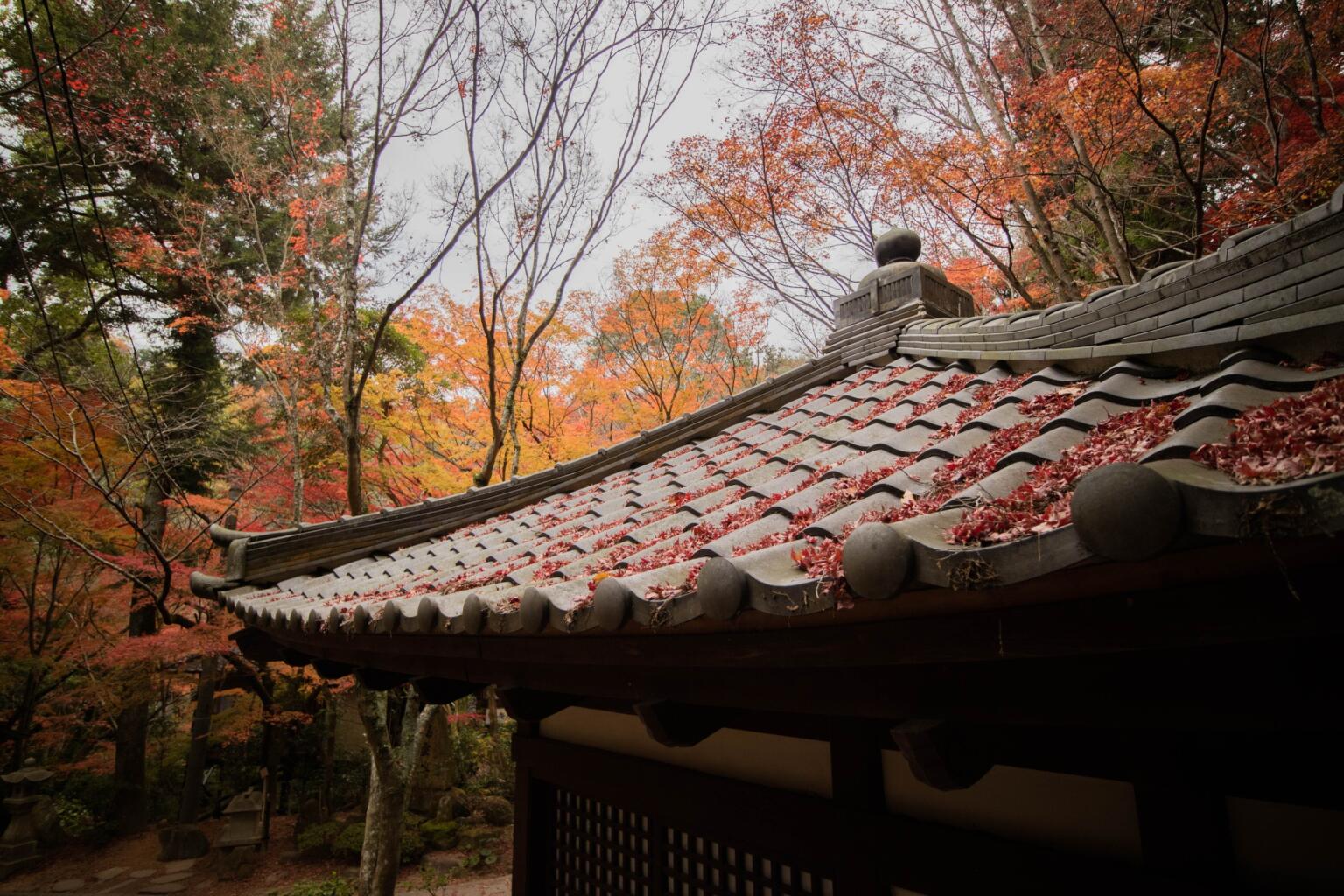
Although most travelers only spend one or two hours at the site, you can easily spend up to half of the day walking the grounds of the enchanting temple. Mitaki is a stunning combination of nature and art. So, if you are a nature-lover visiting the city, then you need to add a trip to Mitaki-Dera Temple on your itinerary for Hiroshima.
You can visit the temple every day between 8 am and 5:30 pm from March to November, and until 5 pm from December to February.
Insider tip: For an extra-special experience, visit the temple during autumn when the foliage turns a golden shade and frames the haven!
Day 1/Stop 5 – Hiroshima Toyo Carp
- Why it’s awesome: MAZDA Zoom-Zoom Stadium Hiroshima is the home stadium of the much-loved local Hiroshima baseball team, Hiroshima Toyo Carp!
- Cost: From USD $18 to USD $75 depending on the seats
- Food recommendation: Yebisu Bar is a great place to end (or start) your sporting experience with a quality beer at a reasonable price!
Japan is huge on their baseball, and the local team in Hiroshima is Hiroshima Toyo Carp! If you are spending a weekend in Hiroshima and your timing overlaps with a local game, then you have to try and book a ticket to a game!
There are over thirty kinds of tickets to choose from to perfectly suit your budget. Regardless of which ticket you get, you’re in for a super festive and exciting experience! The ballpark has a capacity of 32,000 spectators, making a baseball game in Hiroshima a social and sporting highlight!
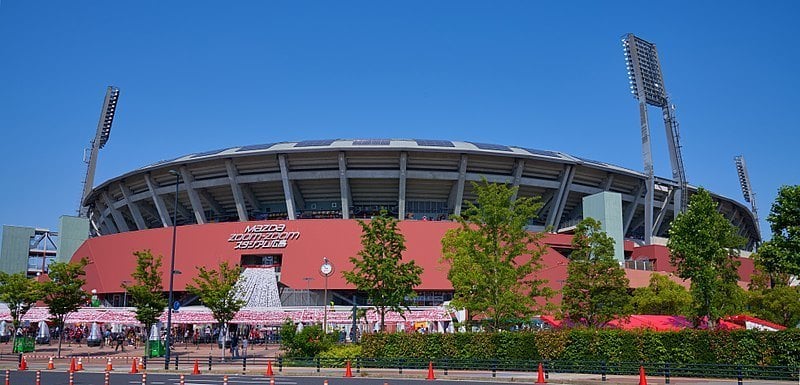
The stadium is conveniently located near Hiroshima Station, making the landmark easily accessible. During game time, the clean, modern stadium erupts into a vibrant venue that releases balloons and erupts in constant cheering!
If you don’t make it to a baseball game, you can still explore the MAZDA Zoom-Zoom Stadium which is the local stadium for the Hiroshima Toyo Carp. During this tour, you can catch glimpses into parts of the stadium that you don’t normally see.
Insider tip: The stadium is not a dome, and sometimes games can be canceled if there is stormy weather, so keep an eye on the weather report!
Day 1/Stop 6 – Mount Haigamine
- Why it’s awesome: The view from the top of Mount Haigamine offers one of the best nightscapes in the region!
- Food recommendation: End of your night with a delicious Indian meal at Rasoikure Honten Indian Cuisine!
Mount Haigamine is loved as one of the top three nightscapes in Japan, offering a bird’s eye view of Hiroshima. The breathtaking view from the mountain paints a scene described as a sea of sparkling jewels in the night.
A drive (or easy hike) to the top of Mount Haigamine is the perfect way to end off your first day in Hiroshima. Mount Haigamine is the perfect spot to visit if you are looking for a romantic evening with your loved one!
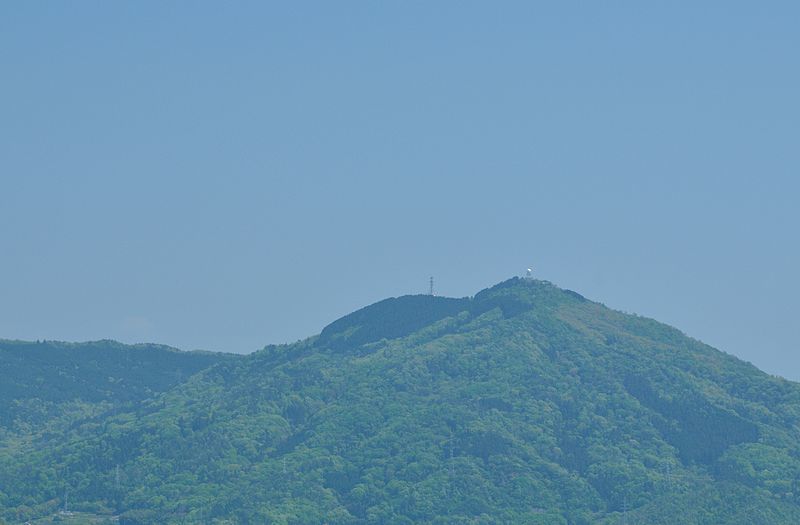
The view from the top of the mountain boasts a 360-degree, panoramic, unobstructed view of the sea, the islands of the Seto Inland Sea and Hiroshima city. The mountain itself is not that high, but the view adopts an impressive sense of altitude.
The mountain is a bit of a distance (about 20 kilometers) from Hiroshima, however, the summit can easily be done with a short climb or drive. If you decide to climb, you can reach the top within an hour from getting dropped at Haigamine Tosan Guchi.
So, hop into a taxi and enjoy the fascinating view that the top of the mountain offers!

Wanna know how to pack like a pro? Well for a start you need the right gear….
These are packing cubes for the globetrotters and compression sacks for the real adventurers – these babies are a traveller’s best kept secret. They organise yo’ packing and minimise volume too so you can pack MORE.
Or, y’know… you can stick to just chucking it all in your backpack…
Miyajima Island | Itsukushima Shrine | Miyajima Ropeway | Miyajima Omotesando Arcade | Machiya Street | Pub Hop
Miyajima Island and it’s many attractions go hand-in-and with Hiroshima and the second of your two days in Hiroshima will be spent exploring the area!
Day 2/Stop 1 – Miyajima Island
- Why it’s awesome :Considered one of the most spectacular places in Hiroshima, especially in Autumn!
- Cost: Free to explore!
- Food recommendation: Miyajima Coffee is a cafe open from as early as 9 am, ready to welcome you to Miyajima Island with a warm brew!
Miyajima Island is a must-visit spot in Hiroshima! It is without a doubt one of the top places to visit in Hiroshima in three days and after hopping off the ferry, you’ll understand why!
Although only 27 kilometers from Hiroshima mainland, you should allocate about an hour and a half to get to the island, so waking up early is advised! The route is simple! Hop onboard a train at Hiroshima Station (which departs every 15 minutes) and travel the 26 minutes to Miyajimaguchi. Walk for a short two minutes and jump onto a short 10-minute ferry bound for Miyajima.
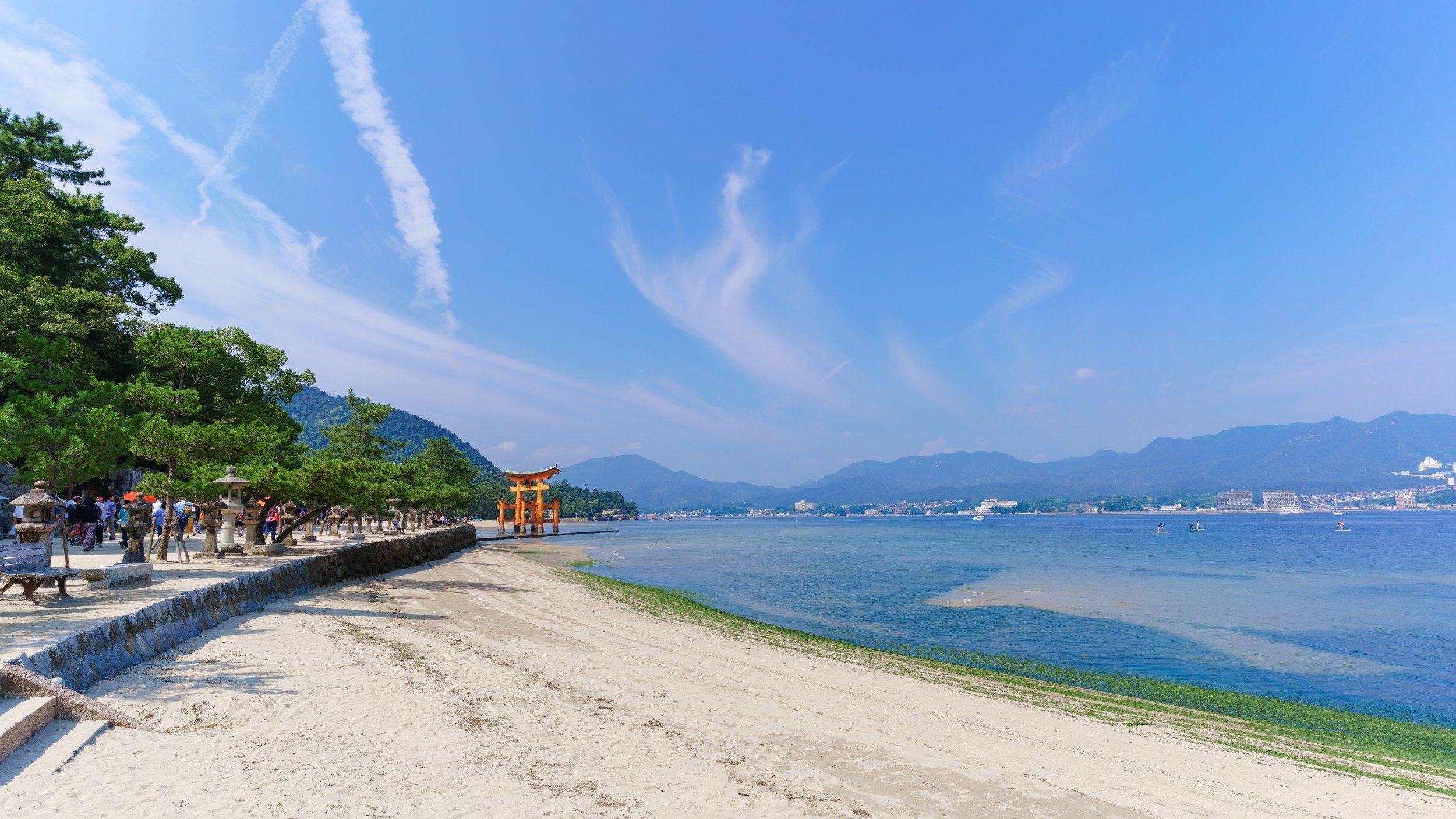
Once on the island, prepare to have your mind blown! The island is available for travelers to explore all day, every day, and is completely free! Beautiful green forests, exquisite Japanese architecture and a host of Buddhist temples fill the island. If you are looking for an extra-special experience, book a Hiroshima walking tour of Miyajima Island!
Insider tip : The best time to visit the island is undoubtedly during autumn when the leaves turn a golden shade and the entire island is painted in an orange tone.
Day 2/Stop 2 – Itsukushima Shrine
- Why it’s awesome: A world-renowned shrine and World Heritage Site!
- Cost: USD $3 for adults, USD $1 for children
- Food recommendation: Feeling peckish? Head on over to Fujitaya for an amalgamation of flavors in one single dish!
People flock from all over the world to visit Itsukushima Shrine . The world-renowned Japanese shrine is not only a magnificent place of worship, but also showcases beautiful architecture and a rich history!
First established in the 6th century, the shrine encapsulates an incredible history and story of Japanese culture. From the pagodas and temples to the extant buildings, it’s easy to get lost in the serene atmosphere of the shrine.
The site was declared a World Heritage Site in 1996, and your two-day itinerary in Hiroshima would be incomplete without a visit to the shrine. Itsukushima Shrine is open from 6:30 am to 5 pm every day, making it easy for a visit to fit into your Hiroshima itinerary!
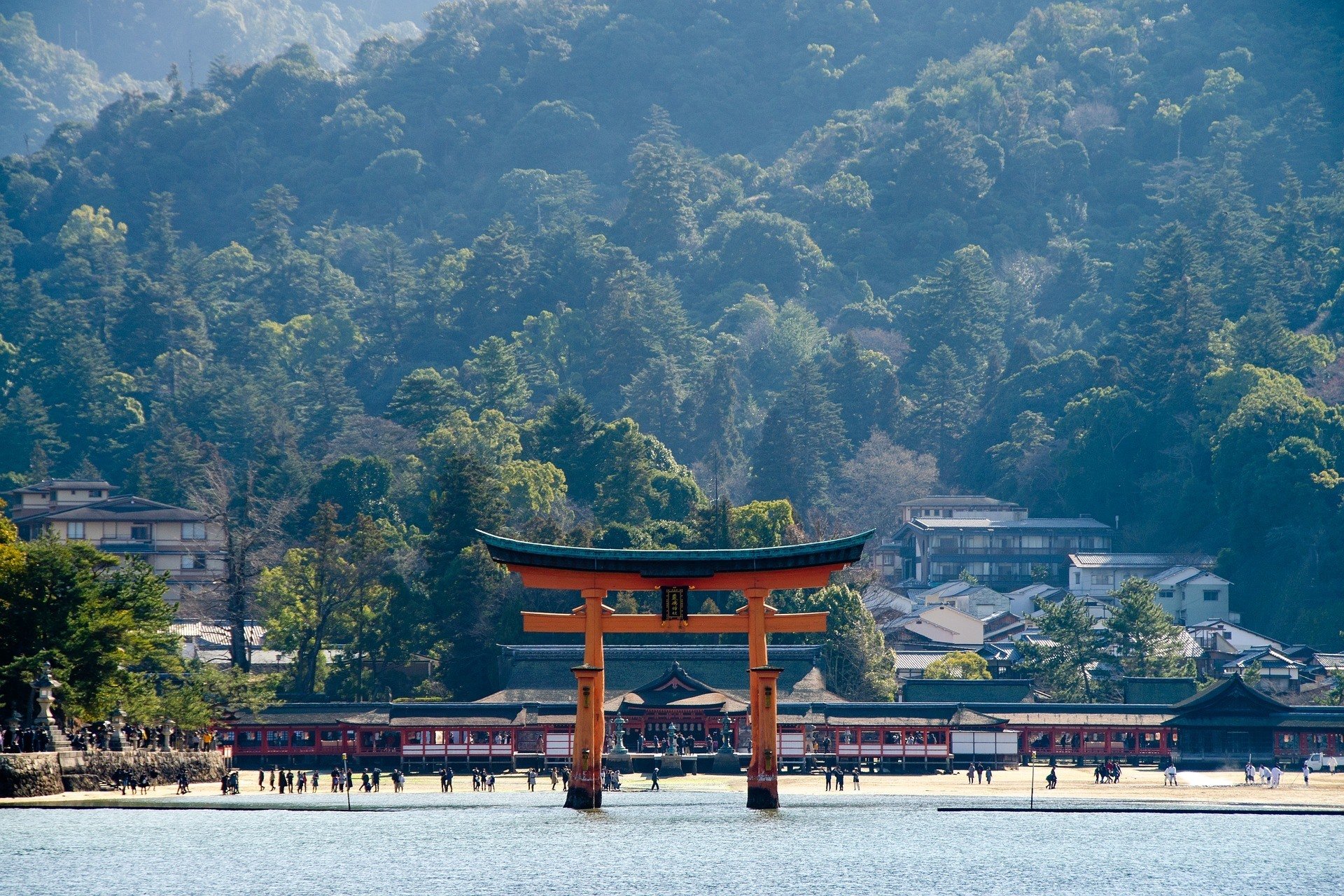
From the moment that you arrive, you will be overwhelmed with a feeling of enchantment. The gate itself appears to be floating above the water. The crimson gate is known to be one of the main features on the island.
Whether you are on a romantic getaway or taking the family on a history tour, the shrine promises a magical experience.
Insider tip: It is highly recommended that you visit early in the morning, before it gets too crowded, as this is the most serene and tranquil time to visit.
Day 2/Stop 3 – Miyajima Ropeway
- Why it’s awesome: Offering the best view of the island, with panoramic sightings across the island’s incredible beauty!
- Cost: USD $9,5 for a one-way trip for children 12 and above, USD $17 for a round trip. USD $4,5 for a one-way trip for children aged 6 – 12, USD $8,5 for a round trip.
- Food recommendation: Sarasvati is a nearby sandwich shop selling the perfect grab-and-go snacks served in a great setting!
The trip on the Miyajima Ropeway is an unforgettable experience that will both push your comfort zones and offer surreal views. The experience mimics that of walking on air as you enjoy a panoramic view of Hiroshima’s top attractions from 500 meters above sea level!
Take in sweeping views of the Miyajima ancient forest and the Seto Inland Sea as you soar through the sky on a gondola.
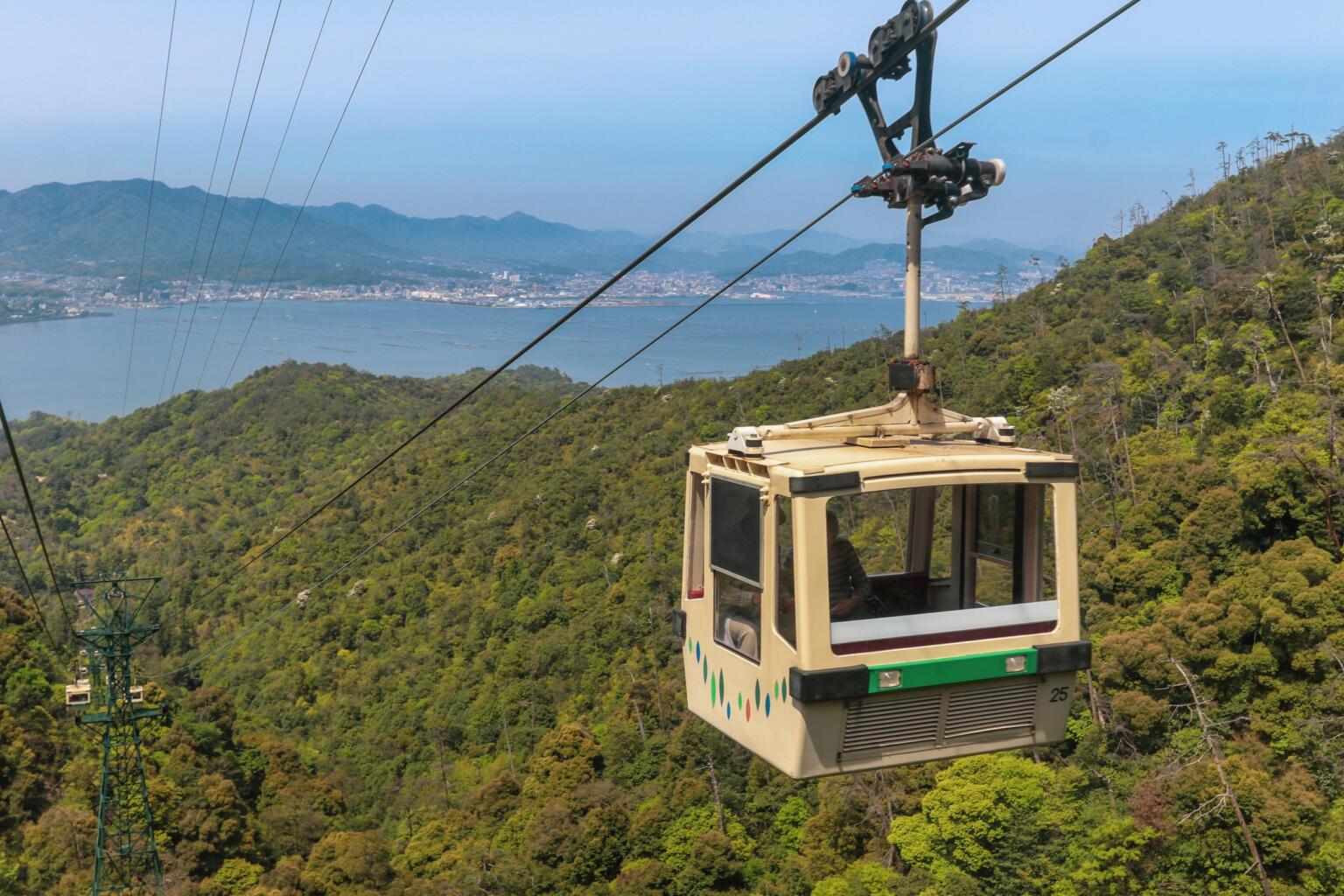
The cable car across the sea is accessible from Mount Misen, which is connected to Momijidani Park. If you are looking for a more diverse experience, you can embark on the one hour hike to the top of Mount Misen, and take the cable car down.
From the station at the top of the ropeway, you can walk another 30 minutes to the summit and explore the small temples and shrines.
The ropeway is open throughout the year from 9 am to 5 pm, with the hours extending during certain seasons, particularly November, from 8 am to 5:30 pm.
Day 2/Stop 4 – Miyajima Omotesando
- Why it’s awesome : The arcade is jam-packed with shops and restaurants to enjoy after a morning of exploring!
- Cost: Free to explore
- Food recommendation: Kakiya is a fabulous seafood restaurant that offers amazing wine pairing options with their oysters!
Miyajima Omotesando is a major tourist attraction on Miyajima Island. It’s where locals and travelers alike congregate to explore the bustling shops and restaurants.
Miyajima Omotesando is the busiest arcade on the sacred island and is a popular spot for tourists to visit and refuel after touring the rest of the island. If you want to purchase a few gifts and souvenirs, then Miyajima Omotesando is the spot to be!
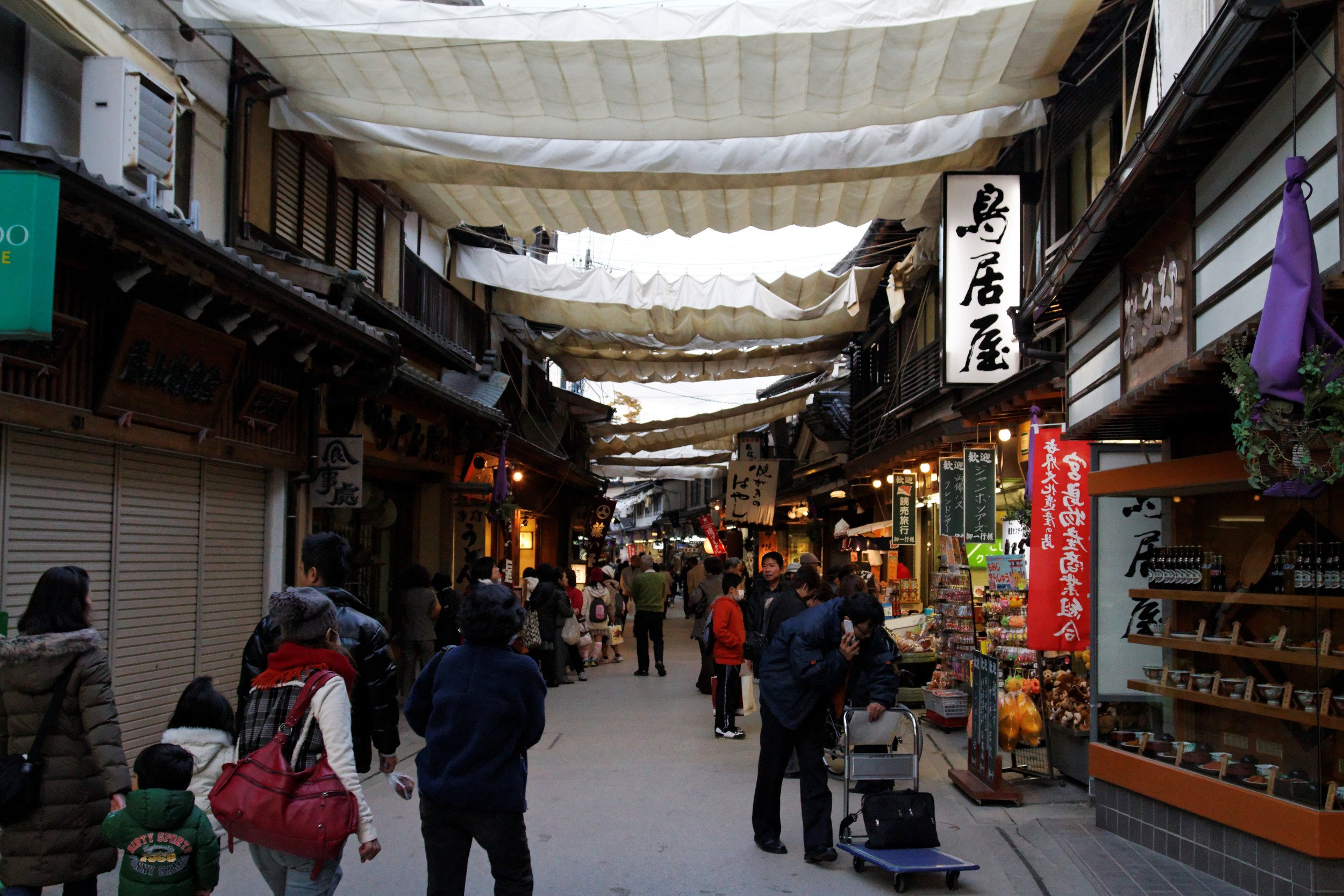
During the weekend, the arcade is open 24 hours a day. During the week, each shop has different operating hours but the general time is 9 am to 6 pm. The arcade is overflowing with charming spots to eat and explore, so make sure that you allocate some time to stop at Miyajima Omotesando.
Insider tip: Also found along the shopping street are stores selling traditional Miyajima crafts. For a truly unique purchase, look out for their rice spoons!
Day 2/Stop 5 – Machiya Street
- Why it’s awesome: Walk through the street and watch the paper-covered lanterns light up!
- Cost: Free to roam.
- Food recommendation: End off an unforgettable trip to Miyajima at Miyajima brewery, which is known across the island for their delicious beer!
After a historically and culturally immersive day spent exploring Miyajima Island, end off your day with a stroll through Machiya Street. The popular street is located right behind Miyajima Omotesando and is brimming with modern retro cafes and stores, combining an element of modernity to the ancient island.
The street itself is open 24 hours a day, but each cafe, bar, and shop has differing closing times. Although it’s a slightly more modern take on the traditional island, you will still be met with bursts of traditional happenings.
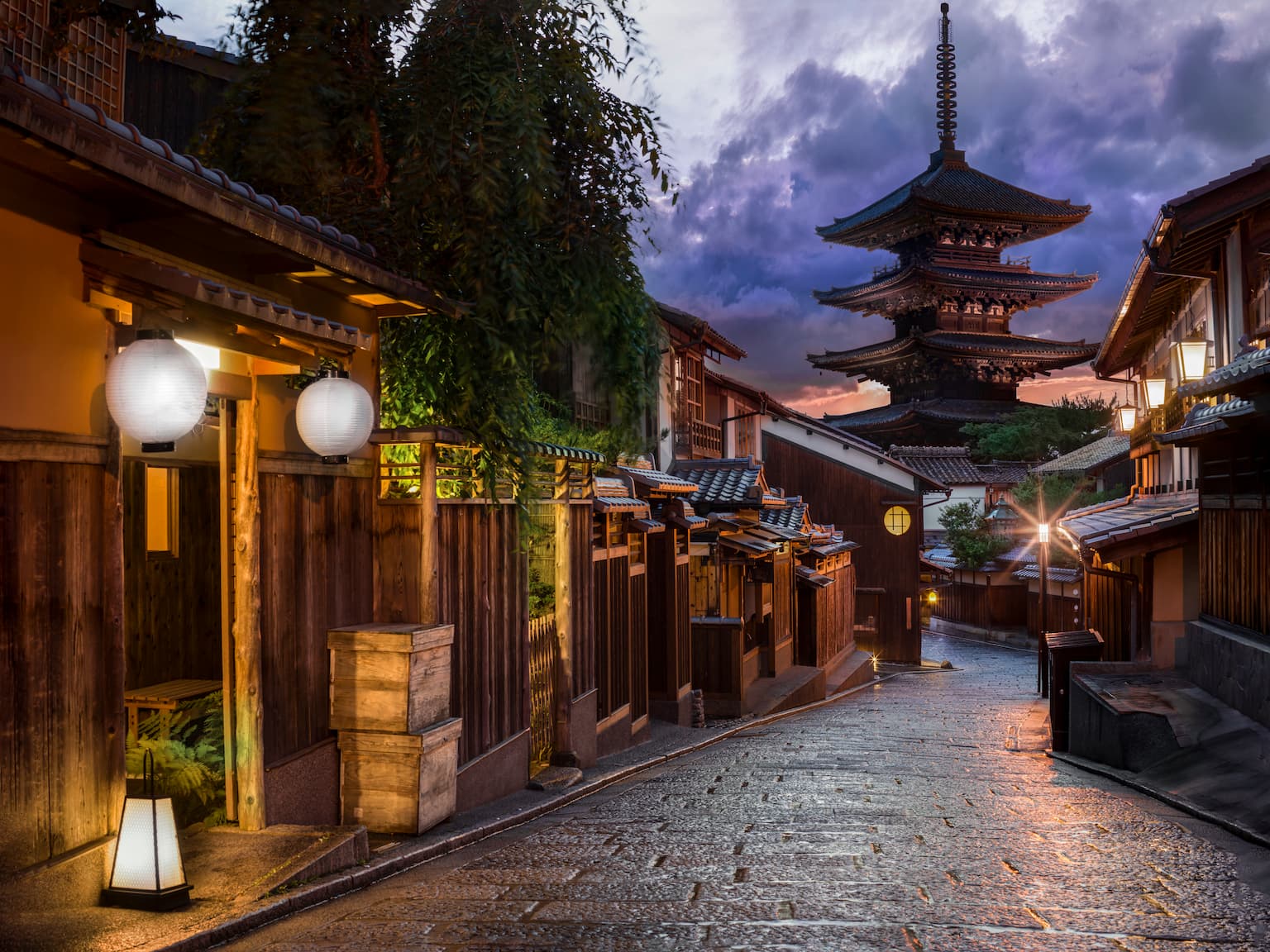
Prepare for rickshaws to whizz down the street and wander past traditional machiya (townhouses) and Japanese tea houses! Stop by Gallery Miyazato which holds special exhibitions and showcases fascinating Japenese art.
If you happen to be on the street as the sun sets, then you are in for an extra-special treat! The avenue lights up with 51 paper-covered lanterns that illuminate the bustling strip. Most of the shops will be closed around this time, but the beautiful atmosphere is well worth the wait! In addition, many of the cafes and bars stay open until later.
After soaking up the best that Miyajima Island has to offer, it’s time to return to Hiroshima mainland! This is a must-vist stop when backpacking Japan.
Day 2/Stop 6 – Pub Hop
- Why it’s awesome: Taste the best adult beverages in a fun and friendly environment!
- Cost: Ranging according to your tolerance. As a guideline, one pint of domestic beer costs approximately USD $4.
- Food recommendation: Start off your pub crawl experience at Raku Beer which serves an unforgettable craft beer tasting experience!
What better way to end your two-day itinerary in Hiroshima than with a festive pub-hopping experience! This is a particularly fun activity to do if you combine it with a food tour!
Grab your squad and head on out to one of Hiroshima’s popular nightlife districts and enjoy the best of the bars! Japanese beer has developed a name for itself. While nightlife activities have the potential to go on until the early hours of the morning, you can also have a complete experience from as early as 10 pm!
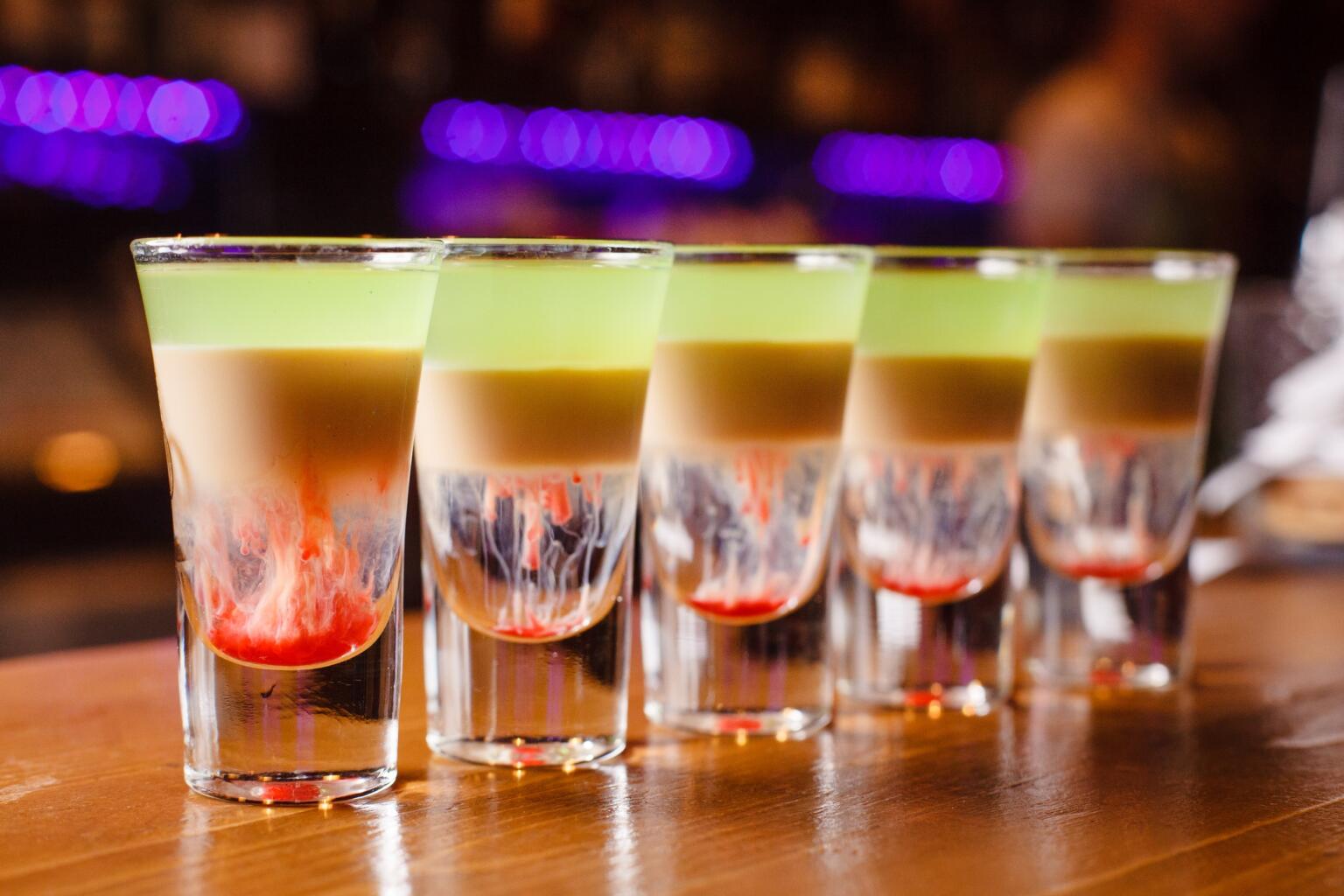
One of the best areas to hop on through is Nagarekawa which has a wide variety of bars and restaurants to start off your night, as well as several clubs to finish the night off!
Hiroshima has several beer gardens to choose from. Japanese beer is particularly popular in the city, known throughout the world for its quality and great taste! The four major beer producers are Asahi, Kirin, Sapporo and Suntory. You should definitely try each of them on your pub crawl!
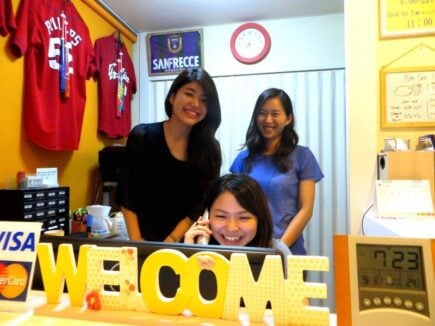
Backpackers Hostel K’s House Hiroshima
Looking for a friendly and cozy hostel in Hiroshima? Hostel K’s House is the place to be! For more hostels to choose from, check out our favorite hostels in Japan.
- Free City Maps
Sandankyo Gorge | Hiroshima Okonomiyaki | Onomichi | Mazda Museum | Shukkeien Garden
If the first two days in Hiroshima grab your attention, making you want to stay longer, then this three-day itinerary in Hiroshima will help further guide your adventures!
Sandankyo Gorge
- One of Hiroshima’s most fascinating hidden gems, waiting to be explored!
- An enchanting natural wonderland with dense forests, crashing waterfalls and sheer cliffs.
- One of six Japanese ravines (and gorges) to be classified as a Special Place of Scenic Beauty on a national level!
Sandankyo Gorge is one of Hiroshima’s most breathtaking scenes! Although initially a hidden gem, the gorge has gained in popularity over the years but still maintains its serene and tranquil atmosphere.
The thundering waterfalls are framed by sheer cliffs and dense forests, creating an environment of natural beauty. In addition to an enchanting environment, there are also magical fables associated with the space such as Sandankyo being fabled as the home of the Japanese giant salamander.
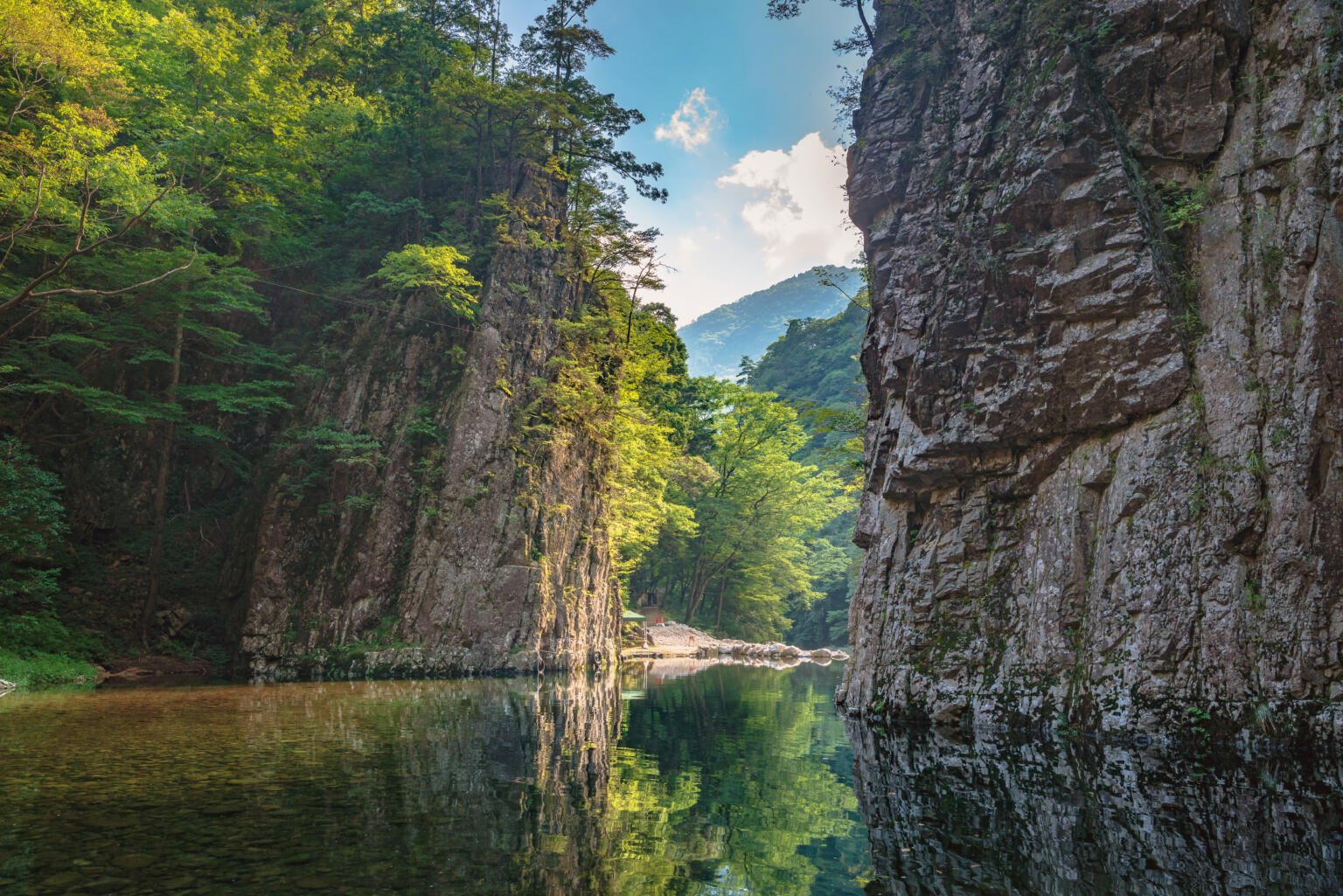
Sandankyo only opens in late April, after the snow of the winter has subsided. There are several little shops and restaurants at the start of the ravine for travelers to stock up before enjoying the crisp mountain air.
If you want to explore this fascinating spot, you can take a bus from downtown Hiroshima to Sandankyo. However, be aware that there is only one express bus a day! From here, you can walk the thirteen-kilometer trail along the Shiwagi River, stopping at the ferry if you wish which offers a ride to the falls for as little as USD $4.5!
A visit to Sandankyo Gorge promises to be a truly special experience, one that will never be forgotten!
Hiroshima Okonomiyaki
- Hiroshima Okonomiyaki is considered Hiroshima’s soul food!
- The ultimate culinary experience, consisting of Japanese savory pancakes topped with various vegetables and pork belly!
- Explore countless okonomiyaki stores scattered throughout the city.
One way to quickly settle into the local vibe is to eat like the locals! Hiroshima’s soul food is okonomiyaki, a decorated savory pancake. The pancake is topped with the likes of cabbage, green onion, bean sprouts, noodles, and tasty pork belly!
Although okonomiyaki can be found throughout Japan, Hiroshima is known to serve the very best! A visit to the Okonomimura Complex is packed with a variety of twenty-five restaurants packed in one building, so take your pick!
Sitting down to a Hiroshima Okonomiyaki meal is a great activity to enjoy in between rushing from one attraction to another, refueling along the way!
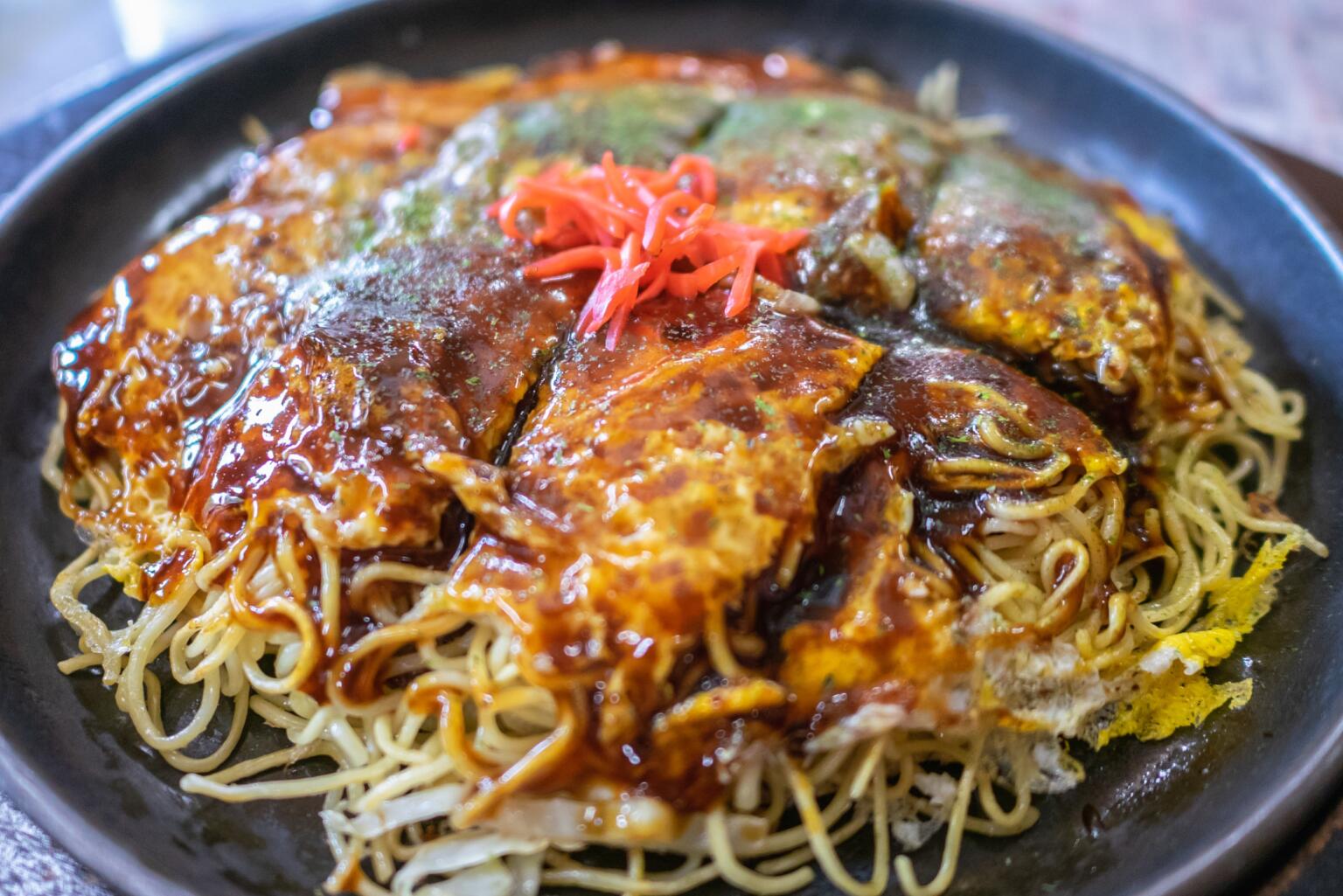
If tasting the local cuisine further piques your interest and you want to discover more, then head on over to Wood Egg Okonomiyaki Museum. The theme park run is run by Otafuku Sauce Company, which produces some of the best okonomiyaki sauce.
The Wood Egg Okonomiyaki Museum offers an unforgettable experience for everyone whether you are traveling as a family, solo traveler, couple or group! Visitors are given the opportunity to experience the process of putting the sauce into bottles, then a tour of the factory and can even enjoy a cooking class themselves!
The museum is open from Monday to Friday, from 9 am to 5 pm. This is the perfect addition to your three-day itinerary in Hiroshima!
- Onomichi is a charming town in Hiroshima along the coast.
- The area is surrounded by beautiful mountains, ancient temples, and stunning buildings!
- Enjoy Onomichi’s awesome beaches and rejuvenating hot springs!
Onomichi is an area located on the coast of the Seto Inland Sea, a Hiroshima attraction on its own! The thriving commercial hub has been a hot spot for locals since ancient times, compounding it’s rich artistic cultural and artistic history.
Many travelers choose a guided tour through the town to better learn the rich history, but a self-guided walking tour is just as effective. As you walk through the streets, you can discover the homes of critically acclaimed Japanese artists and writers, as well as the location of several films!
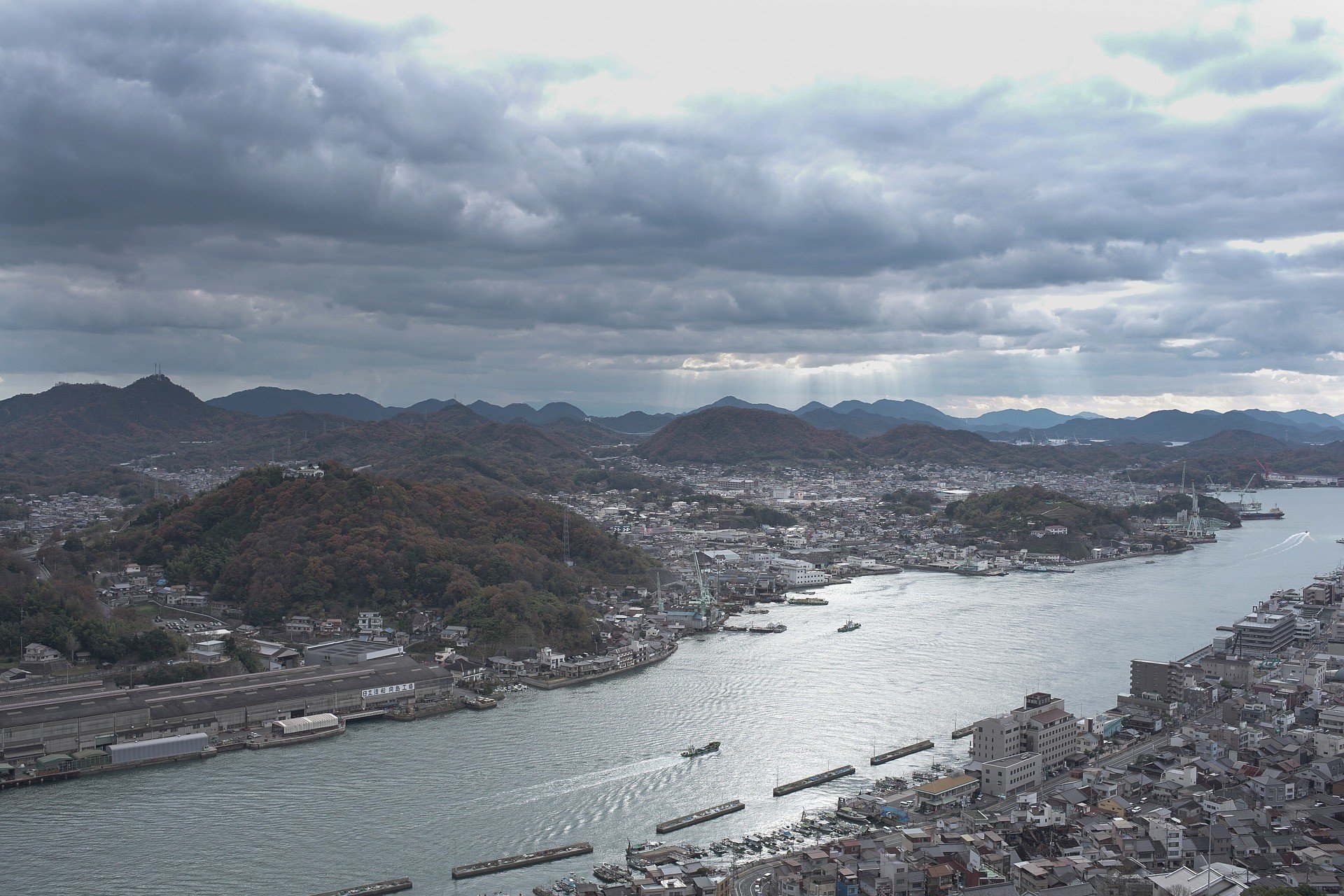
The best time to explore the town is during the day from 9 am to 5 pm, when the sun is up and the streets are lively. You can expect incredible views as the town is framed by natural wonders. In addition to breathtaking natural wonders, there are also countless temples and museums to discover.
Other key attractions in Onomichi are Senkoji Park, which is home to lots of cats, as well as the beach and hot springs. The charm of the town is expanded across the area, with the opportunity to relax at the beaches and springs, to energetically exploring the streets!
Each corner of Onomichi is unique, offering a variety of experiences depending on your preferences!
Mazda Museum
- Visit the corporate headquarters of the popular Mazda!
- Discover the fascinating working assembly line that produces these slick machines!
- The tour is free! All that is needed is a reservation.
Mazda is one of the most popular car brands and is distributed across the world! The corporate headquarters are located in none other than Hiroshima! So, if you find yourself in the city, wondering what unique thing to do in Hiroshima, then head on over to the Mazda Museum.
The Mazda Museum was founded in 1920, and the streets of Hiroshima are filled with Mazda cars. A visit to the Mazda Museum is a slightly alternative experience, and one that may not tickle the fancy of many visitors, but is well worth the visit!
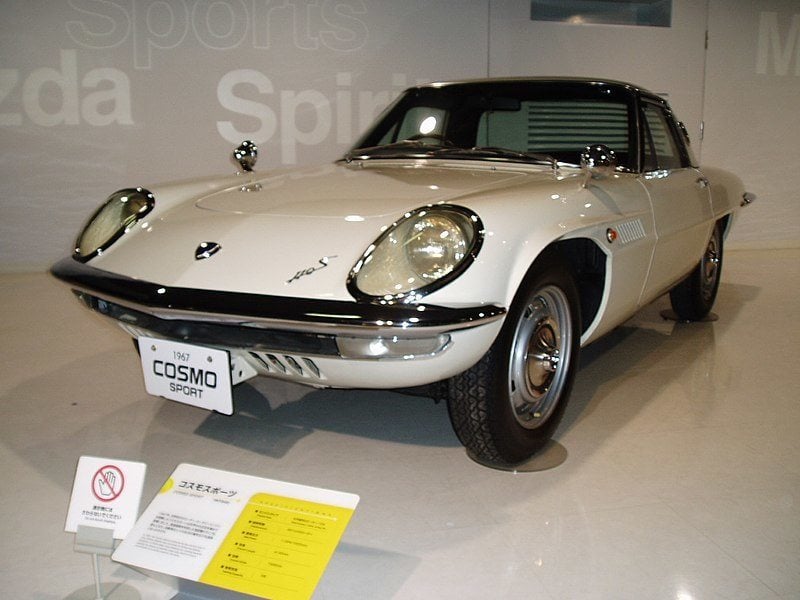
The museum is open every day of the week, except for national and company holidays. There are free tours that take approximately one and a half hours. All that you need to do is email a reservation in advance.
A tour of the museum showcases the fascinating assembly line that produces the world-renowned machine! The tour also includes an overview of the company’s history and the opportunity to buy some Mazda merchandise.
Regardless of whether or not you are a car enthusiast, a visit to the Mazda Museum promises to be an enriching and educational experience.
Shukkeien Garden
- One of the finest of Japanese typical gardens!
- The garden is conveniently located near the famous Hiroshima Castle.
- Shukkeien is translated into “shrunken-scenery garden,” painting a rather accurate picture of the site!
Japan is known throughout the world for its exquisite gardens, full of beautiful plants and natural wonder. One of the best examples of these Japanese gardens can be found in Hiroshima, the Shukkeien Garden!

The garden dates back to 1620, when it was first frequented as a tranquil haven. Shukkeien Garden is filled with teahouses and tranquil lakes, adding to the serene atmosphere. If you are looking for the perfect photograph to keep as a memento of your time in Hiroshima, the garden is the perfect backdrop!
A combination of mountains, valleys, forests, and lakes are revealed in a miniaturized display. Travelers (and locals) can visit the park between 9 am to 6 pm from April to September, and until 5 pm from October to March. Entrance fee for an adult is USD $2,5, USD $1,5 for high school and university students, and USD $1 for younger students and children.
A visit to Shukkeien Garden is a great way to escape the city and enjoy a tranquil experience, while enjoying a part of the unique Japanese culture.
The biggest concern for travelers wanting to visit Hiroshima is the risk of radiation from the atomic bomb. You’ll be pleased to know that radiation no longer poses a threat to those in Hiroshima!
Radiation levels are back to normal due to both passing time as well as a tropical storm that hit Japan 27 days after the bombing. This storm washed the majority of the dangerous radioactive material out of the air.
From a crime perspective, Hiroshima is perfectly safe. The city has a low crime rate and has not shown an increase in crime rate over recent years. In fact, crime levels have fallen over the years! Travelers can comfortably walk around the city alone during both at day and night.
In addition, Hiroshima is a very tolerant city. Tourists of different skin color, ethnicity, religion and sexual orientation can feel safe in the city.
Overall, Hiroshima has a very low crime index and a very high safety index. This makes Hiroshima a great destination to visit as a solo traveler, a female traveler, and to take your kids!
Don’t Forget Your Travel Insurance for Hiroshima
ALWAYS sort out your backpacker insurance before your trip. There’s plenty to choose from in that department, but a good place to start is Safety Wing .
They offer month-to-month payments, no lock-in contracts, and require absolutely no itineraries: that’s the exact kind of insurance long-term travellers and digital nomads need.

SafetyWing is cheap, easy, and admin-free: just sign up lickety-split so you can get back to it!
Click the button below to learn more about SafetyWing’s setup or read our insider review for the full tasty scoop.
While Hiroshima is a fantastic city to explore for a variety of reasons, there are several day trips from Hiroshima that will leave you grinning from ear-to-ear! Pick one of your favorite tours or destinations to explore more of Japan!

Osaka is a nearby city that offers a wealth of experiences to explore! A Hiroshima day trip to Osaka promises to be an unforgettable adventure. Osaka is the second-largest Japanese city (after Tokyo). In Osaka you can find the Osaka Aquarium and Universal Studios.
Other must-see spots in Osaka are Osaka Castle and Sumiyoshi Taisha , the head shrine of all Sumiyoshi Shrines. A local guide will help you discover the city in a truly eye-opening way!

Wake up a little earlier than usual and make the two and a half hour trip to nearby Kyoto. The ancient city served as Japan’s capital and choice of residence for the emperor from 794 to 1969!
The city is full of fascinating immersive experiences that will leave you mesmerized at the vast history behind the Japanese culture. The ancient city of Kyoto is full of important UNESCO and historical sites and is a must-see for anyone who loves history!
From the 1001 statues in Sanju-san-gen-do Temple to the Sagano Bamboo Forest, Kyoto is a great inclusion on your three-day itinerary in Hiroshima! If Kyoto is a place you’d like to spend a few days exploring, check out these hostels in Kyoto.
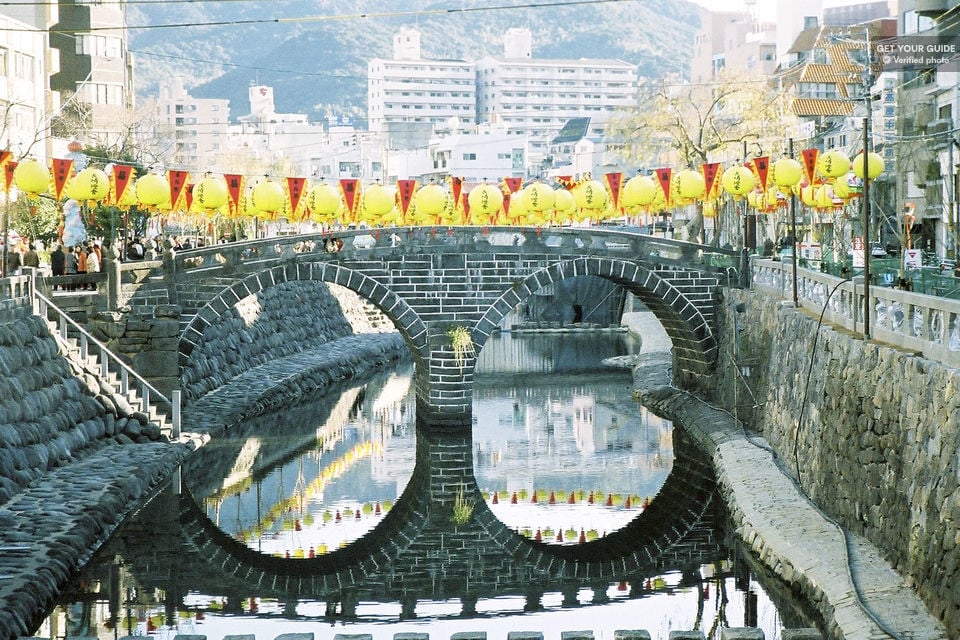
The weighted history of Nagasaki goes hand-in-hand with the tragic story of Hiroshima with Nagasaki being the other city that was bombed in World War II.
Nagasaki is a bit of a distance away from Hiroshima, but a must-visit spot if you are interested in history, the war and Japanese resilience! Like Hiroshima, Nagasaki has overcome destruction to create a successful societal hub.
A day trip to Nagasaki from Hiroshima promises to open your eyes to the effects left behind by the war. Make sure that you head over to Glover Garden, Hashima Island and the Nagasaki Atomic Bomb Museum for an extra-enriching experience!

The compact city of Nara is full of countless fascinating attractions. A visit to Nara will bring you face-to-face with several temples, greenery and tasty cuisine!
Nara Park is a must-see spot, boasting several temples and museums to explore and learn about the city. The city is incredibly beautiful, with unforgettable views that beautifully paint Japanese culture!
The city is full of beautiful greenery and plants, with ancient architecture scattered in between. You can easily get lost in the enchanting city of Nara, moving from one magical moment to another!
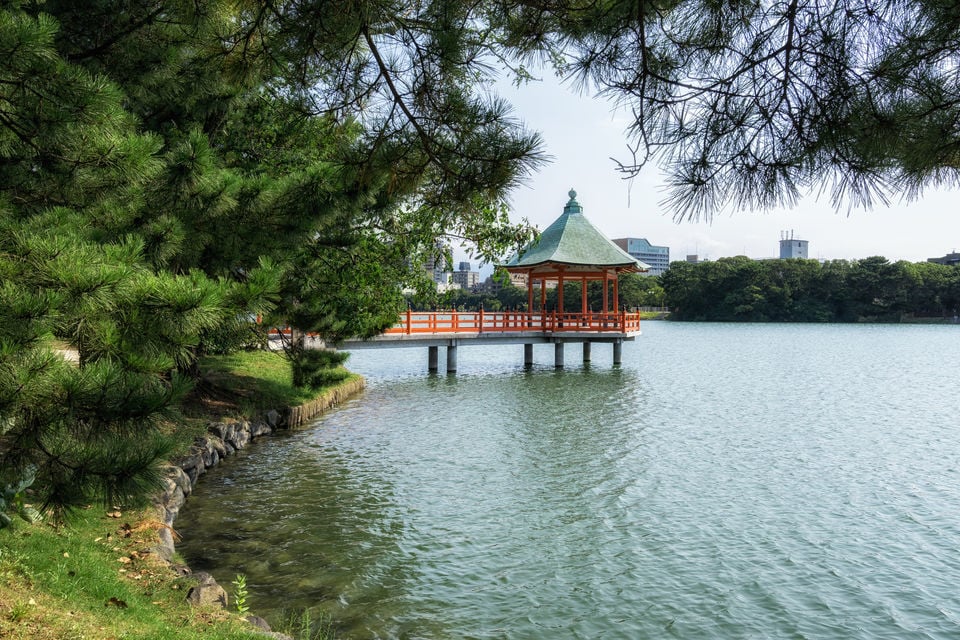
Fukuoka is located a short two-hours from Hiroshima, and definitely worth the trip! The best way to experience the city is with a local guide who can point out hidden gems – of which there are many!
The city is best known for Hakata ramen, a very simple dish that is enjoyed by people across the city. It is made with thin noodles and rich tonkotsu (pork bone) broth. While not fine-dining, it offers a very unique experience!
Arguably the best part of Fukuoka is that there are very few tourists, meaning that you get a truly authentic local encounter!

Stash your cash safely with this money belt. It will keep your valuables safely concealed, no matter where you go.
It looks exactly like a normal belt except for a SECRET interior pocket perfectly designed to hide a wad of cash, a passport photocopy or anything else you may wish to hide. Never get caught with your pants down again! (Unless you want to…)
Find out what people want to know when planning their Hiroshima itinerary.
What should you include on a Hiroshima 1 day itinerary?
Make sure to check out the Atomic Bomb Dome, the Peace Memorial Museum, and Hiroshima Castle.
What is the best way to travel to Hiroshima?
Trains are the easiest way to visit Hiroshima. A bullet train takes 4 hours from Tokyo, or 1.5 hours from Osaka.
Where should you stay in Hiroshima if you have a 2 day itinerary?
Staying in Motomachi is your best option, as you’ll be within walking distance of top attractions. If you’re on a budget, check out accommodation in Kakomachi.
Is Hiroshima worth visiting?
Definitely! Hiroshima’s tragic history makes it a fascinating and moving destination – but it’s not just for history buffs. Today, it’s a vibrant city full of beautiful scenery and culture.
Final Thoughts on Hiroshima Itinerary
Hiroshima is a fascinating city to visit. In a tragic turn of events, the city played a vital role in ending World War II. Ever since, it has overcome difficulties to become a global icon of progression and peace!
Hiroshima tourism is more popular than ever, and welcomes millions of visitors every year. Hopefully, this Hiroshima itinerary will help you decide where to stay, kickstart your experience in the fascinating city, and uncover it’s tragic history. One thing is for certain after planning a trip to Hiroshima, you will leave with a new-found appreciation for life, peace and the power of overcoming! If you haven’t packed your bags yet, use our Japan packing list to help you along.

Share or save this post

Leave a Reply Cancel reply
Your email address will not be published. Required fields are marked *
Save my name, email, and website in this browser for the next time I comment.
Notify me of followup comments via e-mail.
- Skip to main content
- Skip to primary sidebar

Destinations
- Plan Your Trip

Beyond the Bomb(s)
December 5, 2022 by Robert Schrader Leave a Comment
When I first considered the idea of writing a post about Hiroshima or Nagasaki, it seemed a bit trivial. These cities aren’t all that similar , I thought to myself, at least when I was considering the way I felt about them, or maybe just the way they made me feel.
As I began to more specifically map out my ideas, however, I realized my feelings had been deceiving. Although I had always planned to visit both of these places, travelers who can only visit either Hiroshima or Nagasaki face a challenging dilemma because these cities do actually have in common.
To be sure, it’s unproductive to reduce the Nagasaki vs Hiroshima debate to the sad truth both these cities share. I hope you find my analysis deeper and richer than that!
The Histories of Hiroshima and Nagasaki
Most people begin (and end) the discussion of Hiroshima vs Nagasaki with a sad—but obvious—fact: Both of these cities were struck by atomic bombs within days of each other in the summer of 1945, just before Japan in surrendered in World War II. Almost no one dives deeper into what the cities were like before these tragic events, even if they end up visiting to see what has unfolded since.
As is the case with all the best cities in Japan , this is a complex matter. To simplify it, however, Hiroshima began as a humble castle town around the turn of the 17th century, and remained that way until the Meiji Restoration, when it rapidly began industrializing. Nagasaki, on the other hand, was previously notable primarily due to its having been a trading port (and for a time, the only trading port) where primarily Dutch and Portuguese merchants could enter and do business in Japan.
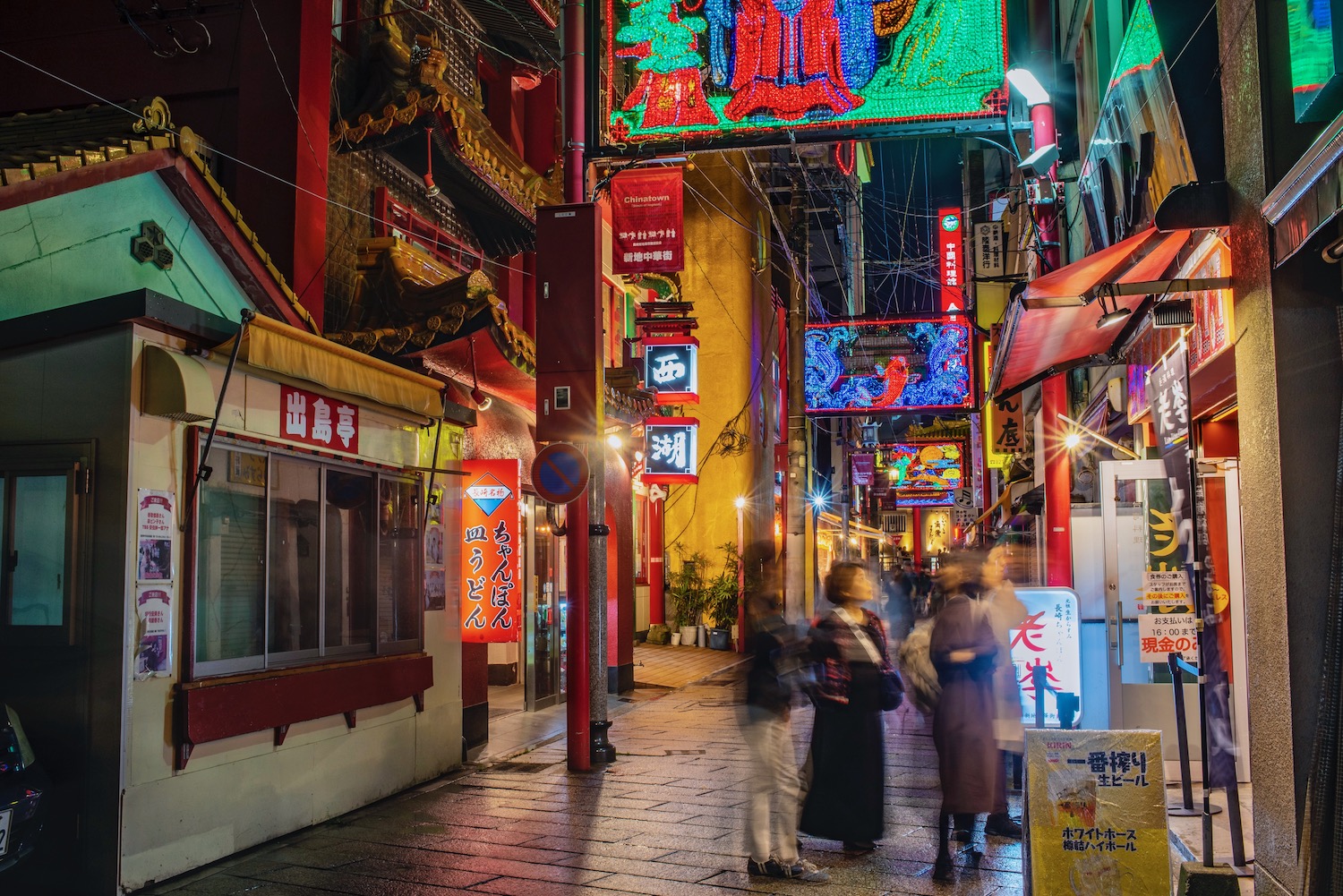
Things to Do in Hiroshima and Nagasaki
Visit ground zero(es).
When planning your Hiroshima or Nagasaki visit, you’ll no doubt want to address the proverbial elephant in the room. In both cases— Hiroshima Peace Memorial Park and Nagasaki Peace Park —you’ll find them about 20 minutes on foot from either train station, north in the case of Nagasaki and west in the case of Hiroshima. En route to Nagasaki Peace Park, make sure to stop at the one-legged San-no Shrine , which (halfway) survived the blast.
See a scenic sunset
In general, I would say that the harbor city of Nagasaki wins the battle when it comes to the natural setting of Hiroshima vs Nagasaki. However, there are scenic spots in both these places. In Nagasaki, you can ride the ropeway up Mt. Inasa to watch sunset and get one of the most famous “night view” panoramas in Japan, while Hiroshima’s Miyajima island allows you to watch sunset behind Itsukushima Shrine , a torii gate that appears to be floating.
Discover culinary quirks
Whether you visit Nagasaki or Hiroshima, you won’t leave hungry. Hiroshima, for example, is one of two homes (the other being Nagasaki) of Japan’s okonomiyaki pancake. Nagasaki, meanwhile, is where you’ll find one of Japan’s most impressive Chinatowns— Chanpon noodle soup is the food du jour here. Nagasaki also features quirky loquat-flavored soft cream and other delights: The fruits are native to the prefecture.
Go back in time
History is one of the areas where Hiroshima vs Nagasaki is an easy call. While the ruins of the castle originally building in Hiroshima in the late 1600s remain, Nagasaki simply has more to choose from. In the southern part of the city, you’ll find iconic Oura Church and UNESCO World Heritage Glover Garden , while the former Dutch settlement of Dejima literally takes you back in time to when Dutch merchants roamed Nagasaki.
Get out of town
An important part of any city trip in Japan, irrespective of whether you visit Hiroshima or Nagasaki, is taking day trips. From Hiroshima, you can head east to Onomichi or westward to Shin-Iwakuni , where the stunning Kintai Bridge awaits. Nagasaki, meanwhile, is a stone’s throw from Mt. Unzen (and from Shimabara , the town it once buried during an eruption); it’s a more involved (but worthwhile) excursion to visit islands like Ikishima , Tsushima and the Goto archipelago.
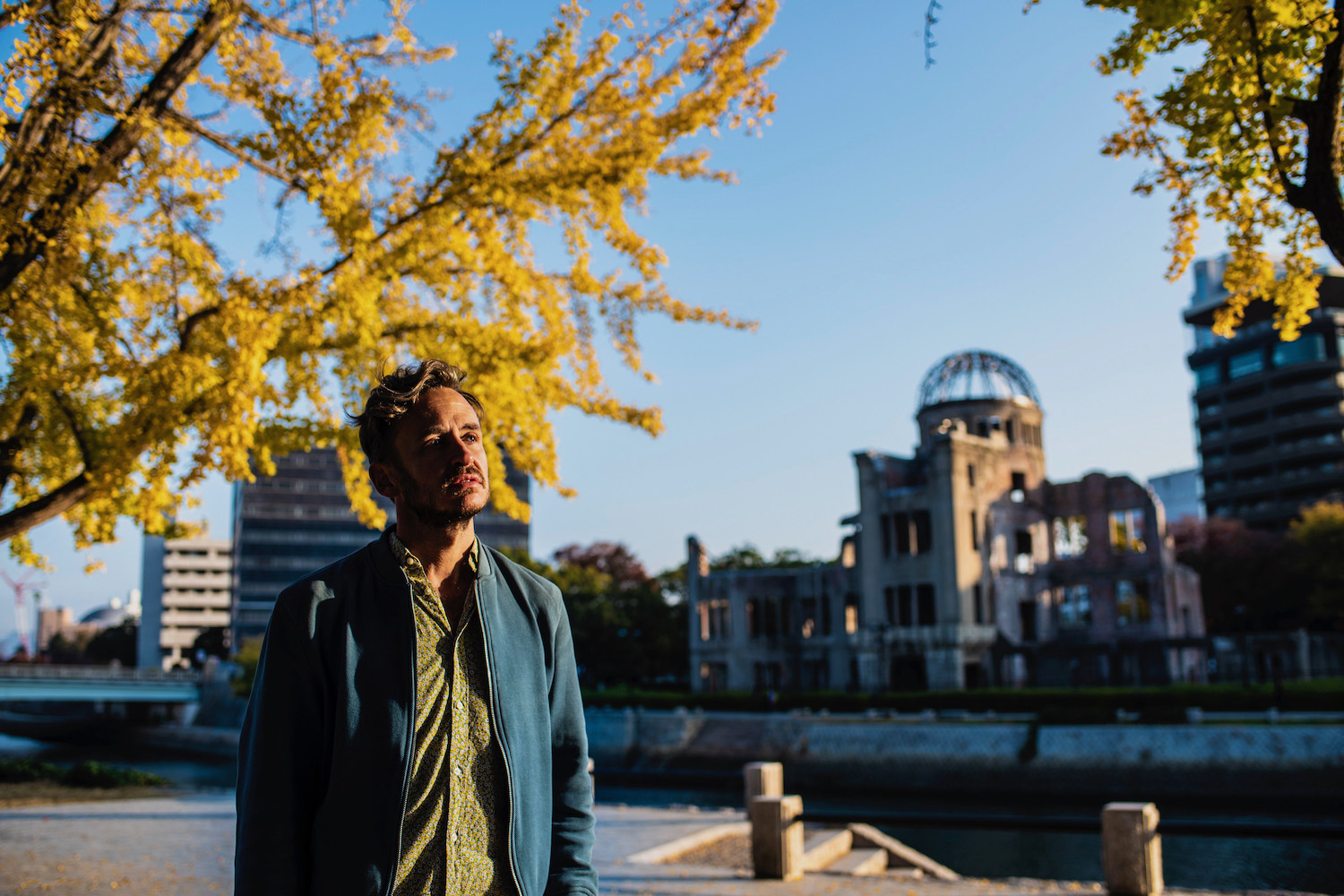
Where to Stay in Hiroshima or Nagasaki
When deciding between Nagasaki or Hiroshima, many travelers think that differences in hotels between the cities will help them come to their conclusion. On this front, I have good news and bad news. The good news is that most hotels in both these cities meet my “three Cs” criteria: Chic, comfortable and centrally located. The bad news? Well, it’s the same, given that hotels in Hiroshima and Nagasaki are basically on par with one another.
I can simplify it for you in an important way, namely recommending one hotel in each city. Nagasaki’s stylish Hotel Forza situates you about halfway between Nagasaki Station and the city’s other famous attractions, while Hotel Granvia Hiroshima is a luxurious home in the city, also close to its railway hub. Even if you can’t make an immediate choice between Hiroshima vs Nagasaki, you’re guaranteed an incredible base in both!
My Personal Experiences in Hiroshima and Nagasaki
Another way to think about your Nagasaki or Hiroshima visit is in terms of the various trips I’ve made. I didn’t write a blog post about my moving first trip to Hiroshima (crazy, I know), but I always remember a few things about it. Arriving in the rain and the sky suddenly clearing when I arrived at Ground Zero. A lively day with the rabbits on Okunoshima and with the deer, watching the sunset behind Itsukushima Shrine. The first meal I ever ordered from a vending machine.
Nagasaki, meanwhile, was a city I didn’t connect with so immediately—I actually didn’t much like it the first time I visited. When I came back in October of 2019, however, it was in the wake of a turbulent relationship, one that seemed like it might re-bound (virtually, of course) when I was there. Due to my stronger emotional ties to the latter, you see, I’d say it’s my personal preference when it comes to choosing Hiroshima or Nagasaki.
Other Hiroshima or Nagasaki FAQ
Why is hiroshima more famous than nagasaki.
In terms of popular culture recognition, Hiroshima is more famous than Nagasaki because it was bombed first. For travelers, more visit Hiroshima than Nagasaki because you can (technically) visit it on a day trip from Tokyo, Kyoto or Osaka , thanks to the Shinkansen . Since Nagasaki isn’t currently served by bullet train, and requires a journey time of almost two hours even from Fukuoka, it’s simply harder to reach.
How far is Nagasaki from Hiroshima?
Nagasaki is about three hours by train from Hiroshima. To travel to Nagasaki from Hiroshima, ride the Shinkansen Sakura bullet train to Shin-Tosu station, where you can transfer to a Kamome Limited Express train headed directly for Nagasaki.
Is Hiroshima and Nagasaki still radioactive?
Neither Hiroshima nor Nagasaki still has meaningful levels of radiation, or have done for many years. In all likelihood, you’ll get a heavier dose of radiation on the flight from your home country to Japan than you will while in either of these cities.
The Bottom Line
Obviously, the best way to resolve the Hiroshima or Nagasaki debate is to visit both cities. However, since Google has led you to this post, I imagine that’s not possible for you, at least not now. While I love both of these cities, I do find that Nagasaki offers a greater variety of things to do besides the obvious, to say nothing of the fact that it perfectly positions you to explore Kyushu island on a larger scale. Hiroshima, on the other hand, is the anchor of the Chugoku region, which I think is slightly less interesting for most travelers. Want to take the ultimate trip to Japan, no matter which of these cities you choose? Commission a custom Japan itinerary today!
Plan Your Japan Trip

Subscribe to email updates!
Words, images and design ©2018-2024 Robert Schrader, All rights reserved. Read Privacy Policy or view sitemap .
Best Time to Visit
Weather & Climate
Best Hotels
Top Things to Do
Best Museums
48-Hour Itinerary
Day Trips From Hiroshima
Must-Try Food
Best Restaurants
Your Trip to Hiroshima: The Complete Guide
:max_bytes(150000):strip_icc():format(webp)/jessicaesaprofile-7bb1d24acee44aa5839ac875cb2e0bff.jpg)
Hiroshima is one of the southernmost cities on Japan's main island of Honshu. While its tragic modern history has given it an unshakeable global image, Hiroshima is a city of outstanding food, warm weather, a relaxed and friendly atmosphere, and some of Japan's best museums. Here is everything you need to know for a trip to one of Japan's best modern cities.
Planning Your Trip
Best Time to Visit : Hiroshima is a popular tourist destination throughout the year, with four distinct seasons and slightly higher than average temperatures than cities in the north of Japan. The best seasons to visit Hiroshima are spring and fall when the weather is most consistently pleasant, and there are ample opportunities for seeing fall foliage and blossoms.
Hiroshima is particularly famous for its spring flowers , so make sure to catch the flower festival bursting with cultural events to make the most of the season. With the easy accessibility to Miyajima Island, visitors can enjoy some of Japan’s most famous views as the colors change while others head to the dramatic splendor of Sandankyo Gorge to make the most of the changing seasons.
Language: Japanese is the spoken language in Hiroshima. Specifically, the Chūgoku dialect is spoken, so you may notice a few regional differences in accent and phrasing compared with other areas of Japan.
Getting Around: Hiroshima is a relatively large city, but luckily public transport is not an issue with a variety of convenient options to get yourself around, including by:
- Tram: The tram is the main mode of transport and is the easiest way to get downtown from the train station with a flat fee of 160 yen ($1.48), or you can pick up a day pass for 600 yen ($5.53). You can also use your refillable IC card, which you can pick up at the train station and use all over Japan. Pay as you get off the tram rather than when you get on.
- Bus: There’s also an extensive bus network which you can ride for a flat fee of 200 yen, a 400 yen day pass, or you can tap your IC card. The best options for visitors to Hiroshima are the green and orange sightseeing lines which travel via Hiroshima Station and take you to most major tourist destinations, including downtown and the Peace Park. You can also use your Japan Rail Pass on these specific lines, and they have free Wi-Fi.
- Taxi : You will also find taxis readily available, in front of the station and other major tourist areas, or you can flag one down but sticking your arm out. Bear in mind, taxis are expensive in Japan, so best avoided for longer journeys.
- Ferry: For people looking to visit Miyajima Island, you will find the convenient and regular Aqua Net Ferry running between Motoyasu Pier and the pier at Miyajima. The journey lasts 45 minutes and costs around 3,600 yen ($33).
Things to Do
A city such as Hiroshima will always offer a lot for visitors, but Hiroshima stands out as somewhere where its legacy from the Aug. 6 bombing has become part of its identity with important remembrance spots dotted around the city. However, there’s much more to Hiroshima with two world heritage sites and a wealth of culture to explore.
- Visit Hiroshima Peace Memorial Park : It would be impossible to visit Hiroshima and not take the time to visit the 120,000 square meter park memorializing the site of the bombing of Hiroshima. It was decided that, instead of renovating, the area would be preserved with the. Now UNESCO World Heritage, A-Bomb Dome as it stood on that day.
- Explore Hiroshima Castle : The towering Hiroshima Castle with museum and lookout point was originally built in 1589 and restored after the war. It stands proudly in the center of the city, surrounded by extensive grounds and a large moat.
- Take a day trip to Miyajima Island : A quick ferry from Miyajimaguchi Station allows you to explore the island, known as Itsukushima, after its famous shrine. Ranked as one of Japan's three best views, the shrine and giant torii gate are both built over water and appear to float at high tide. There are also plenty of walks, hiking opportunities, restaurants, and shopping streets to enjoy.
- Wander Shukkeien Garden : This historical garden, designated a National Site of Scenic Beauty, dates back to 1620 and translates to ‘shrunken-scenery garden’ with scenes in front of you, which give the illusion of thick forests and mountains. The garden is thought to have been inspired by Hangzhou's beautiful West Lake and other famous sights.
- Go Shopping on Hiroshima Hon-Dori Shotengai : Hiroshima’s longest shopping arcade, with over two-hundred shops and restaurants, is the perfect place to go souvenir shopping, people watching, or get stuck into some local foods, including several fabulous seafood restaurants where you can Hiroshima specialties.
What to Eat and Drink
- Try Hiroshima-Style Okonomiyaki : A sticky and delicious style of layered customizable pancake that hits the spot every time. The dish consists of shredded cabbage, scallions in a spiced batter which is fried up with toppings of your choice, such as seafood and pork. This is then topped with okonomiyaki sauce, mayonnaise, and bonito flakes.
- Momiji-Manju : A typical souvenir from Hiroshima, these maple leaf-shaped (a symbol of Hiroshima) cakes are satisfying and delicious. Different fillings are available, including red bean, cream cheese, and green tea.
- Eat Hiroshima Tsukemen : Another must-try local dish comes in the form of noodles with a spicy dipping sauce made from chili and sesame oil-based with a plate of spring onion, cabbage, and toppings of your choice such as ramen egg and pork slices. An alternative option to ramen or soba and ideal for those who love a bit of spice.
- Onomichi Ramen : For ramen fans, Hiroshima doesn’t disappoint; the Onomichi style is light, flavourful, and wholesome. Soy-sauce, chicken, and seafood broth is paired with flat medium-thick noodles and is typically topped with pork belly, scallions, and bean sprouts.
- Try Oysters : As Hiroshima is the city of oysters , it would be a shame to leave without trying the famous delicacy. They are prepared in so many different ways here that there really is an oyster dish for everyone. Popular preparation methods include oysters fried in tempura batter, steamed, served as part of a miso hotpot, raw with a citrus juice, and even in a curry.
Where to Stay
Motomachi: Centrally located and perfect for your first stay in Hiroshima. Motomachi places you near Hiroshima Castle, the Museum of Art, and the expansive Central Park. You’re never far from a restaurant or coffee shop, and there are malls within walking distance.
Hondori: Ideal if you want to be based around some great nightlife, this entertainment hub will place you within walking distance of karaoke, cocktail, and dive bars. It’s also centrally located between Motomachi and the Hiroshima station area, making it easy to get around.
Nakamachi: Nestled between Motomachi and Hondori is the Nakamachi district, popular with creatives, craft beer fans, live music venues, and people who love traditional restaurants. It’s also near Shirakami Shrine, which is one of the few long-standing shrines in the city.
Hijiyamahonmachi : Just a 10-minute walk from Hiroshima Station and near open spaces like Hijiyama Park, where you can hike and visit the manga library and the Enko River, ideal for walks and cycling, this is an ideal area for people looking for a quieter area or families.
Getting There
If you’re arriving by plane, then you will land at Hiroshima Airport. The shuttle bus is the most convenient way to get to Hiroshima bus or train station (45-55 minutes). From there you can take the tram or a taxi to your hotel. You can also hop in a taxi at the airport.
Hiroshima is easily reached from elsewhere in Japan by shinkansen (high-speed train) with direct lines from other major cities in Japan. From the station, it’s easy to reach downtown via public transport or taxi. The fastest train takes you from Tokyo to Hiroshima directly in four hours.
Culture and Customs
- There's no need to tip in Hiroshima or for Japan as a whole. In some cases, it can even be considered offensive.
- If you're shopping and paying in cash, make sure to place your money in the dish on the counter. Your change will also be placed there afterward.
- Remember to carry some cash as some places don't take cards. You'll find plenty of ATMs around the city or in convenience stores like 7/11 or FamilyMart.
- The bow is the standard form of greeting in Japan, but a nod will usually suffice.
Money Saving Tips
- Opt for the bus over the tram or taxis; it’s easy to use and can take you all over the city.
- Make sure to try some convenience store food and coffee to save money. Stores like 7/11, Lawson, and Family Mart have excellent quality bento boxes, coffee, and hot snacks.
- Take advantage of tax refunds while you’re shopping. Purchases of more than 5,000 yen (around $46) are exempt from the 10 percent consumption tax.
Visit Hiroshima, Spring Things to Do , 2019
Visit Hiroshima, World Heritage , 2019
Explore Hiroshima, Oyster Dishes , 2020
The Top 15 Things to Do in Hiroshima
15 Must-Try Dishes in Tokyo
8 Foods to Try in Hiroshima, Japan
The 10 Best Hotels in Hiroshima
48 Hours in Hiroshima: The Ultimate Itinerary
Kyoto Guide: Planning Your Trip
The 8 Best Museums in Hiroshima
The Top 9 Day Trips From Hiroshima
Your Trip to Hokkaido: The Complete Guide
The Best Time to Visit Hiroshima
The Top 12 Day Trips From Kyoto
18 Best Things to Do in Japan in Summer
The Top 12 Day Trips From Osaka
Your Trip to Osaka: The Complete Guide
The Top 15 Destinations to Visit in Japan
Weather in Hiroshima: Climate, Seasons, and Average Monthly Temperature
- Travel Trade
- Meetings & Events
- Netherlands
- Select Language 简体中文 繁體中文(香港) 繁體中文(臺灣) India (English) Bahasa Indonesia 한국어 ภาษาไทย Tiếng Việt Singapore (English) Philippines (English) Malaysia (English) Australia/New Zealand (English) Français Deutsch Italiano Español United Kingdom (English) Nordic countries(English) Canada (English) Canada (Français) United States (English) Mexico (español) Português العربية Japan(日本語) Global (English)
- India (English)
- Bahasa Indonesia
- Singapore (English)
- Philippines (English)
- Malaysia (English)
- Australia/New Zealand (English)
- United Kingdom (English)
- Nordic countries(English)
- Canada (English)
- Canada (Français)
- United States (English)
- Mexico (español)
- Global (English)
- Fujiyoshida
- Shimonoseki
- Ishigaki Island
- Miyako Island
- Kerama Island
- Tokyo Island
- Koka & Shigaraki
- Hida Takayama
- Ginza, Nihonbashi
- Beppu & Yufuin (Onsen)
- Ginzan Onsen
- Nagasaki Islands

- Kumano Kodo
- Shikoku Karst
- Amami Oshima
- Hachimantai
- Omihachiman
- Aizuwakamatsu

- Diving in Japan
- Skiing in Japan
- Seasonal Flowers in Japan
- Sustainable Outdoors
- Off the Beaten Track in Japan
- Scenic Spots
- World Heritage
- Home Stays & Farm Stays

- Japanese Gardens
- Japanese Crafts
- Temple Stays
- Heritage Stays
- Festivals and Events
- Theater in Japan
- Japanese Tea Ceremony
- Cultural Experiences in Japan
- Culture in Japan

- Local Cuisine Eastern Japan
- Local Cuisine Western Japan
- Local Street Food
- Japan's Local Ekiben
- Japanese Whisky
- Vegetarian and Vegan Guide
- Sushi in Japan Guide
- Japanese Sake Breweries

- Art Museums
- Architecture
- Performing Arts
- Art Festivals
- Japanese Anime and Comics
- Japanese Ceramics
- Local Crafts

- Scenic Night Views
- Natural Wonders
- Theme Parks
- Samurai & Ninja
- Iconic Architecture

- Wellness Travel in Japan
- Japanese Ryokan Guide
- A Guide to Stargazing in Japan
- Relaxation in Japan
- Forest Bathing (Shinrin-yoku)

- Experiences in Japan
- Enjoy my Japan
- National Parks
- Japan's Local Treasures
- Japan Heritage
- Snow Like No Other
- Wonder Around Japan

- Visa Information
- Getting to Japan
- Airport Access
- COVID-19: Practical Information for Traveling to Japan
- Anime Tourism
- Countryside Stays
- Accessible Tourism
- Hokkaido Great Outdoors
- Scenic World Heritage in Tohoku
- Shikoku’s Nature and Traditions
- Southern Kyushu by Rail
- Tour Operator Search

- Traveling by Rail
- How to Travel by Train and Bus
- JR Rail Passes
- Scenic Railways
- Renting a Car
- Sustainable Travel in Japan
- Travel Brochures
- Useful Apps
- Online Reservation Sites
- Eco-friendly Accommodation
- Luxury Accommodations
- Traveling With a Disability
- Hands-free Travel
- How to Book a Certified Tour Guide
- Volunteer Guides
- Tourist Information Center

- Japanese Manners
- Spring in Japan
- Summer in Japan
- Autumn in Japan
- Winter in Japan
- Cherry Blossom Forecast
- Autumn Leaves Forecast

- Japan Visitor Hotline
- Travel Insurance in Japan
- Japan Safe Travel Information
- Accessibility in Japan
- Vegetarian Guide
- Muslim Travelers
- Safety Tips

- Browse All Inspiration
- Japan Fan Newsletter
- Food & Drink
- Life in Japan
- Japan in the UK/IRE

My Favorites
${v.desc | trunc(25)}
Planning a Trip to Japan?
Share your travel photos with us by hashtagging your images with #visitjapanjp
What to Do and See In and Around Hiroshima: Our Complete Guide
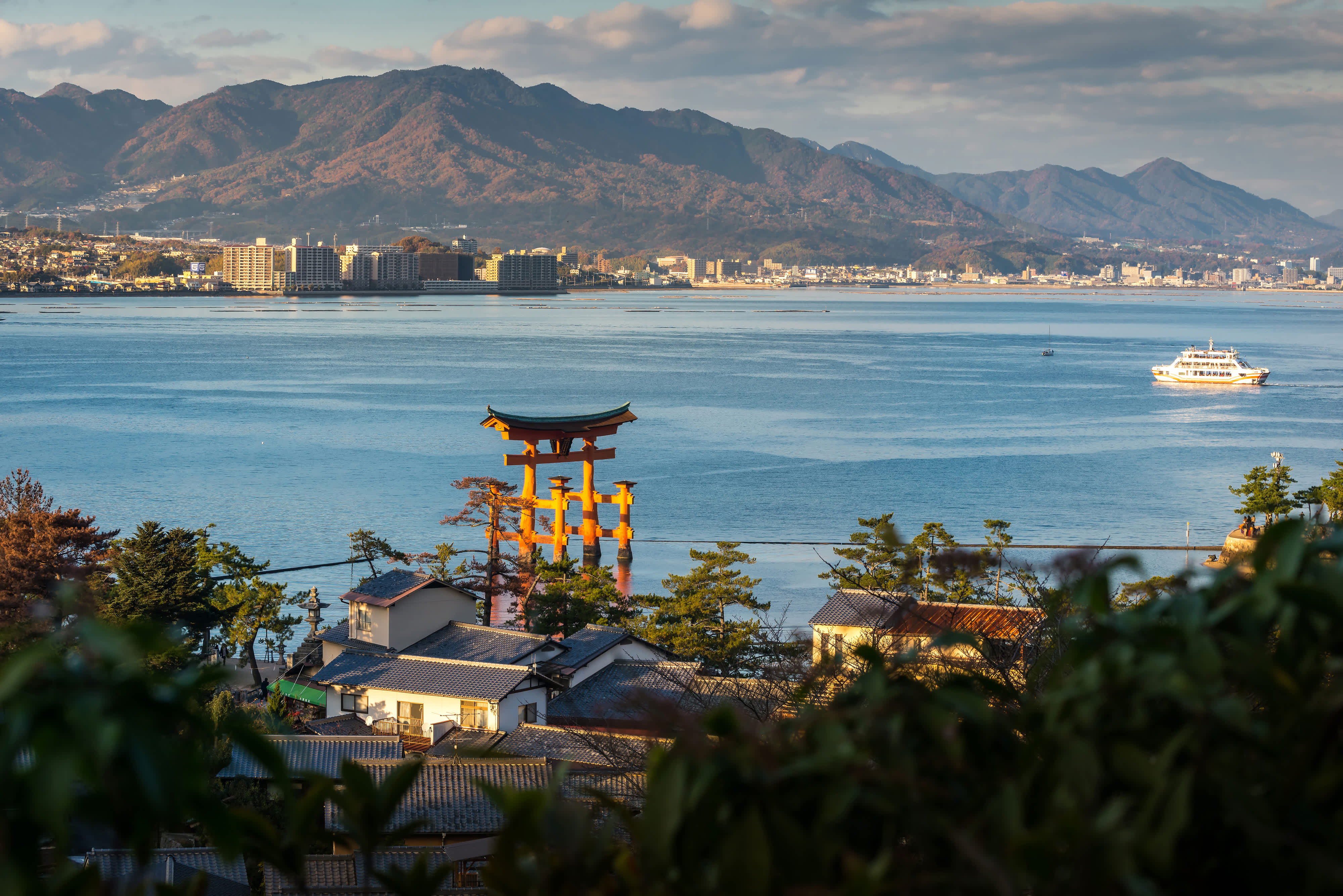
Hiroshima, a symbol of resistance and rebirth, deserves to be at the top of your bucket list of places to visit in Japan. The City of Peace, which just welcomed the latest G7 Summit, is a must-see destination in Japan's south. With a rich historic past that extends well beyond the tragic 1945 events, a vibrant city life, wonderful local cuisine, and gorgeous surroundings as it lies by the blue waters of Hiroshima Bay, let’s take a look at everything Hiroshima has to offer!
The best sights to see in Hiroshima
Shukkei-en garden.
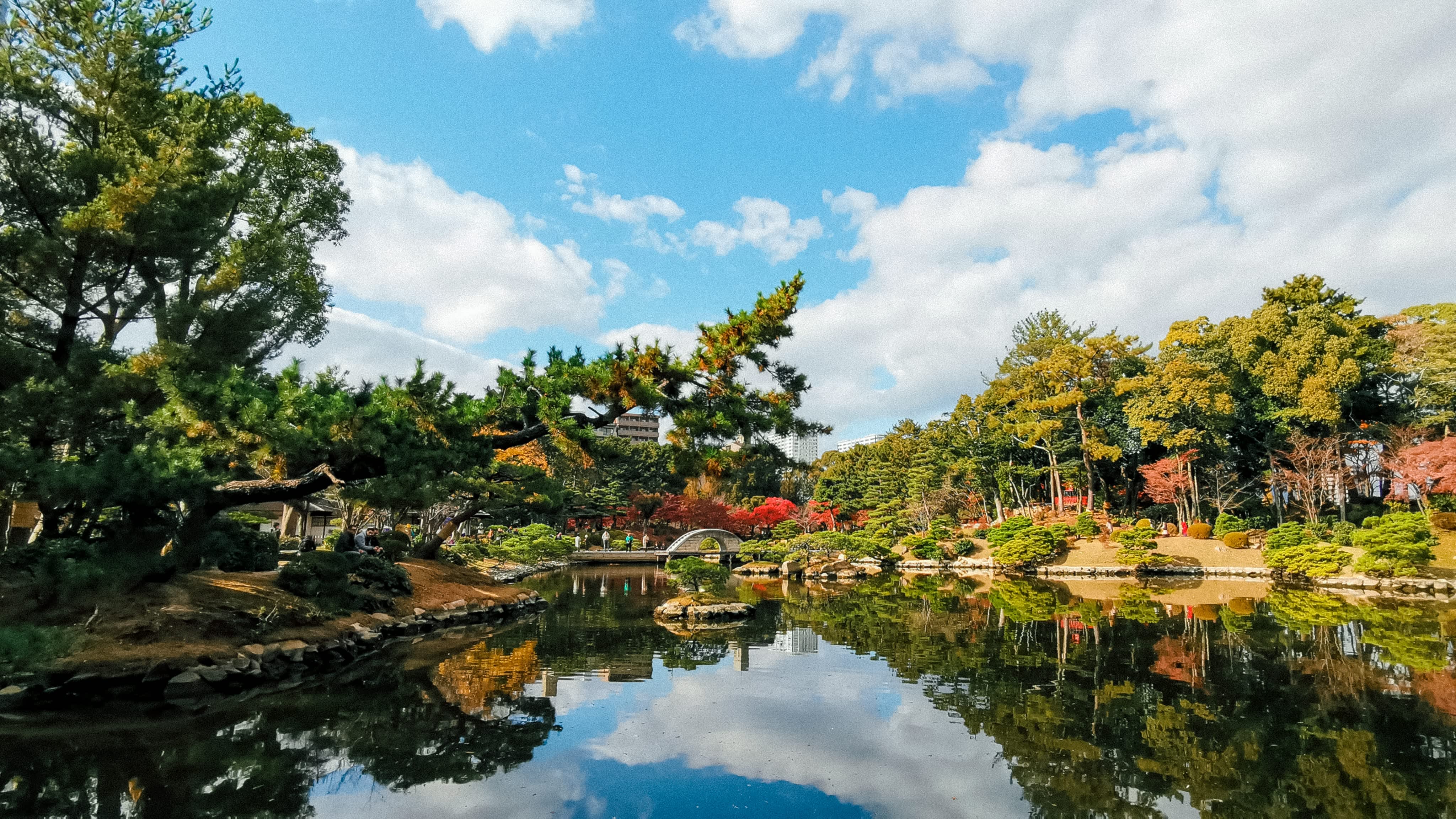
A serene and calm invitation to contemplation, the Shukkei-en Garden is a perfect example of what a Japanese garden should be; an escape from the city, a charming place to walk around or sit and relax, and lose track of time for a few hours!
This historic landmark was built in 1620 by the first feudal lord of the Hiroshima domain, Nagaakira Asano, as a garden for his villa. Shukkei-en is an enjoyable visit throughout the year, but it reveals its true beauty during fall, as its maple trees turn red, and lights give the park a whole new depth at night. Beautifully designed around lovely paths, trimmed trees and koï fish ponds (make sure you buy some fish food at the entrance, and watch the koi carps dance in a blur of colours as you feed them!), the Shukkei-en Garden is a must-see in Hiroshima.
Hiroshima Peace Memorial Park & Atomic Bomb Dome
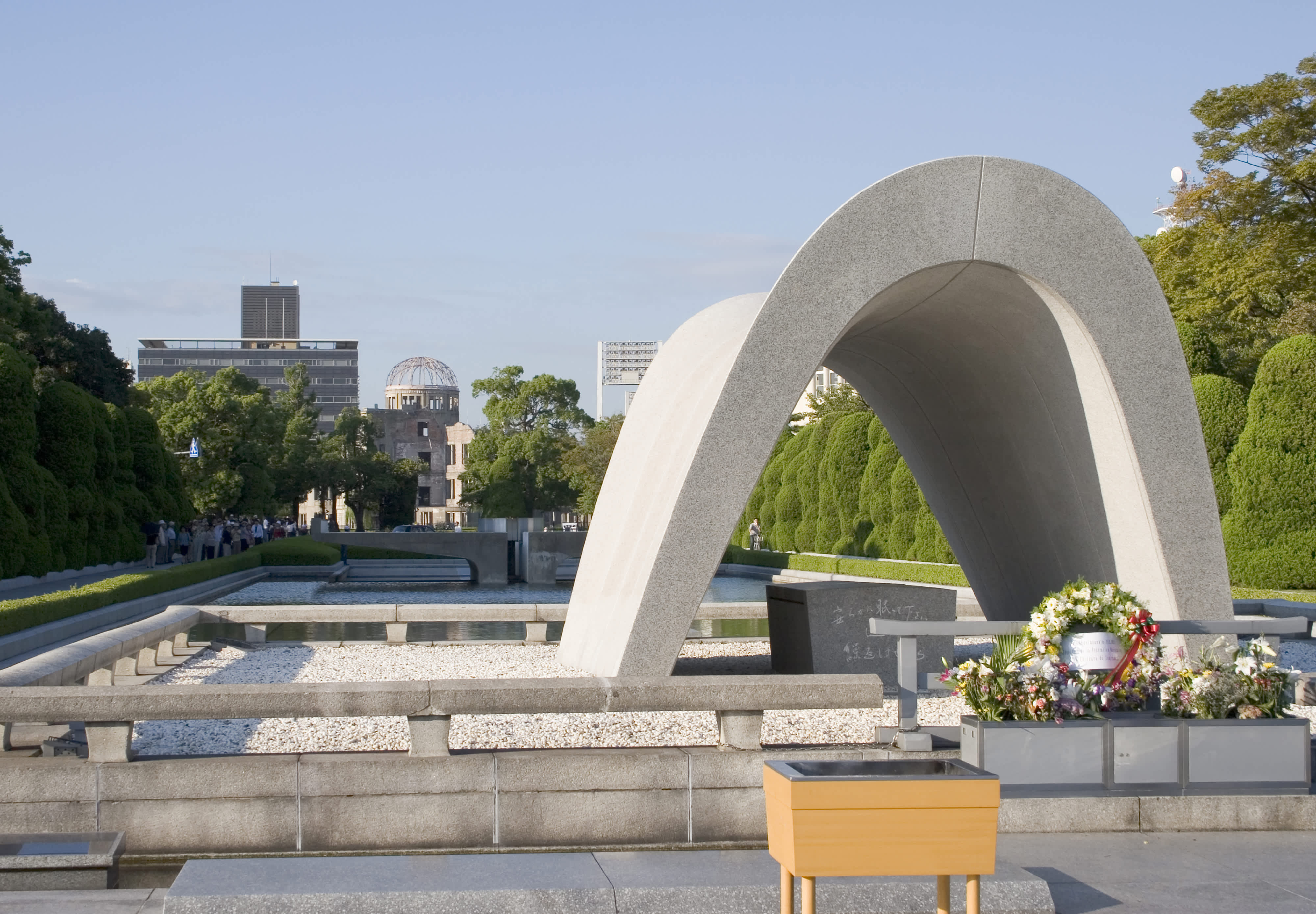
The Hiroshima Peace Memorial Park was founded in 1954 at the site of an open field that was initially created by the atomic bombing of 1945. The park itself consists of stark white architecture laced with bright greenery and foliage. At the centre of the park, an arc shaped monument is the main site for the annual Peace Memorial Ceremony, often attended by major G7 leaders. Visitors can also go and see a number of museums on the park grounds, such as the Children’s Peace Museum and the historic Rest House that dates back to the day of the bombing.
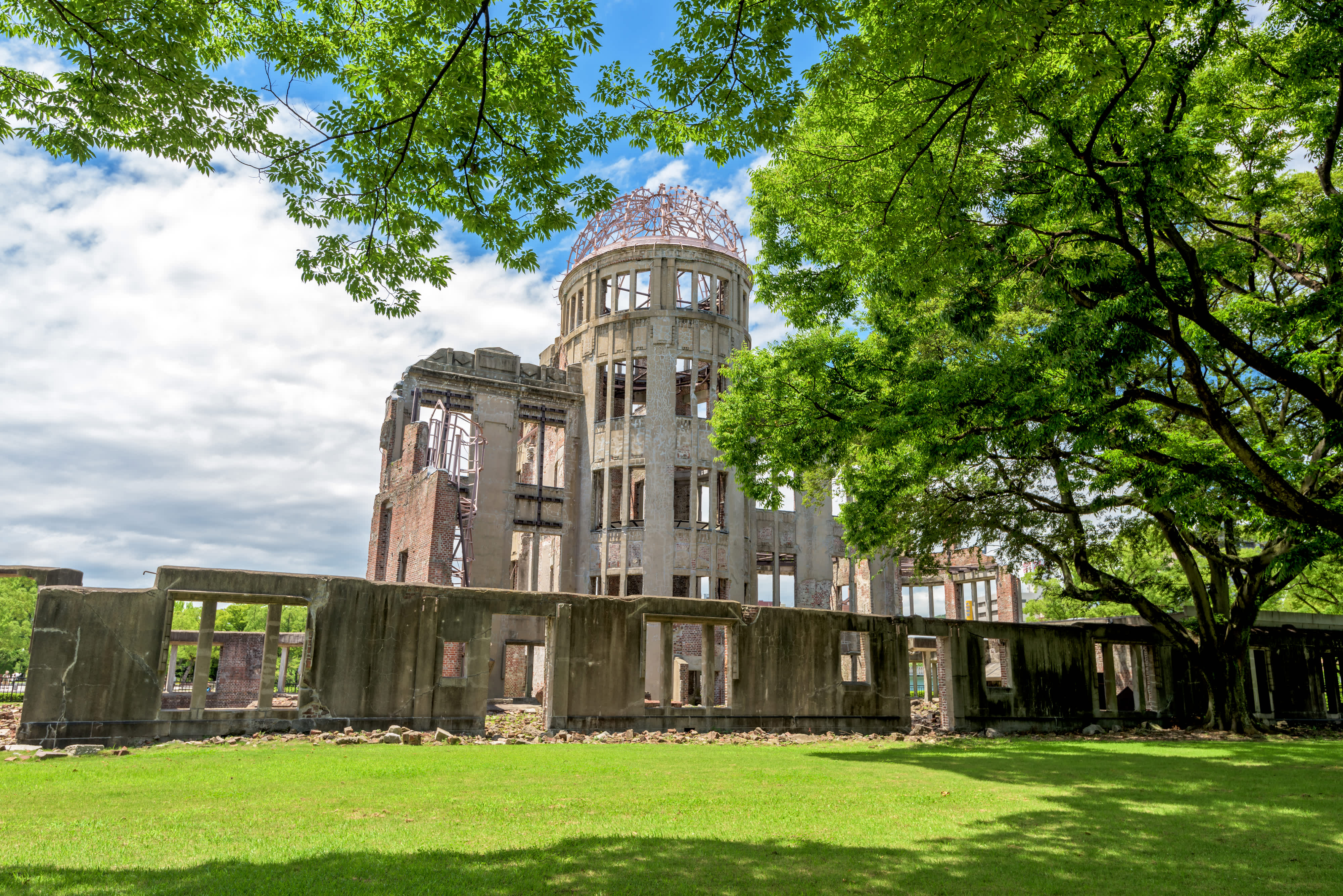
Within the park, you will also find the A-Bomb Dome that has been preserved as in 1945, looking as though frozen in time. This dome was the building closest to the epicentre of the detonation that maintained its structure, though the initial damage it suffered still remains. The tattered silhouette starkly contrasts the pristine aesthetic of other parts of the park, serving as a physical representation of the city’s past defined by destruction and future by progress.
Mitaki-Dera Temple
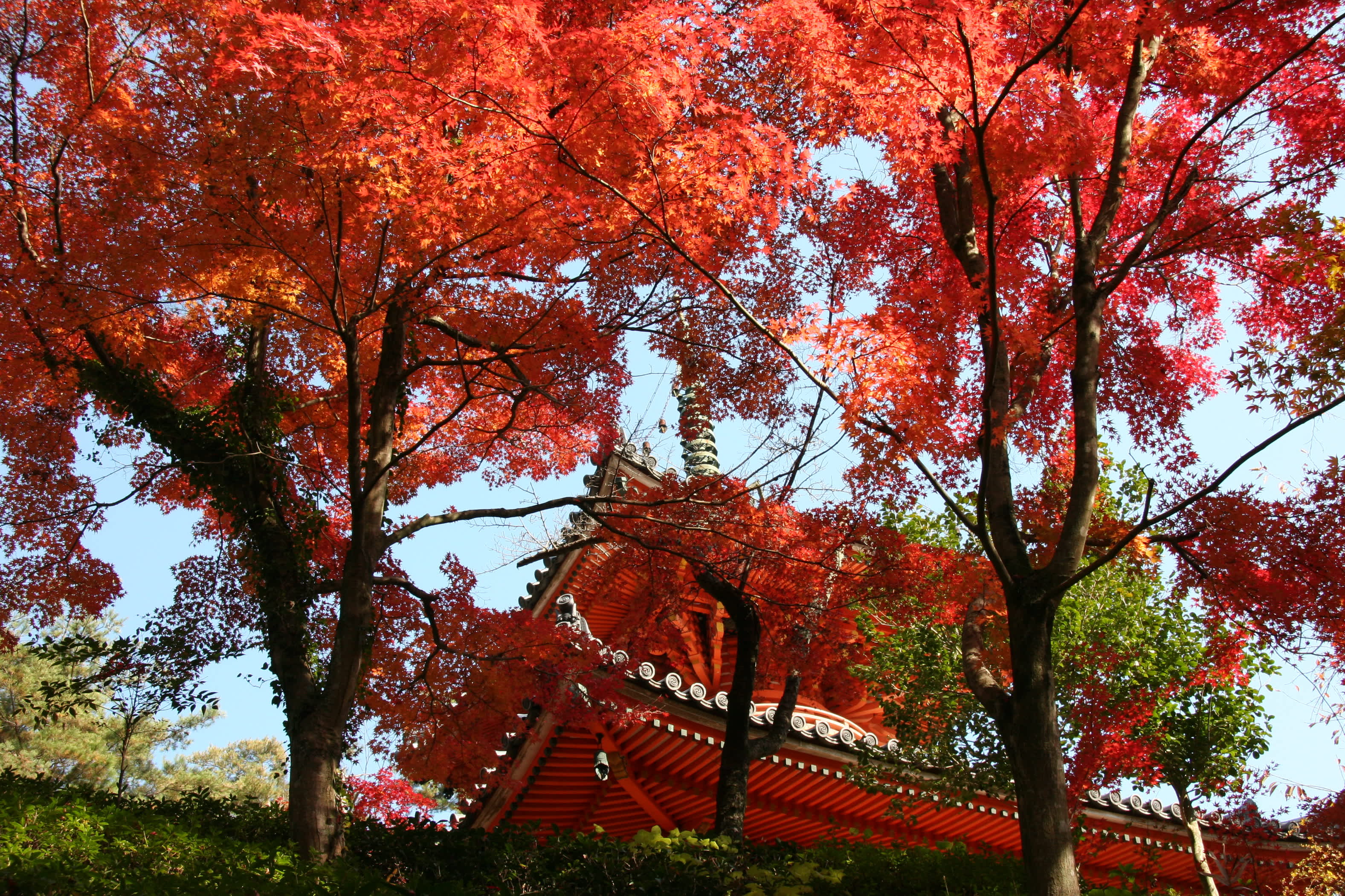
Not exactly an unknown spot as it is an appreciated location to enjoy the sakura (cherry blossoms in spring) and the momiji (red maple leaves in autumn) celebrations, the Mitaki-Dera Temple is still an understated hidden gem in Hiroshima. Located on the slopes of Mount Mitaki, a short train ride away from the city centre - don’t forget your Japan Rail Pass -, this Buddhist temple dates back to 809 and is a truly breathtaking experience.
An almost mystical atmosphere envelops the area and invites you to become one with nature as you stroll between statues, deep vegetation and quaint rivers, pagodas. Both a quiet hike near the city and a powerful dive into the region’s spiritual background, Mitaki-Dera is a sensory journey to another realm, one where the sounds of the wind rustling the leaves, the water rushing through the rocks and nature will carry you, if you let them.
Hiroshima Castle
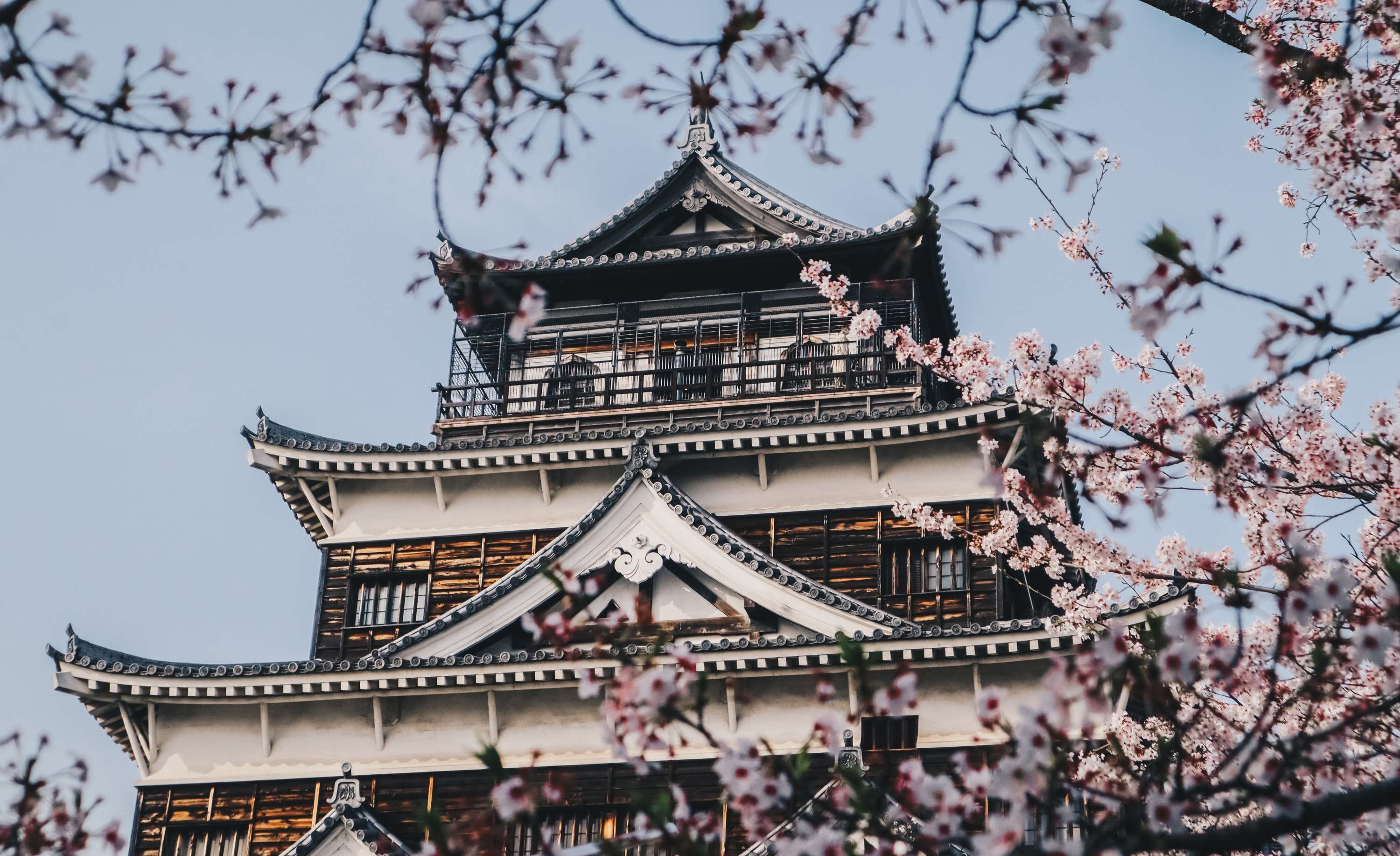
While the castle you will see today only dates back to 1958 - the original one having been lost to the atomic bombing of 1945 - Hiroshima Castle is still a historic visit to add to your to-do list in Hiroshima. Also known as “Carp Castle”, the landmark now serves as a museum retracing not only the history of the city and its famed castle, but also castles in Japan in general. Exhibits about the fascinating reconstruction efforts also take place at Hiroshima Castle, such as the recent restoration of the castle’s line of defense with original techniques dating back to its original making in 1589. From the top floor, you will be able to enjoy a stunning panoramic view of Hiroshima, at the heart of its city centre, steps away from the Peace Memorial Park.
Ride on the old-time Hiroden vintage trolleys
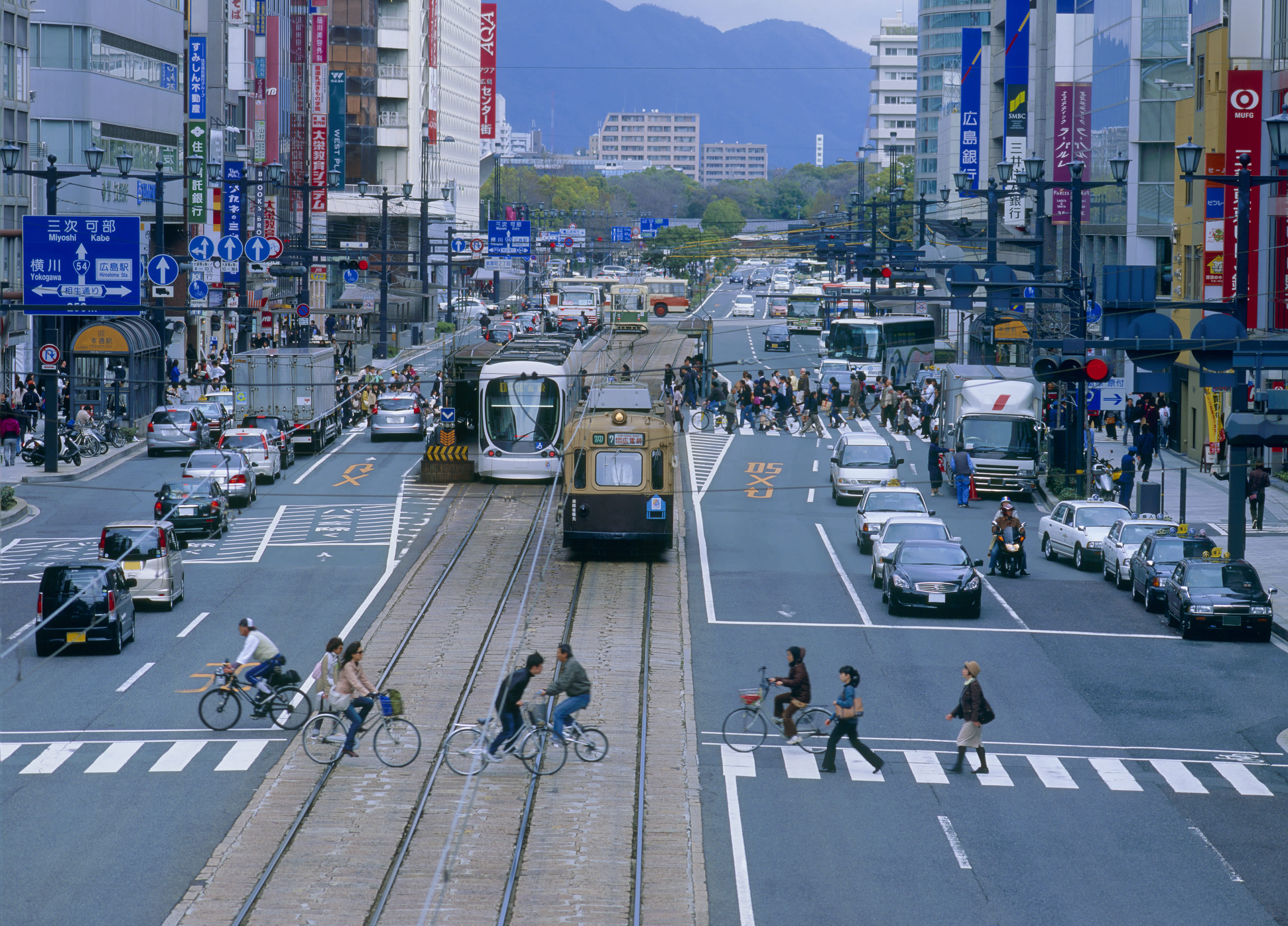
The remnants of yesteryear exist in Hiroshima in many ways, especially embodied through the old-time Hiroden Vintage Trolley cars that run through the streets. These trolley cars do more than simply looking the part for the vintage aesthetic, with their wooden-frames and lacquer paint. Many of these trolley cars were issued prior to the dropping of the bomb, and many of them still exist today and are still in operation, servicing the city as an iconic form of public transportation. The presence of these trolley cars at the time of the bombing has led to them being dubbed hibaku densha (被爆電車), meaning atomic bomb cable cars. These trolley cars are an essential piece of Hiroshima history, as well as a practical way to explore what the rest of the city has to offer! The Hiroden trolley network is usable with your Suica prepaid card too.
A dive into Hiroshima’s rich food culture
Wood egg museum.
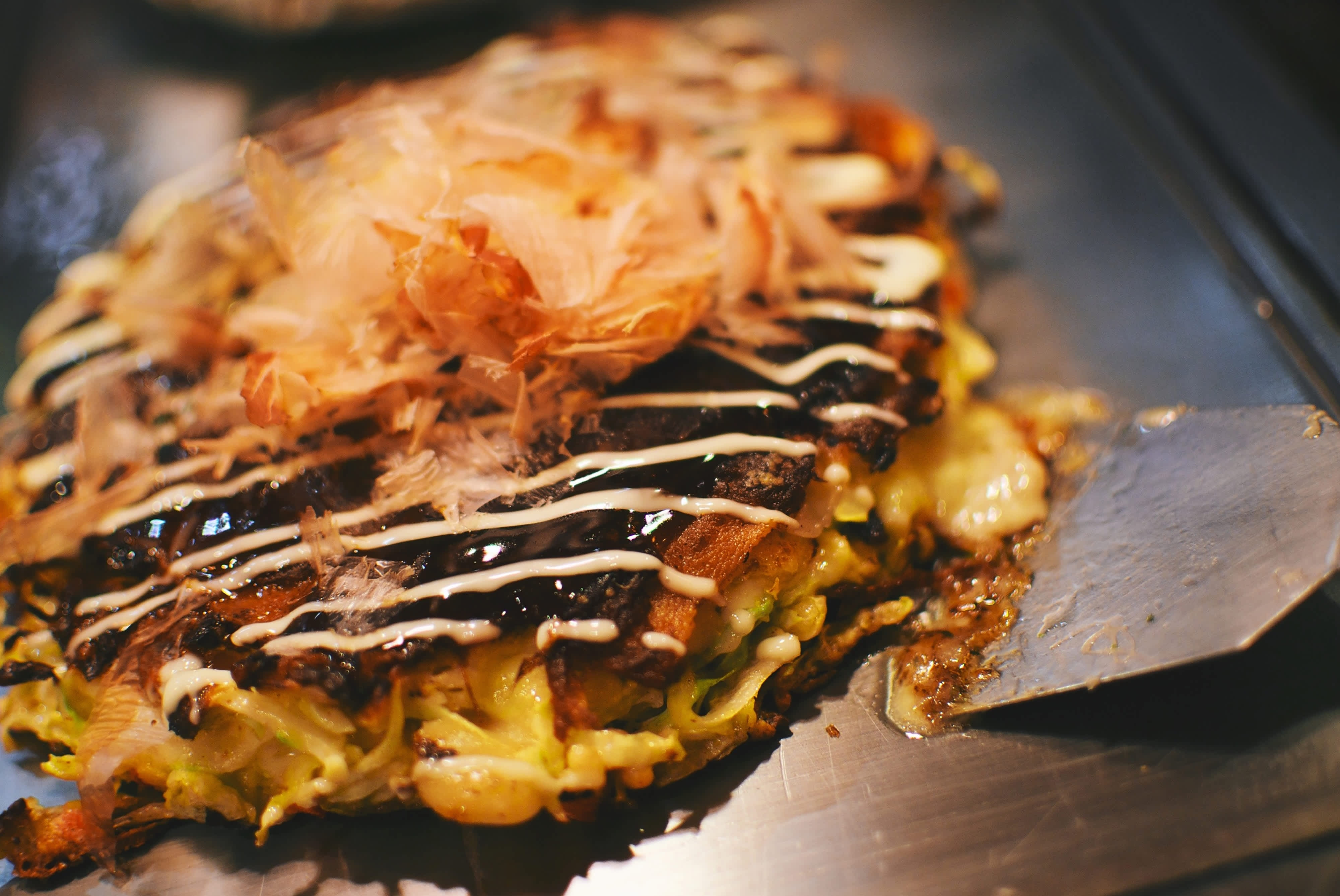
If there is any type of cuisine that symbolises Hiroshima as a whole, it is okonomiyaki (お好み焼き). Literally translating to “cooked as you like,” the possibilities with okonomiyaki are nearly endless. Okonomiyaki is a savory batter made with cabbage, flour, and egg that is cooked on a flat-top grill and mixed with a number of ingredients like meat, seafood, vegetables, and even more surprising elements like mochi. After grilling, it is often topped with a variety of sauces and shaved bonito flakes. Okonomiyaki is also heavily associated with Osaka, but Hiroshima-style okonomiyaki is distinct in its addition of grilled soba noodles and more layered construction, where individual components are cooked and then put together at the end.
People can indulge in this regional specialty in a very unique way at the Hiroshima Wood Egg Okonomiyaki Museum. As the name implies, the museum is constructed largely of wood and in an ovoid shape. Here, visitors can engage in all things Okonomiyaki. On the second floor, there is a museum documenting the city’s history with the dish, such as its connection to post-war Hiroshima that optimized the dish to work with the lack of food resources at the time. There are even a number of different cooking studios at the museum that cater to people of all ages and skill levels.
Okonomimura
Sure, we’re not revealing anything ground-breaking by advising you to go to the Okonomimura, as this place is a culinary institution in Hiroshima and can get quite crowded. But if okonomiyaki is the heart and soul of Hiroshima’s gastronomy, then Okonomimura is where it physically resides. This vibrant, bustling building is a temple dedicated to okonomiyaki, and boasts three - yes, three - full floors of food stalls, all serving some sort of variation of this iconic local dish.
As you walk in, you’re immediately enveloped in a sensory overload of delicious-smelling okonomiyaki being cooked right before your eyes, sizzling on the open grill, oozing with succulent toppings. The hardest part is to choose where to sit down and get a real taste of what Hiroshima’s renowned street food is all about. Fortunately, there’s no way to make the wrong choice : every single okonomiyaki stall in Okonomimura is la crème de la crème.
Yagenbori Hassho
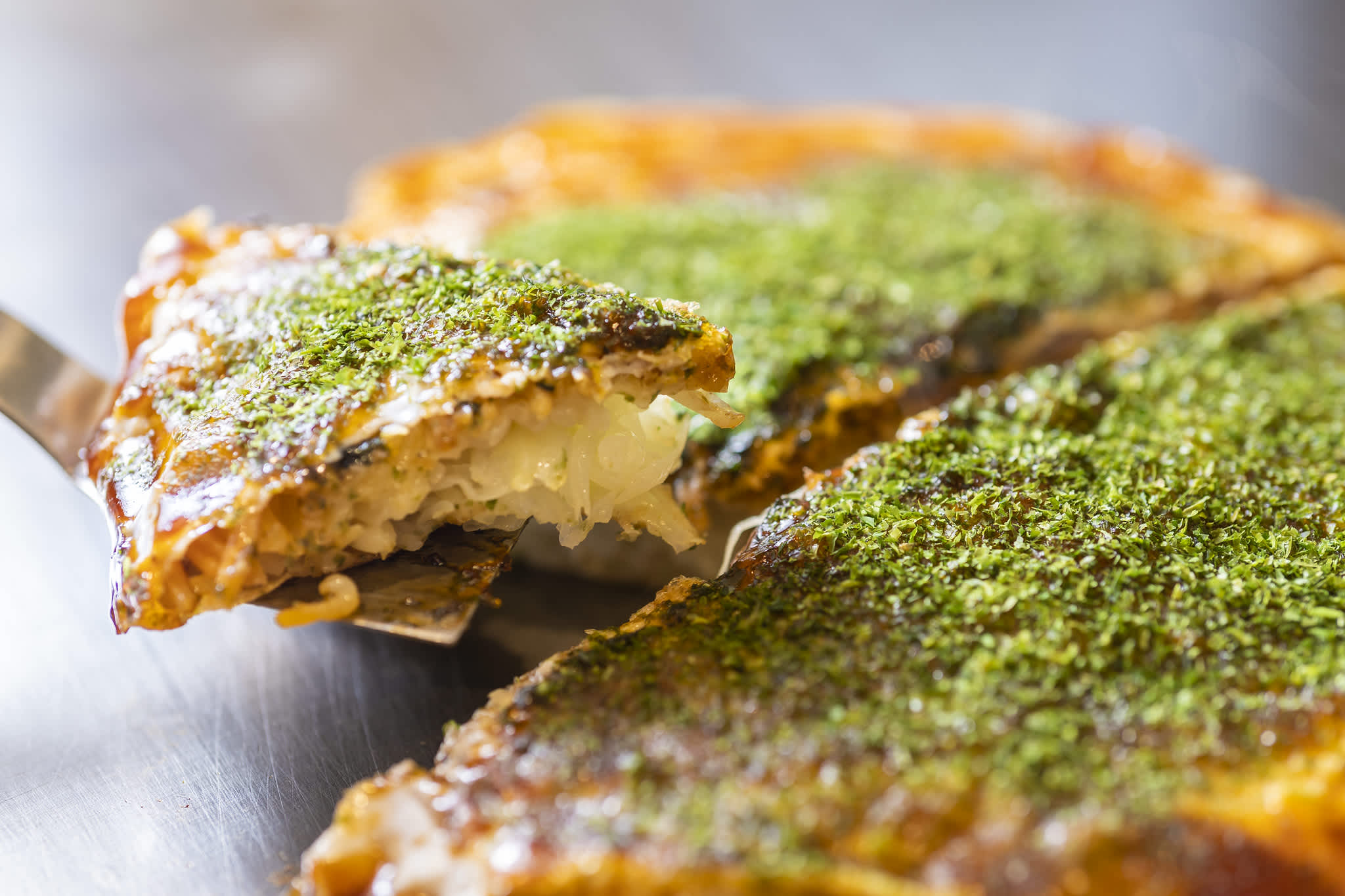
While you wait for this Hiroshima food classic to land on your plate, don’t forget to also get a taste of another staple of the city’s rich cuisine : oysters. Creamy, fresh oysters get thrown on the grill and sizzle for a bit, and serve as a perfect appetizer. Though Yagenbori Hassho is really specialised in okonomiyakis, don’t overlook the rest of their menu, including some fine teppanyaki recipes.
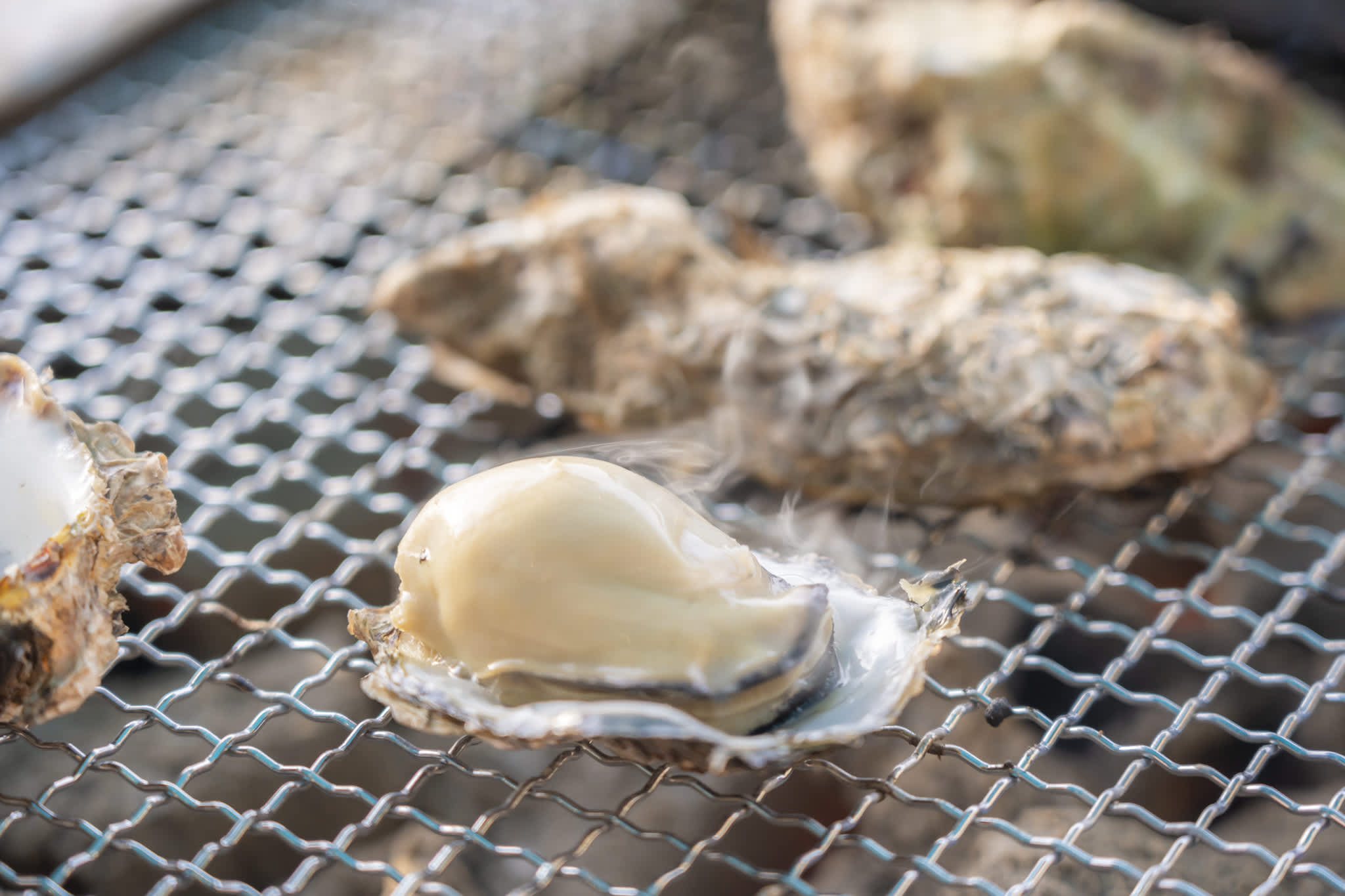
Ekohiiki, in the Otemachi neighborhood, is Hiroshima cuisine through-and-through, the locally cultivated oysters being the establishment’s main claim to fame.
Hiroshima is actually Japan’s largest oyster production region, largely defined by their large size and rich brininess. Oysters at Ekohiiki come in a variety of preparations, including raw, steamed and served with Japanese citrus fruits, breaded and fried, and also grilled with butter!
Anago (Conger Sea Eel) is also a prominent part of the Hiroshima culinary sector, often sourced from the waters around Miyajima. The anago offerings at Ekohiiki are also delicious and diverse, served kabayaki style, grilled and glazed with a sweet and savory sauce, tempura fried, or in a simple sashimi.
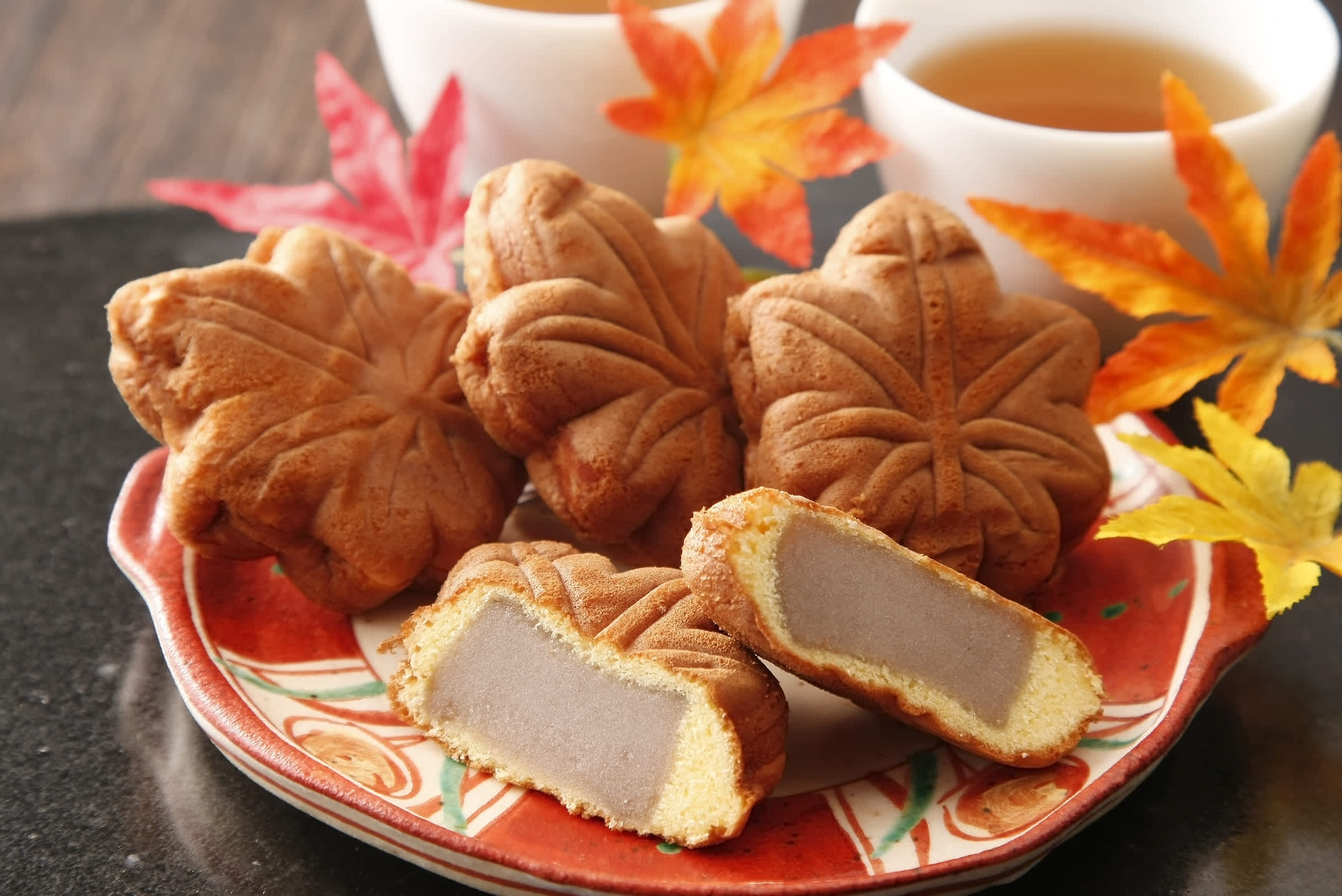
Located right next to another food staple of Mijayima, Kakiya and its renowned seafood menu including local oyster recipes, Momijido is the perfect place to try out regional sweet snacks enjoyed by the people of Hiroshima. This small corner serves a delicious fried version of the traditional momiji manju - a maple leaf shaped sweet pastry.
The original recipe remains, a soft cake with a filling inside, usually red bean (azuki) paste. However, at this little Mijayima (a ferry available with the Japan Rail Pass will take you there from Hiroshma) shop, momiji manju is coated with batter, and fried ! The result is a mouth-watering twist of an already succulent sweet, and is called age-momiji. The fried outside contrasts perfectly with the warm and soft inside of the momiji manju, and adds a new depth to this famous pastry. A great way to rediscover - or get a tasty introduction to - this Japanese culinary staple.
Scenic spots in the Hiroshima Bay
Itsukushima shrine/mijayima island.
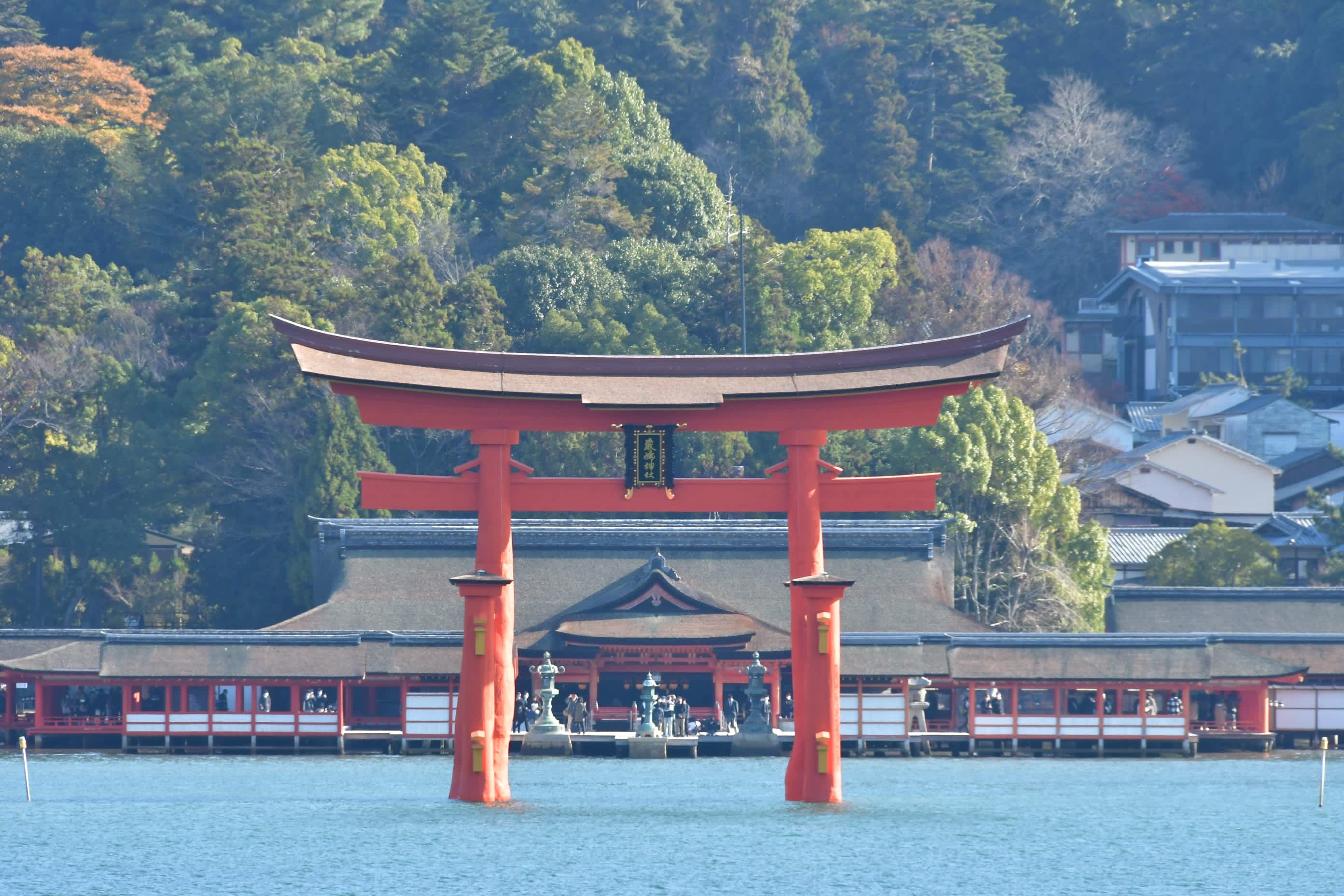
Very few scenes are as heavily associated with Japan as the torii gate at Itsukushima Shrine. The shrine is named after the island itself, though colloquially, this island is known as “miyajima,” literally translating to “shrine island,” indicating how strongly the shrine’s presence is connected to Itsukushima.
The shrine is said to have been initially built in 593 AD and has undergone a number of changes over the centuries. In 1996, it was declared a UNESCO World Heritage Site. The highlight of this shrine is its torii gate, which seems as though it’s floating during high tide. This scene is especially beautiful during sunset, when the golden hour lighting illuminates the surroundings. The shrine's main buildings are also constructed on the water. Access to the main shrine and the treasure hall inside cost 500 yen for an adult combined ticket and 150 yen for children. To get to the shrine people can ride a ferry out which is actually accessible via the Japan Rail Pass.
Haigamine Observatory
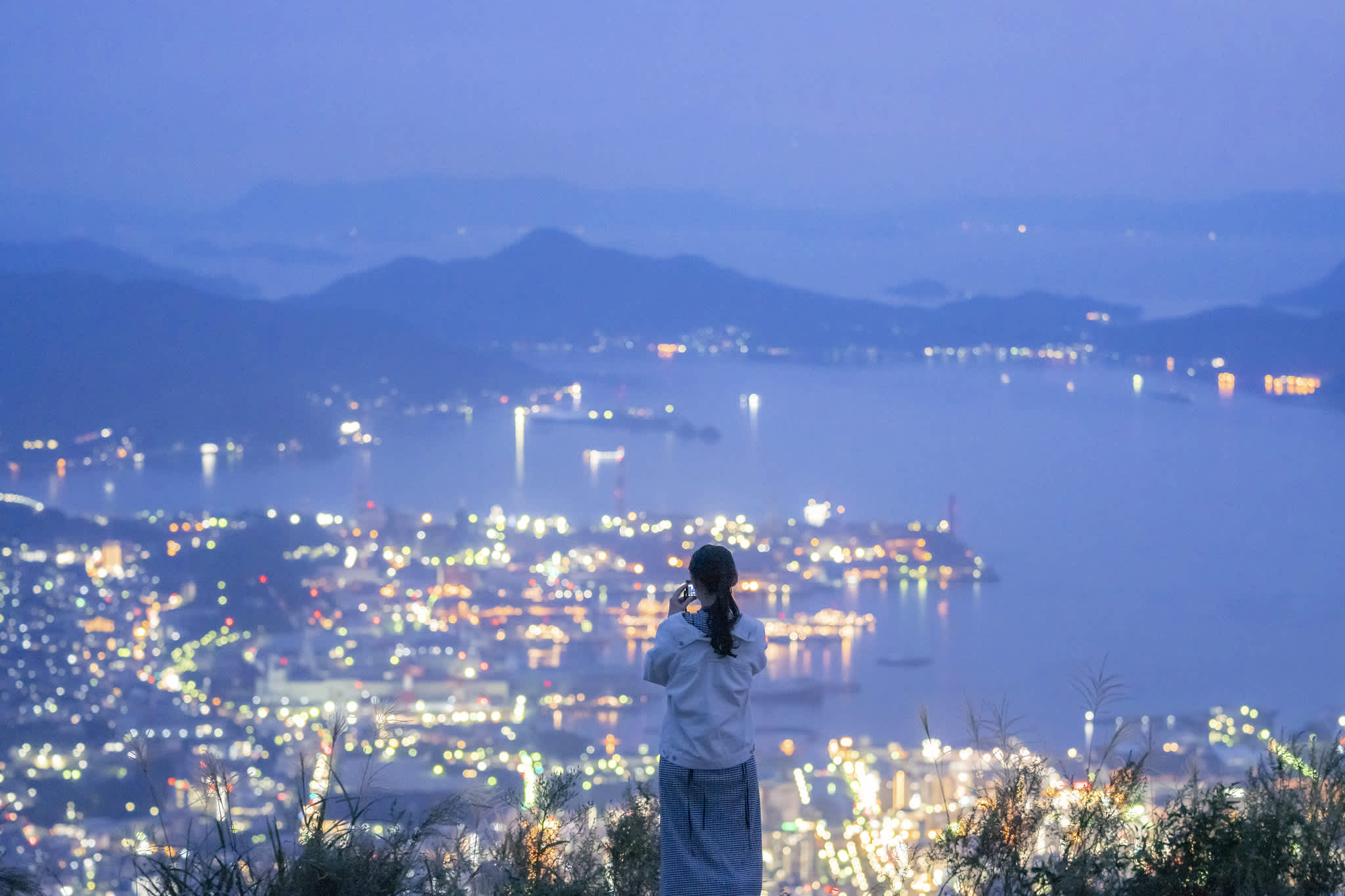
Often described as one of Japan’s top 100 views, the panorama that is visible from Haigamine Observatory is breathtaking. Culminating at over 700 meters above ground, the mountaintop offers a unique look over the city of Kure, near Hiroshima, as well as the inland sea and the islands of Hiroshima Bay. The drive up to the observatory is a bit treacherous for inexperienced drivers, so we recommend taking the 1h30 walk up there. It’s easily accessible from the Japan Rail Kure station with the Japan Rail Pass.
The best time to visit is either in the morning, to enjoy the sunrise and see how far the weather conditions allow you to see, or at night, where the view from Mount Haigamine takes a whole new depth. Listed in the top 3 night views of Japan, the panorama over Kure when the sun sets is something to see at least once in your lifetime. The city lights stretch all the way to the Hiroshima Bay, where it meets the seemingly infinite dark waters blending with the night sky horizon, only interrupted by the lit up coastlines of the Seto Inland Sea islands.
Onomichi/Senkoji Temple
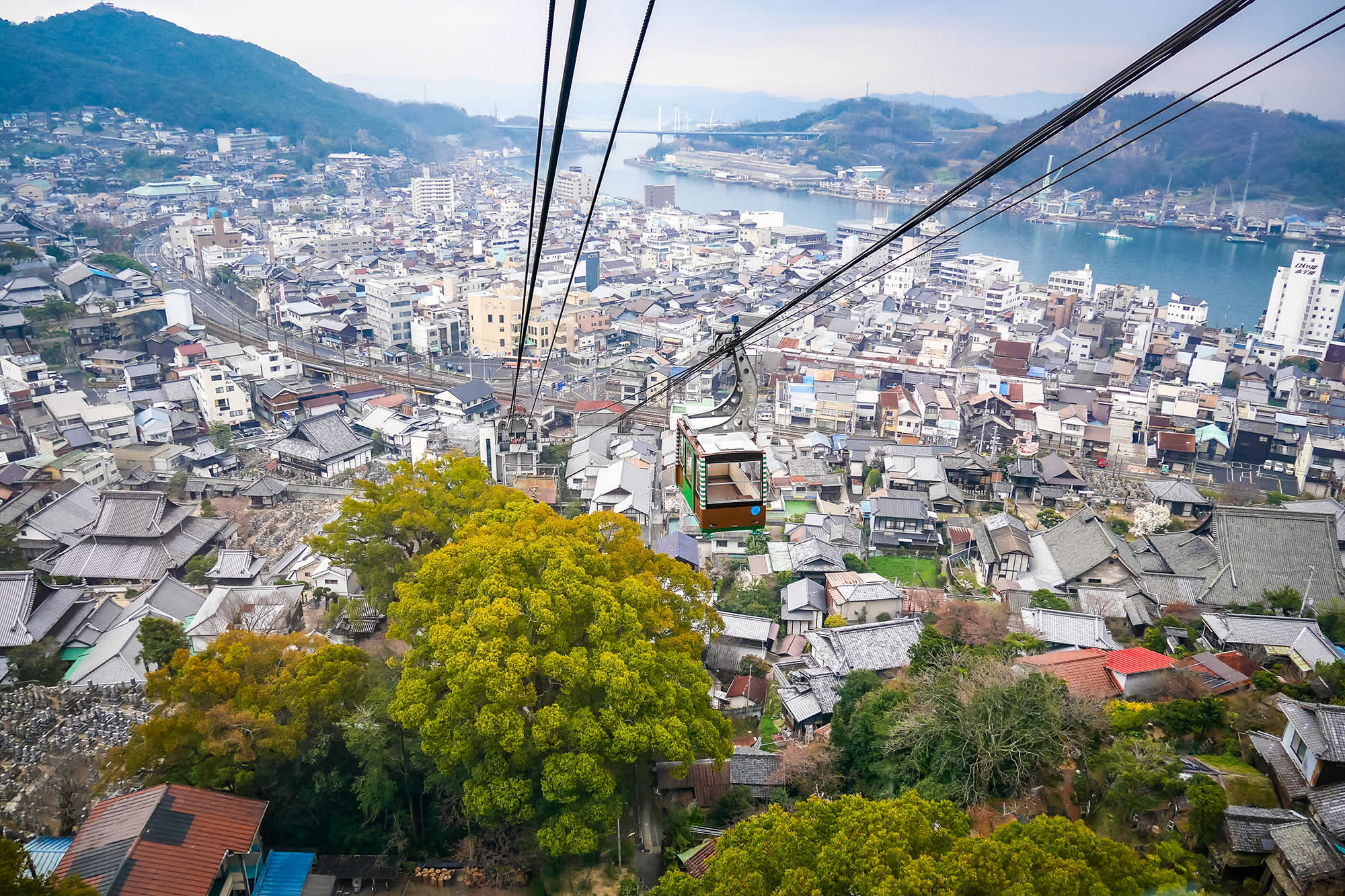
In Eastern Hiroshima Prefecture is Onomichi City, about a one-hour Shinkansen ride from the prefecture’s capital city - included with your Japan Rail Pass. Here, one can find a number of attractions that are built throughout the area’s hilly geography. Senkoji Temple is located on the hillside of Daihozan. This elevated position gives visitors to the temple a clear view of Onomichi Port and the city beside it.
Heading up to the temple can be as much of a treat as the temple itself, as it is accessible via cable car that takes travellers from the base of the hill up to the hillside. For those looking to get in their steps in for the day however, a series of stairs lead up to the temple.
To wind down in Onomichi, visitors can go to Karasawa Ice Cream Shop, whichthat sells traditional Japanese Monaka, a frozen treat consisting of ice cream inside of rice cake shells that resembles an ice cream sandwich.
Tomonoura port
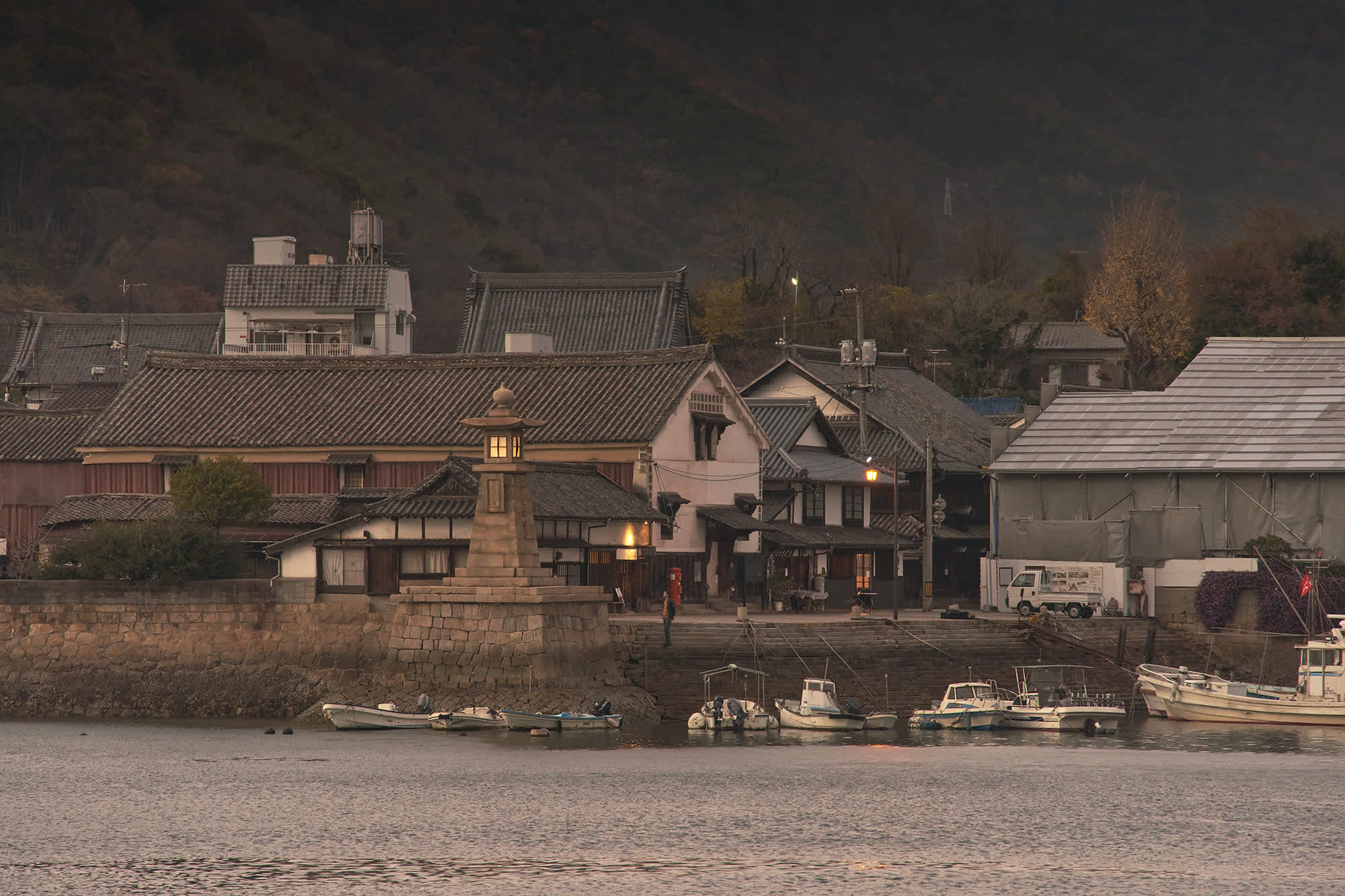
Studio Ghibli movies aficionados will most likely have a sense of déjà vu when seeing the picture above. Tomonoura’s cute and authentic port looks like a perfect backdrop to the story of Ponyo on a cliff by the sea, and this is no coincidence. Indeed, the quaint little seaside town was the inspiration for Hayao Miyazaki’s 2005 film ! Part of the Setonaikai National Park and overlooking the Seto Inland Sea, Tomonoura is easily one of the most scenic spots around Hiroshima Bay.
Almost a picture-perfect depiction of old-fashioned Japan, wandering the streets of this bucolic village will feel like time travelling. Old wooden houses, local cafés and historic temples and shrines surround a tranquil inlet port, vintage lighthouse included. The Joya-to lighthouse has been guiding ships around the port since 1859! A trip to the past and into the mind of Miyazaki, just a short Shinkansen ride away from Hiroshima station, stopping at Fukuyama JR station with the Japan Rail Pass and then taking a bus to the seaside village.
Shimanami Kaido Scenic Route
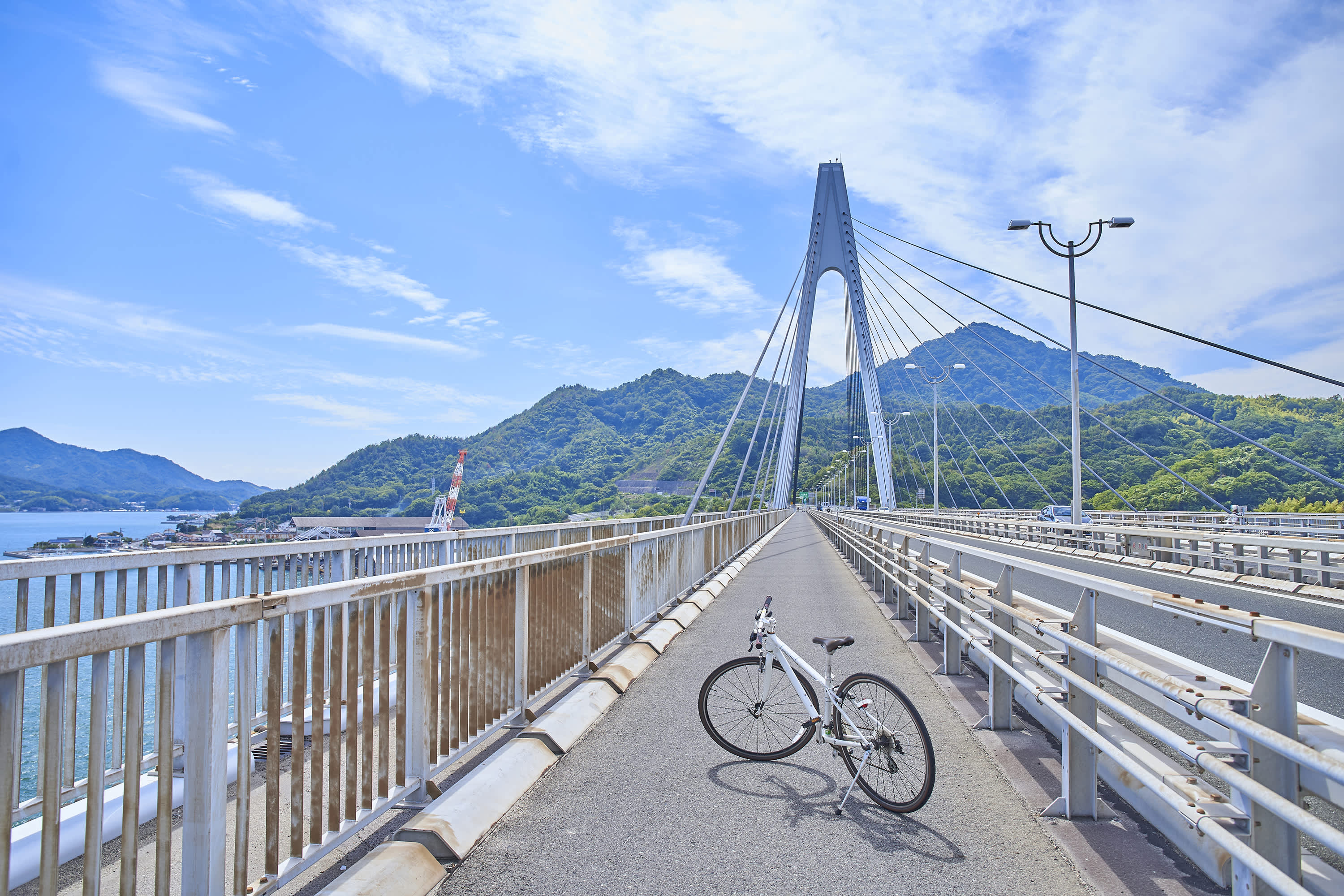
Often dubbed the “Cyclist Sanctuary,” the Shimanami Kaido Cycling Scenic Route is world-renowned by professional and hobbyist cyclists alike. This cycling route exists on both Honshu Island and Shikoku Island, spanning from Onomichi in Hiroshima to Imabari in Ehime Prefecture. The route crosses islands throughout the Seto Inland Sea, letting cyclists enjoy the beautiful view of the coast and smell of the fresh sea air.
The cycling route is appropriate for cyclists of all experience levels and is indicated with a sky-blue line throughout to guide cyclists. There are 150 different cyclist oases to rest at and a number of different facilities to provide repairs and assistance. For those who cannot bring their own bikes from abroad, there are rentals available!
Day trips from Hiroshima
Sandankyo gorge.
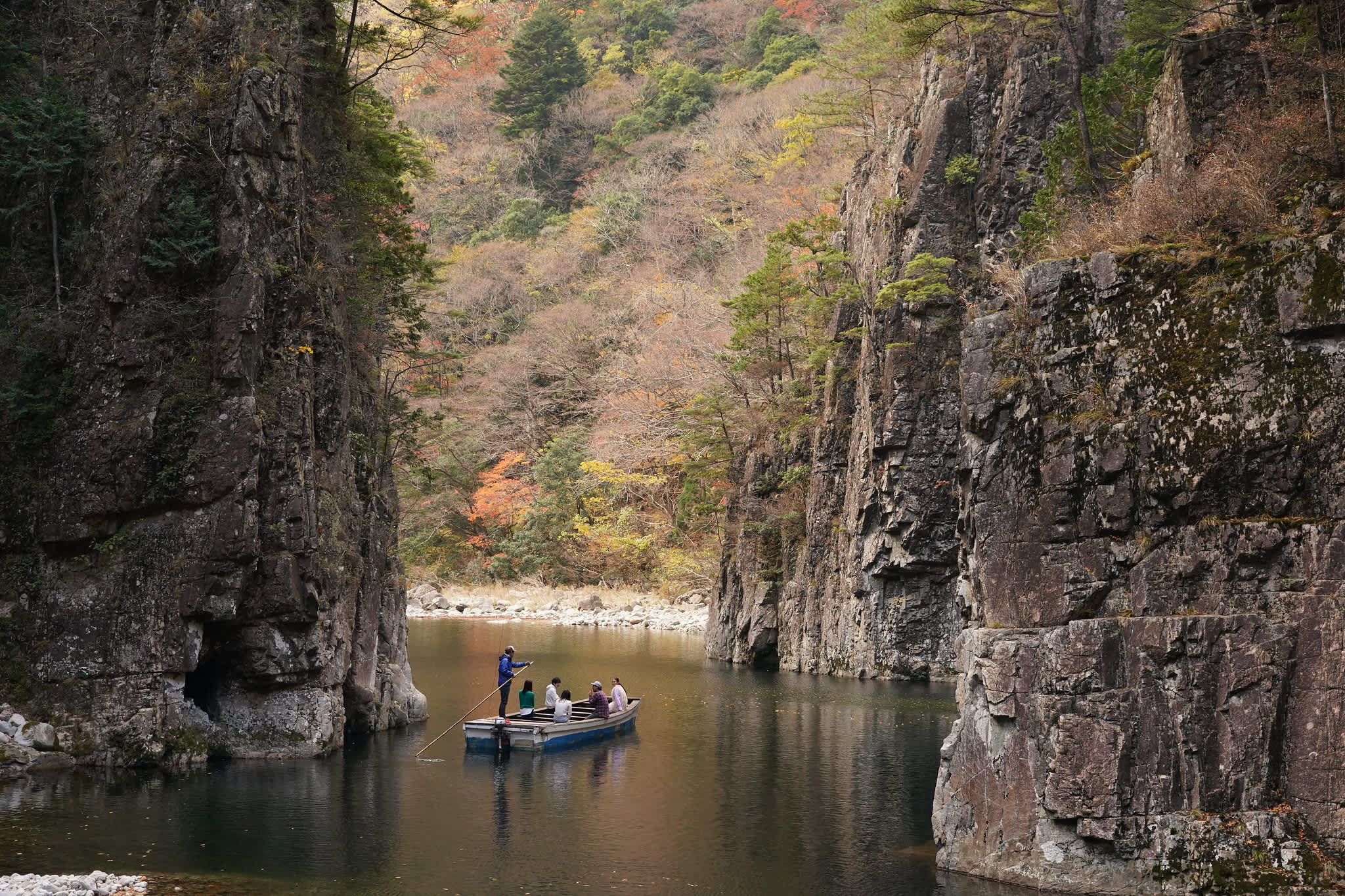
If you like waterfalls, forests and crystal clear waters, then Sandankyo Gorge is the place for you. Just an express bus hop away, the best of what the Japanese countryside has to offer is yours to experience. Several hiking paths - from 30 minutes up to 4 hours - will get you around this truly splendid wonder of nature through cliffs, elevated walkways, hanging bridges, ravines, rushing streams. And for those of you who are feeling adventurous and want to relish in Sandankyo Gorge’s breathtaking beauty from the water, kayaks are available for rent at the entrance of the Sandan Valley.
As you find yourself deeper into the park, a gorgeous reward reveals itself in the form of an emerald green pool of water, Kurobuchi. From there, take a boat to travel across the pond, and find Kurofuchi-so, a family restaurant serving fresh grilled salmon. Sandankyo Gorge also boasts a hotel if you want to make this resourcing escape from the city a 2-day trip - or if you missed the last return shuttle to Hiroshima. If that’s the case, not to worry : Sandankyo Hotel has a relaxing onsen for you to unwind.
Okunoshima Island
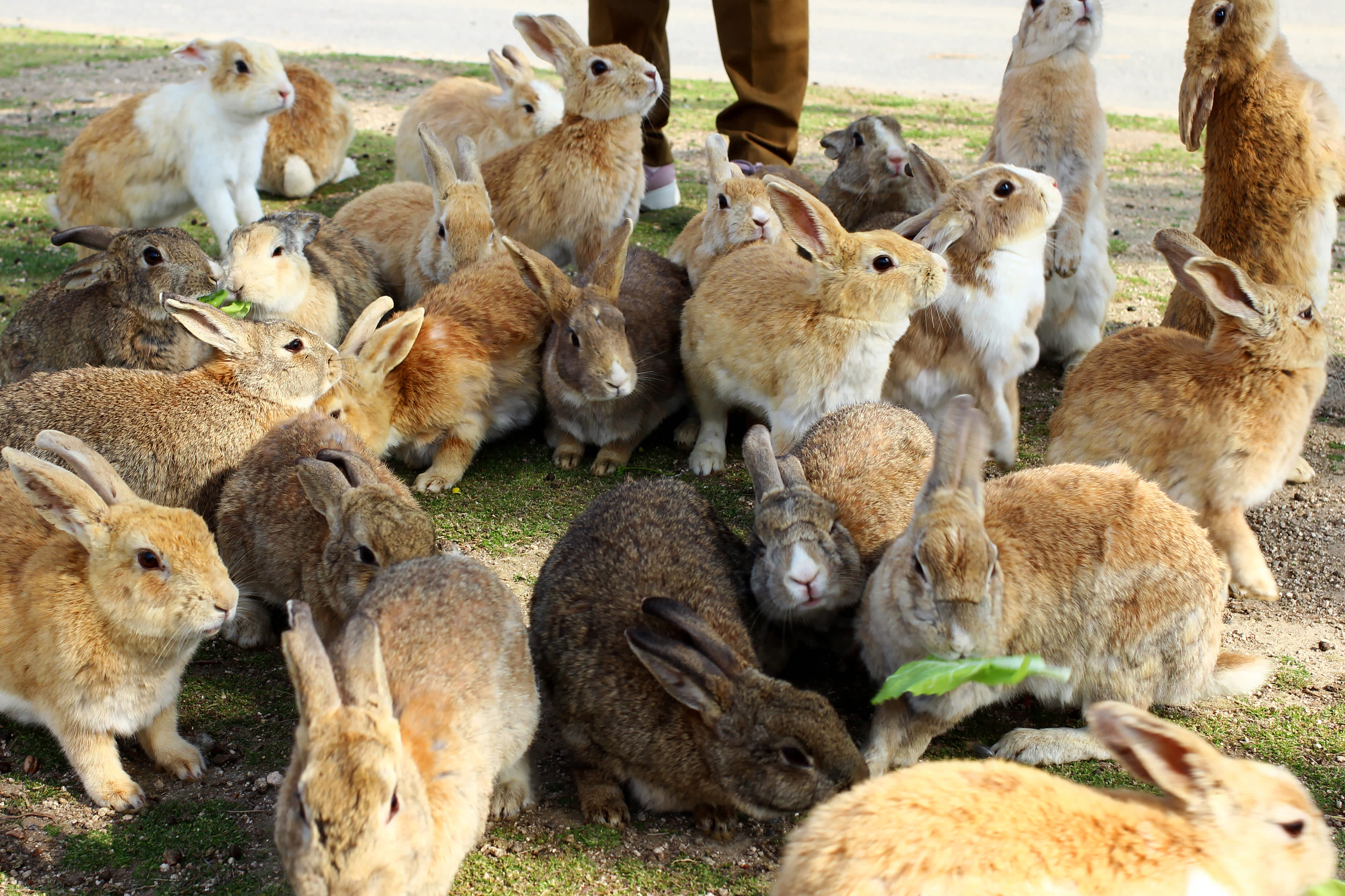
This small island, 15 minutes off the coast of Hiroshima via ferry, is often called “Rabbit Island,” whose name alone is enough to inspire excitement in any animal lover. Okunoshima is home to over 1,000 wild rabbits that roam around and come up to tourists for food. The island is a popular day-trip destination, but there is also a hotel on the island for any guests wishing to stay overnight.
The presence of these adorable rabbits definitely provides a relaxing environment, but the island has a rather dark history as the rabbits were originally introduced to the island during World War II, for chemical weapons research.
While the rabbits are the primary draw for the island, a number of attractions are also great ways to spend time, including the aforementioned museum, water-sport activities and beach-going, and there’s even a cafe to relax with a drink!
Serakogen farm/Hiroshima Miyoshi Winery
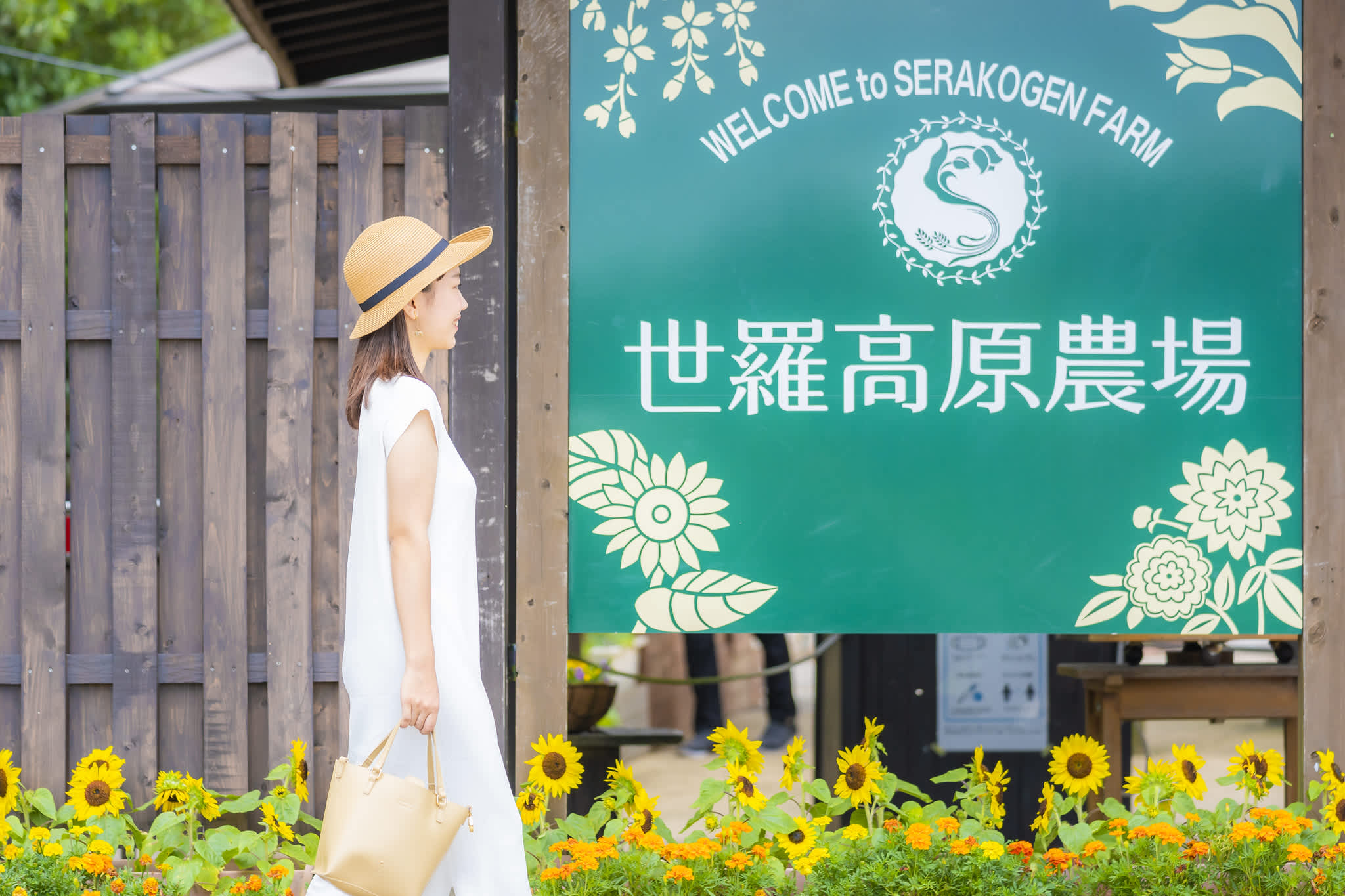
The town of Sera is found in the centre of Hiroshima Prefecture. Here, the climate is typically warmer than much of the rest of the prefecture, creating an ideal environment for the lush flower fields. From April to December, a different seasonal flower is featured at varying places like Serakogen Farm, Kamuno Sato Flower Village, and Sera Kogen Flower Forest. During the winter months, Sera Kogen Flower Forest creates a candle display at night.
Sera’s economy is largely agriculturally driven, boasting not just beautiful flowers but high quality food products. Sera Burgers have been a favorite of the area and are largely made from locally sourced ingredients. Also revered in the area is the crop of grapes which are used in wine production at the Miyoshi Winery. The most distinct of their offerings is that of “Fuki Wine,” produced with Fuki Grapes that are notable for their high sugar content. After enjoying the gorgeous scenery of the area, travellers can make their way to the winery to enjoy tastings of the locally produced wines.
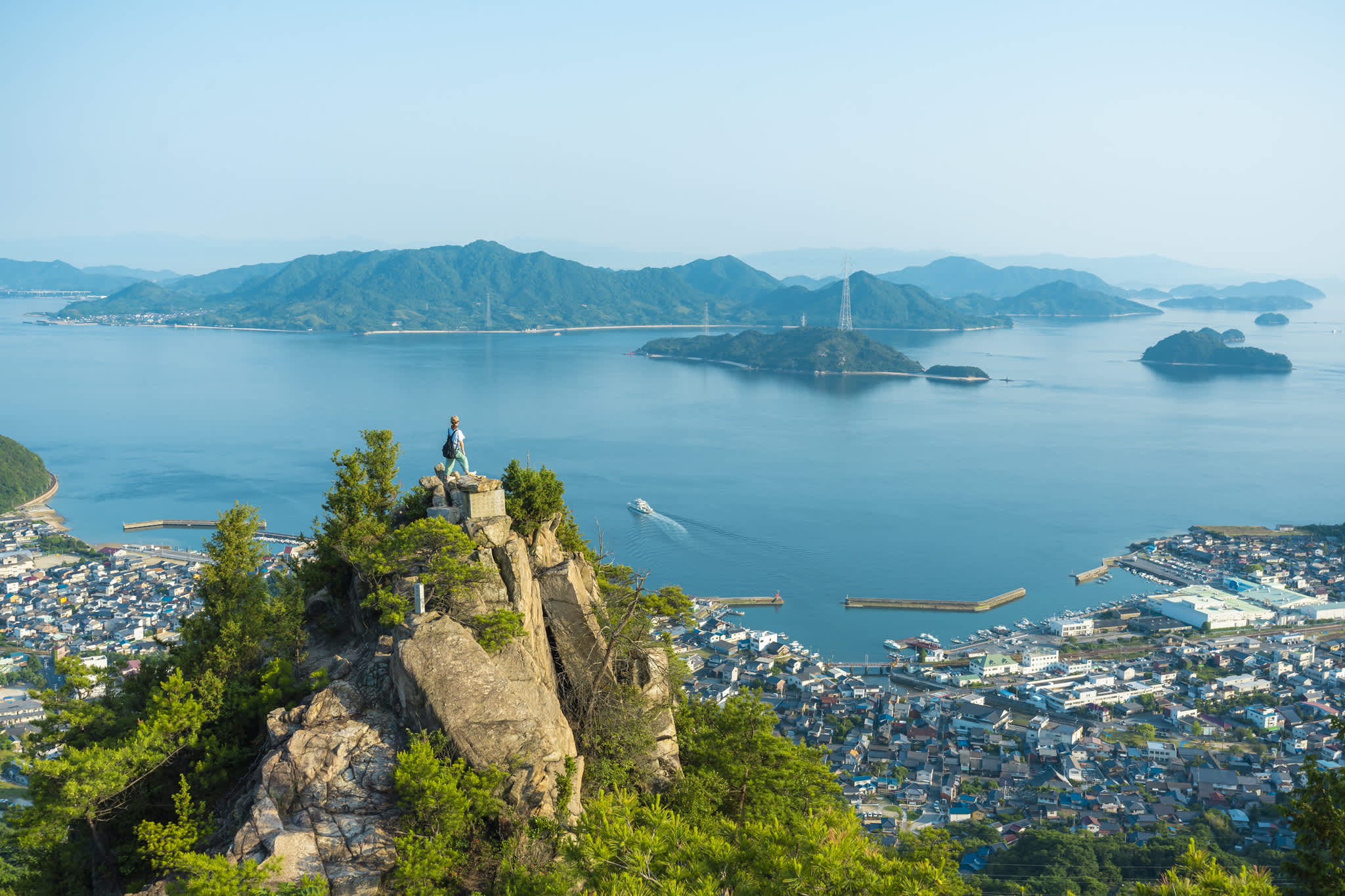
Back in the day, Takehara was a shining pearl in the Hiroshima Bay, thanks to its production of salt and sake. If the two industries are not synonymous with the area anymore - though you will still find some historic breweries left -, Takehara remains a highlight of the region. Thanks to its preserved architecture and its timeless atmosphere, the quaint seaside town offers an amazing dive into the Edo period (1603-1867), as its streets are filled with old wooden buildings.
Nearby, a 45-minute climb on foot - accompanied by Buddhist statues along your path - will bring you to the top of Mount Kurotaki, and reward you with stunning views of the Seto Inland Sea. Nicknamed “Little Kyoto” thanks to its historic and old-timey feeling, Takehara has one other similarity with the Kansai city : its bamboos. Indeed, Takehara is surrounded by bamboo forests, and they’re worth exploring to take a relaxing stroll as the wind rustles between the tall woods. The picturesque town is accessible via JR trains on the Kure line.
How to Get to Hiroshima
Access to hiroshima by train.
Hiroshima is accessible from Tokyo thanks to a direct Shinkansen ride, passing through major cities such as Nagoya, Kyoto and Osaka, if you want to hop on from there. The trip is included in the national Japan Rail Pass , along the Tokaido Shinkansen and then Sanyo Shinkansen lines and takes approximately 5 hours from Tokyo. The train stops at Hiroshima Station.
Access to Hiroshima by plane
While there are no direct flights from Europe and the Americas to Hiroshima airport, Japan has an extensive domestic flight network to get you to the City of Peace. In Japan, flights to Hiroshima depart from both Tokyo airports, Okinawa, Sapporo and Sendai airport. To get to the city, either take a limousine bus transfer, or arrive at Hiroshima Station through the regional JR Sanyo train line, included in the Japan Rail Pass.
Access to Hiroshima by car
A little more than 800 kilometers separate Hiroshima from Tokyo, which will take a little over 8h30 to complete. If you’re up for the road trip, there are many options available to rent a car in Japan .
- Life in Japan (111)
- Media (110)
- Nature (101)
- Outdoor (86)
- Tradition (85)
- Cities (44)
- Food & drink (44)
- Women in Japan (41)
- Culture (39)
- Spring (36)
- Winter (36)
- Autumn (36)
- Summer (33)
- Adventure (31)
- Things to do (28)
- Relaxation (28)
- Traditional (25)
- Japan in the UK/IRE (18)
- Family (18)
- City life (11)
- Local Guides (10)
- Cuisine (8)
- Hokuriku Shinetsu (7)
- Hokkaido (4)
- Articles (4)
- Shikoku (2)
- Outdoor (2)
- Chugoku (1)
- Hokuriku Shinetsu (1)
- Festivals (1)
- Cuisine (1)
- Postcards from Japan (1)
- Previous Article
- Back to Overview
- Next Article
- Inspiration
Please Choose Your Language
Browse the JNTO site in one of multiple languages
- Destinations
How to Visit HIROSHIMA and MIYAJIMA in ONE DAY (3 Easy Steps Guide)
This site uses affiliate links, meaning that if you make a purchase through our links, we may earn an affiliate commission.
Hiroshima and Miyajima are both iconic destinations, steeped in ancient history as well as recent history, plus both places are filled with delicious food options.
I often get asked if it is possible to do Hiroshima and Miyajima in one day. The answer is YES! However, some advance planning is necessary.
So, here is your step-by-step guide to how to visit Hiroshima and Miyajima in one day.
Check Out These Helpful Posts About Hiroshima:
10 Amazing Things You Can’t Miss on Your First Visit to Hiroshima
Perfect Day Trip to Miyajima from Kyoto, Osaka, or Hiroshima
Perfect One Day in Hiroshima (5 Things You Can’t Miss+Useful Tips)
Hiroshima Peace Memorial Park Self-Guided Walking Tour (8 Easy Steps)
You Might Also Like:
Amazing 3 DAYS in TOKYO (Thrilling Itinerary with 21 Stops)
Ultimate 16-DAY JAPAN ITINERARY for Marvelous Culture, History, and Nature
- 1. How to Get to Hiroshima from Kyoto or Osaka
- 2. How to Get to Miyajima from Hiroshima
- 3. What to Do in Hiroshima (3 Places You Need to Visit)
- 3.1. Atomic Bomb Dome
- 3.2. Hiroshima Peace Memorial Park
- 3.3. Hiroshima Peace Memorial Museum
- 4. What to Do in Miyajima (3 Places You Need to Visit)
- 4.1. Miyajima Island Floating Torii
- 4.2. Itsukushima Shrine
- 4.3. The Ropeway
- 5. Intrepid Scout's Tips for How to Visit Hiroshima and Miyajima in One Day
Before we dive into how to visit Hiroshima and Miyajima in one day , my recommendation is to start your day in Hiroshima and then continue to Miyajima .
It makes more sense logistically to do it that way. You will be more efficient and save time during the day and you will be able to accomplish more!
How to Get to Hiroshima from Kyoto or Osaka
- How to Get to Hiroshima from Kyoto
Kyoto Station and Hiroshima Station are connected by the Tokaido and Sanyo Shinkansen lines. Both lines will take you directly from Kyoto to Hiroshima.
The journey will take about 1 hour and 40 minutes. You can use your JR Pass . In addition, The Nozomi Shinkansen trains only take 1 hour 15 minutes but are not covered by the pass.
- How to Get to Hiroshima from Osaka
Shin-Osaka Station and Hiroshima Station are connected by a bullet train – Sanyo Shinkansen Line. Journey times vary according to the model of the train.
The faster models like the Mizuho and the Nozomi take just 1 hour and 25 minutes, however, they are not covered by the JR Pass.
The fastest train covered by the JR Pass is the Sakura train which takes 1 hour 32 minutes.
- How to Get to Miyajima from Hiroshima
Trains from Hiroshima Station depart every 15 minutes for Miyajima. You are going to exit the train once you reach Miyajimaguchi Station .
It is about a 30-minute ride from Hiroshima to Miyajimaguchi Station. Once you arrive at Miyajimaguchi Station, follow the signs for the Miyajima Island ferry .
The ferry is no more than a 10-minute walk from the Miyajimaguchi Station. Both, the train and the ferry are covered by the JR Pass .
What to Do in Hiroshima (3 Places You Need to Visit)
There is a lot to do in Hiroshima and you can spend at least 2 days exploring this fascinating place. If you have more time for Hiroshima then make sure not to miss these helpful posts:
However, if you only have a few hours to spend in Hiroshima then here are my 3 top places that you need to put on your list :
Atomic Bomb Dome
Atomic Bomb Dome should be one of the first things to do in Hiroshima. It is an iconic symbol of the “peace city” of Hiroshima. Atomic
- Bomb Dome is also called A-Bomb Dome, Genbaku Dome, or the Hiroshima Peace Memorial. It is part of the Hiroshima Peace Memorial Park.
- Hiroshima Peace Memorial Park serves as a memorial to people killed in the atomic bombing of Hiroshima on August 6th, 1945.
- Originally, Atomic Bomb Dome was the Hiroshima Prefectural Industrial Promotion Hall. It housed national and municipal governmental offices.
- The building was located just 160 meters from the epicenter of the blast . Amazingly, it was one of the few structures in the area to remain upright after the explosion.
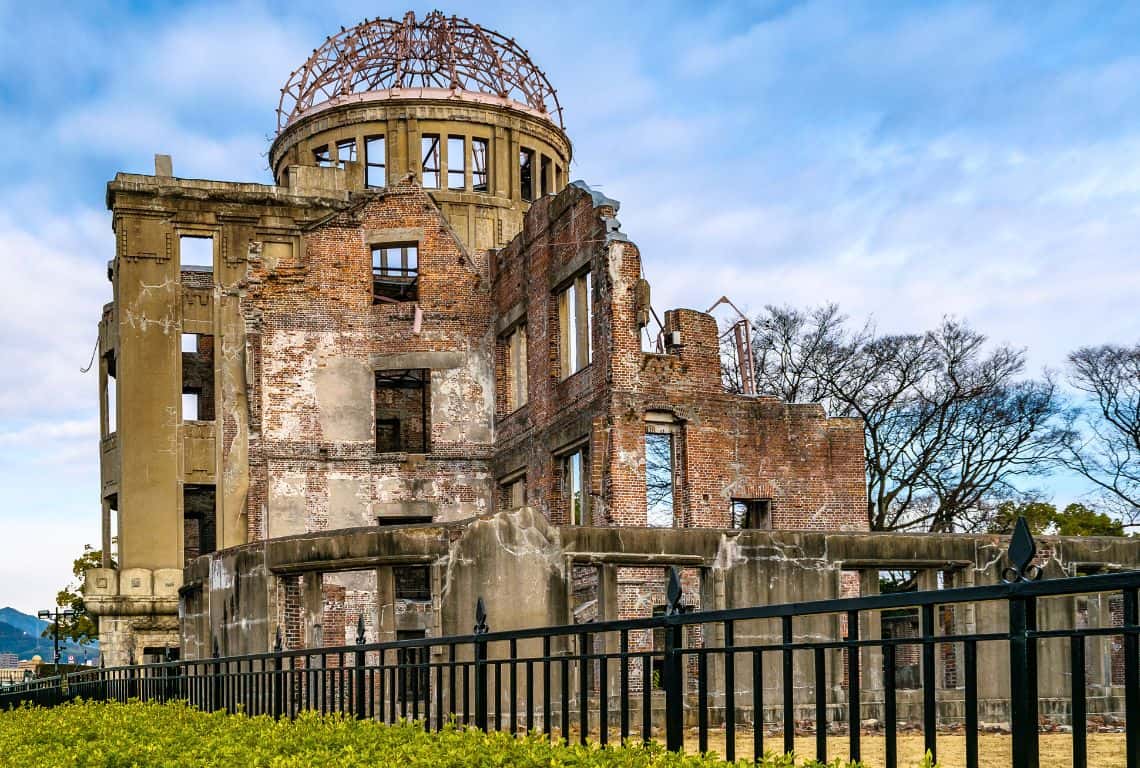
Atomic Bomb Dome / How to Visit Hiroshima and Miyajima in One Day
Hiroshima Peace Memorial Park
Hiroshima Peace Memorial Park was designed by Japanese architect Kenzo Tange. It opened to the public in 1954. The park has a total area of 122,000 square meters and houses a museum, as well as numerous memorials and monuments commemorating the people who perished during the atomic bombing of Hiroshima on August 6th, 1945.
Here are a couple of memorials and monuments that you should stop by:
- Children’s Peace Monument
Children’s Peace Monument is a tribute to Sadako Sasaki and all the children who perished due to the atomic explosion.
Sadako was exposed to the A-bomb at the age of two. Yet, she grew into a strong and healthy girl. However, nine years after exposure to the atomic bomb radiation, she developed leukemia.
Based on a traditional Japanese belief, Sadako thought that if she folded 1,000 origami cranes she would recover. But, after an eight-month battle with the disease, she passed away.
Cenotaph, also known as the Memorial Monument for Hiroshima for the A-bomb Victims is located in the center of the park. It consists of a stone coffer beneath an arch. Within the coffer is a record of the names of victims of the atomic bombing.
Cenotaph is inscribed with the phrase: “Let all the souls here rest in peace for we shall not repeat the evil.”
If you are planning to spend a few more hours in Hiroshima Peace Memorial Park or want to learn more about the events leading to the bombing of Hiroshima then read Hiroshima Peace Memorial Park Self-Guided Walking Tour (in 8 Easy Steps) .
Cenotaph for the A-Bomb Victims / How to Visit Hiroshima and Miyajima in One Day
Hiroshima Peace Memorial Museum
Hiroshima Peace Memorial Museum was built by the city of Hiroshima and it was opened to the public in 1950.
The museum collects materials that convey the horror of Hiroshima’s atomic bombing. It displays artifacts, photographs, and paintings that show Hiroshima before and after the bombing.
It demonstrates the present and current status of the nuclear age.
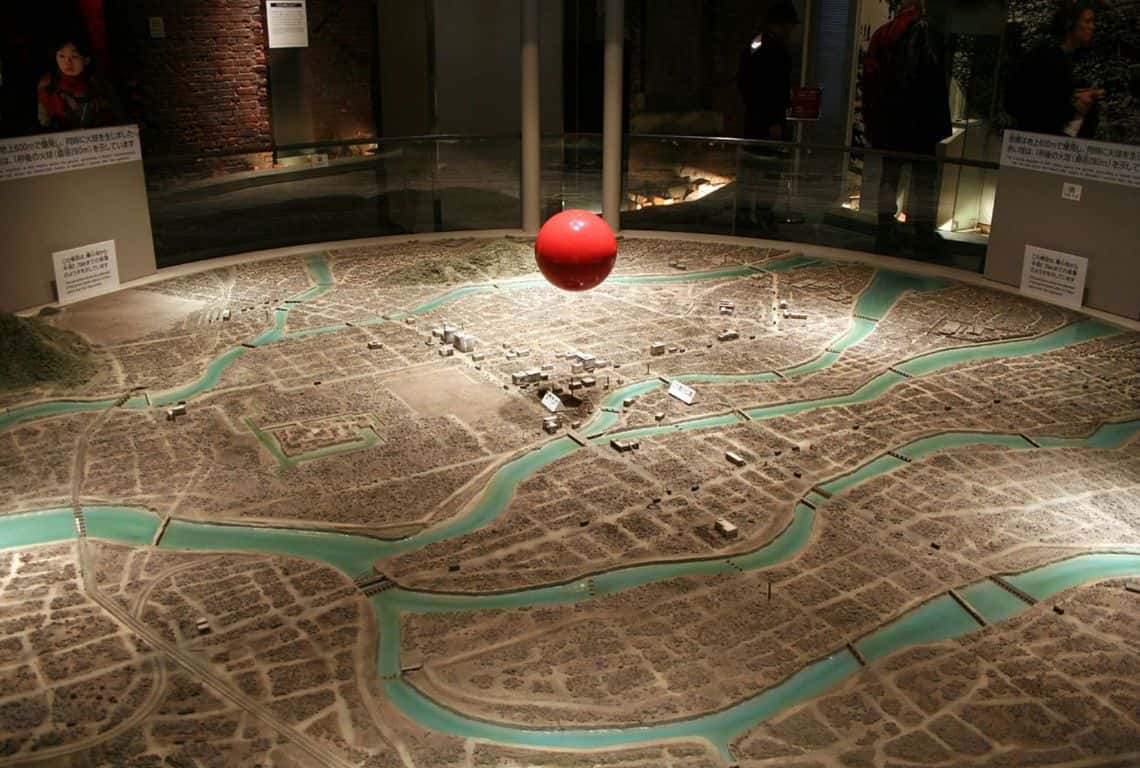
Image Credit: Derek Springer via Wikimedia Commons / How to Visit Hiroshima and Miyajima in One Day
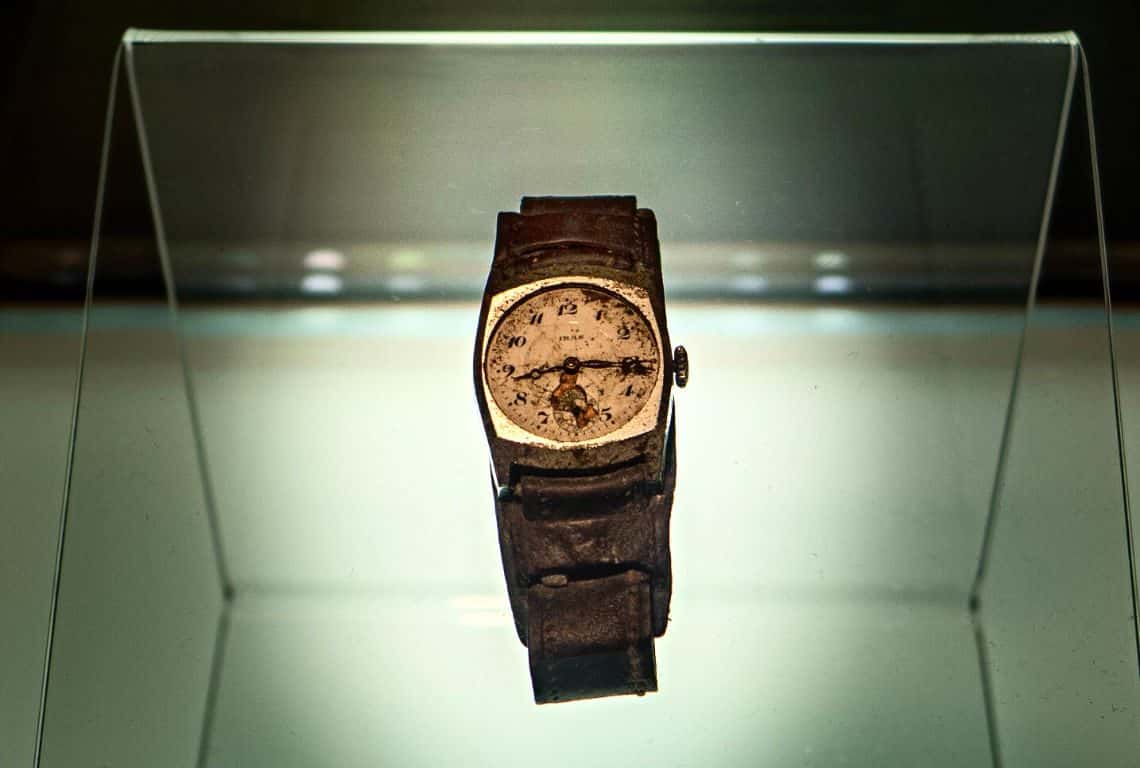
Hiroshima Peace Memorial Museum / How to Visit Hiroshima and Miyajima in One Day
What to Do in Miyajima (3 Places You Need to Visit)
I love Miyajima Island and going to Miyajima is one of my favorite day trips from Hiroshima .
Needless to say, you can easily spend a day exploring the island. In addition, consider spending a least one night on the island. Make sure to read Day Trip to Miyajima from Kyoto, Osaka, or Hiroshima .
Here are my top 3 places you need to visit on Miyajima Island:
Miyajima Island Floating Torii
The number one attraction as well as the symbol of Miyajima Island is a Giant Torii (gate). During the high tide , it appears as if the torii is floating out in the sea.
If you are visiting the island during the low tide , you can walk up all the way to the torii and really get the feel of how enormous this structure is.
Interestingly enough, unlike the traditional torii, which consist of two pillars, the Miyajima Island Giant Torii has additional four supporting pillars. All in all, it weighs about 60 tons and stands almost 17 meters high.
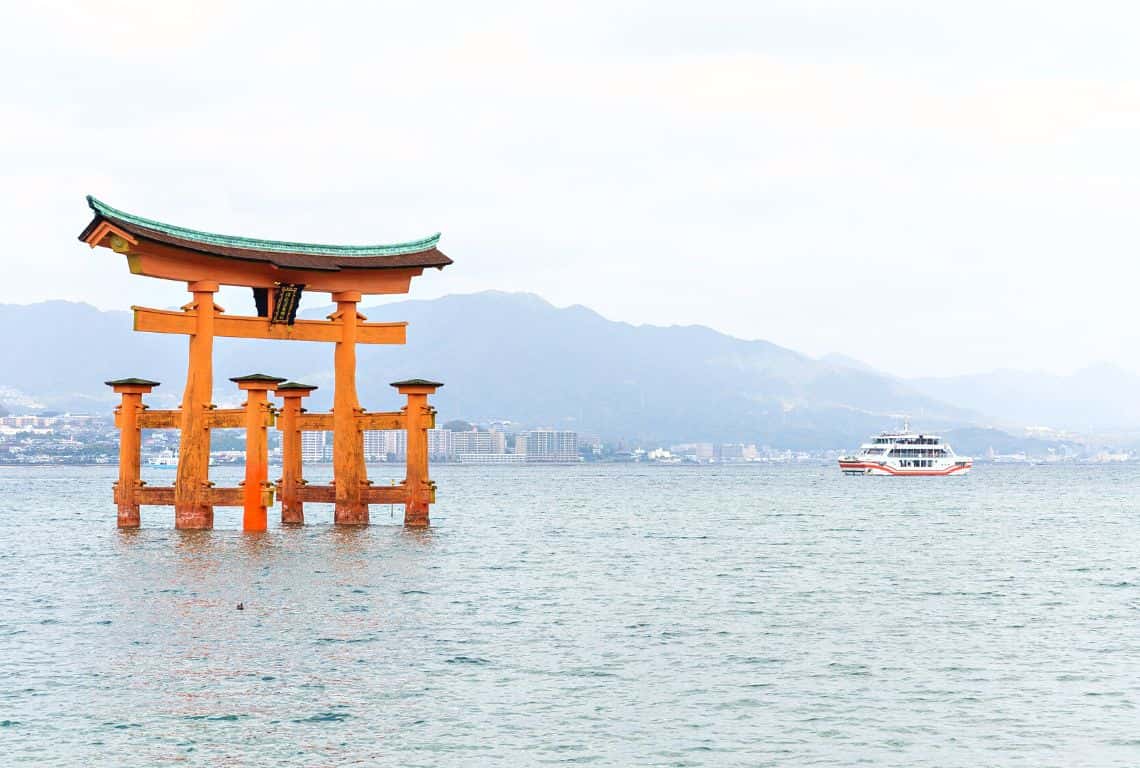
Miyajima Island Floating Giant Torii / How to Visit Hiroshima and Miyajima in One Day
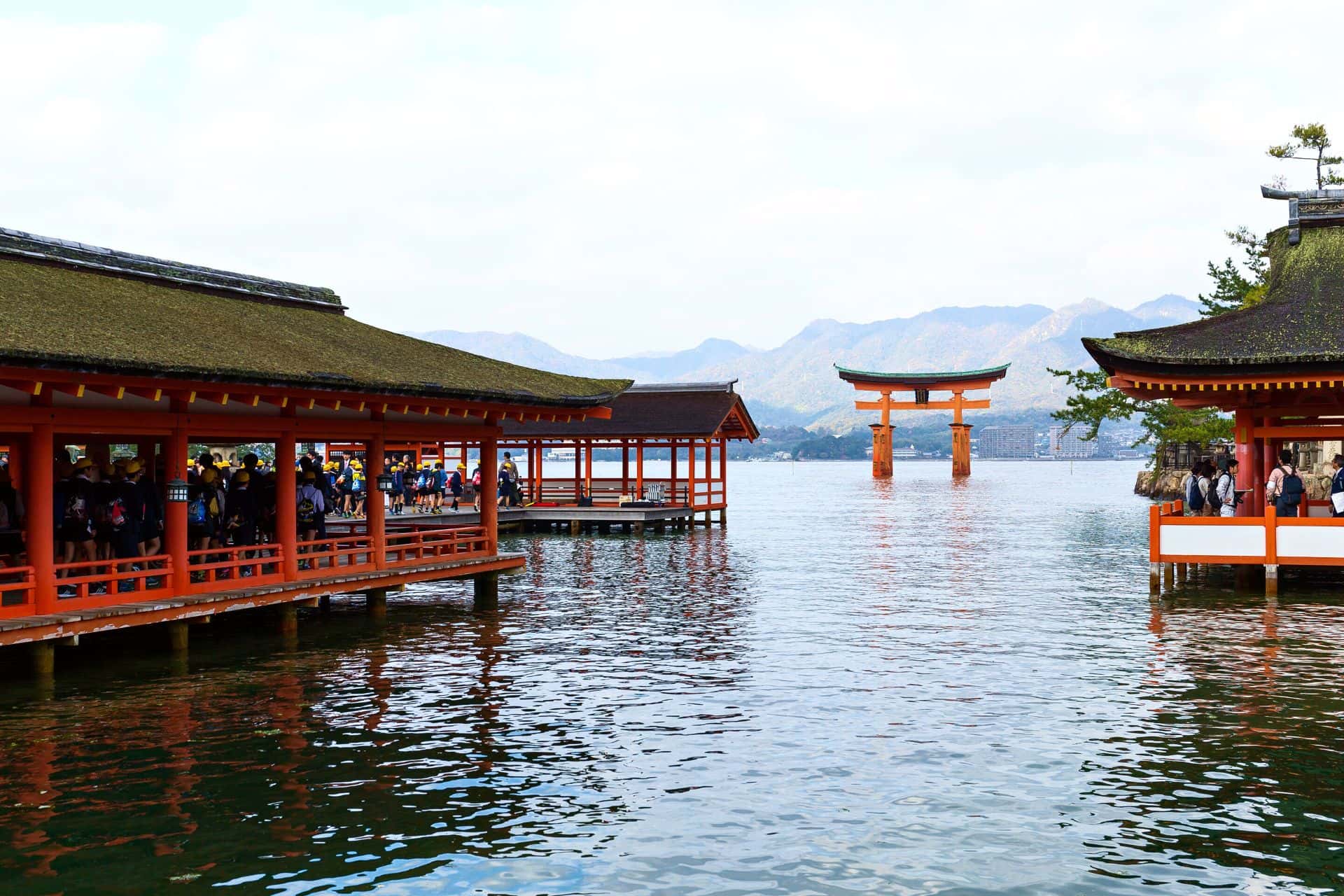
Itsukushima Shrine
Next, head on to Itsukushima Shrine .
The shrine was built in 593 and became an important place of worship in about 1168. In 1996 the World Heritage Committee officially inscribed Itsukushima Shinto Shrine as a World Cultural Heritage.
Itsukushima Shrine is well known for its unique construction. It consists of four main areas:
- the Holy Hall where the gods live (Heiden)
- the inner part where only the priests enter (Haiden)
- the external area for worship (Haraiden)
- the noh theater stage
All the sections are connected by numerous boardwalks and supported by pillars above the sea. During the high tide, the shrine looks as if it is floating in the Seto Sea .
Interestingly enough, the reason why the shrine was built out in the sea was that the island was originally thought to be too sacred for commoners to set foot upon.
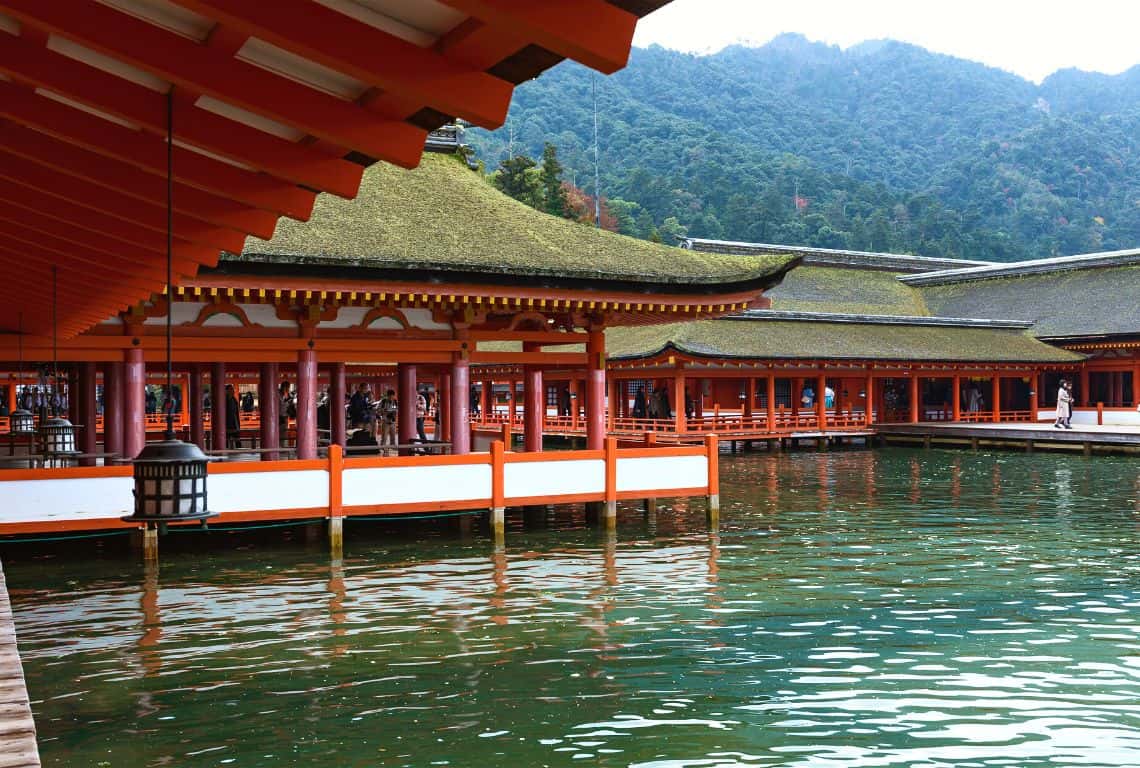
Itsukushima Shrine / How to Visit Hiroshima and Miyajima in One Day
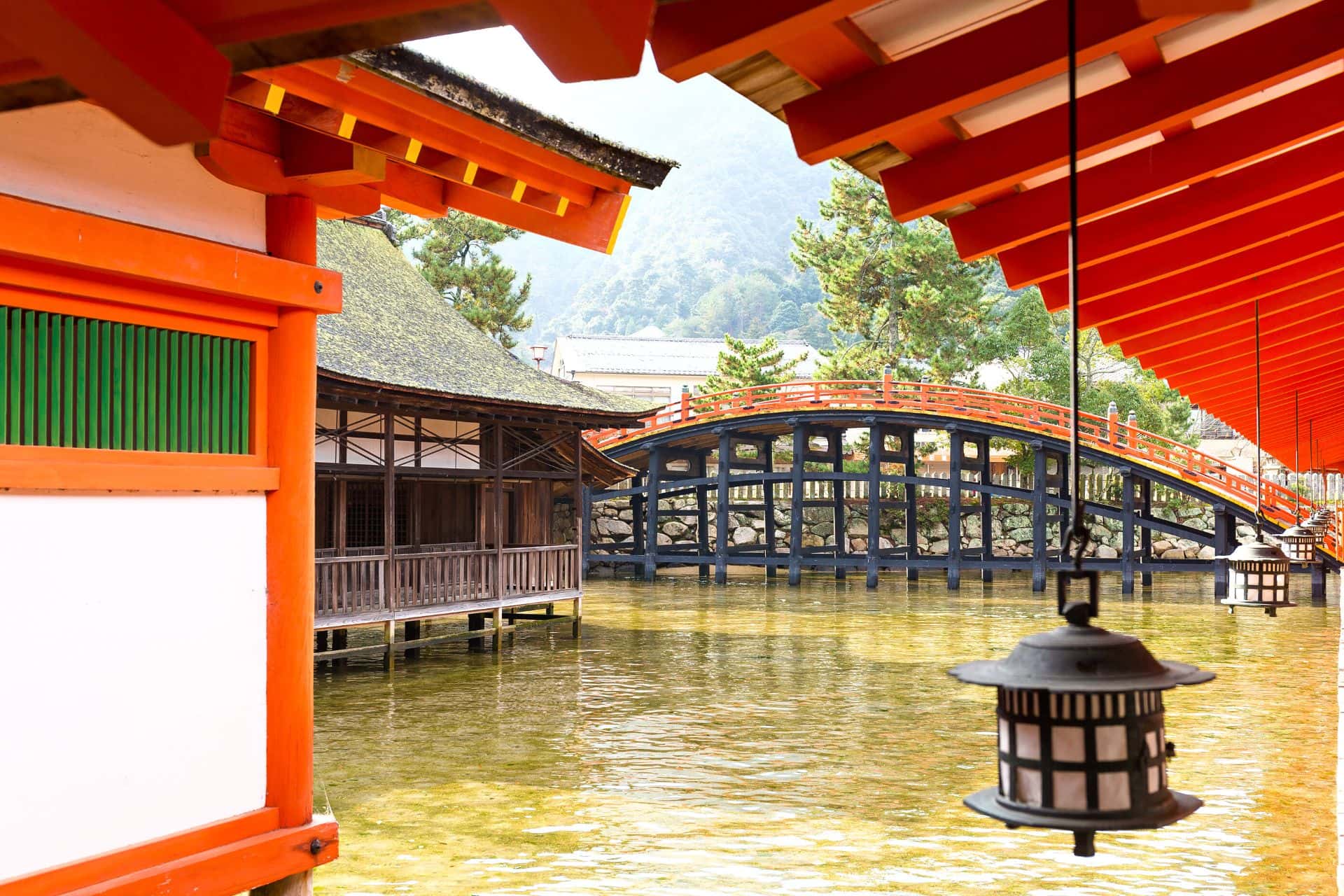
The Ropeway
Next, take the ropeway to catch the magnificent views of the island.
- The ropeway leaves from Momijidani Station . You can take a bus or you can walk to the station. My recommendation is to walk to Momijidani Station. It is no more than a 10-minute hike up a slight incline. Simply, take the path leading from Itsukushima Shrine to Momijidani Park.
- Momijidani Park is a hang-out place for the famous Miyajima Island deer. They will be happy to see you and eager to find out if you have any treats. In addition, Momijidani Park is one of the most famous maple leaves parks in Japan. It is an absolute must-do if you are planning your Miyajima Island day trip in the fall.
- The ropeway goes from Momijidani Station to Kayadani Station . Once you reach Kayadani Station, you will take a second ropeway to your final destination which is Shishiwa Station.
- The Shishiwa Station is 430 meters above sea level. The views of the Seto Sea from the station are breathtaking.
- Tickets for the ropeway are available for purchase at several locations on the island. You can purchase a one-way ticket or a round-way ticket. It all depends on how much time you have to explore the island.
- It is important that you check if the ropeway is operating . The service could be suspended due to adverse weather. You can check prices, hours, and operation conditions here .
The View of Seto Sea from Mount Misen / How to Visit Hiroshima and Miyajima in One Day
Intrepid Scout's Tips for How to Visit Hiroshima and Miyajima in One Day
The visit to Hiroshima and Miyajima would not be complete without trying some local delicacies. Here are some of my favorite things to try:
- Local Delicacies in Hiroshima
While in Hiroshima, you need to try okonomiyaki . It is basically a pancake topped with cabbage, bacon, noodles, egg, and sauces.
How is Okonomiyaki made? Here is my take on it, as I watched it being made:
First, the batter made of flour is poured on an iron griddle. It is spread out in a circular motion to form a thin crepe-like pancake.
Next, a heap of sliced cabbage is placed on the batter, then thin-sliced pork . Consequently, it is cooked for a bit and then turned over with a big spatula and cooked for a little more.
In the meantime, the noodles are fried on the side, and once done they are put on top. Finally, an egg is cracked onto the griddle and spread out in the same circular size, and eventually put on the very top.
In due time, the special sauce is applied on the top as well as some mayonnaise, and aonori (dried seaweed).
- Local Delicacies in Miyajima
Miyajima is a must-see place for oyster lovers . You will find booths selling fresh or grilled oysters all along Omotesando Shopping Arcade. My recommendation is to try some grilled oysters with butter and soy sauce.
Another one of my favorites is Momiji Manju . It is a small pastry in the shape of a maple leaf. Traditionally, it is filled with sweet red azuki bean paste.
Now, It Is Your Turn, I Would Like to Hear Back from You!
Are you planning your trip to Hiroshima and Miyajima?
Please let me know! Drop me a quick comment right below!
Click on any of the images below to get inspired and to help you with the planning process for your trip to Hiroshima and Miyajima!
More Information About Japan:
Perfect ONE DAY in KANAZAWA – 7 Things to Do (BEST TRIP from Tokyo, Kyoto, or Osaka)
14 Amazing Things to Do in Arashiyama (Map+Useful Tips)
What to See at Nijo Castle in Kyoto (10 Top Things to Know)
Stunning Golden Pavilion in Kyoto (How to Visit and What to See)
Amazing Fushimi Inari Taisha in Kyoto (8 Things to Know Before You Visit)
First Visit to Kyoto – How to Visit and What to See (11 Things You Can’t Miss)
2 Days in Kyoto: The Perfect Kyoto Itinerary
Read All the Posts About Japan in:
Japan Travel Guide
Did You Find This Post Useful?
Why not save how to visit hiroshima and miyajima in one day to your pinterest board.
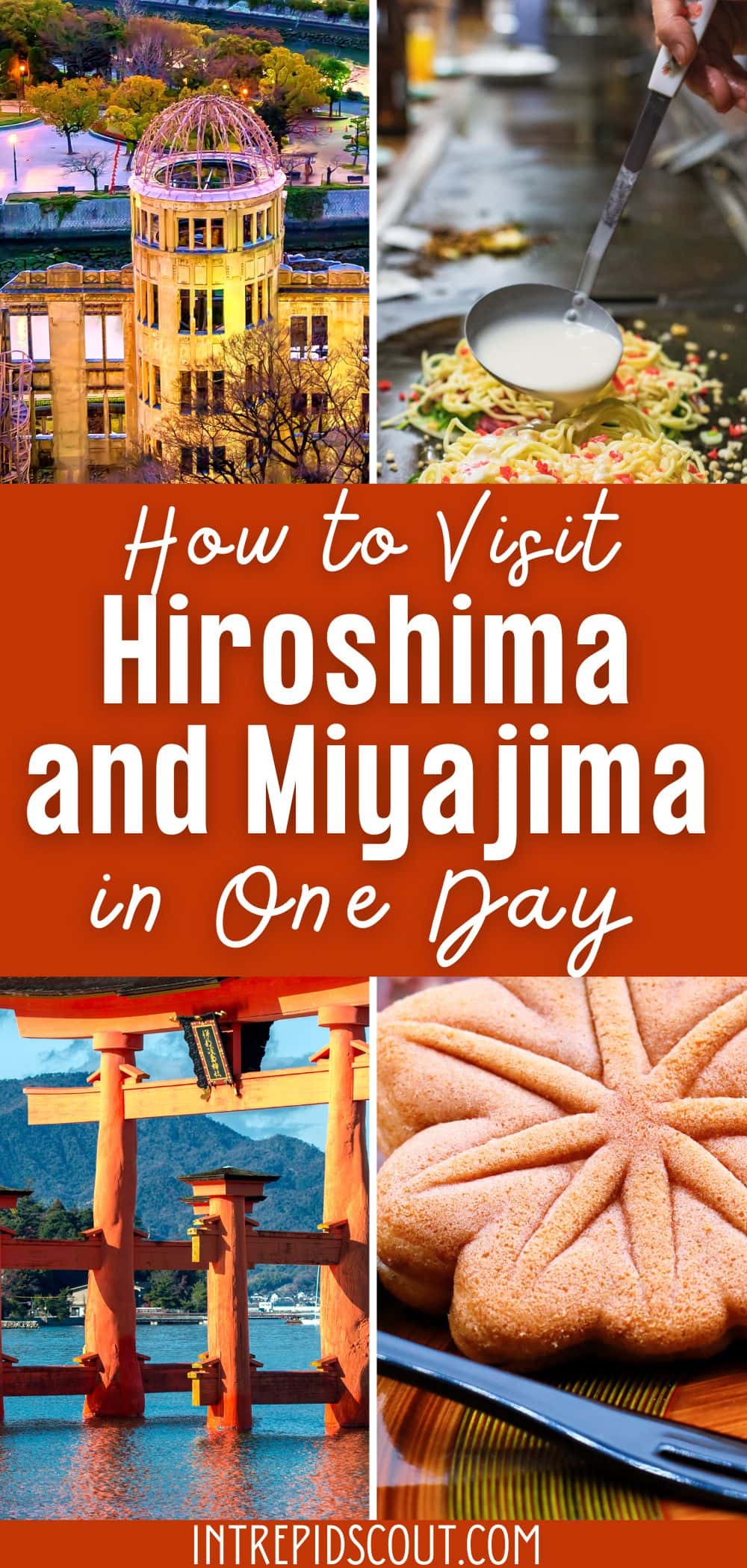
- alert('URL copied to clipboard.')).catch(err => console.error('Unable to copy to clipboard.', err))">
Share via Email
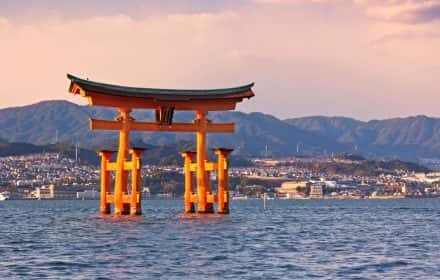
Perfect DAY TRIP to MIYAJIMA from Kyoto, Osaka, or Hiroshima (9 Things to Do)
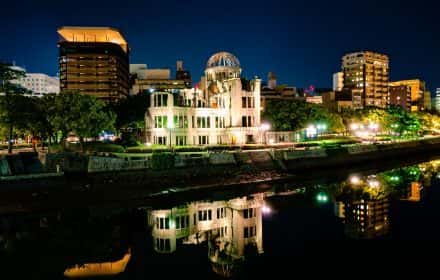
THINGS to DO in HIROSHIMA (10 Amazing Things to Do on Your First Visit)
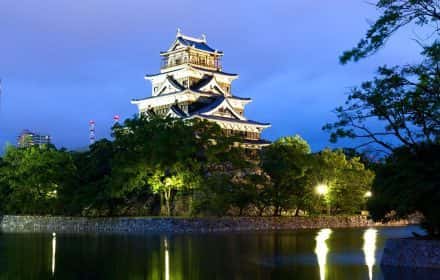
Perfect ONE DAY in HIROSHIMA (5 Things You Can't Miss+Useful Tips)
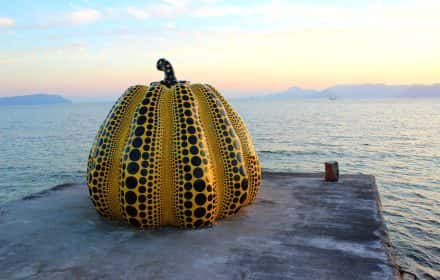
5 Fun and Easy DAY TRIPS from HIROSHIMA (How to Get There+Things to Do+Where to Stay)
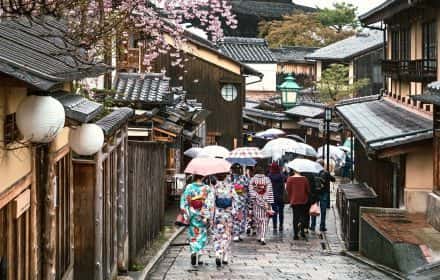
8 THINGS You Can't Miss - Perfect 2 DAYS in KYOTO
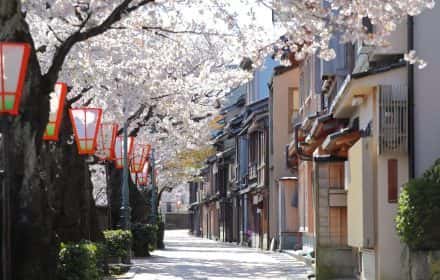
Perfect ONE DAY in KANAZAWA - 7 Things to Do (BEST TRIP from Tokyo, Kyoto, or Osaka)
@intrepid.scout
Leave an answer Cancel reply
Your email address will not be published. Required fields are marked *
The company processes your data to facilitate the publication and management of comments. You can exercise your rights of access, rectification, deletion and objection, among others, according to our Privacy policy .

Visiting Hiroshima and Miyajima Island: How to Make the Most of Your Time
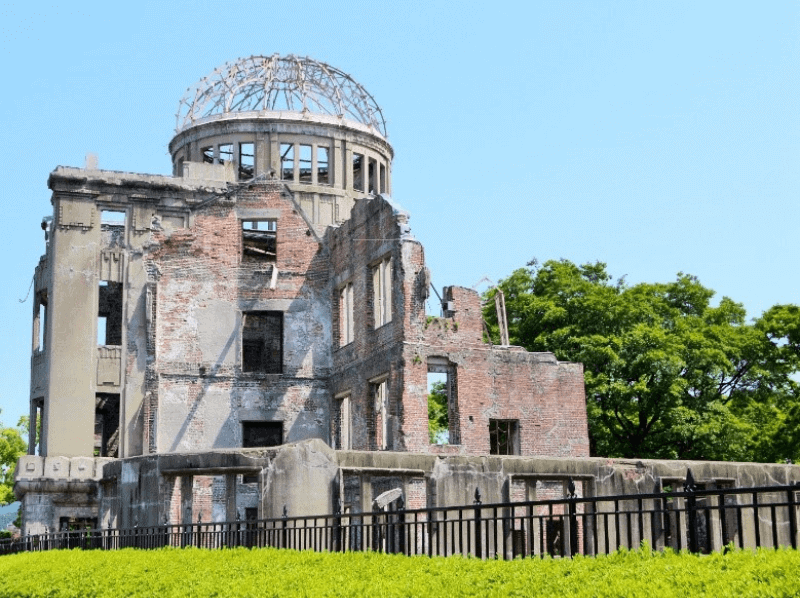
If you travel to Japan, one of the places you must see is the city of Hiroshima. It’s very beautiful, with many fun things to do and delicious local cuisine, but the historical significance is what makes Hiroshima worth visiting.
We toured this incredible city and were charmed by its strong resilience and ability to bounce back from the atomic bombing in August 1945. Our experience was educational, inspiring, and somber.
After exploring Hiroshima city, we also visited the island of Miyajima, which is a worthwhile add-on if you’re in the area.
Here are the highlights from our visit along with some tips and recommendations to help you make the most of your time in the Hiroshima area.
Contents (click to expand)
Day Trip to Hiroshima and Miyajima
Hiroshima is the 11th largest city in Japan, with a population close to 1.2 million people. Hiroshima and nearby Miyajima Island (also known as Itsukushima Island) are home to two of Japan’s 17 United Nations Educational, Scientific, and Cultural Organization (UNESCO) World Heritage Sites. It is no small wonder that this area is an important destination for tourists and historians alike.
| Related Reading: The Best Travel Guides for Japan
There are many things to do in Hiroshima, but we only had one day to explore. We visited the World War II memorials and then took a ferry from Hiroshima to Miyajima Island. Following is a short summary of our Hiroshima itinerary. You can find the logistical details at the end.
Hiroshima Peace Memorial Park
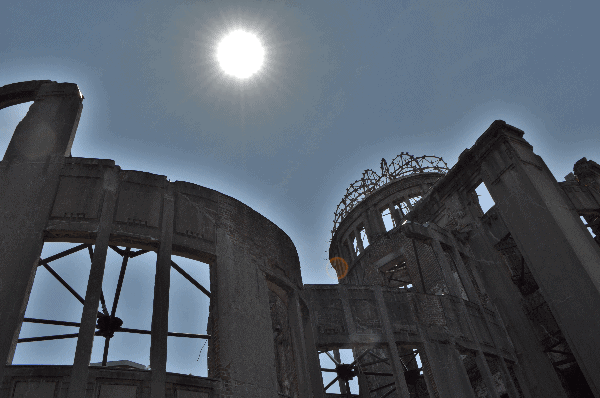
The Hiroshima Peace Memorial Park is located near “ground zero” of the atomic bomb explosion. The park includes numerous important sites:
- Atomic Bomb Dome (the UNESCO World Heritage Site)
- Children’s Peace Monument
- Cenotaph (war memorial) for Atomic Bomb Victims
- Hiroshima Peace Memorial Museum
You can easily do a self-guided walking tour of the first four sites, which are clustered together in a beautiful park straddled by two rivers.
The Atomic Bomb Dome, formerly the Hiroshima Prefectural Industrial Promotion Hall, is the most easily-recognizable structure in Hiroshima. It has been very well-preserved, so it looks exactly as it did after the bombing. The other monuments are only a short distance away.
Depending on how much time you spend taking photos, reading the documentation, or for quiet reflection, a tour could take anywhere from 45 minutes to 2 hours.
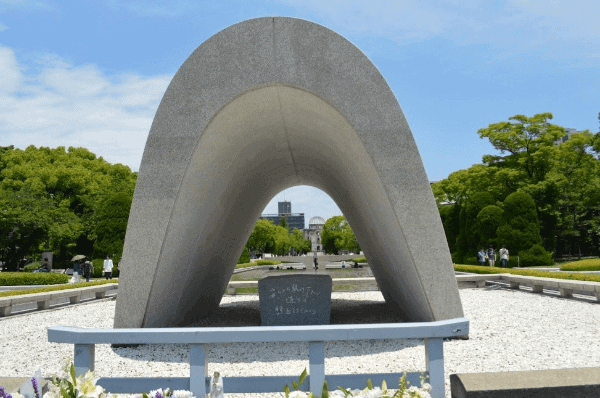
The Museum requires a bit more time. It is full of artifacts and stories of Hiroshima prior to, during, and after the atomic bomb. The museum offers a self-paced audio tour, which I recommend doing if you want to get the most out of your visit.
You may remember studying the Hiroshima bombing in school. But nothing can prepare you for the pictures, videos, charred remnants of victims’ belongings, and the sounds of people crying in the museum.
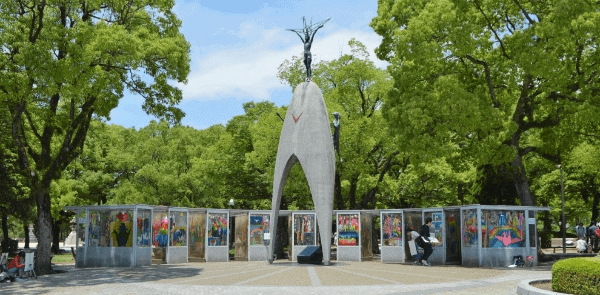
The atomic bomb exploded over the center of the city crowded with children, women, and elderly citizens going about their daily lives. When you stand on ground zero and see the destruction it caused to generations of people, it is a sobering sight.
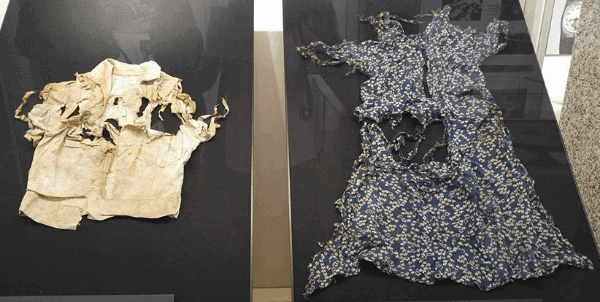
The city of Hiroshima has done an excellent job memorializing and telling the stories of the thousands of people who lost their lives as a result of the atomic bomb. Visiting the Peace Memorial Park will help you understand the stark reality of the destruction caused by nuclear weapons.
Miyajima Island & Itsukushima Shrine
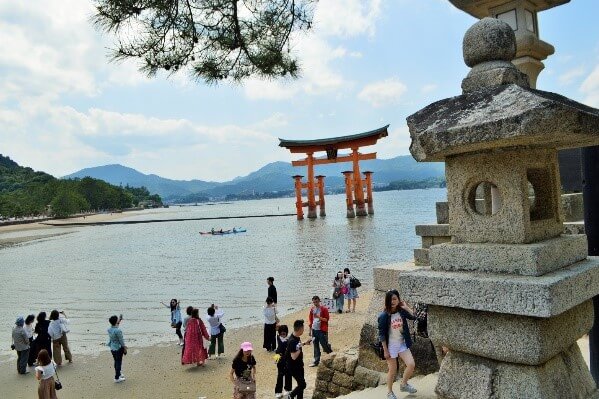
After our visit to the Hiroshima Peace Memorial Park, we visited the second UNESCO World Heritage Site, the Itsukushima Shrine on Miyajima Island.
This particular Shinto Shrine has the only Torii gate in the middle of the sea. (A “Torii” is a gate that marks the entrance to a Japanese Shinto shrine).
The first thing you may notice about the island is that there are deer everywhere. They are bold and friendly, and they may come up and try to nibble on your backpack or whatever you have in your hand.
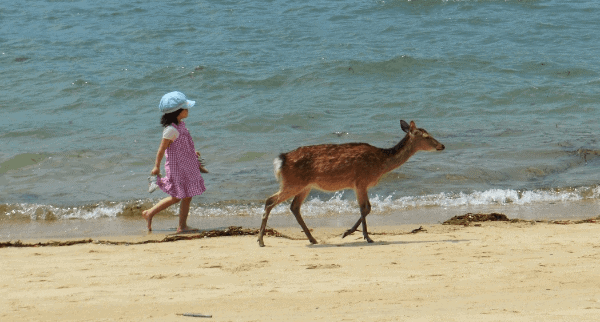
A short walk from the ferry terminal, you will see the famous orange Itsukushima Shrine Torii gate about 200 meters offshore. At high tide, the gate appears to be floating in the sea. At low tide, you can walk out to see the gate up close.
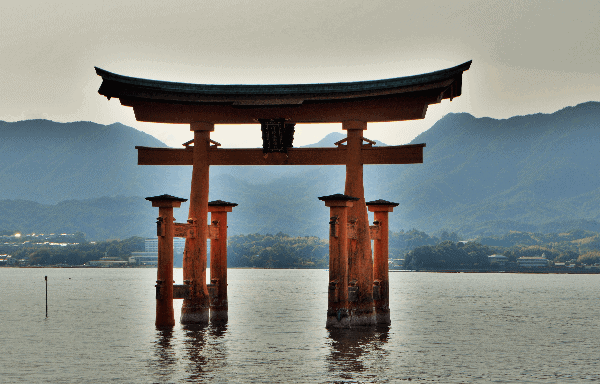
The main part of the shrine is also surrounded by water at high tide, but it’s located much closer inland. You can walk the corridors, which have no doors or walls. The entire shrine complex is designed to be in balance with the nature surrounding it.
After visiting the shrine, you may pass by the 5-Story Pagoda, another impressive site on Miyajima. From there, you can hike or take the ropeway (gondola) to the top of Mt. Misen, the highest peak on Miyajima.
We took the gondola as far as it went, but we still had to walk about a mile to the observatory at the highest point. The trail is rocky and a little bit steep in places, so make sure you have good footwear.
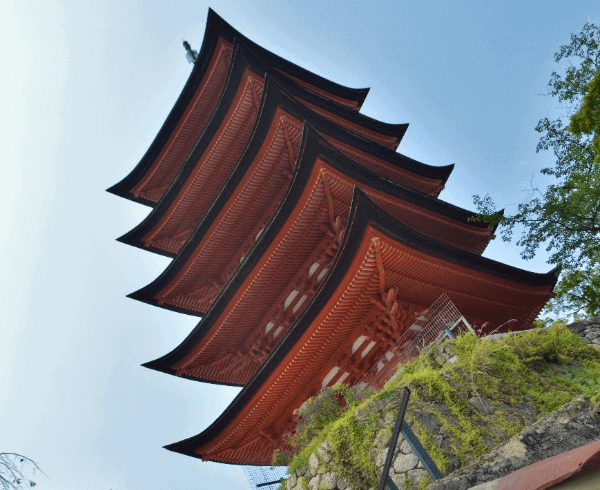
The trek is well worth the effort, because at the top, you will enjoy the reward of incredible 360 degree views of Hiroshima Bay. The picture speaks for itself.

While on Miyajima, you will also want to sample all of the delicious regional food, including Hiroshima-style okonomiyaki , oysters, steamed Hiroshima beef buns, and traditional sweets!
How Many Days You Need to Visit Hiroshima and Miyajima?
We were on a tight schedule and packed everything into one day. While we hit the most important highlights, I recommend allowing at least 2 days to tour Hiroshima and Miyajima.
Hiroshima is a dynamic city with many other things to do besides visit the atomic bomb memorials. Among the most popular attractions are Hiroshima Castle (also called Carp Castle) and Shukkeien Garden . It’s also a fun place to simply walk around, do some shopping, and sample all the local cuisine!
You could also spend a full day exploring Miyajima. The island has beautiful beaches, delicious food, hikes of varying difficulty, and an aquarium. You may also want to stick around to see the beautiful Torii gate at night.
Here’s what you need to know to plan your visit to Hiroshima and Miyajima.
We visited in June, and it was pleasant, albeit a bit warm, especially during our hike up Mt. Misen.
If you have a flexibility, the best time to visit Hiroshima is either during cherry blossom season (the cherry blossoms, or sakura, usually bloom in late March/early April), or in autumn, when you can enjoy the beautiful fall colors.
Also, every year on August 6th (the anniversary of the bombing), the city of Hiroshima holds a Peace Memorial Ceremony . The ceremony starts at 0800, so if you want to join the locals in paying silent tribute to the victims of the bomb, plan your visit accordingly.
Where to Stay
If you stay in Hiroshima overnight, there are many reasonably-priced hotels and guests houses within easy walking distance of the Peace Memorial Park. Click here to explore your options and check rates .
You can also stay right on Miyajima if you want to see the island at night and don’t want to worry about ferry schedules. Miyajima has a limited number of hotels ranging from simple guest houses to 5-star ryokans (Japanese-style inns). Click here to explore Miyajima hotels .
Getting to Hiroshima
The best way to get to Hiroshima is by train. Hiroshima Station is located in the middle of the city, only a few streetcar stops or a pleasant 20-minute walk from the Peace Park. Hiroshima airport is about 45 minutes outside the city.
| Get your Japan Rail (JR) pass here!
We rented a car and drove from Fukuoka. It was convenient because we were making other stops along the way, but it proved to be rather expensive when we added the cost of tolls and parking to the daily rental fee.
Visiting Hiroshima Peace Memorial Museum
The museum is open every day of the year except for December 30 and 31. It opens at 08:30. Closing times vary , depending on the time of year.
Admission is only 200 yen (about $2) for adults, 100 yen for seniors 65+ and high school students, and free for younger children. The audio guide is 200 yen. The museum does not take reservations.
Getting to Miyajima
We traveled to Miyajima by high-speed ferry. The dock for the World Heritage Sea Route was conveniently located next to the Peace Memorial Park and cost about $36 round trip per person for the scenic 45-minute trip. We purchased our tickets on-site at the vending machine.
For about half the price, you can take the streetcar + train from Hiroshima Station to Miyajimaguchi Station and then take a short ferry to the island, but it will add a good 30 minutes to your travel time. You can use your Japan Rail pass for both the train and the ferry (but not for the World Heritage Sea Route).
Plan Your Hiroshima Itinerary
A trip to Japan is not complete without a visit to Hiroshima. While you can tour the atomic bomb memorials and travel to Miyajima Island in one day, I recommend spending at least 2 days in the area.
Between the history, culture, natural beauty, and delicious food, there are so many things to do in Hiroshima and Miyajima that you won’t want to rush your visit. Build the extra time into your Japan itinerary; you won’t regret it!
Related Reading
Want more information and ideas for your trip to Japan? Here are other articles you will like:
Pro Tips for Using Airbnb in Japan
Climbing Mt. Fuji (Military Style)
How to Rent a Car in Japan
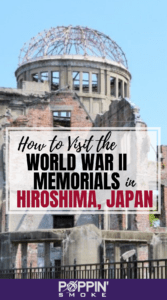
Good article? Share it!
6 thoughts on “Visiting Hiroshima and Miyajima Island: How to Make the Most of Your Time”
Hi Stephanie and Mike. Thank you for a great article. My wife and I are Australian and eager travellers who have now “retired” at a fairly young age .. (a bit like yourselves). We met Mike in a coffee shop in Fukuoka and he told us about your site. We’re pretty jealous of what is available to ex-military US staff however I get why it’s available and I can also see the context is … how to live a life in retirement and explore the planet. I look forward to more interviews and blog posts. I look forward to using your site as a tool to expand what we see as possible in retirement whether ex-US Military or not. Cheers Benj
Thanks Benj! Glad to have you as a reader!
If you are lucky enough to go to Miyajima Island, while there you should try their famous oysters if they are in season. We had them grilled and they were wonderful. The general rule of thumb seems to be that you eat oysters during months that have an “R” in the name. Also, there is a shuttle bus that takes you from behind the shrine up to the start of the ropeway. If you use it, it will save you a lot of uphill walking!
Thanks Wayne! That’s a good tip about the shuttle bus. I’m going back to Miyajima next month when my niece visits!
Thanks, Stephanie and Mike. This was a great read and will definitely help me plan my trip to Hiroshima in a few months. Appreciate your insights. Cheers!
Thanks Eddie! We look forward to hearing about your trip!
Comments are closed.
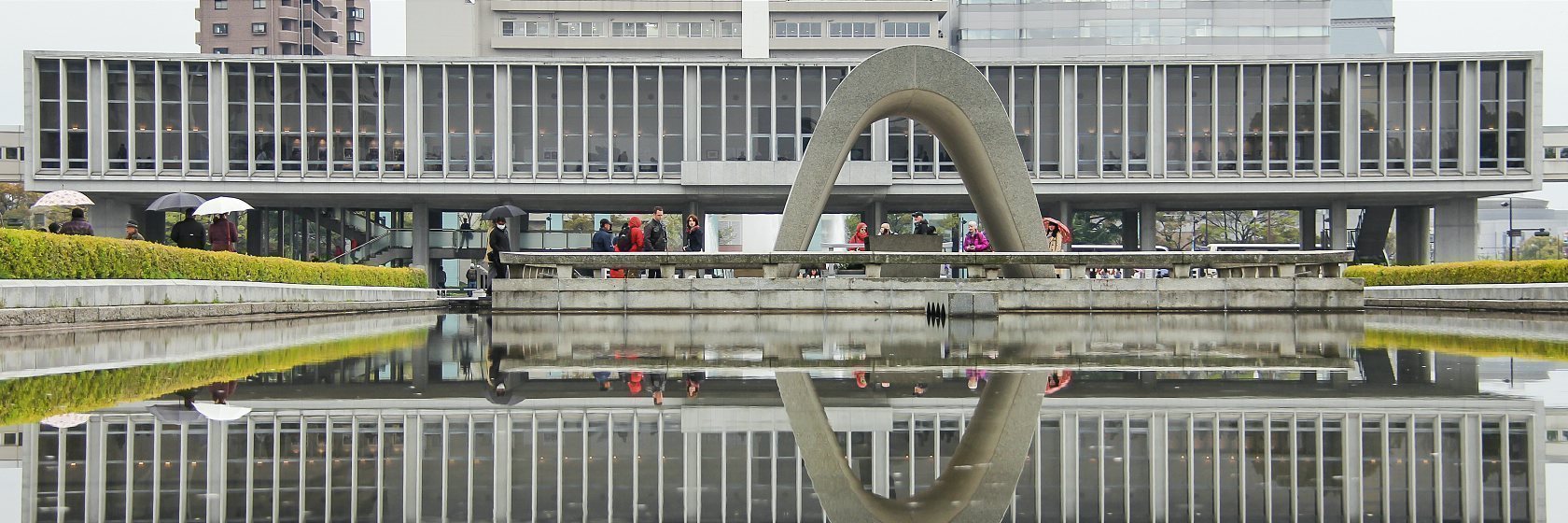
Hiroshima (�L��) is the principal city of the Chugoku Region and home to over a million inhabitants.
When the first atomic bomb was dropped over Hiroshima on August 6, 1945, the city became known worldwide for this unenviable distinction. The destructive power of the bomb was tremendous and obliterated nearly everything within a two kilometer radius.
After the war, great efforts were taken to rebuild the city. Predictions that the city would be uninhabitable proved false. Destroyed monuments of Hiroshima's historical heritage, like Hiroshima Castle and Shukkeien Garden , were reconstructed. In the center of the city a large park was built and given a name that would reflect the aspirations of the re-born city: Peace Memorial Park .
Top attractions in Hiroshima
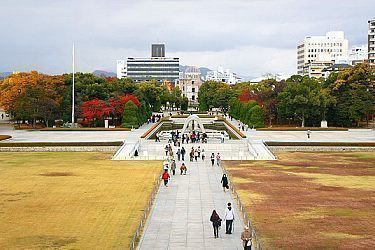
Hiroshima by interest

Getting there and around
Itinerary ideas.
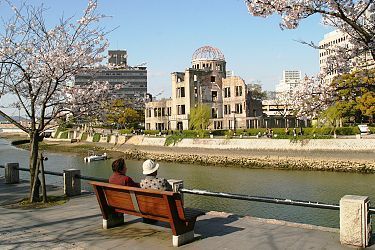
- Visit the peace park
- See Hiroshima Castle
- Stroll through a traditional garden
Questions? Ask in our forum .
Links and Resources
Hiroshima city, dive hiroshima, hotels around hiroshima.

Experiences around Hiroshima
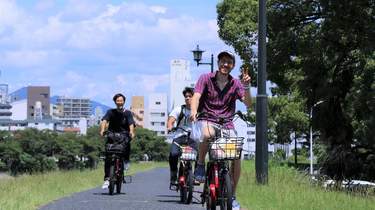
48 hours in Hiroshima

May 31, 2013 • 6 min read
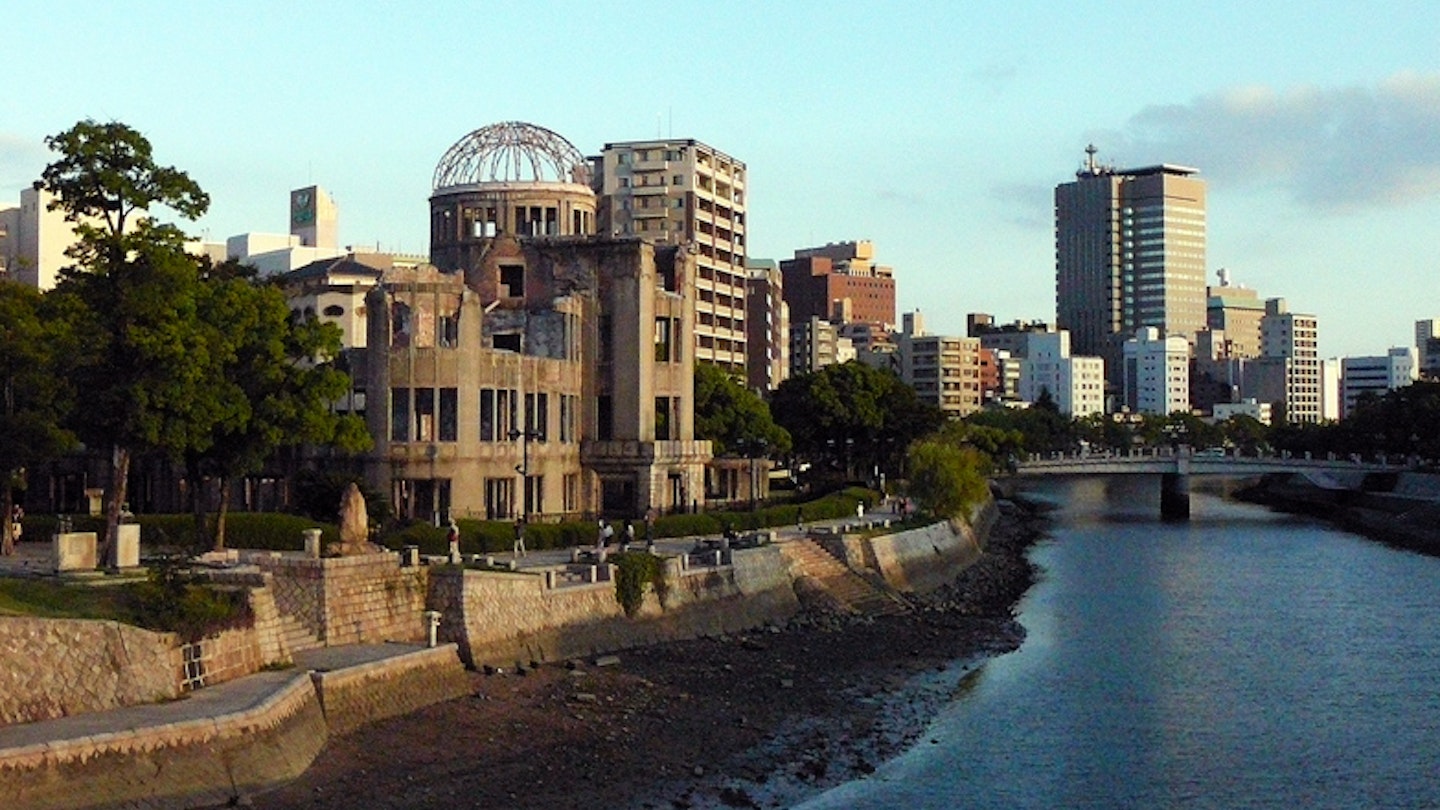
Friendly, picturesque and a paradise for foodies. This description might not spring to mind when you hear the word ' Hiroshima ', but word is starting to spread about this most surprising of Japanese cities. As the first city in history to suffer a nuclear attack, Hiroshima has a dark legacy but it harbours much more than ghosts of the past.
Time-pressed travellers visit the city on day trips (it takes 90 minutes from Osaka on the shinkansen) but staying for the weekend allows enough time to experience Hiroshima’s thriving food scene, a clutch of galleries and historic sights, and some of the wildest nightlife in Japan . Here's how to spend a weekend in Japan's most misunderstood city.

Day 1: understanding Hiroshima’s history
Morning: pay tribute at the A-bomb dome and memorials
The shell of the Atomic Bomb Dome ( Genbaku ) was one of very few structures left standing after the Allies bombed Hiroshima on 6 August 1945. In modern Hiroshima, locals have mixed feelings when they see a reminder of war dominating the river bank. But the dome's symbolism is complex: it certainly pays tribute to the lost and urges us not to forget the events of 6 August. But it also reminds onlookers of Hiroshima's dedication to eliminating nuclear weapons.
The iconic ruin is a natural place to start for visitors hoping to understand Hiroshima's past. From the dome, walk along the bank of the Ōta River to the Peace Memorial Park . The flame in the cenotaph is intended to burn until the last nuclear weapon has been destroyed. Further down the riverbank, allow some time to explore the Hiroshima National Peace Memorial Hall for the Atomic Bomb Victims . Prize-winning architect Kenzo Tange designed this underground monument to invite contemplation of peace. The rounded walls feel protective, and the fountain is intended as a symbolic offering of water for vicitims of the attacks.
Within four months of the Hiroshima bombing, up to 166,000 people had died of its effects. Understanding the scale of the attack can be confounding, so at Hiroshima's Peace Memorial Museum visitors are encouraged to explore individuals' stories. Volunteer guides, many of whom have personal connections to the bombing, explain the significance of each object on display - such as blistered roof tiles exposed to the bomb's heat rays. The museum is graphic in places: travellers with children should be cautious about exploring the reconstructions, which include visual depictions of radiation burns. Crucially, the museum is a focal point for Hiroshima’s tireless peace activism. Part of the exhibition displays engraved letters to world leaders from every one of Hiroshima’s mayors urging the abandonment of nuclear weapons. Witnessing how Hiroshima harnesses its association with tragedy towards the hope of a peaceful future is deeply affecting.

Afternoon: venture deeper into Hiroshima’s past
Few travellers can complete a visit to Hiroshima without being profoundly affected by the legacy of the bombing. But visiting only memorial sites does a disservice to today’s Hiroshima – as well as to the long history that came before. Step further back in time to a nobler era with a trip to Hiroshima-jo . The original castle (now faithfully rebuilt) was the seat of ‘Five Great Elders’, and the focal point of feudal squabbles for centuries. Visit in spring to enjoy a stroll around the gardens and to see the castle framed in cherry blossoms.
Evening: unwind with sport, shopping or cocktails
You won’t regret timing your trip for Hiroshima’s favourite pastime, baseball – check www.japanball.com to plan ahead. If balls aren’t flying, shop at the Hondōri arcade (shops stay open into the evening) before settling in at an izakaya (a cross between a casual eatery and a bar). Try Ninjo Ganko Yatai for a hearty okonomiyaki , an essential staple of the region. This savoury cake of batter, vegetables and noodles, fried to perfection and drizzled with sauce à la Jackson Pollock, will soak up the first of those cocktails as you bar-hop Hiroshima’s entertainment district (about a five-minute walk east from Hondōri). Get used to looking up as you walk the streets – a number of nightspots are on the upper floors and require a winding staircase or elevator ride to be found.
Day 2: island treasures and big-city pleasures
Morning: explore Miyajima Island
Catch an early ferry from Miyajimaguchi (25 minutes south of Hiroshima station) to Miyajima (the train ride and ferry trip are covered by JR Passes). Stay above deck for the short boat ride: you'll be able to glimpse vermillion torii (traditional Japanese gates at the entrance to a Shinto shrine) protruding from the navy-blue waters of the Inland Sea. On landing, turn right out of the ferry terminal and make your way along the water’s edge; you’ll soon stumble on the island’s famous residents, miniature deer. The deer totter along the harbourfront, nose into shopping bags and generally make an (adorable) nuisance of themselves, but try to resist getting too close (they’re wild animals after all). After a few minutes’ walk you’ll reach the stunning Itsukushima Shrine – its wave-lapped location reflects its dedication to the daughters of Susano-o no Mikoto, Shinto deity of storm and sea. Take some time to wander the scarlet-striped temple buildings (be prepared to slip off your shoes).
Lunch: succulent island oysters
There’s only one thing you should be eating: the famous local oysters, preferably still sizzling from the barbecue. Stop at Kaki-ya for some of the best but simply following your nose around Miyajimacho will steer you to a delicious lunch.

Afternoon onwards: culture and nightlife
Miyajima has plenty to detain you if you have a few days in the area – and we’re not just talking about the world’s largest rice scoop . But if you’ve patted your full belly, hop back on the ferry to explore Hiroshima’s cultural scene. The Museum of Art houses a modest collection of big-hitters (Monet, Picasso and the like), but the constantly changing exhibitions at Hiroshima City Museum of Contemporary Art are best for experiencing the thudding heart of the region’s art scene. Want something a little more leftfield? If you reserve ahead, you can enjoy the spectacle of Japan’s largest assembly line at the decidedly odd Mazda Museum .
It’s your last night in the city, so go out with a bang by scouring the lanes near Aioi-dori for a promising karaoke bar, or finish your night with some raucous rock music mayhem at Koba (if the bar staff offer to show you ‘Hiroshima Star Wars’, say yes). Tomorrow you’ll leave Hiroshima with a sore head, but happy memories.
Anita Isalska is an editor and writer based in Lonely Planet’s London office. Follow her on Twitter @lunarsynthesis .

For cultural treasures, pounding nightlife and where to fill your belly with sashimi, pick up a copy of Lonely Planet's Japan travel guide .
Dream of more adventures in one of Lonely Planet's expert-reviewed hotels and hostels in Hiroshima .
Explore related stories
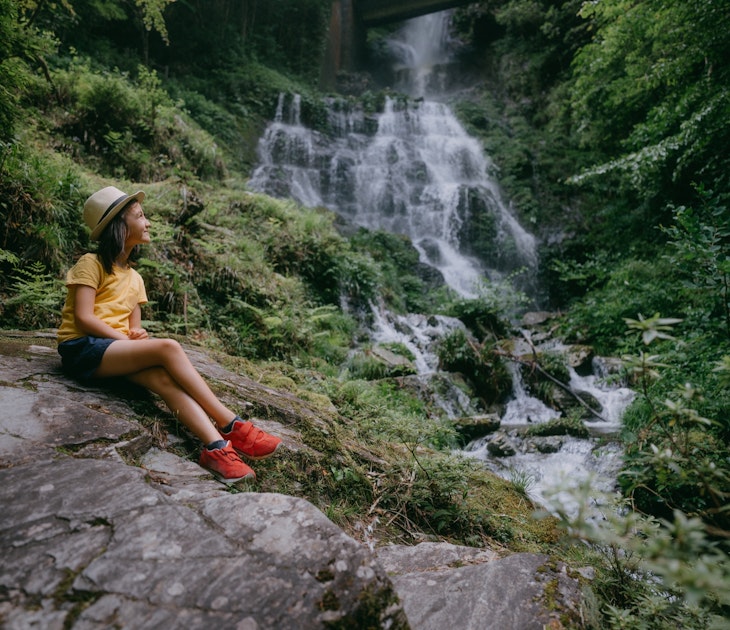
Jan 10, 2022 • 6 min read
Shikoku’s Kagawa prefecture is perfect for the traveler looking for something unique.
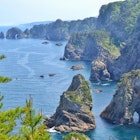
Sep 24, 2019 • 5 min read
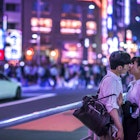
Jun 15, 2017 • 7 min read
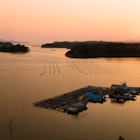
May 26, 2016 • 6 min read

May 1, 2024 • 9 min read

Apr 14, 2024 • 6 min read

Apr 2, 2024 • 10 min read

Mar 26, 2024 • 8 min read

Mar 25, 2024 • 6 min read

Mar 25, 2024 • 10 min read

Hiroshima Travel Guide
Last Updated: June 3, 2024
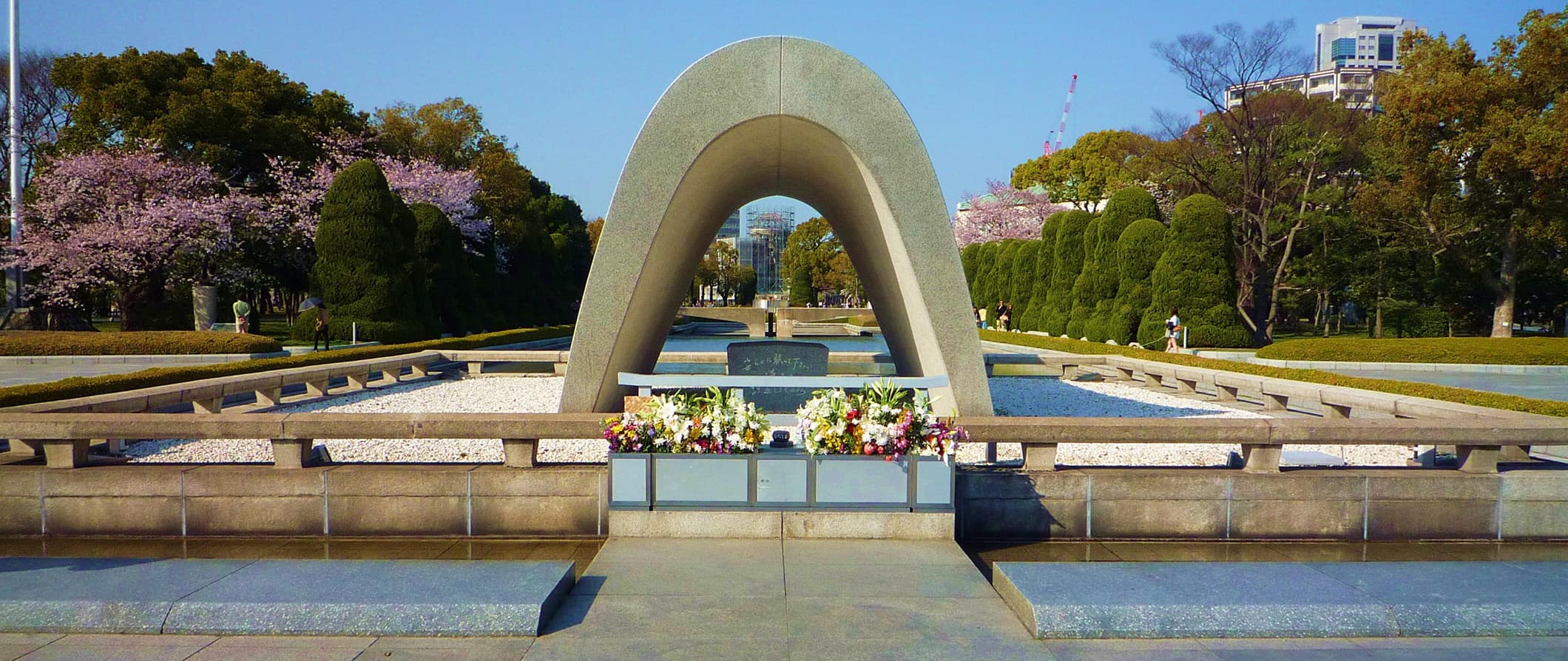
Despite this tragic moment in its history, Hiroshima today is a beautiful place. I really enjoyed my time exploring it, as there’s a lot to do here. From bars to museums to festivals to unique regional food, there’s a lot to fill a few days here. (That’s about all you need unless you really love the place!)
This travel guide to Hiroshima will help you plan your trip, save money, and make the most of your visit!
Table of Contents
- Things to See and Do
- Typical Costs
- Suggested Budget
- Money-Saving Tips
- Where to Stay
- How to Get Around
- How to Stay Safe
- Best Places to Book Your Trip
- Related Blogs on Hiroshima
Top 5 Things to See and Do in Hiroshima

1. Visit the Atomic Bomb Memorial Museum and Peace Park
Established in 1955, the museum depicts the history of Hiroshima before and after the atomic bomb was dropped in 1945. It also serves as a memorial to the over 140,000 people who lost their lives in the bombing. The museum has photos, artifacts, videos, and information about the effect the radiation has had on the population. It’s a very somber and sobering experience but one that should not be missed. Admission is 200 JPY.
2. Explore Miyajima Island
Miyajima is an island about an hour outside of Hiroshima that’s famous for its huge floating torii gate and shrine. If you plan to hike Mount Misen, expect to spend around 1.5-2 hours, depending on your level of fitness; there is also a cable car to the peak you can take for 2,000 JPY round-trip. Getting to the island from Hiroshima takes around 45-95 minutes depending on your method of travel. You can also take a full-day guided tour with JGA for around 12,000 JPY.
3. Wander around Hiroshima Castle
Although the original (which dated to the 1590s, was built primarily of wood, and was declared a national treasure in 1931) was destroyed by the atomic bomb, the reconstructed castle serves as a great opportunity to get to know Hiroshima’s history. The gardens are the best during the cherry blossoms in April. Admission to the castle is free, while access to the main keep is 370 JPY.
4. Relax in the Shukkeien Garden
This compact and beautifully landscaped Japanese garden is an ideal place to decompress from the atomic bomb sites. Established in 1620, it was once a private refuge for the emperor. It was opened to the public in 1940 and, after the war, was used to house refugees. Admission is 260 JPY.
5. Visit Onomichi
Located around 90 kilometers (56 miles) from town, Onomichi makes for a relaxing day trip from Hiroshima. Here you’ll find beaches, hot springs, temples, castles, and lots of green space. There is also a small mountain nearby (Mount Senkoji) that offers sweeping views over the city.
Other Things to See and Do in Hiroshima
1. enjoy the hiroshima museum of art.
Founded in 1978, this museum contains eight galleries. Half of the collection is by famous Western artists like Monet, Degas, and Renoir while the other half is by Japanese artists. There is a small garden and a café here as well (the latter has free Wi-Fi too). Admission is 600 JPY.
2. Visit the Bitchu Matsuyama Castle
Not only is this Japan’s highest castle but it’s also one of its only remaining original ones. It was originally built on a nearby mountain in 1240 by Akiba Shigenobu. In 1929, restoration work began, and it is now a popular tourist site. Fun fact: the official “lord” of the castle is a stray cat found to be living there. Admission is 500 JPY for just the castle or 1,000 JPY for the castle, temple, and nearby samurai houses. If you’d like to visit the Takahashi Folk Museum and Yamada Hokoku Museum, the entire combined ticket costs 1,500 JPY.
3. Attend the Oyster Festival
If you’re passing through Hiroshima in February, make sure to check out this fun event on Miyajima Island. It basically celebrates how awesome oysters are, so if you like them, you need to go! There are tons of kinds to try, all of which are freshly caught. The festival is free to attend, and during it, you can enjoy oysters at a huge discount. Expect to pay 100-200 JPY per dish.
4. See the Mazda Museum
Mazda’s corporate headquarters are a short distance outside of Hiroshima. If you like to geek out over cars, its tour is a cool thing to do. The English version isn’t very detailed, but it’s nevertheless a fun experience. You’ll get a look at some concept vehicles as well. If you have a lot of serious technical questions, try taking the Japanese tour and bring along your own interpreter. The tour is free but must be reserved in advance.
5. Get active in Chuo Park
This green expanse in the middle of Hiroshima is home to Hiroshima Castle, Gokoku Shrine, a few museums, and walking and running paths. Often there are football, soccer, and even frisbee games going on, and it’s a great place for a picnic if the weather is nice. In the spring, it’s also where you’ll find some of the famous cherry blossoms. Bring a book, pack a lunch, and spend some time here relaxing, people-watching, and taking in the goings-on.
6. Attend the Flower Festival
Another major annual event in Hiroshima, this festival occurs during the first weekend of May. There is an array of performances, ranging from Japanese pop bands and jazz combos to comedians and traditional musicians from Okinawa. There’s a huge carnival, food vendors, and novelty craft stalls, as well as a large display and vigil in Peace Park. The festival has a very lively, Carnival-esque atmosphere. Admission is free.
7. Tour the Hiroshima Manga Library
If you’re into manga, this is the place to be. While the vast majority of the 130,000 in the collection is in Japanese, there is a selection in English as well. You’ll also find all sorts of rare and vintage works here too. Opened in 1998, the library also holds regular events such as presentations, talks, and temporary displays. Admission is free.
8. Visit Fudoin Temple
The origins of a temple in this location date back to the eighth century, though the current one is from the 14th century. The temple is actually one of the few buildings in the area to have survived the atomic blast and is registered as an “Important Cultural Property.” It has the standard red lacquered pagoda, but there are some interesting statues and shrines at the back, including a red torii gate and a fox shrine. The serene grounds offer a nice place to stroll, but be respectful and give worshippers their space.
9. Attend the Sake Festival
The suburb of Saijo is famous for its sake breweries (it’s one of the most famous brewery districts in the country), and in October it hosts an annual boozy blowout. For the price of entry, attendees can drink their fill of sake from the local breweries, as well as over 900 varieties from all over the country. Outside the festival area, tours of breweries are also available, with wood sake cups as souvenirs. There are also traditional performances, live music, presentations, talks, and lots of partying. Tickets are 2,100 JPY (or 1,600 JPY in advance).
10. Climb Mount Haigamine
This mountain overlooking Hiroshima is a popular place to come at night to take in the view. You’ll get a sweeping panorama of the surrounding landscape, making it a great spot for taking photos and relaxing after a day of exploring. It takes about 90 minutes to climb, so be sure to do so while the sun is still up. There is also a small parking lot should you wish to drive up.
11. Take a walking or bike tour
Walking and bike tours are my favorite way to get to know a new place. You gain perspective and insights from a local guide, meet other travelers, and learn a ton about a new place in the process! While there are currently no free tours offered in Hiroshima, you can take a cycling tour with Attractive JAPAN focused on the bombed heritage sites or a customized guided walking tour with Lokafy .
For more information on other cities in Japan, check out these guides:
- Kyoto Travel Guide
- Tokyo Travel Guide
Hiroshima Travel Costs
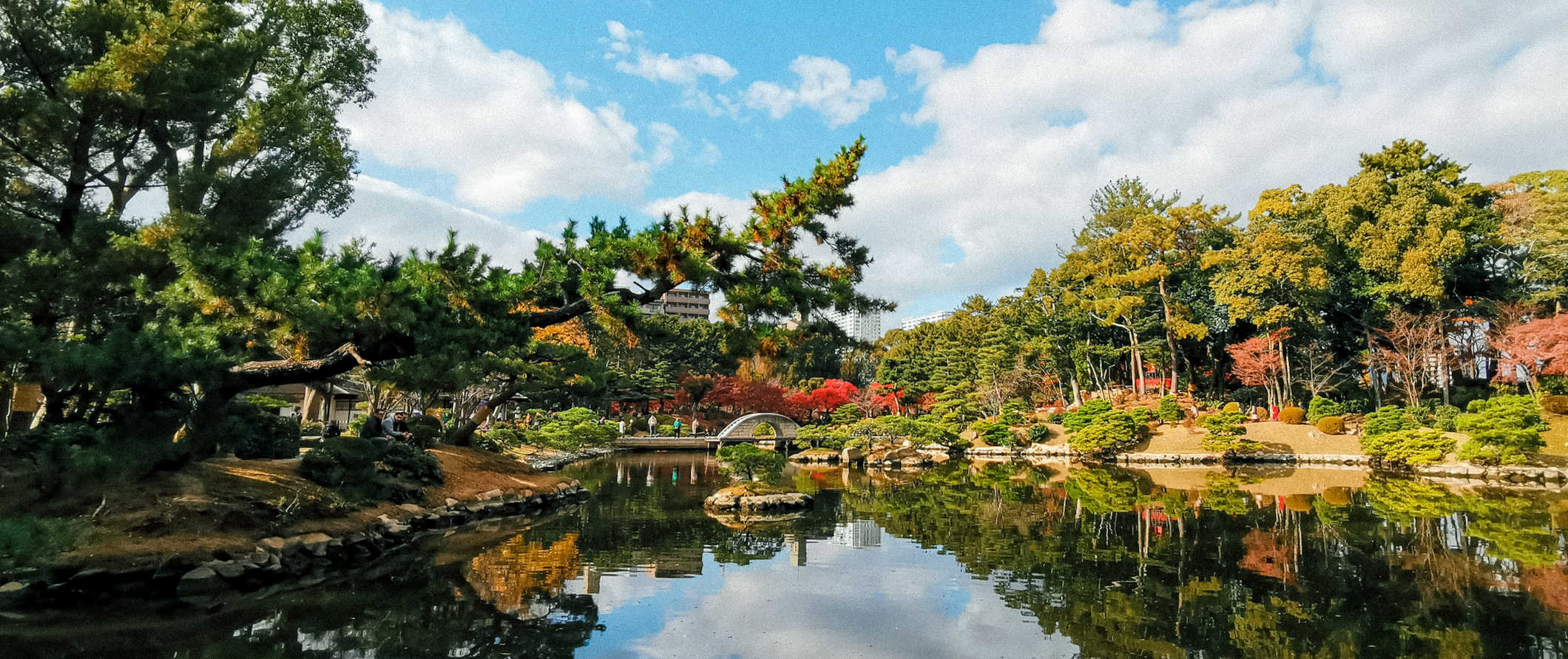
Hostels – Most hostels in Hiroshima charge 3,000-5,000 JPY per night for a dorm bed (regardless of size). For a private room with a twin or double bed, expect to pay 9,000-12,000 JPY per night. Prices are about the same year-round, though they rise during special events and rooms fill up quickly.
Free Wi-Fi is standard, as are lockers and self-catering facilities if you want to cook your own meals. Most hostels in Hiroshima have modern, pod-style beds with outlets, reading lights, and privacy curtains.
Budget hotels – Capsule hotels start at 2,500 JPY for a tiny pod that is essentially just a bed. It’s not fancy, but it’s a unique (and very Japanese) experience. If you’re looking for a regular budget hotel, expect to pay around 5,500 JPY for a double room at a two-star hotel with standard amenities like free Wi-Fi and TV.
Airbnb is heavily regulated in Japan and, as such, there aren’t too many options, mostly hotels and guesthouses. A private apartment or home usually rents for 20,000 JPY per night at a minimum, while a private room is at least 12,000-14,000 JPY.
Food – Japanese cuisine is world-renowned and has even earned a spot on UNESCO’s Intangible Heritage List. While each region has its own specialties, rice, noodles, seafood, and seasonal produce all feature heavily no matter where you are.
Food in Japan is relatively inexpensive so long as it’s not imported (fresh fruit will set your budget back!). The most common cheap eats include curry, donburi (bowls of meat and rice), and ramen. Curry and donburi bowls cost 500-700 JPY, while ramen or soba noodles are usually around 1,200 JPY.
In Hiroshima, oysters are a specialty, and over two-thirds of Japan’s harvest comes from here. Try the local hot pot dish known as kaki no dotenabe , which features oysters simmered in an earthenware pot. Some restaurants also serve a set meal of grilled oysters, breaded and fried oysters, and pickled oysters for about 2,500 JPY.
Hiroshima is also known for its own version of okonomiyaki (a meat dish with soba or udon noodles), which costs about 1,200-1,700 JPY per course.
There are also many cheap places to eat out in Hiroshima. Head to the Okonomi Village, a massive food hall with three floors of street food, including traditional Japanese pancakes, soba noodles, ramen, pizza, and oyster dishes for 800-1,500 JPY.
If you are on a tight budget, 7-Eleven can be your go-to “restaurant.” You can also find plenty of cheap meals and prepackaged items there (that the locals actually eat!). Noodles, rice balls, tofu, and prepackaged sushi are all available for only 250-500 JPY. Fast food (think McDonald’s) is around 800 JPY for a combo.
Midrange restaurants cost around 2,000-3,000 JPY per person for three-course meals. Sushi conveyor-belt restaurants (which are super fun) charge 150-620 JPY per piece.
High-end omakase restaurants will set you back at least 10,000 JPY, though most are closer to 20,000 JPY.
Domestic beer is around 450-550 JPY, and sake is around 800-900 JPY. Cocktails cost about 1,200 JPY. A latte or cappuccino is 500-600 JPY; a bottle of water is 100-130 JPY.
Buying groceries costs 4,500-6,000 JPY per week for basic staples like rice, vegetables, and fish. Just be sure to wash all your produce well. Japan uses a lot of chemicals on its produce, as there is not much arable land in the country and agricultural practices rely on peak productivity (hence pesticides).
Backpacking Hiroshima: Suggested Budgets
If you’re backpacking Japan, budget around 15,000 JPY per day. On this budget, you’re staying in a hostel dorm, cooking all of your meals, eating at the cheap 100-yen shops, visiting free museums and temples, skipping drinks, and using public transportation to get around. (If you plan on drinking, add another 500-1,500 JPY per day to your budget.)
On a midrange budget of 28,000 JPY per day, you can stay in budget hotels or private hostel rooms, eat out for some meals, enjoy a few drinks, visit more attractions (like the castle and the atomic bomb memorial), rent a bike, and just have some more breathing room in your travels.
On a “luxury” budget of 75,000 JPY per day or more, you can stay in traditional Japanese accommodations or hotels, eat wherever you want, enjoy drinks as often as you want, take paid tours and taxis, and overall just have a more comfortable trip. This is just the ground floor for luxury though — the sky’s the limit!
Hiroshima Travel Guide: Money-Saving Tips
Japan isn’t a super cheap destination and Hiroshima is no exception. But there are plenty of ways to save money. Japan does an excellent job of keeping itself affordable. Here are some money-saving tips for Hiroshima:
- Get the Hiroshima Tourist Pass – If you plan on using a lot of public transportation, get this pass. There are three versions: one for the city, one for the nearby areas, and one for the entire prefecture. Prices range from 1,000 to 2,000 JPY (for 24-72-hour passes) per person, covering buses, trams, and the metro. It also comes with a small guidebook to ensure you see all the best sights the area has to offer.
- Get a JR Pass – Chances are you’ll be arriving in Hiroshima by train. If that’s the case, consider buying a Japan Rail Pass . These provide unlimited train travel and can save you a ton of money if you’re going to be visiting other cities in addition to Hiroshima. It comes in 7-, 14-, and 21-day versions. You can buy the pass at a limited number of places within Japan, but it’s cheaper to purchase online ahead of time!
- Shop at the 100-yen stores – There are many 100-yen shops (like dollar stores) in Hiroshima, with meal sets, groceries, drinks, toiletries, and household items. Store names vary by region, so ask your hotel or hostel reception where the nearest “Hyaku En” shop is.
- Eat at 7-Eleven – 7-Eleven, Family Mart, and other convenience stores have a lot of prepackaged meal sets (including sandwiches, soups, fruit, and more traditional Japanese items) that make for a cheap lunch option. Additionally, supermarkets also have many such meals at similar prices.
- Cook your own meals – Almost every hostel here has a kitchen where you can cook your own food and cut your expenses. Combining this with shopping at the 100-yen stores can drastically reduce your food costs.
- Eat curry, ramen, and donburi – I essentially lived off these three foods during my time in Japan — and you can do the same in Hiroshima. These are the best ways to eat cheap, filling meals.
- Buy food at night – After 8pm, most supermarkets discount their fresh food, as they have to get rid of it. If you buy your food after 8pm, you can save 10-20% on prepared meals and certain fresh foods.
- Bring a water bottle – The tap water here is safe to drink, so bring a reusable water bottle to save money and reduce your plastic use. LifeStraw makes reusable bottles with a built-in filter, so you always know your water is clean and safe.
- Work for your room – Many hostels in Japan often let you work for your room. You’ll spend time in the morning cleaning and get free accommodation for as long as they’ll let you stay. This is a great way to save money if you want to stay in the same area for a while.
- Stay with a local – Using hospitality sites like Couchsurfing allows you to stay with locals, so you not only get a free place to stay but you get to interact with residents and learn about their life. Make sure you ask far in advance as the response rate is not great there. Try asking in Facebook groups too. You might have luck finding a host there.
Where to Stay in Hiroshima
Hiroshima has a few hostels, and they’re all pretty comfortable and sociable. These are my suggested and recommended places to stay in Hiroshima:
- Roku Hostel Hiroshima
- Guesthouse Akicafe Inn
- Santiago Guest House Hiroshima
- J-Hoppers Hiroshima Guesthouse
How to Get Around Hiroshima
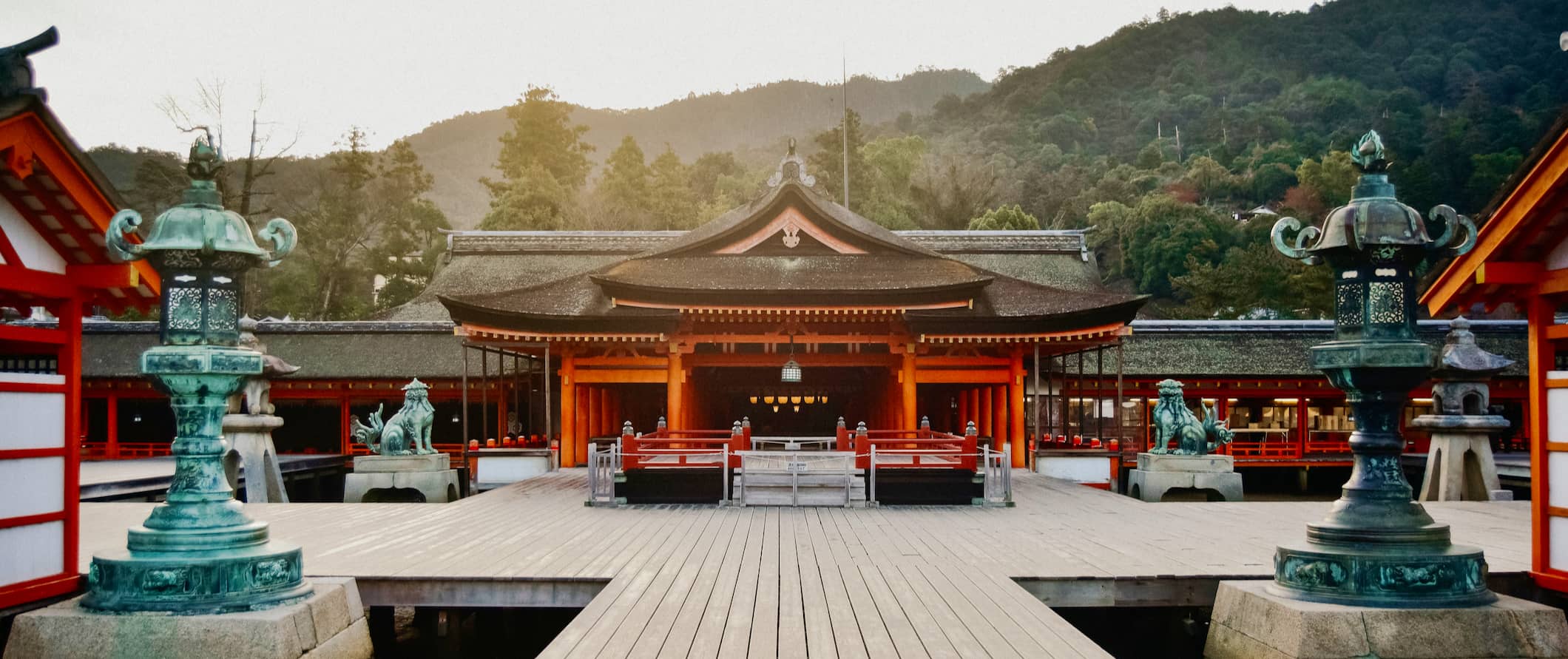
Public transportation – Buses and trams are the most common forms of public transportation in Hiroshima. There are two major bus companies and six tram lines that cover the entire city, making it easy to get around. Prices vary depending on how far you’re going, but expect to pay 220 JPY per ride on the tram. You can also get a one-day unlimited tram pass for 700 JPY.
Hiroshima sightseeing loop buses, called meipuru-pu , go to all the major attractions. Without a rail pass, these cost 200 JPY per ride (330 JPY for the blue line) or 400 JPY for a one-day pass.
They also offer a tourist pass if you plan on using a lot of public transportation. There are one-, two-, and three-day options for 1,000-2000 JPY.
Hiroshima has a single-line metro system called the Astram Line. It has 22 stations and operates from 5:30am to midnight. Prices vary depending on your journey, but tickets start at 190 JPY per person. It’s clean, safe, and reliable (like all public transportation in Japan).
Bicycle – Hiroshima is quite easy to get around by bicycle, and you can rent a bike for the day for around 2,000 JPY (2,500 JPY for an e-bike). You can also get a one-day pass for the Hiroshima bike-share system for around 1,500 JPY. Just remember that traffic here drives on the left!
Taxi – Taxis aren’t cheap, so I would avoid them as much as possible. Rates start at 620 JPY and go up by 280 JPY per kilometer. Stick to public transportation if you can.
Ridesharing – Didi is the main ridesharing app, though Uber does operate as well. Prices are similar to taxis, so you won’t really save any money this way.
Car rental – If you have an International Driving Permit (IDP) before you arrive, you can rent a car. Expect to pay around 6,500 JPY per day. Just keep in mind that you’ll be driving on the left. But unless you have a specific need for a car, I would stick to public transportation and trains (which are usually much faster than cars).
When to Go to Hiroshima
The most popular time to visit Hiroshima is in the summer; however, it can get quite warm. Temperatures in June-August are over 30°C (86°F), and it’s rather humid. Even September is quite warm as well, so be prepared for the heat. Rain is common from mid-June to mid-July, though not every day or in any quantity that will impact your travels.
The shoulder seasons are probably the best time to visit Hiroshima. April-May and October-November see cooler temperatures and only a little bit of rain. Late March to early April is cherry blossom season, so expect massive crowds and be sure to book ahead!
While the winter in Hiroshima is cold, it is hardly unbearable. Temperatures usually hover around 10°C (50°F) during the day and drop down to around 1°C (34°F) at night. Snow is common, but it usually melts not long after it falls. The city is much quieter during this time as well.
How to Stay Safe in Hiroshima
Japan is a notoriously safe country. Even in a large city like Hiroshima, there’s virtually zero chance you’re going to get robbed, scammed, or hurt. You’re going to be very safe here! That being said, it never hurts to stay vigilant and keep your valuables secure and out of reach.
As a solo female traveler, you may have to watch out for lewd behavior here and there. Some female travelers have reported inappropriate behavior, such as men asking personal questions or catcalling, and groping on trains. It’s rare, but it does occur from time to time, so stay vigilant. And as always, the standard precautions apply (never leave your drink unattended at the bar, never walk home alone intoxicated, etc.).
Most train companies now have “women-only” cars during rush hour — you’ll see pink signs indicating where women should board.
Scams in Japan are virtually nonexistent; however, if you’re worried about getting ripped off, you can read about common travel scams to avoid .
Japan’s emergency number is 110 or you can call the non-emergency Japan Helpline at 0570-000-911 should you need assistance.
The most important piece of advice I can offer is to purchase good travel insurance. Travel insurance protects you against illness, injury, theft, and cancelations. It’s comprehensive protection in case anything goes wrong. I never go on a trip without it, as I’ve had to use it many times in the past. You can use the widget below to find the policy right for you:
Hiroshima Travel Guide: The Best Booking Resources
These are my favorite companies to use when I travel. They consistently have the best deals, offer world-class customer service and great value, and overall, are better than their competitors. They are the companies I use the most and are always the starting point in my search for travel deals.
- Skyscanner – Skyscanner is my favorite flight search engine. They search small websites and budget airlines that larger search sites tend to miss. They are hands down the number one place to start.
- Hostelworld – This is the best hostel accommodation site out there with the largest inventory, best search interface, and widest availability.
- Agoda – Other than Hostelworld, Agoda is the best hotel accommodation site for Asia.
- Booking.com – The best all around booking site that constantly provides the cheapest and lowest rates. They have the widest selection of budget accommodation. In all my tests, they’ve always had the cheapest rates out of all the booking websites.
- Get Your Guide – Get Your Guide is a huge online marketplace for tours and excursions. They have tons of tour options available in cities all around the world, including everything from cooking classes, walking tours, street art lessons, and more!
- SafetyWing – Safety Wing offers convenient and affordable plans tailored to digital nomads and long-term travelers. They have cheap monthly plans, great customer service, and an easy-to-use claims process that makes it perfect for those on the road.
- LifeStraw – My go-to company for reusable water bottles with built-in filters so you can ensure your drinking water is always clean and safe.
- Unbound Merino – They make lightweight, durable, easy-to-clean travel clothing.
- Japan Rail Pass – This is a flexible transportation pass used for navigating Japan. Similar to the Eurail pass in Europe, it turns expensive bullet trains into budget-friendly modes of transportation. You honestly can’t visit Japan without one.
Hiroshima Travel Guide: Related Articles
Want more info? Check out all the articles I’ve written on backpacking/traveling Japan and continue planning your trip:
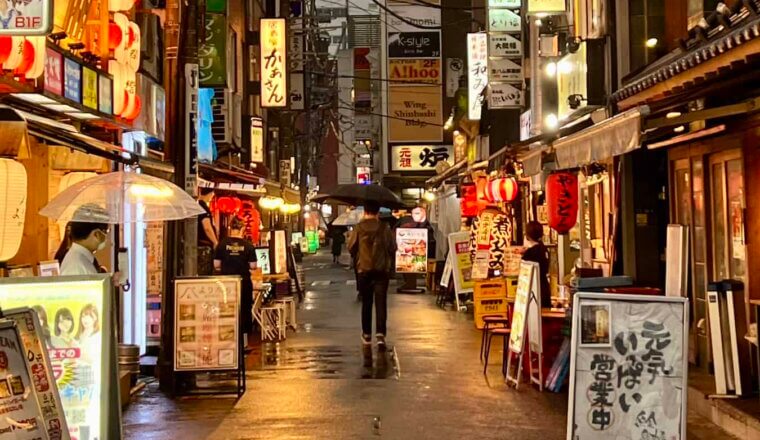
How to Spend Your Time in Tokyo: A Suggested Itinerary
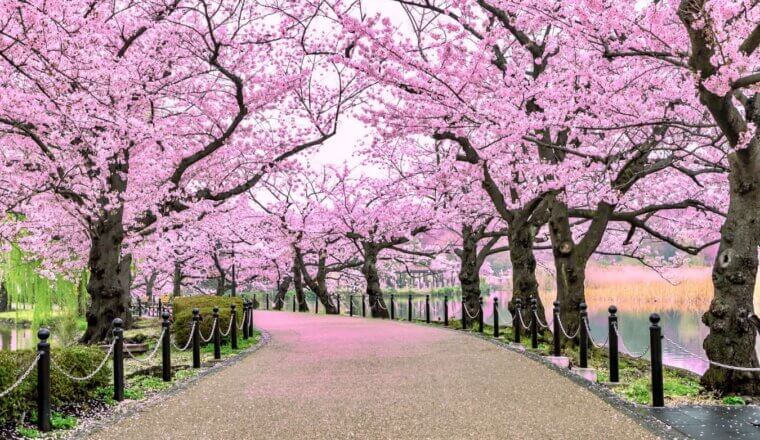
The Perfect 7-Day Japan Itinerary for First-Time Visitors
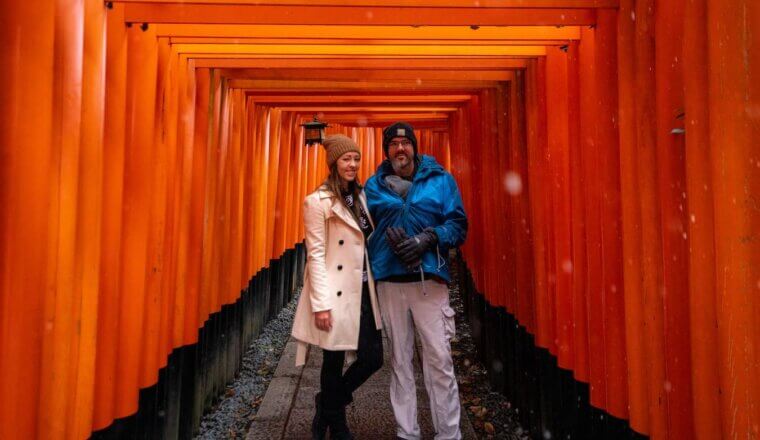
How to Travel Japan with a Baby
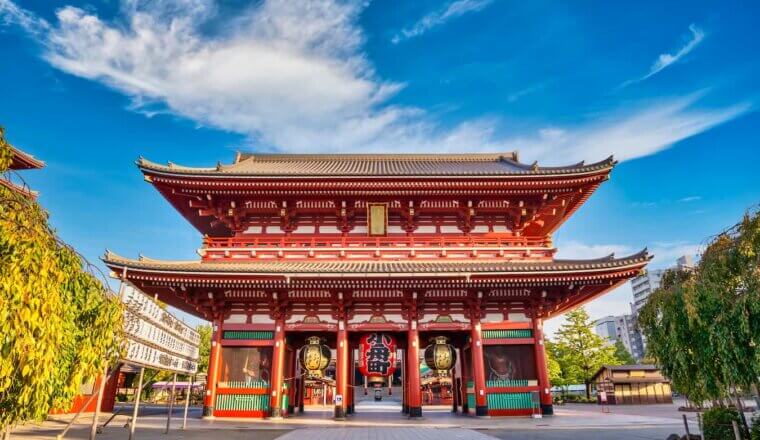
Where to Stay in Tokyo: The Best Neighborhoods for Your Visit
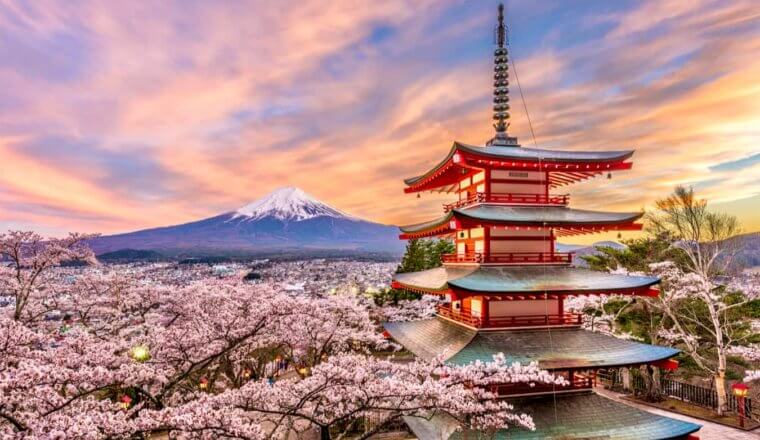
The Ultimate Japan Itinerary for First-Timers: From 1 to 3 Weeks
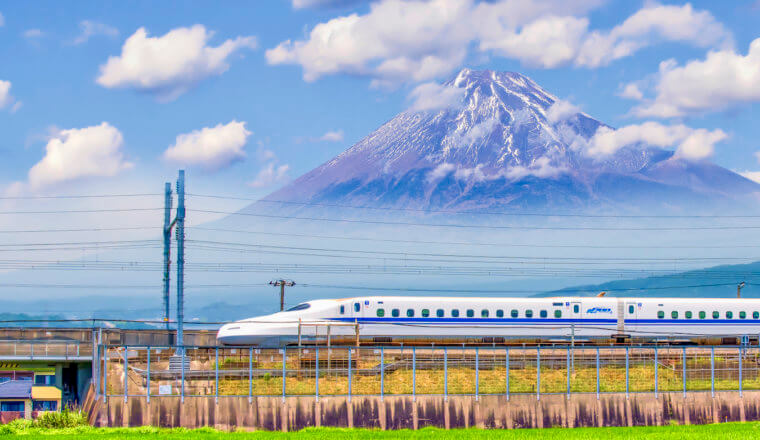
A Complete Guide to the Japan Rail Pass
Get your free travel starter kit.
Enter your email and get planning cheatsheets including a step by step checklist, packing list, tips cheat sheet, and more so you can plan like a pro!

- Where To Stay
- Transportation
- Booking Resources
- Related Blogs

2 Days in Hiroshima, Japan: The Perfect Hiroshima Itinerary
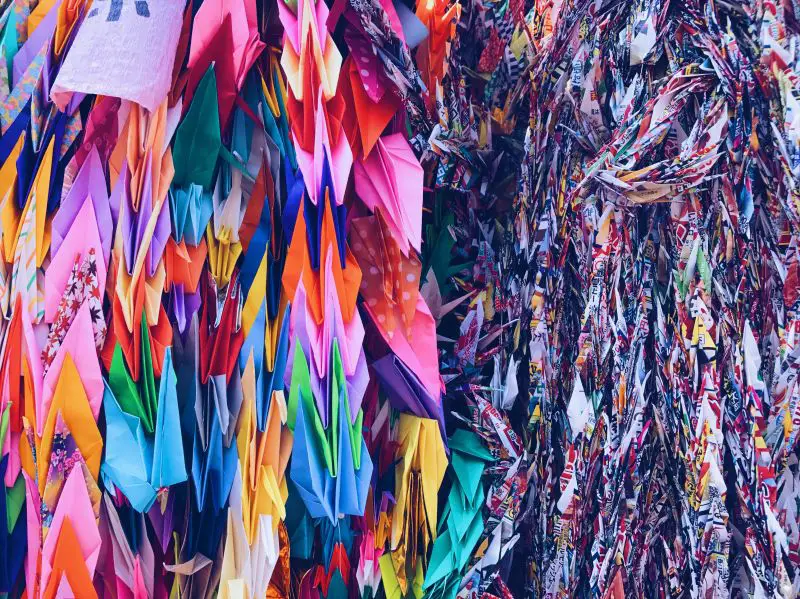
Hiroshima is a popular destination to visit in Japan.
As the capital of the Hiroshima Prefecture, Hiroshima (広島市) attracts many visitors due to its tragic history on August 6, 1945. It was the first city to get hit with an atomic bomb by the United States.
Now, it’s a thriving modern city and continues its humanitarian efforts with promoting world peace and not having nuclear weapons.
Since there are many things to do in Hiroshima, we suggest that you spend 2 days in Hiroshima .
This Hiroshima 2 days itinerary is the perfect amount of time to see the top Hiroshima sights and not feel rushed during your vacation. We know how easy it can get to feel burned out from a vacation from doing too many activities.
Continue reading to read our insider travel tips and how to maximize your time with these top places to visit in Hiroshima.
Click on the links below to jump to certain sections of this Hiroshima 2 day itinerary.
- Itinerary Day 1: Hiroshima Tourist Spots
- Itinerary Day 2: Miyajima Day Trip
- Itinerary Day 3: Other Places to Visit
- Travel Requirements
- Transportation Options – How to Travel to Hiroshima

How to Travel Around Hiroshima
- What to Eat in Hiroshima
Where to Stay in Hiroshima
Need ideas on other places to visit in Japan? Check out our posts below for more inspiration:
- Unique things to do in Tokyo
- Fun Tokyo day trips by train
*Disclaimer: Headed to Hiroshima, Japan? This post contains affiliate links. If you click on them and make a purchase, we receive a small commission. There is no additional cost to you. Appreciate the support.
Hiroshima Map
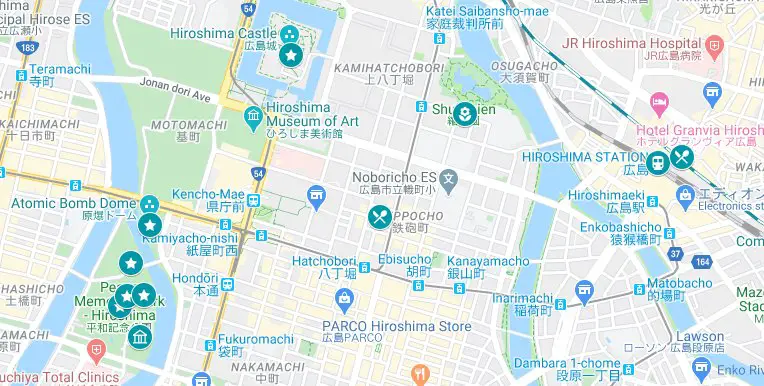
Click on the image to see a larger map of the top places to visit in Hiroshima on your Hiroshima itinerary. Credit: Map data: Google
Hiroshima Itinerary Day 1: Hiroshima Peace Memorial Park & Other Hiroshima Tourist Spots
Before starting your Hiroshima trip, we suggest that you purchase a SIM card for your phone or rent a pocket wifi device so you can access data at any time. These can be picked up at the airport.
On your first day in Hiroshima, we’re headed to the Hiroshima Memorial Peace Park to see sights such as the Atomic Bomb Dome and will also visit other sites such as Hiroshima Castle and Shukkeien Garden. This will be a packed day filled with learning. You can easily see these sites yourself.
If you prefer a tour of Hiroshima, book this one day tour here or customize your own tour here.
- Hiroshima Day Tour
- Customize Your Own Hiroshima Day Tour
- Cycling Tour of the Peace Memorial Area
Hiroshima Peace Memorial Park
Located in the center of the city and between the Honkawa and Motoyasu River is the Hiroshima Peace Memorial Park. The area has many memorials and monuments to highlight the bombing on August 6, 1945.
We’ll share more in detail about the must-see attractions below.
Most of the attractions are free to visit, so it’s great for those on a budget . These places are available to visit at any time of the day.
Address: 1丁目-1-10 Nakajimacho, Naka Ward, Hiroshima, 730-0811, Japan (〒730-0811 広島県広島市中区中島町1丁目1−10)
Opening Hours: 24 hours
Atomic Bomb Dome (A-Bomb Dome)
A trip to this city will not be complete without seeing the Atomic Bomb Dome (原爆ドーム). It’s a UNESCO World Heritage site for its Outstanding Universal Value .
This former Hiroshima Prefectural Industrial Promotion Hall sustained a lot of damage as it was 160 meters (525 feet) from the hypocenter of the atomic bomb.
The building still retained its dome shape and had some parts of the wall and the iron infrastructure still standing after the blast.
When you visit this place, please be respectful.
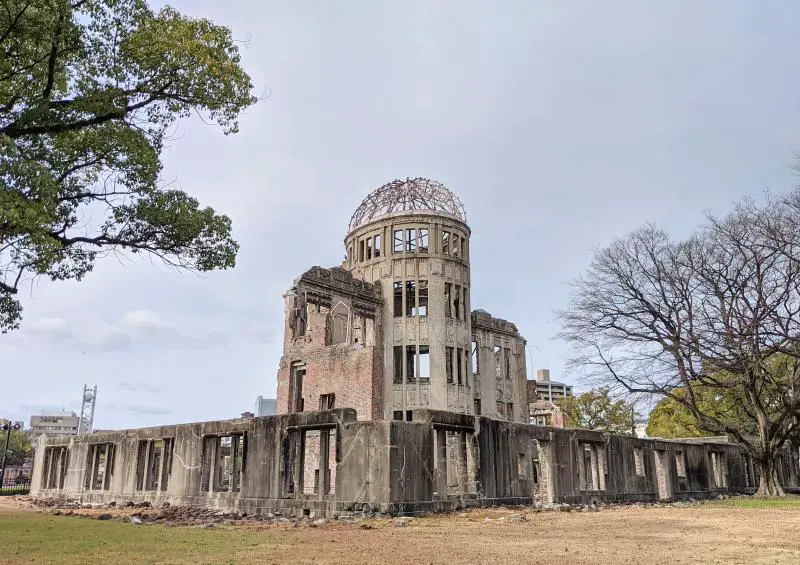
Visiting the Atomic Bomb Dome is one of the top things to do in Hiroshima on your Hiroshima itinerary.
Address: 1-10 Otemachi, Naka Ward, Hiroshima, 730-0051, Japan (〒730-0051 広島県広島市中区大手町1−10)
Children’s Peace Monument
One of our favorite spots in the Hiroshima Peace Park is the Children’s Peace Monument (原爆の子の像). This memorial is dedicated to the children who passed away from the atomic bombing.
It was inspired by the story of Sadako Sasaki , a girl who was exposed to radiation at age 2 and passed away from leukemia at age 12. Her story is documented in the “Sadako and the Thousand Paper Cranes” novel by Eleanor Coerr. Sadako folded 1,000 origami paper cranes so she can get better.
While the book says that Sadako didn’t reach her goal, the Hiroshima Peace Memorial Museum (mentioned below) said that Sadako exceeded her goal.
There is a 9 meters (29.5 feet) statue with a girl holding an origami paper. The center of the statue is an opportunity for visitors to ring the bell.
As you walk around the monument area, you’ll see children’s artwork encouraging world peace and lots of origami paper cranes. It’s a great reminder to everyone that war is not the answer and that everyone can get along.
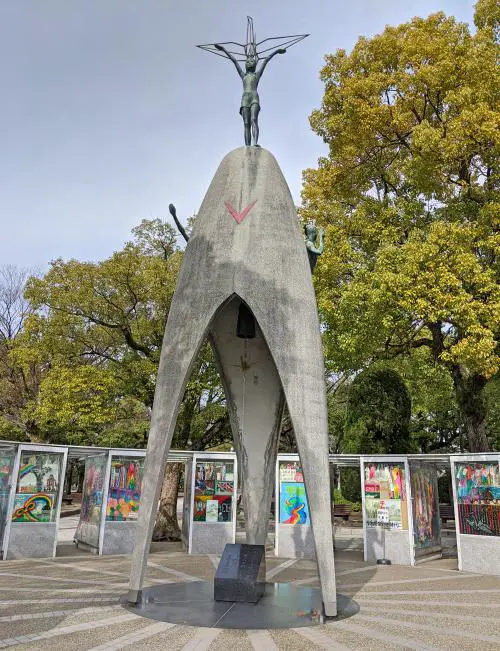
Visiting the Children’s Peace Monument is a popular site to pay respects to the children who passed from the atomic bomb and also see children’s artwork of world peace.
Address: 1 Nakajimacho, Naka Ward, Hiroshima, 730-0811, Japan (〒730-0811 広島県広島市中区中島町1)
Cenotaph for the A-Bomb Victims
This Memorial Cenotaph is dedicated to all atomic bomb victims. Their names are inside the central stone vault regardless of nationality.
You’ll recognize this memorial as it’s a white curve sculpture, and located towards the end of the Pond of Peace. Many visitors come here to pay respects to those who passed away.
On the other side of the Pond of Peace is the Flame of Peace . Since Hiroshima is the city to espouse peace, this flame will burn until all nuclear bombs have been abolished . The flame has been lit since August 1, 1964.
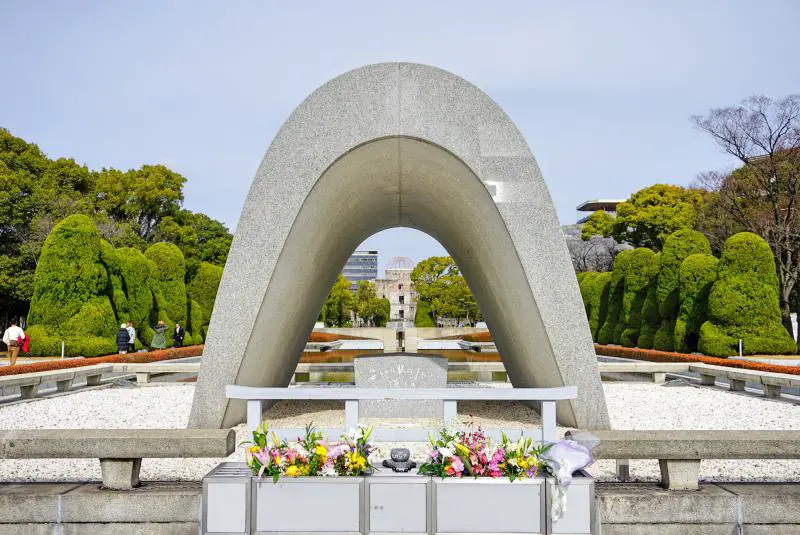
Pay your respects to those who passed from the atomic bomb incident.
Address: Between Children’s Peace Monument and Hiroshima Peace Memorial Museum
Hiroshima Peace Memorial Museum
To understand the history of the atomic bombing and what brought the incident, everyone must visit the Hiroshima Peace Memorial Museum (広島平和記念資料館) during their 2 days in Hiroshima itinerary.
We enjoyed the museum and spent over 2 hours reading through the material and learning about the history . If you have children, you may want to reconsider bringing them since the materials may be too traumatic for them.
Start by watching a video of victims’ stories and the aftermath of the bombing on the first floor. The video is offered several times a day with English translation.
Afterward, head to the various levels to read more victims’ stories, watch videos of their stories, and see artifacts from the day of the bombing.
You can also read more about the uranium bomb, also called “Fat Boy,” how it was created by the Americans, and why it was used on Japan.
Considering that the Americans used this weapon, the museum kept its information neutral and didn’t blame the Americans for the bombing incident. The Japanese learned from the overuse of government power and changed the country afterward.
The best thing to take away from the museum is that Hiroshima City doesn’t want another city to experience nuclear warfare like what they endured ever again .
The city continues to advocate peace and wants all countries to not have nuclear weapons anymore. If everyone in the world visited this museum, we think global wars and the use of weapons will stop.
Tip: The museum offers free day lockers to use. Store your backpacks and other things you don’t need to carry. You’ll receive your 100 yen ($.90) deposit back when you return the locker key.
Note: If you’re interested in reading more about the atomic bomb, head to Nagasaki on Kyushu island.
Nagasaki was the second location where another bombing occurred on August 9, 1945. They also have an Atomic Bomb Museum which highlights Hiroshima’s bombing incident.
Address: 1-2 Nakajimacho, Naka Ward, Hiroshima, 730-0811, Japan (〒730-0811 広島県広島市中区中島町1−2)
Opening Hours: 8:30am-6:00pm (March-July and September-November), 8:30am-7:00pm (August), 8:30am-5:00pm (December-February)
Admission Cost: 200 yen ($1.40 USD) adults, 100 yen ($.70) high school students, free children to junior high students; rental fee for audio guide is 400 yen ($2.80)
Hiroshima National Peace Memorial Hall
Located next to the Peace Memorial Museum is the Hiroshima National Peace Memorial Hall (国立広島原爆死没者追悼平和祈念館). This memorial is a place to give remembrance to the atomic bomb victims.
The Hall of Remembrance room has over 140,000 tiles with the number of bomb victims in the Hiroshima City area . The beige walls with the silhouette of the city in the background provide a peaceful yet somber ambiance. Please pay your respects by entering this room.
Other areas of the memorial include seeing photos of the bomb victims and reading more about them on computer screens and also listening to stories and videos from bomb victims.
Tip: If you need to store your backpack, there are lockers available to use for free. You’ll receive your 100 yen ($.90) deposit back when returning the locker key.
Address: 1-6 Nakajimacho, Naka Ward, Hiroshima, 730-0811, Japan (〒730-0811 広島県広島市中区中島町1−6)
Admission Cost: Free
As we exited the Peace Park area, we saw a sign to take a water taxi. Guests have the chance to take a 10-minute cruise or go farther to Hiroshima Station and Shukkeien Garden.
We didn’t take the taxi ride yet it sounds like a good way to see a different perspective of the city by boat.
Address: You’ll find the dock along the walkway across from the Atomic Bomb Dome.
Admission Cost: Varies depending on the route. Check out the website here for more information.
Hiroshima Castle
After learning about the atomic bomb event, head to Hiroshima Castle (広島城), also referred to as Carp Castle (鯉城). It’s one of the popular attractions in Hiroshima.
The castle was built in 1589 by Terumoto Mori, the feudal lord at the time.
Unfortunately, everything except for the stone wall foundation was destroyed on the day of the bombing . The castle was 980 meters (.60 miles) from the hypocenter.
Luckily the five-stories castle was rebuilt with its original design in mind.
Visitors have the opportunity to learn about Hiroshima Castle ’s history, samurai culture, and even have the chance to try on samurai helmets and kimonos for free. When the weather is nicer, there is an opportunity to take a boat ride around the moat area.
Unfortunately, we didn’t have a chance to visit the castle. We were a bit castled out after visiting Himeji Castle and Okayama Castle earlier in our Japan itinerary. Although, we spent some time walking around the moat and saw the castle from different angles.
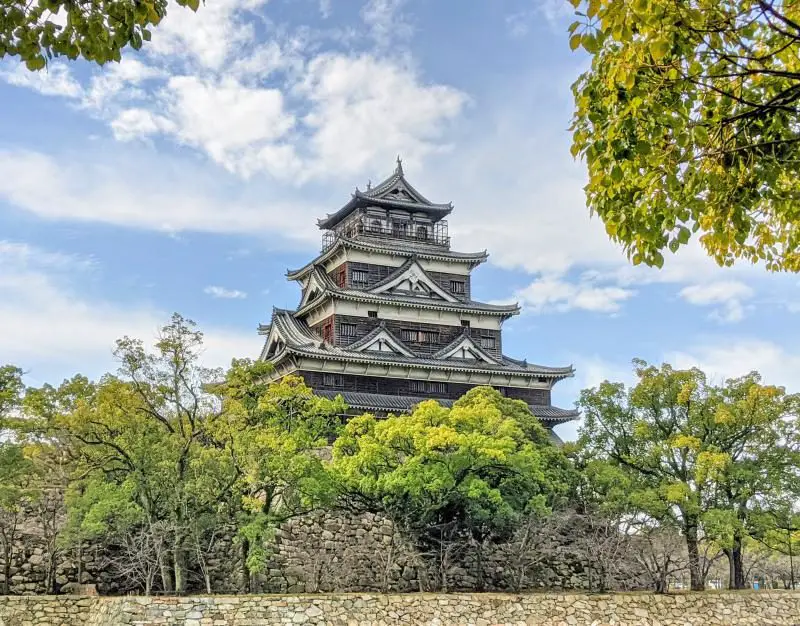
Although Hiroshima Castle is rebuilt, it’s still gorgeous to see!
Address: 21-1 Motomachi, Naka Ward, Hiroshima, 730-0011, Japan (〒730-0011 広島県広島市中区基町21−1)
Opening Hours: 9:00am-6:00pm (March-November), 9:00am-5:00pm (December-February)
Admission Cost: 370 yen ($2.60) adults, 180 yen ($1.30) seniors 65+ and high school students, free children to junior high students.
Shukkeien Garden
Shukkeien Garden (縮景園) is a recommended place to visit in Hiroshima to enjoy a Japanese garden. It was developed in 1620 by Ueda Soko, a tea ceremony expert. The garden was damaged during the bombing incident and restored after 1951.
The picturesque spot in Shukkeien Garden is the Koko Bridge . It’s a white bridge in the middle of the pond that is in the shape of a rainbow. The meaning behind the bridge is that the curve represents a connection between earth and heaven.
This was one place that we regretfully didn’t have time to visit. We would love to visit on a return trip.
Address: 2-11 Kaminoboricho, Naka Ward, Hiroshima, 730-0014, Japan (〒730-0014 広島県広島市中区上幟町2−11)
Opening Hours: 9:00am-7:00pm (April-September), 9:00am-5:00pm (October-March)
Admission Cost: 260 yen ($1.80) adults, 150 yen ($1.10) high school and university student, 100 yen ($.70) elementary and junior high school
Hiroshima Itinerary Day 2: Miyajima Island
On your second day in Hiroshima, you can either go back to the Hiroshima Peace Park or the Hiroshima Castle area to revisit places that you missed on the previous day.
Or, you can go to a peaceful and beautiful island – Miyajima Island!
Miyajima is the perfect day trip from Hiroshima. From Hiroshima to Miyajima, it’s only 30-40 minutes using a combination of the train and the ferry.
Most of the major attractions on Miyajima Island are within walking distance.
There are so many incredible things to do in Miyajima .
If you love exploring traditional Japanese architecture, head to the gorgeous Itsukushima Shrine to see the vermilion shrine area and also check out the Otorii . This is the photogenic floating torii gate in the middle of the water.
Tip: Visit during high tide to see the floating effect for the torii gate. Otherwise, low tide provides a unique experience where you can walk up to the gate.
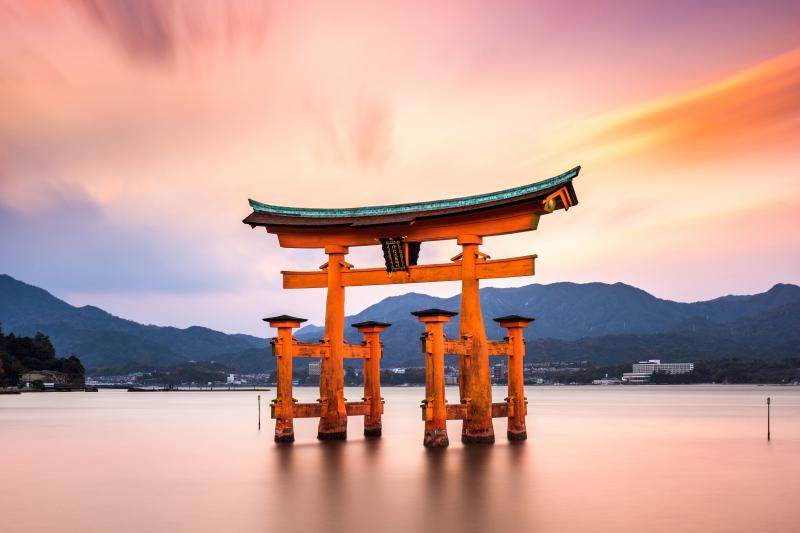
Photo credit: sepavone via Depositphotos.com
Hikers will enjoy the outdoor adventures of hiking Mount Misen at 535 meters (1,755 feet). It’s considered one of the incredible hikes to do in Japan !
If the weather is hot or warm, check out our tips for hiking in hot weather here.
You can also stroll down Omotesando Shopping Street for souvenirs and restaurants . Don’t forget to buy momiji manju , the Japanese maple leaf-shaped cakes, as souvenirs. They’re different flavors to try such as green tea and maple.
Read more about our exciting Miyajima day trip here.
Hiroshima itinerary: day 3+ other places to visit.
If you have additional time in your Hiroshima itinerary, here are some recommended things to do:
- Take a sake tour at a brewery
- Take a cycling tour to Rabbit Island (Okunoshima)
- Take a cooking class and learn how to make okonomiyaki
- Relax at an onsen
- Learn archery
Hiroshima Travel Requirements
Check if you need a visa for japan before arrival..
Read this list of countries that require visas.
If you’re from the U.S, you do not need a visa. You’re allowed to stay in Japan for 90 days.
Complete the Immigration and Customs Forms on Visit Japan Web site.
A few days before your trip, create an account on the Visit Japan Web or if you’re a returning visitor, use the same login.
Add your travel dates to the site and complete the Immigration and Customs Form. It’ll take 15 to 30 minutes.
Once you complete the forms, you will receive two QR codes. Save these to your phone so you can show the Immigration and Customs officer.
By completing these two documents ahead of time, you can go through the Immigration and Customs line faster.
If you forget to do these, there are paper forms available.
Note: If you have a large group going with you to Japan, you can complete the Immigration and Customs form for each person on their behalf. Use your account and add them to your date of visit, and then complete documents. Each person will need their own QR codes.
How to Get to Hiroshima
Transportation cards.
Before delving into the different ways to get to Hiroshima, we’ll discuss the different transit card to have when traveling through Japan. This is important when taking the trains in local cities and shinkansen (high-speed bullet trains).
The Japan Railways (JR line) offers several passes for international travelers to buy. The pass covers unlimited train lines, shinkansen, ferries, and buses on the JR line. You would need only one pass depending on your itinerary and time duration.
- JR Wide Area Pass – This is to travel throughout the entire country. There are 7 days, 14 days, and 21 days available. Learn more here.
- JR Okayama – Hiroshima – Yamaguchi Area Pass – This 5 day pass is ideal for those traveling through Okayama, Hiroshima, and Yamaguchi areas. Learn more here.
- JR Kansai – Hiroshima Area Pass – This 5 day pass is catered for those who are staying in the Kansai area (Osaka, Kyoto , Kobe, Nara, Himeji, Wakayama) and Hiroshima area (Okayama, Kurashiki, Iwankuni, Miyajima, etc). Learn more here.
For the other non-JR train, bus, or ferry lines, use an IC card such as Suica, Pasmo, or ICOCA card to pay for the ride. If you don’t have an IC card, you can buy one at any train station.
Or, you can buy ahead of time and pick up at a specific location, such as in Tokyo or Osaka.
Click to buy a Suica card in Tokyo.
Click to buy a ICOCA card in Osaka.
Hiroshima Tourist Pass
If you do not have a JR Pass, consider getting this Hiroshima Tourist Pass for 1, 2, or 3 days. This tourist pass covers Hiroshima Electric Railway train lines, Miyajima Lines, buses, Meipuru-pu bus, and much more. Learn more here.
Get to Hiroshima by Train or Airport
Taking the train is the best way to get to Hiroshima. Depending on your starting location, you can get to Hiroshima easily via the shinkansen (high-speed rail).
We’ll share information on how to get here from Okayama, Osaka , or Fukuoka (if you’re visiting Hiroshima as a day trip).
Hiroshima also has several airports. The international airport, Hiroshima Airport (airport code: HIJ), is located in Mihara, so we’ll share information on how to get to the city from the airport.
TIP: We suggest that you use Google Maps if you’re confused on how to travel around. Google Maps does a decent job with providing train lines to take you to your final destination.
From Okayama to Hiroshima
The easiest way is to take the shinkansen with your Japan Rail (JR) pass.
From Okayama Station (岡山駅) to Hiroshima Station (広島駅), it’s a quick 40 minutes. The pass won’t allow rides via Nozomi or Mizuho lines. You can go to the shinkansen ticket office to get a reserved seat.
Tip: At the Hiroshima Station, stop by the Tourist Information Center and pick up a brochure that has a map of Hiroshima and Miyajima. This will help with planning out your Hiroshima itinerary.
From Osaka to Hiroshima
From Osaka Station (大阪駅), take the JR Tokaido-Sanyo Line to go to Shin-Osaka Station (新大阪駅). This will take 5-10 minutes. Then, head to Hiroshima Station (広島駅) via the shinkansen.
The train will pass through Kobe, Himeji, Okayama before arriving at Hiroshima Station. It’ll take 1.5 hours on the shinkansen.
From Fukuoka to Hiroshima
If you’re based on Kyushu Island ‘s Fukuoka City , you can also take a day trip from Fukuoka to Hiroshima.
From Hakata Station (博多駅), take the shinkansen to Hiroshima Station. It’ll take 1 hour and 4 minutes.
From Hiroshima Airport to Hiroshima City Center
Unlike other international airports in Japan, Hiroshima Airport (airport code: HIJ) does not have a train station attached to the airport terminal.
You’ll need to take a Hiroshima Airport Limousine Bus to get to the center of Hiroshima or Hiroshima Station. This will be the faster way and can take 1 hour. Check out the schedule here.
If you prefer to take the train, then you’ll need to take both the bus and the train. From Hiroshima Airport, take the bus to Shirachi Station, and then you can hop onto the JR Sanyo Main Train Line and arrive at Hiroshima Station or other station of your choice. This route can take 85+ minutes. Click here to see the schedule.
Hiroshima is a walkable city, but then again, we love walking around to get some exercise and fresh air. All you need is a good pair of walking shoes.
From Hiroshima Station to Hiroshima Castle, it’ll take about 20 minutes since it’s 1.5 kilometers (.90 miles) away.
If going to the Atomic Bomb area from the station, it’ll take 30 minutes to walk there as it’s 2.4 kilometers (1.5 miles) away.
Meipuru-pu Bus
Take the Meipuru-pu which is a convenient bus for tourists that follow three routes and goes to popular places such as the Hiroshima Castle, Museum of Art, Atomic Bomb Dome, and more.
There are three routes to choose from – orange, lemon (yellow), or green route.
The starting location is from the Hiroshima Station so it’s great for those who just arrived from the shinkansen.
- One ride: 220 yen ($1.55) adults (age 12+), 110 yen ($.80) children (6-11 years)
- One-day pass: 400 yen ($2.80) adults, 200 yen ($1.55) children
- Free if using the Japan Rail (JR) Pass or JR West Pass – Just show your JR pass at entrance.
Tickets can be purchased at the tourist information centers at the Hiroshima Station or inside the bus. You can also pay for the ride via IC cards.
Learn more about the Meipuru-pu here.
The streetcar, operated by Hiroshima Electric Railway, is another way to travel in the city. There are 9 routes noted in different colors.
They start from the Hiroshima Station and even travel to Hiroden-miyajimaguchi stop (last stop before heading to Miyajima Island as a day trip). Click here to see the schedule and map of the streetcar.
- One ride: The cost varies depending on which route you take. Cost is between 140-270 yen ($1.00-$1.90) while the main inner-city area is 220 yen ($1.55) for adults and 110 yen ($.80) for children.
- One-day pass: 600 yen ($4.20) adults, 300 yen ($2.10) children
As mentioned above, you could also consider getting the Hiroshima Tourist Pass for 1, 2, or 3 days and it’ll cover the streetcar and Meipuru-pu lines.
Take a tour.
While the itinerary above is for those who enjoy a DIY approach, you can take scheduled tours to learn more about these Hiroshima attractions. We mentioned a few tour options under Day 1 section.
Where to Eat in Hiroshima
If you’re interested in taking a food tour in Hiroshima, here are options:
- Bar Hopping Food Tour
- 3-Hour Food Tour with a Local
The one thing that you must eat when you’re in Hiroshima is okonomiyaki . We’re huge fans of Hiroshima style okonomiyaki and even eat it at our favorite Japanese restaurant in Ho Chi Minh City, Vietnam !
What we adore about it is the flavors in each layer and the health aspect. You get your daily value of carbohydrates, vegetables, and protein. The layers are a thin crepe of batter and bonito (dried fish) flakes at the bottom, mountain of cabbage and bean sprouts, pork strips (can be removed), noodles, egg, sauce, and topped with seaweed flakes. You can also have seafood and mochi (glutinous rice) added.
We had okonomiyaki three times during our 2 days in Hiroshima. Did we get tired of eating it?! No way! It’s a top food to try in Japan .
Since we stayed close to the Hiroshima Station, we had two out of three at the Ekimae Shopping Center which connects to the station.
Here is a list of the okonomiyaki restaurants in Hiroshima:
Mitchan Sohonten
We found out about this place in the Hiroshima-Miyajima Visitor Guide and it didn’t disappoint! Mitchan Sohonten is supposedly the first creator of the Hiroshima-style okonomiyaki and the standard for okonomiyaki.
This is one of the best okonomiyaki restaurants that we’ve eaten at. We tried several items on the menu – #2 which is the Mitchan Special with fried squid, sauteed squid, shrimp, and mochi with ramen, #9 okonomiyaki with cheese, and a side of fried oysters. Oh gosh. Everything was so delicious!
If you like crispy noodles, then this place makes it extra crispy. Adding the mochi is a recommended addition since you get the balance of the crunch of the noodles and the gumminess from the mochi. The seafood wasn’t overcooked either.
You may think that okonomiyaki with cheese is a bit weird. The combination provides a cohesive balance of the cabbage and bean sprouts with the saltiness and richness from the cheese.
Try the oysters when they are in season. The dish comes with a mountain of green onions.
There is an English menu available.
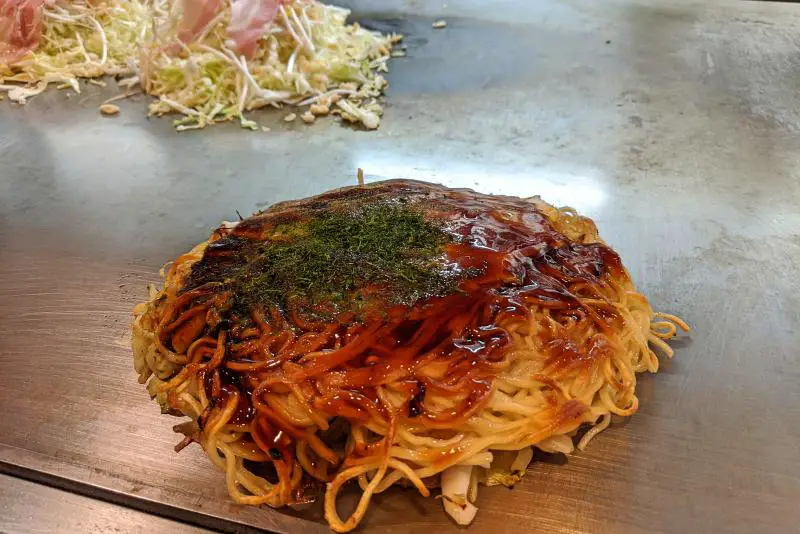
We’re in heaven after eating okonomiyaki at Mitchan Sohonten.
Address: There are 6 locations in Hiroshima and 2 in Tokyo. You can find the addresses here .
For the ones that we went to, the addresses are:
- Ekie Mall Dining Area: 1-2 Matsubaracho, Minami Ward, Hiroshima, 732-0822, Japan (〒732-0822 広島県広島市南区松原町1−2)
- Flagship store: Japan, 〒730-0013 Hiroshima, Naka Ward, Hatchobori, 6−7 チュリス八丁堀 1F (〒730-0013 広島県広島市中区八丁堀6−7 チュリス八丁堀 1F)
Opening Hours: Varies depending on the store.
- Ekie Mall: 11:00am-9:30pm
- Flagship store: 11:30am-2:30pm and 5:30pm-9:00pm (Weekdays), 11:00am-9:00pm (Weekends)
Average Cost for Dishes: 870-1,710 yen ($6.15-$12). Some shops accept credit cards.
Reichan Okonomiyaki
Reichan Okonomiyaki (麗ちゃん) at the Ekie mall under JR Hiroshima Station. It’s a good option to try okonomiyaki if Mitchan Sohonten is busy.
We tried the oyster okonomiyaki and one with shrimp and squid (excluded the pork slices). The okonomiyakis are solid.
The opportunity for improvement is that the squid and shrimp are sauteed first before placing in the okonomiyaki layers so the seafood was a bit overcooked.
Otherwise, the store is accommodating for food allergies and requests. Since we didn’t order pork slices, we received an 80 yen ($.55) discount.
There is an English menu available.

We already dug into the okonomiyaki at Reichan.
Address: In the Ekie Dining area of the mall
Average Cost for Dishes: 840-3,500 yen ($5.90-$24.65). Accepts credit card.
Pro Tips for Eating Okonomiyaki
- Sit at the grill area so you can see the okonomiyaki chefs in action. It’s exciting to hear the clanging of the cooking spatulas against the grill and to see the okonomiyaki getting cooked in front of you. Heads up – You and your clothes will smell like delicious okonomiyaki afterward.
- If you’re allergic or have dietary restrictions, you can ask the waiter to have an ingredient removed.
- Feel free to add mayo or additional okonomiyaki sauce to your dish.
During your two days in Hiroshima, it’s best to situate yourself close to Hiroshima Station.
It’s convenient to use the train and also catch the streetcar and Meipuru-pu bus. Hiroshima has a variety of accommodations to choose from.
Check out reviews of Hiroshima accommodations and book a room today on Booking.com
Find Hiroshima accommodations on Agoda here.
Here are some other Hiroshima accommodations to consider:
WeBase Hiroshima
This hostel is an affordable place to stay in Hiroshima. It’s close to the Atomic Bomb and Peace Memorial Park. Guests enjoy clean and modern rooms. The hostel has private rooms and mixed dorms. There is a main dining area to meet other guests. Rooms are between $62-$85 per night for 2 person occupancy or $20 per person for a bunk bed.
Click here to make a reservation at WeBase on Booking.com.
Check pricing and book WeBase on Agoda.
Rihga Royal Hotel Hiroshima
This hotel is great if you would like a view of the city from your room. It’s located near the Atomic Bomb and Peace Memorial area. The hotel has several on-site restaurants for guests to choose from. Rooms are between $110-$280 per room per night for 2 person occupancy.
Read more about Rihga Royal Hotel and make a reservation here on Booking.com.
Book Righa Royal Hotel on Agoda here.
Sheraton Grand Hiroshima Hotel
As a part of the Marriott brand, guests will receive excellent hospitality and amenities. It’s conveniently located next to the JR Hiroshima Station and connects with the station so guests can access the JR train to other areas of Japan. Guests love their city views and breakfast. Rooms are $200-$850 per room per night for 2 person occupancy.
Make a reservation for Sheraton Grand here on Booking.com .
Book Sheraton Grand on Agoda here.
Where We Stayed
We stayed at this Airbnb studio apartment since it was an affordable option. We wanted to have more privacy and a “home” feel.
The apartment was perfect for us as it was clean, had an ensuite bathroom, and was a 10-minute walk from the Hiroshima Station. It’s a typical apartment size in Japan so don’t expect a huge room.
After traveling for over a week in Japan, it was a nice surprise to see a washing machine included in the apartment.
The host was also easy to contact via the Airbnb app. Cost is $43 per night.
Final Thoughts about Hiroshima
Out of the places that we’ve visited in Japan, Hiroshima is the most thoughtful when it comes to its overall mission – to encourage everyone to have world peace and not to use nuclear weapons in the future.
Visiting Hiroshima for 2 days is a good way to learn more about Japan’s history with the atomic bombing and also get a chance to visit Miyajima Island as a day trip.
Hope you get a chance to visit Hiroshima in the future!
What do you know about Hiroshima? What are you most interested in seeing here? Let us know in the comments.
Save this post to your Japan Pinterest board now!
Featured photo credit & Pin #1: Ludovica Festino via Scopio Photos
I'm Jackie - world explorer, hiker, and wanderer. I love planning things whether it is a trip or an upcoming event, exploring nature, hiking up mountains, and seeing new places. I'm notorious for getting lost, so you may see me circling a place a few times.
Miyajima Day Trip: A Remarkable Miyajima One Day Itinerary
Dazaifu day trip: a hidden gem from fukuoka, japan, you may also like, how to spend 1 day in ipoh, malaysia, where to find vibrant street art in melaka,..., 6 delicious & affordable places to eat in..., traveling from kuala lumpur airport to melaka by..., a complete guide: melaka to kuala lumpur international..., the ultimate guide to 24 non-spicy korean food..., how to travel from ipoh to penang georgetown..., 18 must try places to eat in penang’s..., a step by step guide on taking the..., exploring melaka, malaysia in one day – a..., 10 comments.
I have always wanted to go to Japan and was meant to go later this year, but unfortunately with the virus it is looking like I will be unable to. One day I will finally go to Hiroshima!
Hi Amy. We’re scheduled to return back to Japan at the end of the year. Hopefully, the situation will be better then. In the meantime, Hiroshima will be waiting for your visit!
Wow, what an amazing piece on such an important place. The food looks amazing at Reichan Okonomiyaki too!
Hi Francesca. Eating okonomiyaki was one our favorite parts about visiting Hiroshima! mmmmMmmm.. dreaming about its deliciousness now.
Japan is definitely on my travel bucket list! (I want to eat everything!) Thank you for putting this together! :]
You’re welcome Farrah. Japan is a fabulous place to eat. Stop by Hiroshima to try their okonomiyaki. It’s delicious!
I would love to visit Hiroshima one day! This itinerary was absolutely perfect.
Thanks Melissa! Hope you can visit Hiroshima in the future.
What a great article. Love your itinerary and will use it when we go to Hiroshima in Oct 2023.
Thank you Doris for the lovely note! Hope you have a fantastic time in Hiroshima. Feel free to reach out if you have any questions.
Leave a Comment Cancel Reply
Save my name, email, and website in this browser for the next time I comment.
By submitting a comment, you agree with the storage and handling of your data by this website. Refer to the Privacy Policy and Disclaimer for more information. *
This site uses Akismet to reduce spam. Learn how your comment data is processed .
This website uses cookies to improve your experience. Please accept or opt-out if you wish. Accept Read More

The Perfect 1 Day in Hiroshima Itinerary (Top Things To Do + Map)
By: Author Charles
Posted on June 8, 2023
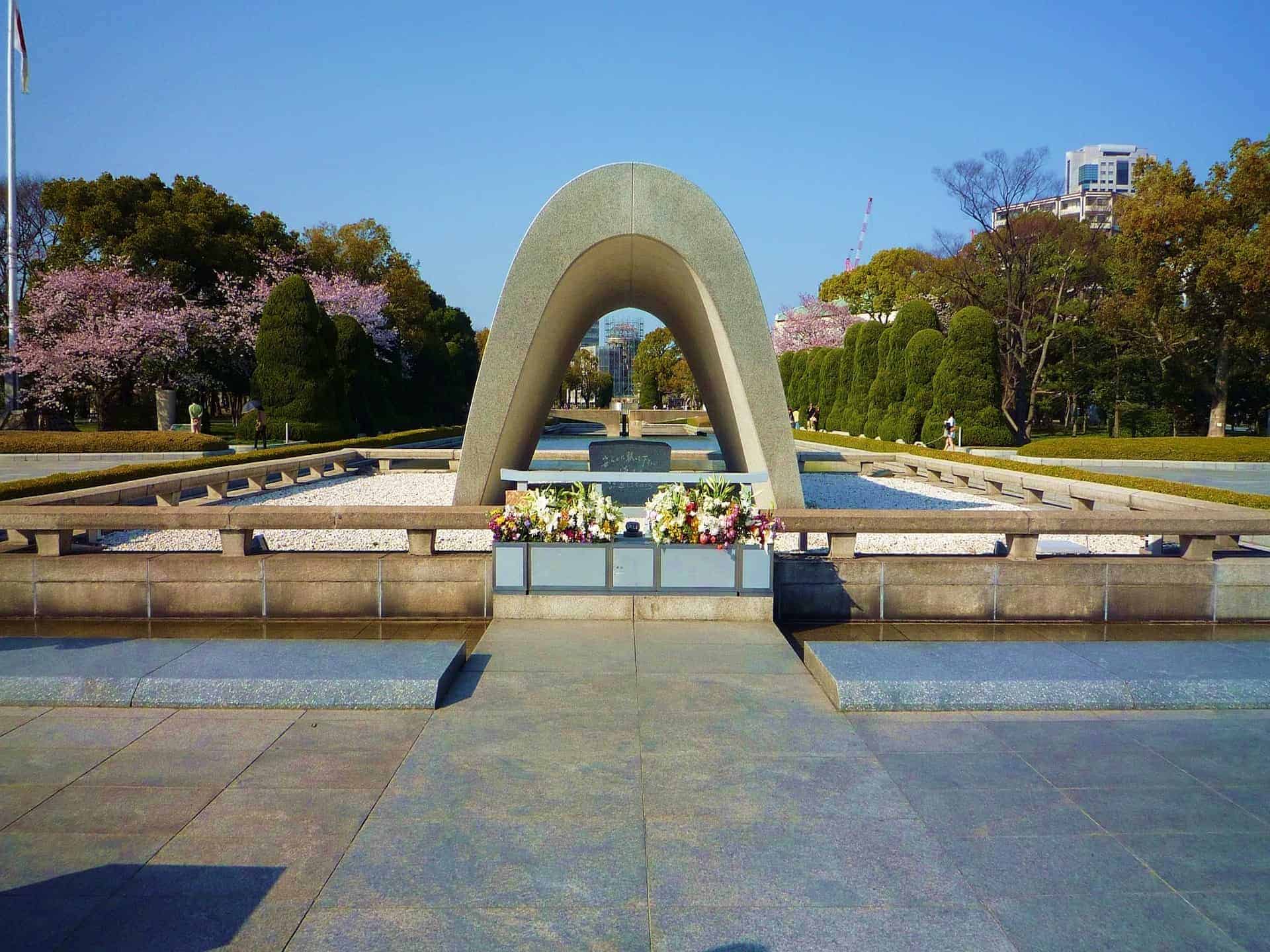
A visit to Japan is not complete without stopping by Hiroshima to learn firsthand about the history of the country and what it went through during World War II. To understand the destruction that was done there and how the people of Japan have recovered from that time is quite extraordinary.
Many of the top things to do in Hiroshima can be found nearby one another in the city center. This makes it quite easy to walk from one spot to the next during your day in the city.
This guide will go over a 1 day in Hiroshima itinerary and hopefully help answer any questions you have along the way.
* Affiliate Disclosure : This post may contain affiliate links, which means I may receive a commission if you make a purchase through the links provided, at no additional cost to you. Thanks for supporting the work I put into TripTins!
1) Introduction to Hiroshima
If you were not aware already, back in 1945, at the tail end of World War II, there were two atomic bombs dropped into Japan – one in Nagasaki and one in Hiroshima. It was a devastating time for those that lived there but sure enough, the city was rebuilt. Today you can see firsthand how far Hiroshima has come.
Spending 1 day in Hiroshima will give you a sense of the history of the city and how it has improved over time to what it is today.
There are memorials, museums and different structures throughout Hiroshima to visit. With 1 day in the city you will cover most of the things to do and see around the area.
If you have the time during your visit to Japan, you should definitely try and make it down there to see Hiroshima for yourself.
Learn More : Feel free to add Hiroshima onto a longer 2 Week Japan Itinerary that includes several other cities around the country
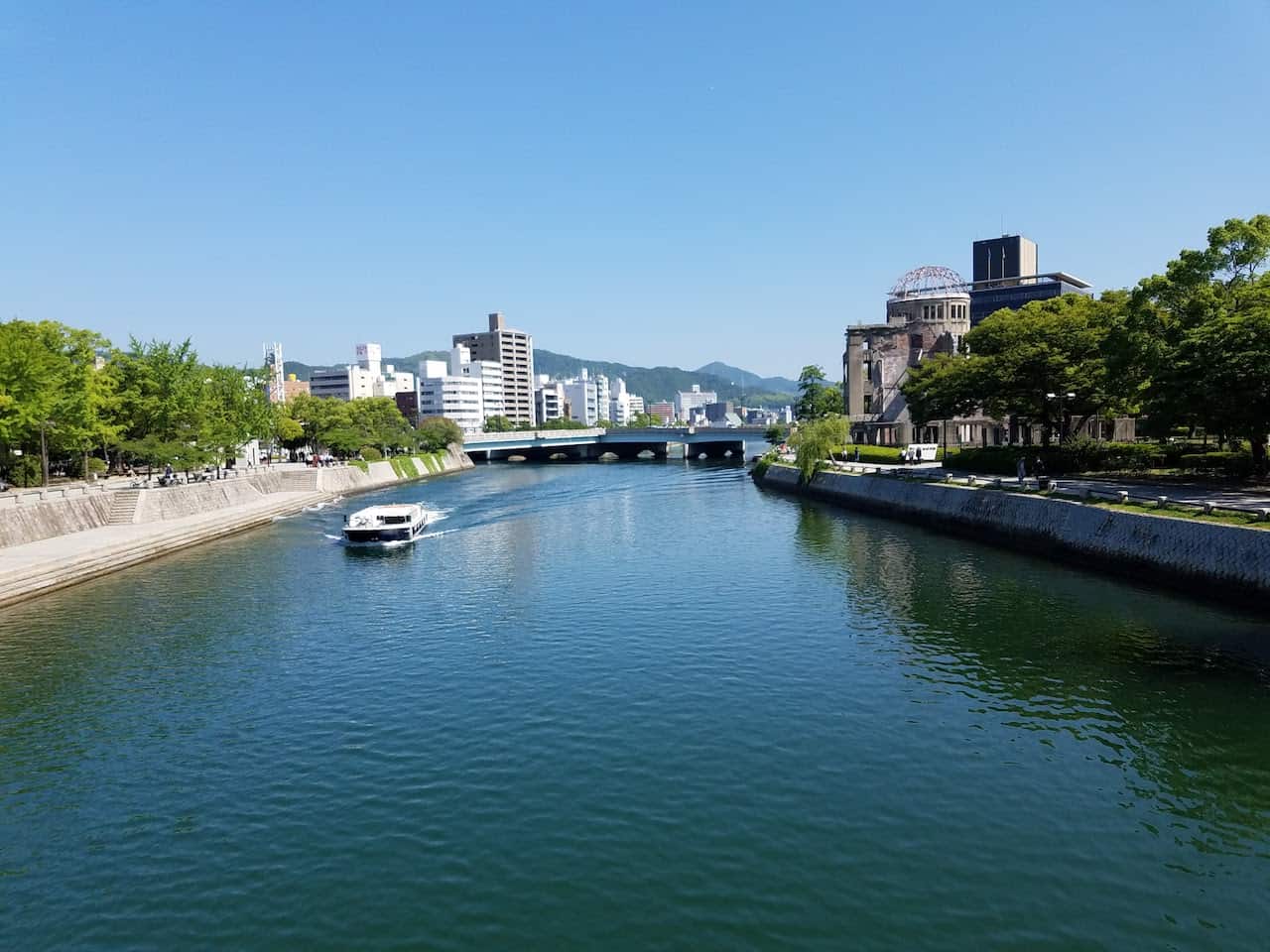
2) Getting to Hiroshima
A day in Hiroshima can be done in a few different ways depending on your itinerary:
- (1) Day trip from Kyoto / Osaka
- (2) Day trip from Kyoto / Osaka + Miyajima
- (3) Overnight in Hiroshima
In general, you will either be taking a day trip to Hiroshima (most likely from Kyoto / Osaka), or you will be spending a night or two in Hiroshima.
Miyajima Note : it is a popular option to also visit the island of Miyajima as part of your day trip or overnight option to Hiroshima. Feel free to learn more about the island in the Miyajima Things To Do overview up on the site.
No matter what option you choose though, utilizing the Japan train network will be your best bet as there are trains that make their way to the city throughout the day.
The train journey to Hiroshima from Kyoto or Osaka should take about an hour and forty minutes .
Check out Hyperdia for the latest schedules (and if traveling with the JR Pass, be sure to uncheck the “Nozumi / Mizuho / Hayabusa (Shinkansen)” box as those are not included with the pass).
You can learn more about the JR Pass in the Japan Helpful Tips guide up on the site.
If you are doing a day trip (either with or without Miyajima added in), you will want to try to leave earlier in the morning from Kyoto / Osaka as a long day of traveling and sightseeing awaits.
Once at the Hiroshima train station you could either walk the 30 minute route or take the local 20 minute tram to the main downtown area.
If you opt for the tram, hop on either the 2 or 6 line at Hiroshima Station towards Genbaku Dome-mae for 220 JPY.
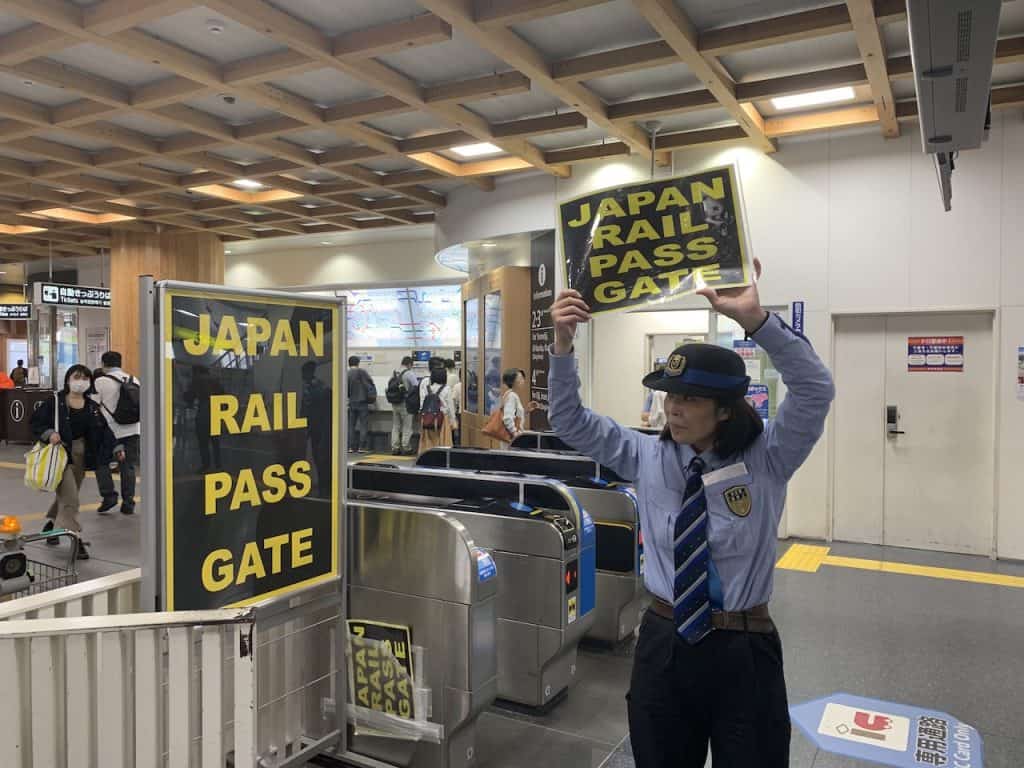
3) Location / Map
Below is a map of the Hiroshima area along with the pinned attractions that you will be able to see as part of a 1 day in Hiroshima itinerary.
Many of the things to see are located in the Hiroshima Peace Memorial Park (which are marked by the black pins). I have also marked down the train station and tram station to give you a better sense of the area.
- Atomic Bomb Dome
- Shima Hospital
- Hiroshima Castle
- Children Peace Monument
- Flame of Peace
- Hiroshima National Peace Memorial Hall
- Cenotaph Memorial Monument
- Hiroshima Peace Memorial Museum
4) Hiroshima Tour Options
In the following section, I will be going through the various places to see during your time in Hiroshima. While you can certainly do a day on your own, joining a tour would be your other option.
By joining a tour you can learn more about all the various sites that you will be visiting, and you will have the chance to ask questions along the way.
I would recommend checking out some of the top rated tour options mentioned below:
- Hiroshima & Miyajima Island Private Guided Tour
- Hiroshima Cycling Peace Tour with Local Guide
- Hiroshima Like a Local: Customized Guided Tour
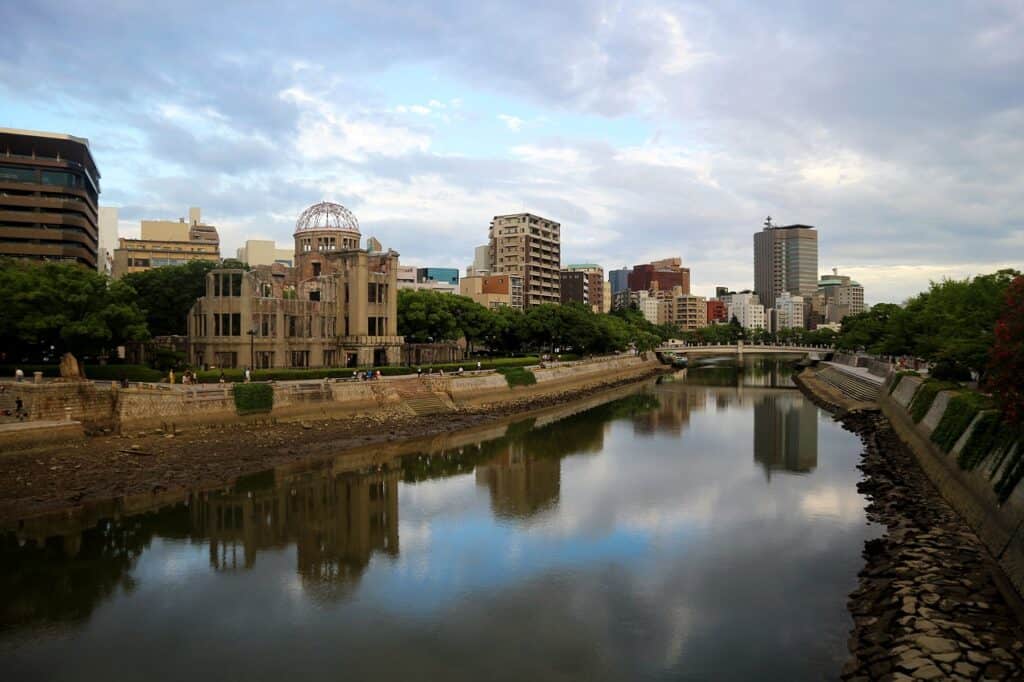
5) 1 Day in Hiroshima
Whether you are coming on a day trip straight from the train station or coming from your hotel in Hiroshima, you should have no problem taking part of this 1 day in Hiroshima itinerary.
Below are some of the main places that you should be sure to visit during your time there.
Since all of the places mentioned are pretty close to one another you will not need to worry about transportation to get from one spot to the next. Simply walk on over and explore what Hiroshima has to offer.
A) Atomic Bomb Dome
The first stop will be the Atomic Bomb Dome – the main focal point of Hiroshima that reminds its visitors of the destruction that was once put upon this city.
The dome, which was originally the Hiroshima Prefectural Industrial Promotion Hall was near the epicenter of the atomic bomb.
Even so, the building was not destroyed and has been preserved over time. Right near by the dome you can also find Shima Hospital, which is known to be the exact location where the bomb exploded overhead.
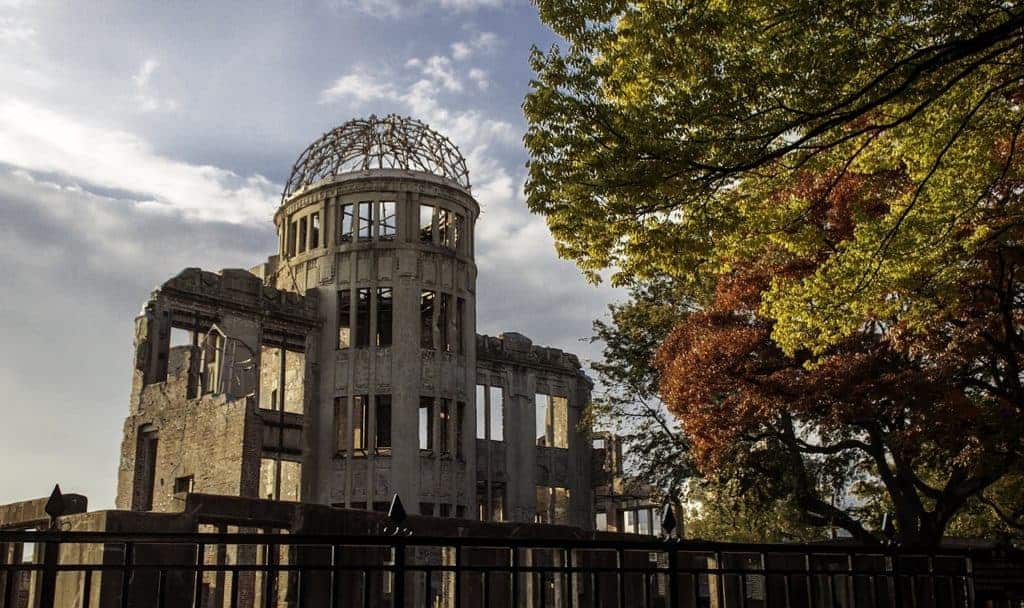
B) Hiroshima Peace Memorial Park
A short walk across the river you will find the Hiroshima Peace Memorial Park , which has several memorials to visit.
First up is the Peace Bell . It was built to promote world peace, and can be rung by anyone who passes by.
Right nearby is the Children Peace Monument , built to remember the thousands of children who died during the bombing of Hiroshima.
As you continue to make your way south you will also pass by the Flame of Peace – a flame that will continue to ignite until nuclear weapons are eliminated in the world.
In addition, you will find the Peace Memorial Hall , and the Cenotaph Memorial Monument , whose stone has the names of all those that were killed.
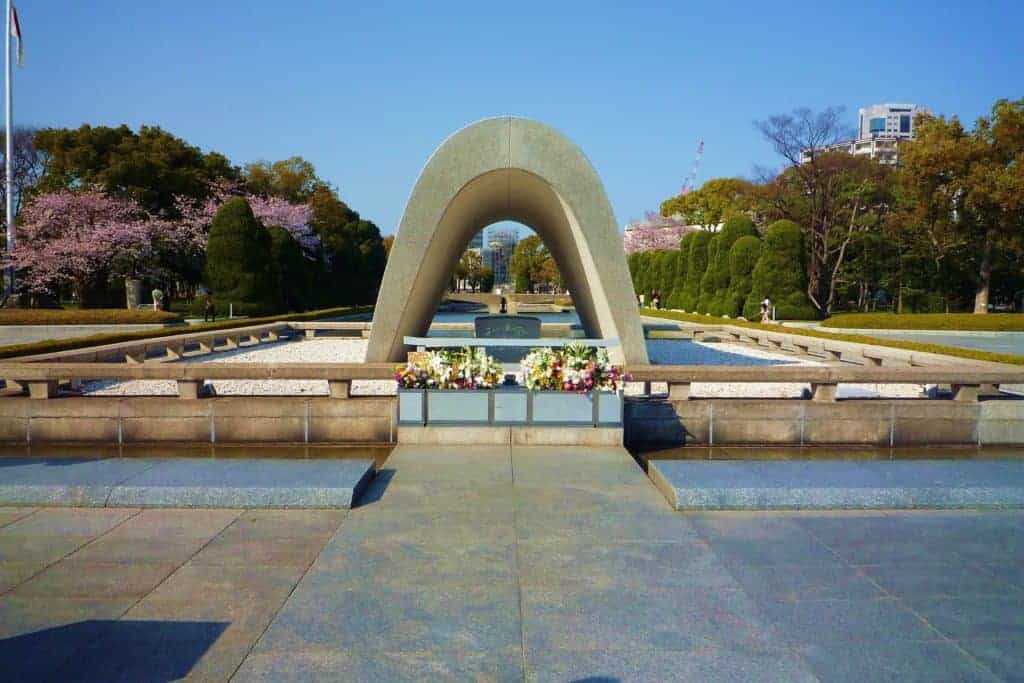
C) Hiroshima Peace Memorial Museum
You will then come to the Hiroshima Peace Memorial Museum . The museum will take you through the history and a simulation of the atomic bomb, as well as the aftermath of the bombing.
It is a very powerful and moving place to be, as you read the stories and see some of the destruction first hand.
For a full visit to the museum, expect to spend around 2-3 hours walking through and learning about the history.
Hiroshima Peace Memorial Museum Hours & Tickets
- March – July : 8:30AM – 6:00PM
- August : 8:30AM – 7:00PM
- September – November : 8:30AM – 6:00PM
- December – February : 8:30AM – 5:00PM
It costs 200 JPY to enter the museum (100 JPY for High School age, & free for younger kids)
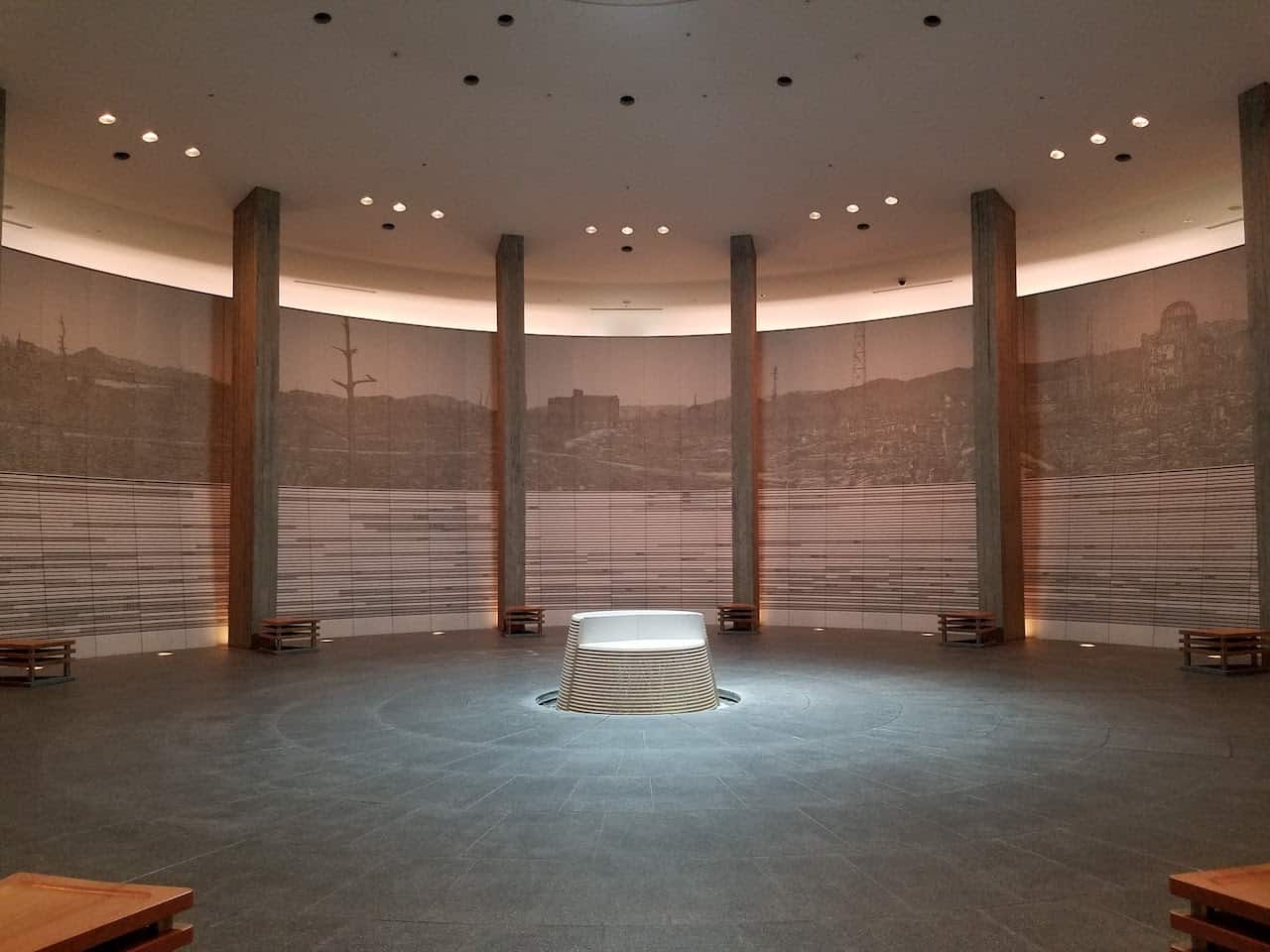
D) Hiroshima Castle
After making your way through the Hiroshima Peace Memorial Park and Museum, make the 20 or so minute walk north to Hiroshima Castle.
The castle’s history dates back to 1589, and is one of the most historical structures in the city.
During a visit to Hiroshima, you can simply enjoy the view from the outside as the castle sits high above the moat. Or you can opt to head into the castle’s grounds.
There are several exhibits inside of the castle, and if you would like to get a good view of Hiroshima from above, this a great spot to do so.
- Opening Hours : 9:00AM – 6:00PM (closes at 5:00PM from December to February)
- Ticket Cost : 370 JPY
Once you are done with you day you can either make your way back to your hotel or head to the train station, where you can catch your train to Kyoto, Osaka or wherever else you might be going to next.
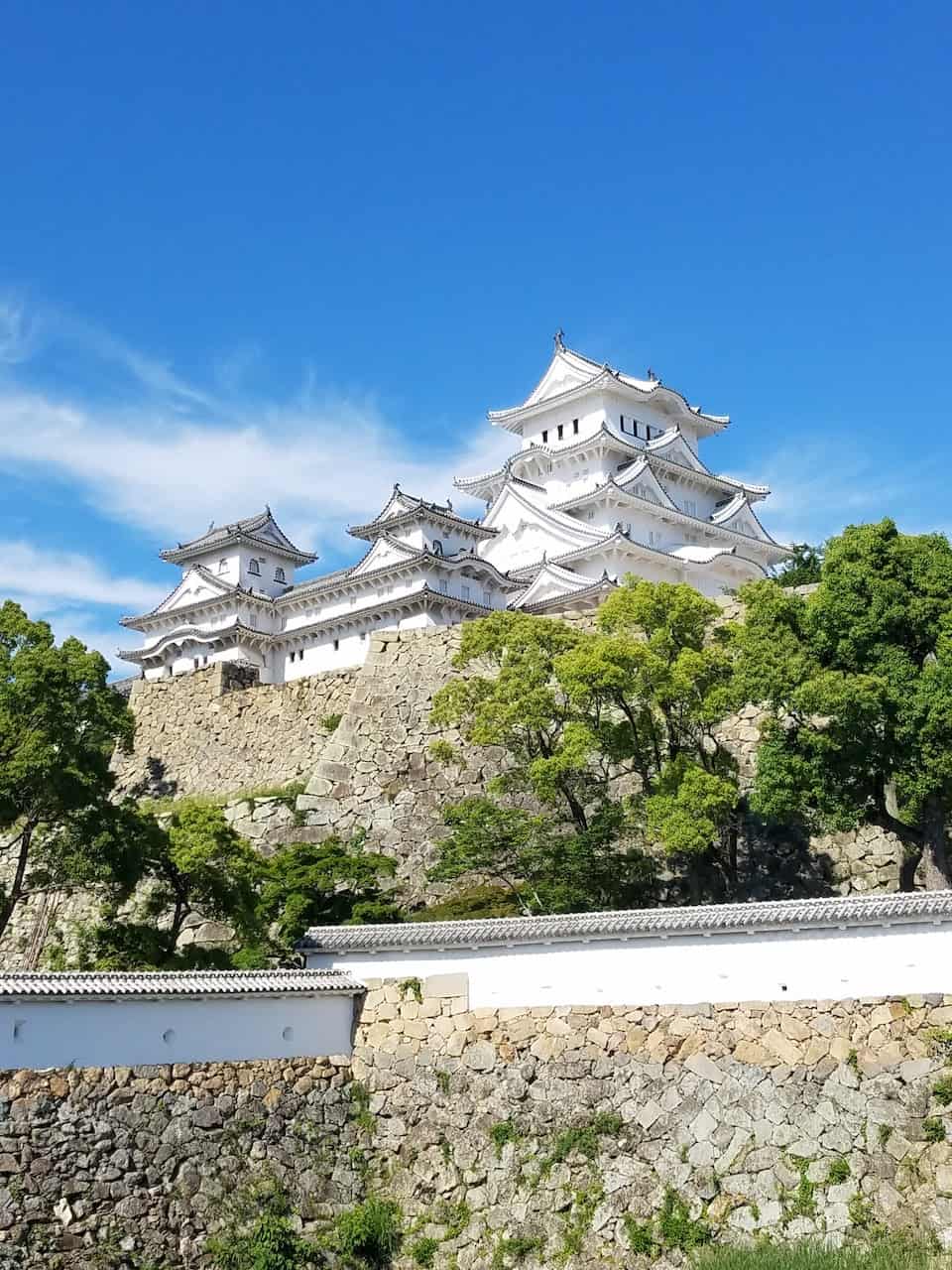
6) Where to Stay in Hiroshima
If you do opt for an overnight in Hiroshima, here is a list of some highly recommended hotel options around the area. Feel free to check out Booking.com for plenty more.
- The Knot Hiroshima (Traveler’s Choice)
- RIHGA Royal Hotel Hiroshima
- Mitsui Garden Hotel Hiroshima
- KIRO Hiroshima
- Sheraton Grand Hotel Hiroshima (farther out near train station)
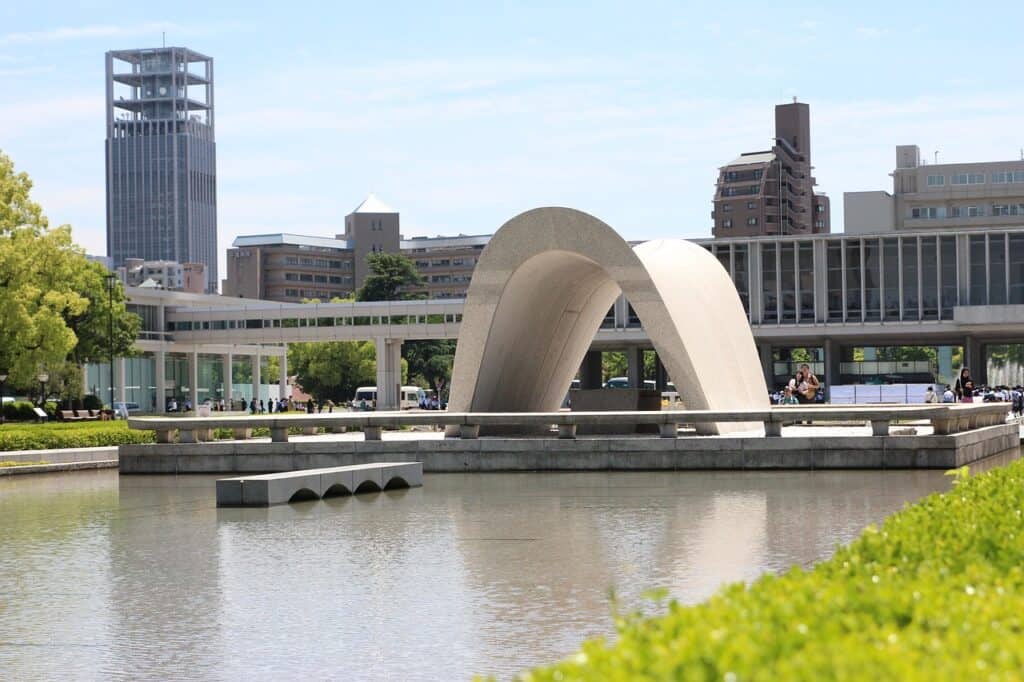
7) Is 1 Day in Hiroshima Enough?
If you are just looking to visit the main sites & attractions in Hiroshima, then yes, one day is enough to see the city.
The places mentioned throughout this guide should take anywhere from a half day to full day to complete depending on your interest levels.
Some people may just want to quickly see the highlights, while others may want to take things more slowly as they learn in depth about Hiroshima.
All said and done though, one day will be enough to see and experience what Hiroshima has to offer. If you would like to have more time to explore the city, I would simply recommend staying overnight the day before.
This will give you the chance to enjoy an evening in the city and get an early start in the morning.
8) Is it Worth Going to Hiroshima for a Day?
To answer this question, you must ask yourself if you are interested in what Hiroshima is all about. The experience in Hiroshima will be much different than other cities around Japan.
For those that visit Hiroshima, it is because they want to learn about the history and see firsthand the before & after of what the city was and has become.
However, if you are not someone who is interested in that sort of visit, then I would not advise going for the day.
While I would recommend adding it onto a Japan itinerary, I do understand that Hiroshima is not meant for everyone.
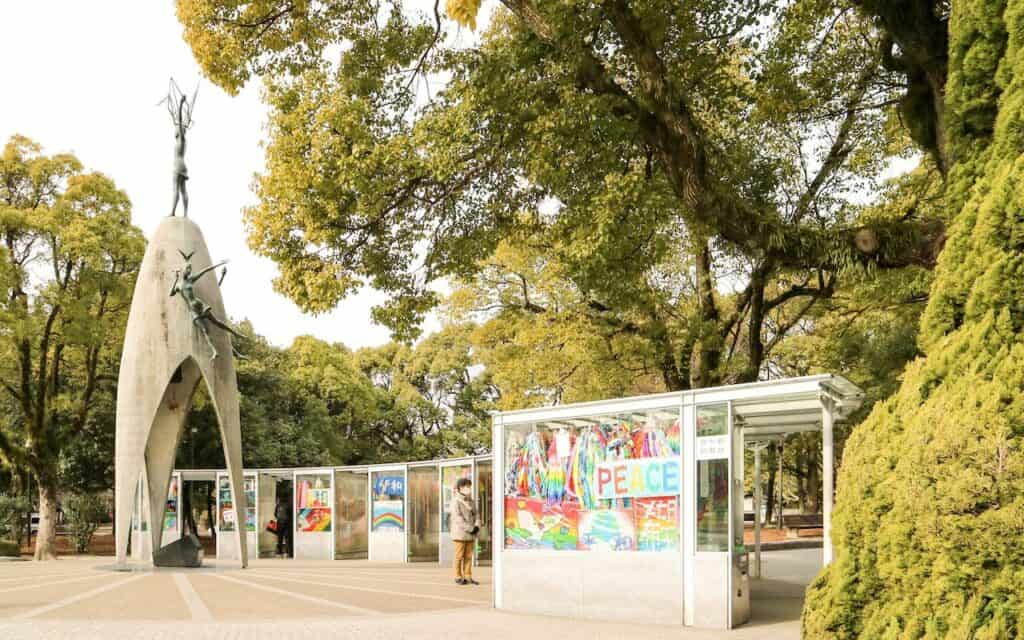
9) What is the Best Time of Year to Visit Hiroshima?
In general, Hiroshima can be a year-round destination, if you can handle the weather that is. Temperatures range from the daytime lows of 50F / 10C during the winter to 90F / 32C in the summer.
During the late Spring to early Fall is when you will see rainfall at it highest though. So, that could be a consideration at play in general (not only for Hiroshima).
If I had to choose the best time of year to visit, I would opt for around mid-Spring or mid-Fall. During these time periods, temperatures are pleasant (not too cold or too hot), and rainfall is on the lower end.
This also will help you avoid the crowds that can come along during the winter holiday times and the summer peak months.
Another advantage of the Spring and Fall is that you do have the chance to catch cherry blossoms and foliage. Getting to see the country’s nature change colors is an added benefit for a Japan trip as a whole.
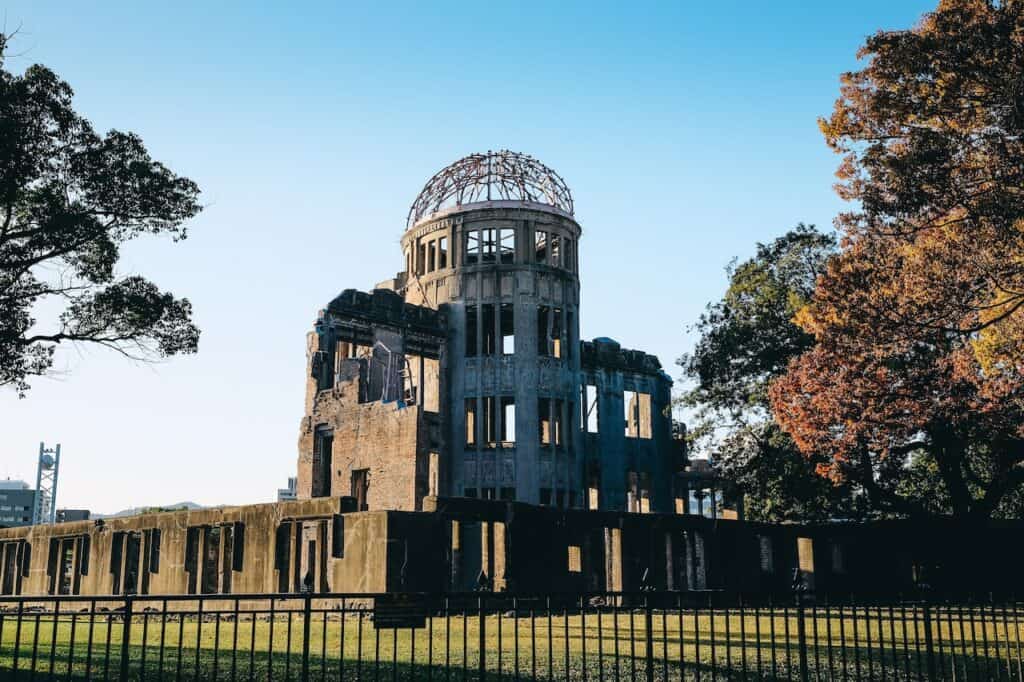
That about wraps up a 1 day in Hiroshima itinerary. Take a look at some other Japan itineraries and guides to help out with any other trip planning. Some of these include:
- 3 Day Kyoto itinerary
- Day Trip to Nara
- 5 Days in Tokyo
- Among Many Others!
Hope you enjoy your time in Japan. If you have any questions about the trip please feel free to comment below!
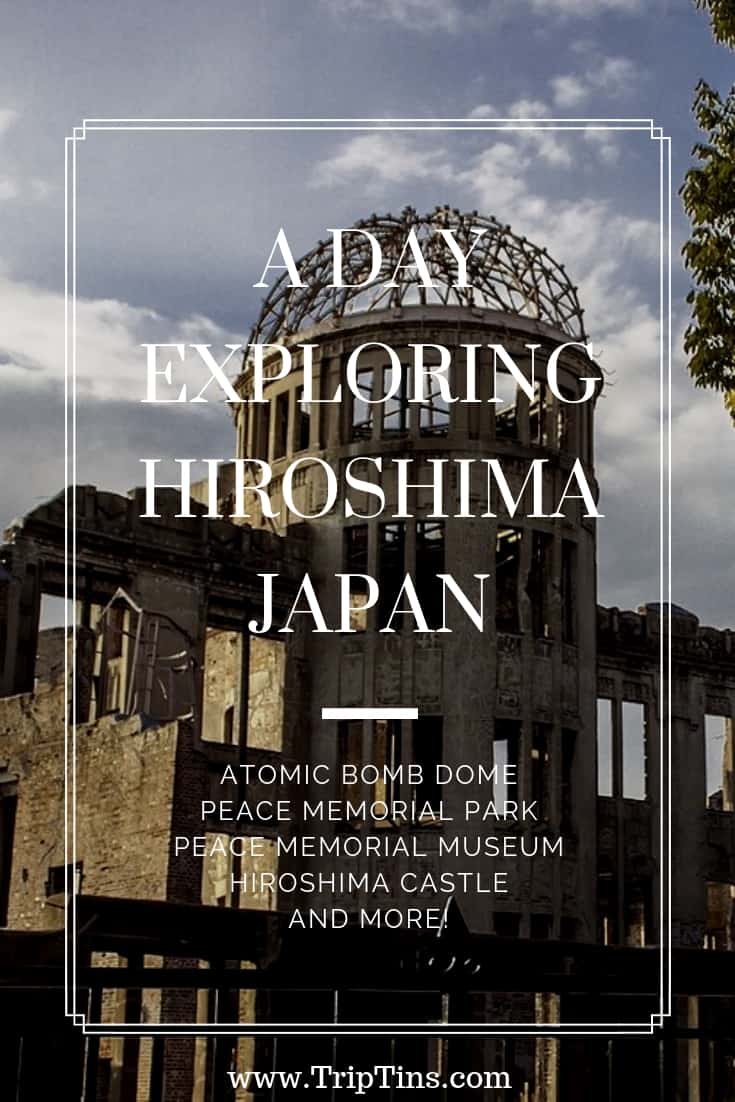
Related posts:
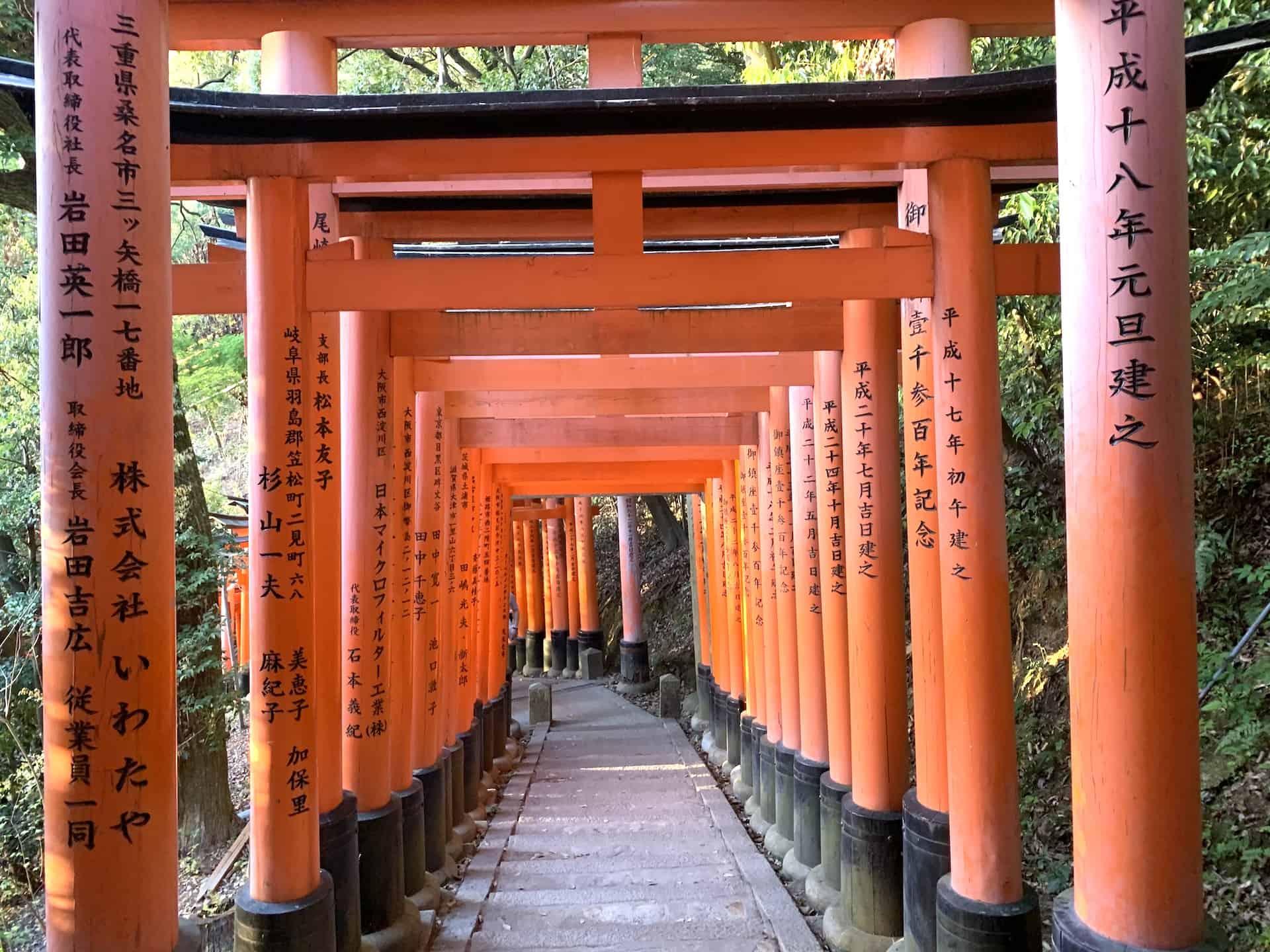
Sharing is caring!
Everything You Wondered About Japan
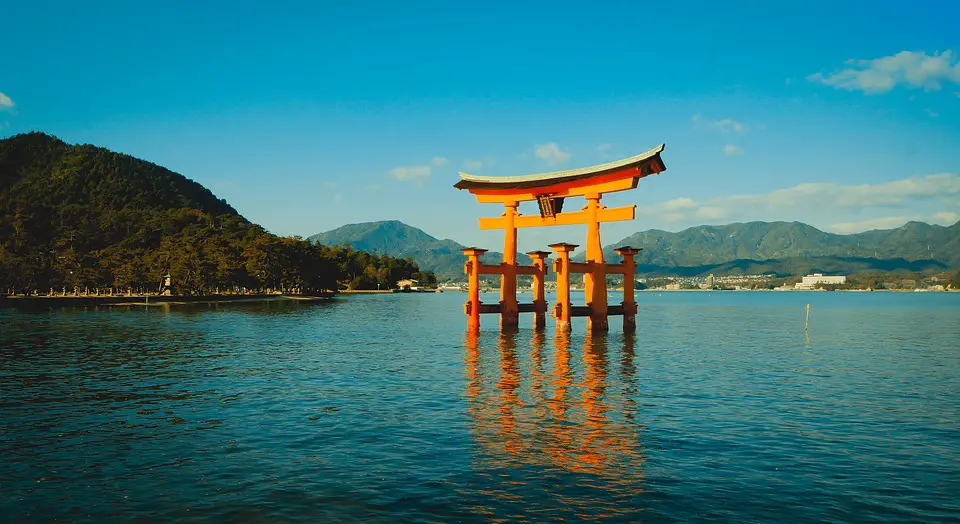
Hiroshima is Worth Visiting: Top 10 Reasons Why
Hiroshima may have gone down in history as an inexplicable story of sorrow and pain across the world. However, back in the city, life has returned to normal.
Hiroshima is definitely worth visiting. Here are the 10 reasons why:
- Take The Ferry To Miyajima (宮島)
- Visit Ground Zero If You Are A History Buff
- Experience Authentic Okonomiyaki
- Explore the Samurai Castle
- Ride The Streetcars
- Experience The Sunset At The Torii Gate
- The Kintaikyo Bridge in Iwakuni
- Car Lover’s Paradise, The Mazda Museum
- Stroll Down The Memory Lane Through Time In Takehara
- Oyster Island in Miyajima
Let’s take a stroll through the streets of Hiroshima through our eyes, and explore all the things we mentioned above in detail. Immerse yourself in the samurai lore and see cool artifacts. Imagine the natural beauty of the island of Miyajima, and smell the delicious Okonomiyaki wafting through the air while you experience the splendid history.
Here’s to all the hidden jewels of Hiroshima you didn’t even know about.
1. Take The Ferry To Miyajima (宮島)

The candid videos you see on the internet where tourists are petting wild deer, originate from Nara, in the Kansai region of Japan . However, another secret place that nobody knows about, which is teeming with friendly Disney characters like deers, is Miyajima island.
You will get the ferry for the magical island from JR Miyajimaguchi Station . If you have taken a JR pass, the ferry ride will be covered.
The island is a little bit outside the city, by about an hour. But we start our journey from here because we want you to see the most stunning aspects of Hiroshima. Google the giant torii gate and you will see the most Instagram worthy water sculpture.
It sits on the waters and looks like its floating when the high tide comes. The sight is an iconic view you won’t be able to forget for a very long time.
You might come across locals who refer to the island as Itsukushima , which is the official name of the island. The name means shine island, which is a tribute to the Itsukushima shrine which is located nearby. The shrine has gates built in the water just like the gate and has an amazing view.
Things to do
You want to spend at least a night in the islands because the very air teems with romance. The ryokans make for a great place to stay. There are lots of tourists in the day on the island, but not many of them stay back in the night.
If you do, you will be able to enjoy the calm and quiet of the land. The wild deer roam amongst the tourists adored by everyone and they make for fantastic photo ops. In the daytime, they will walk by you, and at night they sleep on the streets.
2. Visit Ground Zero If You Are A History Buff

We take that back. You don’t have to be a history buff to visit the Hiroshima Peace Memorial Park , which is the ground zero of the nuclear bombing site. The land under the Hiroshima Peace Memorial Park is split at the Aioi bridge on the bank of the river Motoyasu.
This is where the bomb was dropped and if you don’t get goosebumps standing on the spot of one of the biggest humanitarian disasters, we don’t know what to tell you. The tragedy does not define Hiroshima, but the memorial is a fitting tribute to the countless lives lost. You can also witness the atomic bomb dome and the Eternal Flame of Peace at the end of the tour.
3. Experience Authentic Okonomiyaki
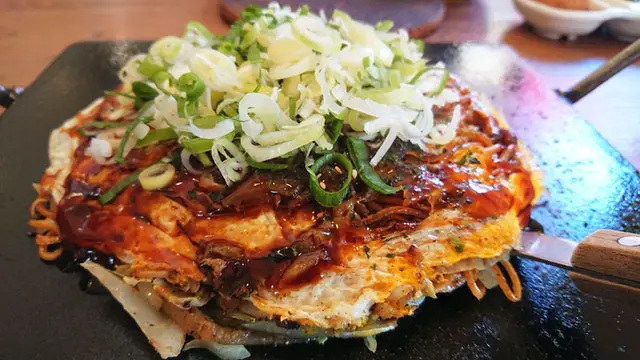
Local delicacies are always a delight to experience. If you love to experience different cuisines, you can join the battle of the Okonomiyaki right at the heart of Hiroshima. This is a unique experience you will cherish.
Okonomiyaki originated from one of the two places in Japan, and you can decide for yourself if the one you encounter in Hiroshima is truly superior.
The Okonomiyaki is a savory style pancake. This may sound like an oxymoron if you are an American tourist and know pancake to be a sweet dish best enjoyed with a copious amount of maple syrup. But trust us, Okonomiyaki is worth taking a chance at.
If you are worried about this being something funky, like fried scorpions or something. The pancake is innocuous and made of healthy and yummy ingredients like flour, eggs, and cabbage. It is also mixed with meat and then topped off with a sweet-ish sauce. The best part is, you get to douse the whole in mayonnaise and enjoy it with some fish flakes on top or the side.
The closest English translation for Okonomiyaki we can think of is – grilled to your liking. A lot of tourists come to Hiroshima to enjoy Okonomiyaki, and you would understand why when you have taken a bite of the delicacy.
So, where do you get the specialty of Hiroshima?
Head off to the Okonomimura building. It is a four-floor building dedicated completely to the delicacy. The building previously used to be some sort of theme park, and now houses over twenty varieties of the same dish. Each of the shops has a special flavor to offer. The whole dish if cooked while you watch on a red hot grill.
One shop on the second floor of the building has a lot of history with Okonomiyaki and over 50 years of experience making it. If you like something else, you can even get different foods at the other shops.
This complex opens for lunch hours from 11 AM to 2 PM. So, this could be a perfect stop on your way to our next destination.
4. Explore the Samurai Castle
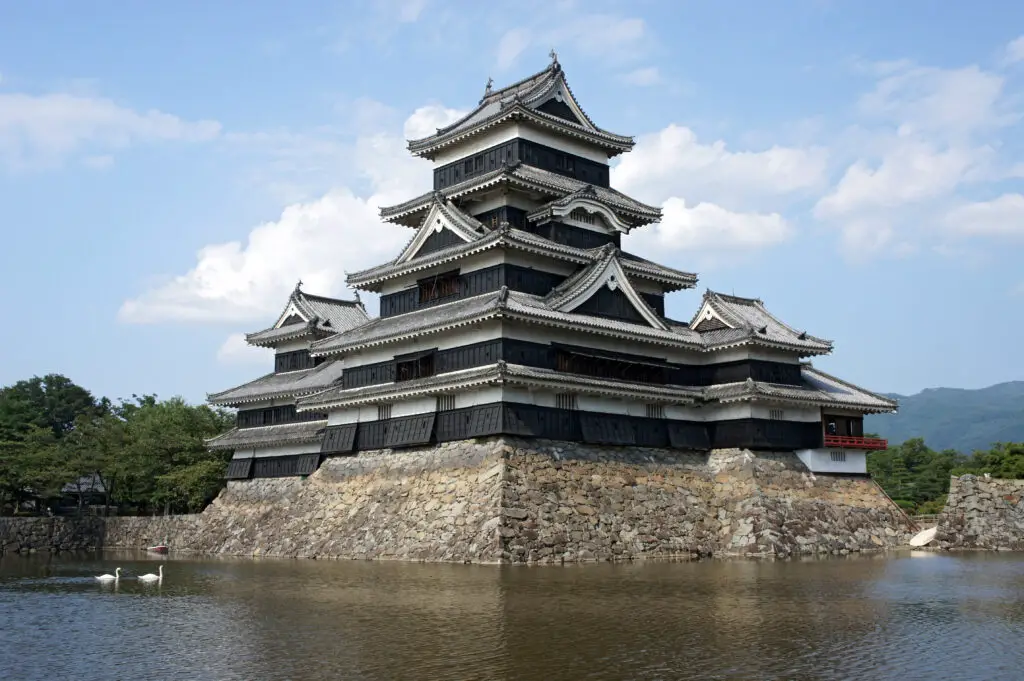
Is there anyone in the entire world, who doesn’t want to see cool samurai tchotchkes? You can see a whole castle full of this stuff. The Hiroshima castle looks even unique from the outside. Why? It is made up of wood and black lacquer.
The castle is as tall as a building of five stories. And yes, there is a moat surrounding it. The outer layer of the castle resembles the samurai armor, and the castle hosts a major part of samurai history.
The Hiroshima castle is pretty much in the middle of the city, which made Hiroshima famous as a castle town. You can watch a special performance hosted by Samurai’s if you visit the museum on Sunday. The performance happens outside the castle between 1 and 3 PM. Saturdays and public holidays are dedicated to parades by the samurai during the same hours.
If you are staying in the city, you can plan for the weekends watching the shows at the castle itself. If you want to take pictures of the samurai armors, there are costumes available for a price to the tourists.
5. Ride The Streetcars

They are a sight to behold. Streetcars, or what you might traditionally know as trams are a keystone sight in the streets of Hiroshima and Kagoshima .
Hiroshima is one of the last cities in Japan that still run streetcars, and for a very good reason. You can take a stroll through the city riding one of these cars for a cheap price. The carries bring in a lot of nostalgia for tourists who have experienced the old-timey transport which is still alive in this part of the world.
They don’t operate exactly like buses, and you don’t have to pay when you get up. Instead, you pay the fare while deboarding. The streetcars don’t accept credit cards or even big bills, so do remember to carry some coins with you. There are many coins exchange machines on the streets of Japan, or at the rail stations. This will let you go anywhere you want, and at a very cheap price.
Get up on the ride from the back door and pay when you deboard at whichever stop that grabs your fancy. You can take the streetcar back to your origin when you are finished shopping or roaming the streets.
6. Experience The Sunset At The Torii Gate
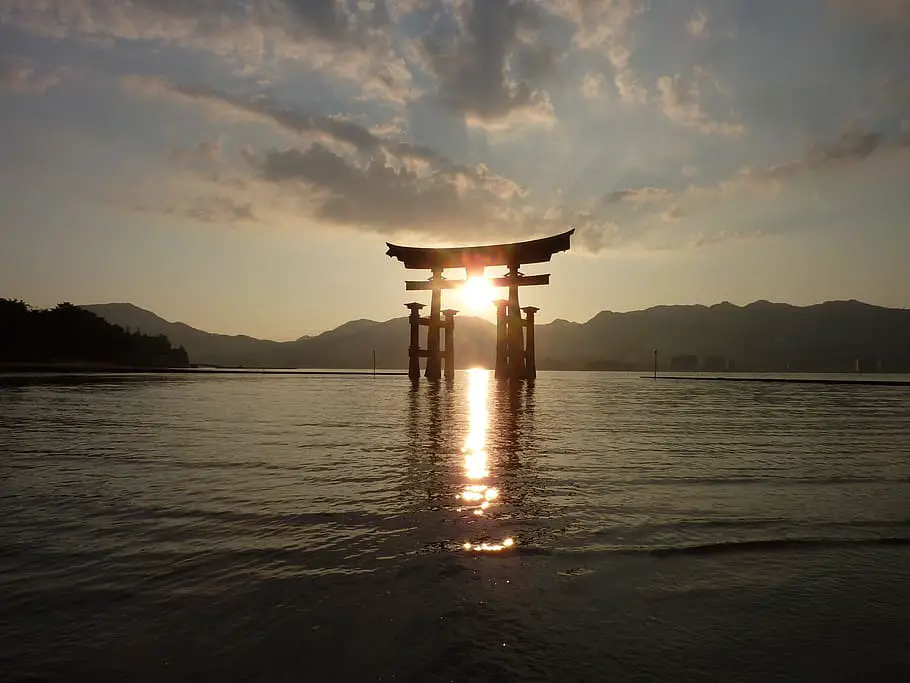
We know we have already covered Miyajima, but the torii gate deserves an entry on this list as its own for being an iconic landmark. We also wanted to inform you that the shrine of Itsukushima is under repair in 2020, which means you won’t be able to visit the place before late summer.
The Japanese government is working through the coronavirus crisis to make the place up and running. When you can travel, definitely take some time to watch the water change color while the floating tory gate lights up the background.
7. The Kintaikyo Bridge in Iwakuni
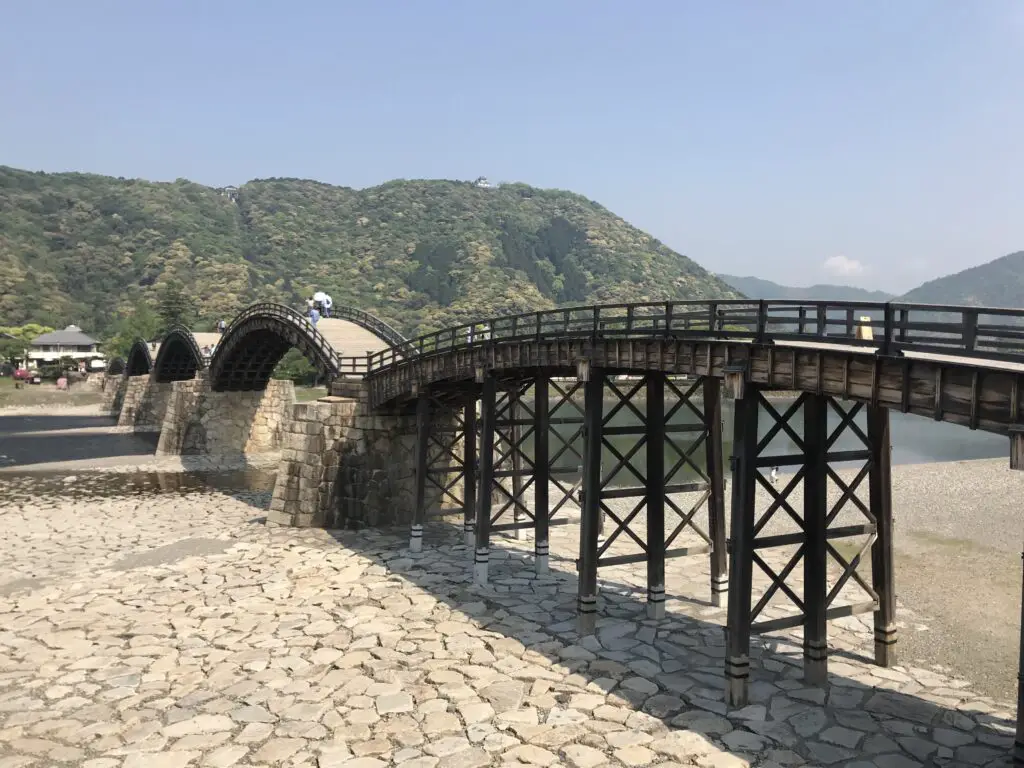
This place has a lot of history and is just as iconic as the torii gate. It has stood the test of time for centuries. The wooden construction is arched into elegant shape over pillars made of stone. The whole structure stands over the Nishiki River and is a sight to behold.
The bridge was initially built when currents on the river were super strong. In fact, the river has destroyed the bridge, and hence the need for the new bridge came up. The bridge was commissioned to a feudal lord names Iwakuni who has a statue at the gate of the Kikko park even today.
Iwakuni has been struck by natural disasters, typhoons, and other tragedies, but the bridge still stands after 300 long years. The country has been exhausted by countless wars in the past, and that is why the bridge which stood for 300 years collapsed due to prolonged neglect. But the townspeople rebuilt the structure in the last 1950s. renovations are still going on to ensure the bridge never falls apart every again. Visitors must pay a price to walk across the bridge, as it is not allowed to be used as a normal pedestrian bridge.
8. Car Lover’s Paradise, The Mazda Museum
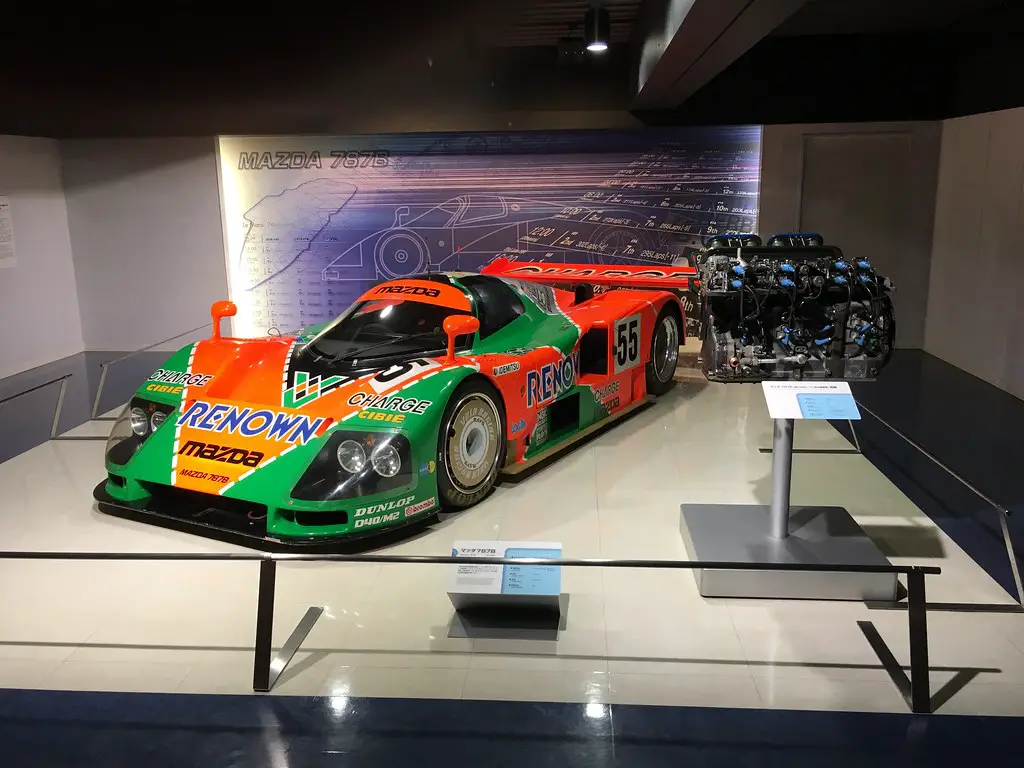
Hiroshima is home to Mazda. The headquarter of the global giant in the automotive industry. Naturally, there is a museum dedicated to cool cars they have made through decades. You can visit this as part of the factory which is also open to the general public for viewing.
Mazda still makes millions of cars every year, but the unique and rare beauties they have saved in the museum are beyond comprehension.
You need to make a reservation if you want to visit the museum. You should do this in advance because most tourists love hitting up this spot, so naturally, there is a high demand for the guided tour. On the plus side, the tour is free. All you have to do is call their phone at 082-252-5050 or visit their website to make a reservation.
The entire tour is about 90 minutes long and you get to know the history of the car company while enjoying vintage vehicles. There is also a vehicle assembly line, where you get to witness how cars are assembled part by part. This is one of the most popular aspects of the entire tour, and we are sure it will get you plenty excited. You can head off to the souvenir shop when you are done with the tour.
Also, the weekends are closed for tours. If you want to visit when the guided tour is being conducted in English, you need to remember the time is between 10 AM to 1:30 PM on the weekdays.
9. Stroll Down The Memory Lane Through Time In Takehara

This is the heritage center of Hiroshima. That means every sight in this place is straight out of a history book page. There are plenty of heritage buildings in combination with shops, food bistros, and museums. The streets are cobbled and look gorgeous.
If you have read about the Edo era in Japan , then you will find this place to be one of the best sights. There aren’t many tourists in this town, and you will have a much-needed break from the hustle-bustle that the city of Hiroshima offers. This is a quiet place of reflection and is extremely peaceful to have a stroll on.
We recommend to don’t take a ride to explore this place. Walks around the labyrinth of cobblestone path and experience the rich culture of Japan firsthand. If you get lost in this place, the locals will guide you to the nearest bus stop, so don’t worry and just get moving.
When you are tired from the walking, you can head off to a café to indulge in some authentic sake and soba, which are famous in Takehara.
You should also make a plan to keep the Saihoji temple on your travel route in Takehara. It’s situated on top of a hill and you have to travel through the lush green forest floor to reach the temple. From here, you can see the whole town as a picturesque landscape.
You can reach the beautiful town at a very cheap price if you take the bullet train from Mihara, which will cost you around 10 dollars. The ride takes about 30 minutes, and even the ride is something you will thoroughly enjoy. If you haven’t had a lot of time on the trip, save it for last because the town is also located 30 minutes from Takehara airport. You can make this the last stop on your trip.
10. Oyster Island in Miyajima
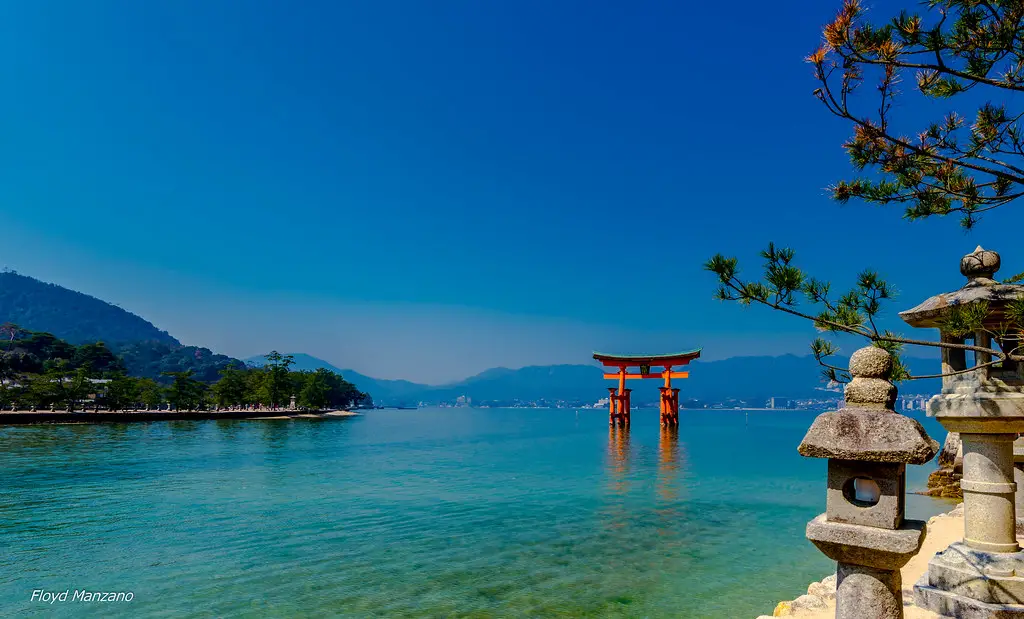
The island is not only famous for its scenic beauty and the shrine. There are also many oyster beds surrounding the island. Fans of seafood take notes head off to any shop here and you will get the freshest oyster right from the sea. Further, the streets of the island are lined with the delicacy and will offer you cooked or raw dishes at a great price.
What’s more, the island is also famous for Momiji Manju, a foodie delight. It is a bun that is built to look like a maple leaf.
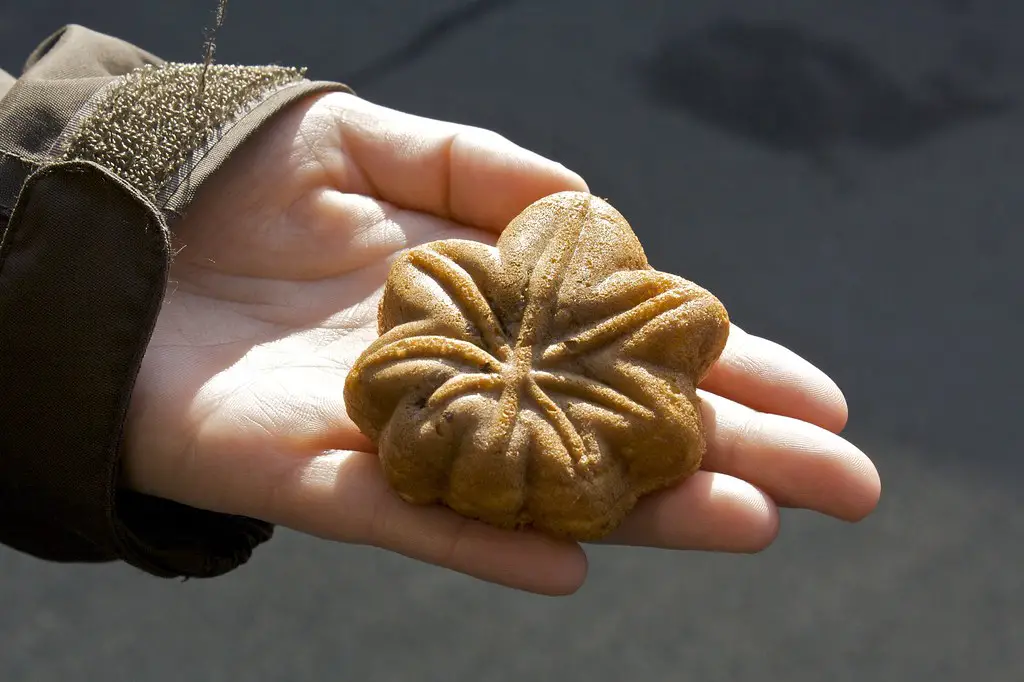
The insides are filled with red bean or matcha paste, either of these varieties is absolutely killer and will satisfy your cravings for savory delights. Bite through the buns while you shop for tchotchkes related to deer and torii gate at the local shops at absolutely fantastic prices.
You can reach this place very easily by taking the train from Miyajimaguchi Station. If you have a JR pass, this train ride is also covered under it.
Otherwise, you will have to pay around 5 dollars to go one way. There is also a ferry ride to take you to the pier at $2. Both of these are covered by the JR pass. Now you have enough reasons to head off to Hiroshima next summer instead of Paris!

A software engineer, entrepreneur, and Japanese culture enthusiast. I travel the world while working from my laptop and try to visit Japan as often as I can. About Eli Civil

You May Also Like
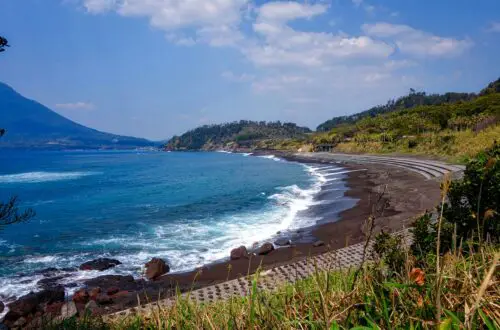
Kagoshima is Worth Visiting: Here’s Why!
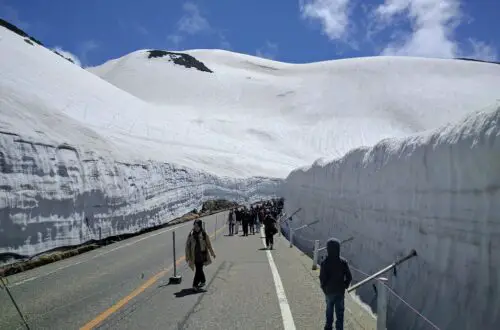
Best Time to Visit Alpine Route in Japan
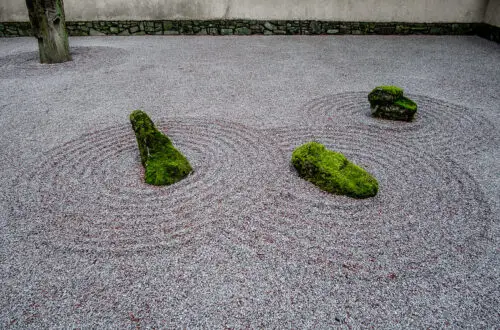
All About Zen Gardens of Japan

Travel, culture, and stories from Japan.
The ultimate 2-day hiroshima itinerary.

The problem with having a holiday in Japan, is that you often don’t have as much time as you like in any one area. Of course, when you make the trip from the your home country to Japan, you’ve probably already decided you want to see as much as possible, and I really don’t blame you. As such, I’ve created a first time Hiroshima Itinerary that should give you a great overview of the city, without costing an arm and a leg or taking up too much time.
This is the exact itinerary I followed when I took my trip to Hiroshima, so you can rest assured I’m not just plucking thing out of the air. I’ve done them all, and I wan’t you to have the absolute best experience if you’ve paid to come all this way.
Table of Contents
Is Hiroshima worth visiting?
If you’ve only got a small amount of time in Japan, you may be contemplating whether or not a visit to Hiroshima in the first place. I’m here to tell you that, if you can make it happen, it’s a fantastic idea and a city I wish I’d visited a lot sooner.
While it might not be the first place you’d consider, I urge you to give it the time of day. I prefer it as a place to visit than I do Osaka. Perhaps that’s because of its laid back vibe, or cute streetcars and open spaces, I’m not sure. I just like the feeling here a lot more than I do Osaka.
Hot Tip: If you’re in need of a multi-currency bank account, or simply want a card that you can use in Japan without incurring those pesky hidden fees, Wise is the bank to choose. They’re super quick to set up, and a great alternative to converting physical cash before you arrive. I’ve used them for a long time and they’re ideal for travelers!
About the Hiroshima Itinerary
You don’t have to follow it word for word, it’s sort of a whistle-stop tour. I’ll tell it to you in chronological order, but take a moment to decide whether each part is something you’d really like to do or not. In fact, I’d suggest you do that with every itinerary you see, make it your own!
I’ll also be imagining you’ve arrived in Hiroshima in the morning of the first day (fairly tired from travel) and will have two nights in the city, leaving on the third day. For the sake of ease, we’ll also base it on sunny weather. Visiting Hiroshima in the rain is another thing altogether!
Day 1 in Hiroshima
Storing your bags in hiroshima station.
We already know how much Japan loves to promote hands-free traveling, and visiting Hiroshima should be no different. Those streetcars are far too small to lug all your things with you for the day! So let’s start the itinerary off by storing your luggage, which you’ll be able to pick up again at the end of the day.
Why Store your bags in Hiroshima Station?
It’s fairly central so makes a good base for the first day, at least before you can check into your Airbnb or hotel or hotel. Having backpacked heavily through a lot of Japan, I can tell you first hand how little fun it is on small modes of transport like the streetcar.
What if no more Hiroshima station lockers are left?
If you’ve followed the signs to the nearest coin lockers and you happen to find them full, you’ll have to do what we did and pay for baggage storage from the company inside the station. Luckily (or strategically), they’re located next to the coin lockers.
As we visited at a busy time, this is exactly what we had to do. It cost ¥500 per item to store it for the day (return by 6 o’clock), and while that’s technically not too much of an outrageous price, it was still a little more than if we had stuffed several bags in one locker.
The Hiroshima Tourist Pass
The Hiroshima Tourist Pass is a great way to explore the city of Hiroshima without breaking the bank. This pass allows you to travel around on public transportation for 1 day (¥1,000), 2 days (¥1,500), or 3 days (¥2,000). It’s perfect for visitors who want to experience all that Hiroshima has to offer in a short amount of time, and it’s a great way to see different parts of the city.
The best part about this pass is that it includes unlimited rides on all of the local buses and streetcars within Hiroshima City for your chosen amount of days as well as discounts at various attractions in the area such as museums and shopping centers. This makes exploring the city much more economical than purchasing individual tickets every time you want to visit a new destination.
Where do I buy the Hiroshima Tourist Pass?
The Hiroshima Tourist pass and Hiroden Streetcar and Ferry Ticket (which we’ll talk about in a second) can be purchased from any major train station or tourist information center in Hiroshima, though if you’re following this itinerary then your best bet is to grab one at the streetcar platforms directly outside Hiroshima Station. Here’s a map to give you a better understanding:
If you plan on visiting multiple destinations during your stay, perhaps you want to add a few different ones than I’ve included in this 2 day itinerary for Hiroshima, or maybe your accommodation is a little further afield, then investing in one of these passes will save you both time and money!
However, if you are planning an extended trip throughout Japan then there are other similar tourist passes available that cover larger areas across multiple prefectures. It’s worth remembering, though, that your JR Pass is NOT valid on the tram lines, and with this being the most extensive form of transport in the city, you may want to budget for a few trips at least.
Hiroden Streetcar and Ferry Ticket
If you have already figured out that you won’t need to get on busses, and only need a single day’s pass, get the Hiroden Streetcar and Ferry Ticket. This is the one we went for, and it definitely saved us a few yen.
I’m not entirely sure if the Tourist pass would have been more economical, but I think it’s important to grab at least one of them if you intend on visiting Miyajima or attractions that require the use of streetcars or busses.
All we did was ask to buy one outside the streetcar platforms at Hiroshima station and then scratched off the year, month, and date. After that, it was simply a case of showing it to the conductor on the streetcars and the Matsudai Ferry at Miyajima, and we were good to go!
Sit by Motoyasu River
Believe it or not, we’re going to start the first part of this first day in Hiroshima off by chilling out. If you’ve just got the Shinkansen from somewhere like Osaka, although it’s a great way to travel, it’s also tiring. So there’s no better place to relax and ground yourself in the present moment than sitting on a grassy hill by the river in Hiroshima.
I honestly cannot tell you how much I enjoyed this part of the trip, so please don’t miss out on it if it’s good weather. We’ve talked about some of the most relaxing spots in Tokyo a while ago, and if I were to make a list like that for Hiroshima, this would definitely feature! Nothing quite like watching the world pass you by while you chill out!
The gentle, rolling waters of the Motoyasu River provide a soothing backdrop as you take in views of nearby mountains and cityscapes. There is an abundance of lush greenery that provides respite from bustling urban life. And with plenty of outdoor seating available, it’s easy to find a comfortable spot to sit and relax. (though I’d highly recommend going for a spot on the grass!)
On any given day, you’ll find locals and tourists alike enjoying this picturesque location, and that was certainly the case when we got there. That said, at peak season it was incredibly quiet, especially compared to places like Kyoto. Families gather around picnic baskets filled with their favorite dishes while couples canoodle (though, this is Japan so they kind of, don’t…) on blankets spread out across the grassy banks.
Those wanting something simpler during their Hiroshima 2-day itinerary can just lay down a blanket or coat, and soak up some sunshine for a couple of hours before continuing on with their day. It may feel like you’re wasting time during your itinerary by doing this, but I’m hugely passionate about recommending that people take time to rest during their trip to Japan. Not only will it make you feel better physically, but it’ll also help you live in the present moment and make your memories more vivid and all the more special.
So, whether you’ll use this time to plan your next trip, or just to simply read a book under the shade of the trees, it’s a worthwhile addition to your 2-day Hiroshima itinerary.
Visit the Peace Memorial Park
Visiting the Peace Memorial Park in Hiroshima is an experience like no other and absolutely one you should do during your time in the city. Located in the heart of the city, the park serves as a reminder of the heartbreaking events that occurred in 1945 when an atomic bomb was dropped on the city. It is a place to honor and remember those who lost their lives and were affected by this tragedy.
The park itself is filled with monuments, memorials, and artwork dedicated to preserving its history and educating visitors. It features several structures including the Atomic Bomb Dome, Cenotaph for A-bomb Victims, Hiroshima National Peace Memorial Hall for Atomic Bomb Victims, A-Bomb Hypocentre Monument, Flame of Peace Monument, and many more. Each structure serves as a symbol of reflection and remembrance of those who perished during World War II.
The Flame of Peace Monument
Since it was lit on August 1st, 1964, it hasn’t stopped burning. In fact, it won’t stop burning until all nuclear weapons in the world are expelled. Perhaps it’s an eternal flame, but I sincerely hope not.
When you visit the Flame of Peace Monument in Hiroshima, you are also surrounded by messages from survivors who have chosen to share their stories with future generations so that they never forget what happened here or take peace for granted again. Walking around this area, you can’t help but be moved by all that has been lost and inspired by those who have kept the Flame of Peace burning for so many years.
I’m not a fan of over-touristy areas in Japan, especially where flocks of people try to get exactly the same photo. Part of me feels like a lot of these people are missing the point of being here, but another part of me can of course understand the significance of this spot
The Hiroshima Peace Memorial Museum
In addition to these somber reminders are several other attractions inside the area like museums and art installations that explore different aspects of Hiroshima’s history before and after the bombing.
The Hiroshima Peace Memorial Museum is one of the most important attractions to visit and costs just ¥200 to enter. I highly recommend visiting during your 2 days in Hiroshima, though the experience itself is unbelievably draining, of course.
The Hiroshima Peace Memorial Museum gives visitors a chance to learn more about this harrowing event through informative displays such as photographs taken right after the bombing and artifacts that survived it. Other attractions include interactive exhibits like Peace Boulevard which tours visitors around key sites in the city such as Nagarekawa Park or Children’s Memorial where origami cranes are hung by those wishing peace on Earth.
Hiroshima’s Peace Memorial Park is not just a solemn reminder but also an inspirational beacon of hope for all humanity. It is here that people from all over can come together to pay respects to those who lost their lives during this tragedy while also looking towards a brighter future with peace and harmony amongst all nations and peoples. Visiting this site will provide you with a greater understanding of what happened during one of history’s most devastating events as well as an appreciation for human resilience in overcoming hardship, in order to create a better tomorrow for all of us.
This took us a few hours to get around, so it’s worth keeping that in mind if you’re going slightly off the itinerary. While it’s undoubtabley a must to visit the park, it’s important to remember that Hiroshima is, and should be remembered for so much more than just a city that was bombed.
Grab an ice lolly
I don’t care if you’ve never seen an itinerary with ‘Grab an ice lolly’ in it, you’re going to need one after what you’ve just seen.
If you’re looking for personal ice cream recommendations, I would recommend Gari Gari. I love them! When we were in Hiroshima we picked up one of them, and some tasty grape-flavored ice (a little odd, I won’t lie), highly recommended!
Visit Hiroshima Castle
We actually did this and the next attraction on the second day, but looking back it was probably a better idea to do it on day one. Depending on how long you spent at the park and museum (and how early you arrived in the city), you can either put this in afterward or save it for the latter half of day two.
Now, I’ve already talked about how I don’t like Osaka Castle as a tourist destination. It’s too busy and the interior of the castle was a real letdown. Hiroshima castle was completely different. It costs just ¥370 ($2.80) to get inside, and it should only take you an hour or so to get around the interior and exterior of the castle.
That means it’s great to fill a small amount of time on your itinerary, but you shouldn’t need a full half a day. When you’re only in Hiroshima for 2 days, that’s a really handy thing! Plus, you don’t even need to go inside if you don’t want to, you can get some pretty stunning views of the castle from the grounds and if you’re on a time crunch, that’s still a great thing to do.
Visit Shukkeien Garden
I’ll be writing a separate post about Shukkein Garden at a later date, so I’ll just briefly touch upon it in the article. Situated just a short walk away from the castle, Shukkeien Garden is the perfect way to round off your day and be at peace with the city.
Shukkeien Garden in Hiroshima is one of the most beautiful and picturesque places to visit in the area. It is a traditional Japanese landscape garden (a big one at that!) that has been carefully designed and rebuilt, making it an ideal spot for visitors who want to take a moment to be at one with Hiroshima.
The entire garden was destroyed in the bombing with just the concrete bridge (Kokō-kyō) standing at the end. Since then, it’s been meticulously rebuilt to its former glory. At just ¥260 per person , it’s a fantastically cheap deal like many of Japan’s attractions and well worth the money.
The garden features many ponds, shrubs, and trees, as well as pavilions and bridges which provide stunning views from different angles, but the main attraction at Shukkeien Garden is its large pond known as ‘Takuei’. This pond provides a tranquil atmosphere with its reflection of surrounding foliage in its waters, while offering plenty of opportunities for the photography enthusiasts among you to capture amazing shots (I literally shot so much over here!).
In addition to this central feature, there are also several small streams running through various parts of the garden adding a touch of serenity to everything. Visitors will also find several teahouses located within Shukkeien Garden, which provide a perfect opportunity to rest and take in the surrounding scenery.
Along your journey, which I urge you to take your time on, you’ll come across a herbal garden that was once used for the Emperor, an incredible valley, a waterfall, rice fields, plum orchards, and more secret trails than you’ll be able to handle.
Even if you aren’t really a fan of Traditional Japanese gardens, I urge you to add this to your 2 days in Hiroshima at some point. You won’t be disappointed!
Food and Accommodation
After what feels like a surprisingly long day in Hiroshima, it’s probably time you grabbed something to eat and made your way to the accommodation you’ve booked. But where should you book in the first place?
Before we get to that, let’s talk about food. I just want to say that we only made it to one restaurant in Hiroshima as it was peak season and we forgot to book. If you want something specific and it’s at a busy time of year, book ahead. I’ll link to that restaurant review article when it’s up.
Hiroshima Style Okonomiyaki
In case you’re looking for a more general suggestion, I’d say you really can’t go wrong with Hiroshima-style Okonomiyaki.
Hiroshima-style Okonomiyaki is a savory dish that you should really make an effort to eat when visiting Hiroshima for these two days. The name “Okonomiyaki” literally translates to “grilled as you like it”, and the dish certainly lives up to its name. It’s an incredibly versatile food that can be prepared in many different ways depending on your taste preferences. For instance, in Kyoto, we had Okonomiyaki with mochi, and it was literally one of the greatest things I’ve tasted over here so far!
Unlike normal Okonomiyaki which uses only batter for grilling on a hot plate until golden brown, Hiroshima style Okonomiyaki combines all ingredients together before cooking. Some people believe it gives it an even more flavorful taste compared to regular Okonomiyaki, but on the whole, it’s just personal preference.
This tasty treat has been around since the early 1900s but has only gained popularity in recent years due to its delicious flavor combination and ease of preparation. Not only is it incredibly tasty but also very filling; one serving usually contains enough food to satisfy even the hungriest stomachs! Plus, unlike some dishes from other regions of Japan, Hiroshima-style Okonomiyaki is relatively affordable.
There are plenty of restaurants and street vendors serving up the delicious treat so you won’t have to worry about going hungry! Though as I said earlier, if you’re after this dish from a specific, perhaps well-known place, it pays to be prepared to avoid disappointment. It’s also a fantastic way to experience the culture of the city, and something I’d highly recommend.
Airbnb or Hotel?
You’ll either prefer one or the other when you travel, and it’s really completely up to you. I like a mixture of both, especially when it’s a Japanese hotel. That said, we went with an Airbnb in Hiroshima and couldn’t have been happier.
If location is your biggest concern, you’ll be able to book a flat (Airbnb) in the center of the city or a hotel room. They’ll run slightly higher than average due to the location, but sometimes it’s really nice being so close to everything.
If you don’t mind a small commute (10 minutes or so) and are looking for something a little more characterful, I’d suggest booking an Airbnb out of the city. We booked one in Fuchū-chō, a quick bus ride from Hiroshima Station, and it was quite honestly the best Airbnb I’ve stayed in Japan . It was in a nice little quiet suburb with nothing but a Lawsons close by, and we were lucky enough to have one of the kindest hosts I’ve known.
She made our entire experience very personal, met us at the bus stop, and even had tea with us on the last morning. You really can’t get any better than that!
Day 2 – Miyajima
Wondering if Miyajima is worth visiting? Check out that article!
Visiting Miyajima Island (depending on the time of year you go) is a must-do experience for anyone visiting Hiroshima. Located just outside of the city, it’s an easy day trip to explore one of Japan’s most iconic sites.
How to get to Miyajima
The cheapest way to get there is by taking the streetcar from Hiroshima Station and then transferring to the Matsudai ferry (Miyajimaguchi Station) which takes you directly to Miyajima Island. For those of you traveling with a Hiroshima tourist pass or the Hiroden Streetcar and Ferry Ticket, this journey including the ferry is completely free.
If you’ve got the JR Pass, you’ll still make your way to Miyajimaguchi, but get on the JR Ferry instead of the Matsudai. It’s often a little busier because of the number of people with the JR Pass, but it’ll be free for you!
The most convenient way is probably by taking the ferry from just outside the dome you visited yesterday. Unless you’re flush with yen, I’d avoid going this route.
Once you’ve arrived at the island, there are plenty of attractions to explore. The iconic ‘floating’ torii gate is a must-see and is best viewed during high tide when it appears to be “floating” in the sea. Admittedly, this was hugely busy when I was there, and it didn’t help that we visited during cherry blossom season .
It’s definitely cool to see, but only for a minute before I got annoyed at the number of people. If you fancy, you can also wait until the tide goes out and then you’ll be able to walk right up to it.
Other attractions include Daisho-in Temple, which has beautiful gardens and contains over 500 stone statues; Momijidani Park, with its vibrant autumn foliage; and Mount Misen, which offers spectacular views of Hiroshima Bay. If you’re after a bite to eat, you should try to grab some of Miyajima’s famous oysters or get a taste of Hiroshima’s regional sweet, the momiji manju (a maple leaf-shaped cake).
At the end of your trip, you can take a boat ride back to Miyajimaguchi and grab a streetcar back to Hiroshima Station. Be sure to take note of the ferry times before you set off for the day on the Island!
While you could quite easily spend more than 2 days in Hiroshima, this Itinerary is more than enough to get a general feeling of the city and its culture. Some may argue that you could fit more into these two days, but it’s imperative to give yourself enough time so that you can actually enjoy the process rather than feeling like you’re running from one place to the next without enough time to catch your breath.
Is Hiroshima somewhere you’d like to visit, or maybe already have and I’ve missed out a key spot? Let me know in the comments below!
FAQs about visiting Hiroshima for 2 days
Can you recommend any restaurants or shops i should check out while visiting hiroshima.
Answer: Sure! There are plenty of great restaurants and shops worth checking out while visiting the city of Hiroshima! Some popular restaurants worth trying include (a Hiroshima style okonomiyaki restaurant), Nagataya (another incredible okonomiyaki spot), and Parco della pace (an awesome vegan pizza restaurant that tasted so damn good!).
As for shopping spots, Hondori Shopping Arcade located near Peace Memorial Park is likely your best bet. If not, there’s a huge number of shopping malls dotted around the city, all you need to do is type it into google maps and see what’s near you!
How much time should I allocate to exploring each attraction?
Answer: That really depends on what type of experience you’re looking for during your visit! While we only have 2 days in Hiroshima, you can absolutely spend longer in a place if it speaks to you!
I found myself wandering around Shukkeien Park for hours because it was so beautiful. But if you just want a general suggestion then allowing 1-2 hours per attraction could make sense, though things often take longer than we first thing.
Are there guided tours available that cover different attractions around the city?
Answer: Yes – there are several guided tours available through various companies offering unique experiences throughout the city such as private walking tours with an experienced guide or visits via hop on hop off bus tours that cover multiple locations with one ticket purchase. Do research online before arriving so that you can decide which tour option works best for your schedule!
If you’re looking for my opinion, I highly recommend checking out Viator Tours. They offer things like a full day private tour of Miyajima and Hiroshima which includes everything we’ve done in this itinerary but in just one day. While that may be too much for some to do, if you’re really on a time crunch, it could be the best way to explore the area.
Is Hiroshima safe for solo travel?
Answer: As with most places in Japan, traveling solo around Hiroshima is generally considered safe as long as you remain aware of your surroundings and use your common sense. Nowhere is 100% free from crime, but on the whole there are no major concerns for solo travel and safety in Hiroshima.
Are there any nearby towns I can easily access within 2 days?
Answer: Thinking of traveling somewhere else in your two day itinerary? Or perhaps you’re considering adding an extra day on? Great! Within two days you could easily access nearby towns such as Onomichi, Iwakuni, Hatsukaichi, Mihara & Takehara. All of those are accessible by either train lines or highway buses departing from Hiroshima Station. Each town offers its own unique set of attractions & activities so plan accordingly depending on how much time you have! Ah, why is there just never enough time!?
You might be interested in

Yusha Kobo Keyboard Specialty Shop in Akihabara
While I don’t claim to be a custom keyboard expert, I do type a lot. While I’m traveling, most of that typing is done…
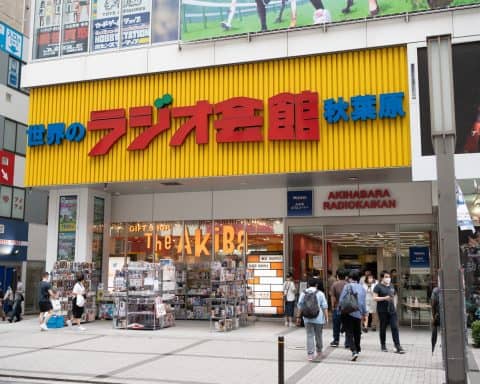
The Complete Guide to Radio Kaikan
I start lots of these introductions by telling you how I love geeky things, and this is no different. Akihabara is an otaku’s paradise…
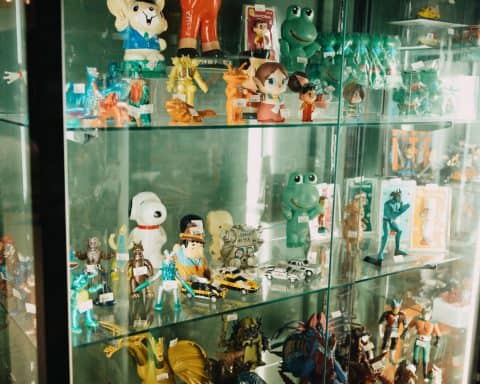
Nakano Broadway: Is It Worth Visiting?
If it sells any form of retro, vintage, or modern geekery, I’m all about it. I’ve visited Akihabara extensively as that is usually my…

HARD-OFF: The Magical World of Japanese Second-Hand Stores.
There are a few things you should absolutely plan to do on your first trip to Japan: Cross Shibuya Scramble, Visit the country’s ancient…
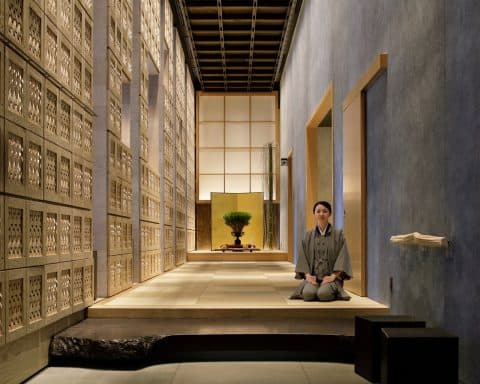
Step inside Tokyo’s first luxury ryokan.
Is walking around Tokyo making you tired? How about resting in the capitals first and most luxury ryokan!…

Why are Flights to Japan so Expensive? (and 9 Ways to Get Them Cheaper!)
Other than Shinkansen and Japan’s last sleeper train, flying is probably my transport method of choice. Unfortunately, there was a chunk of time when…
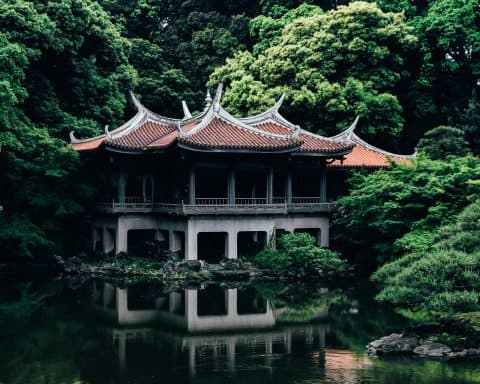
5 relaxing spots in Tokyo
Tokyo got the best of you? In need of somewhere to relax in the big city? I've done the research to bring you the…
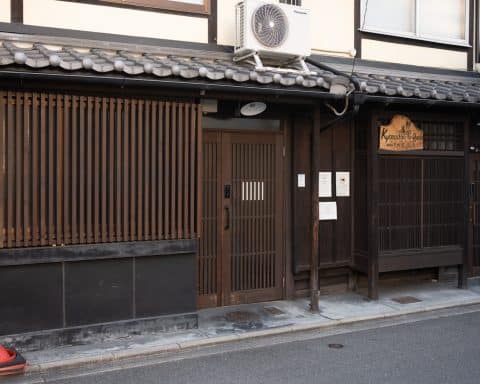
Should you Book an Airbnb or Hotel in Japan?
I don’t know about you, but whenever I travel or go on vacation, I always consider two possible forms of accommodation: Airbnb and Hotels.…
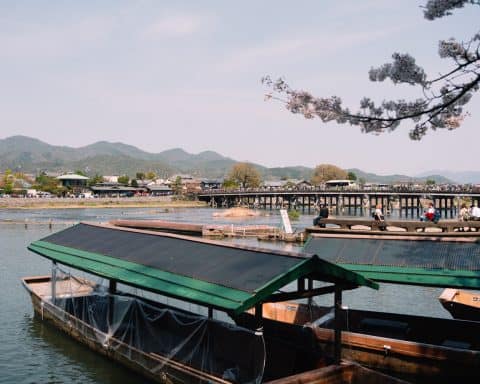
Is Arashiyama Worth Visiting?
Whenever I write these ‘Is it worth visiting’ type of articles, my decision usually lines up with what most people think. However, this wildly…
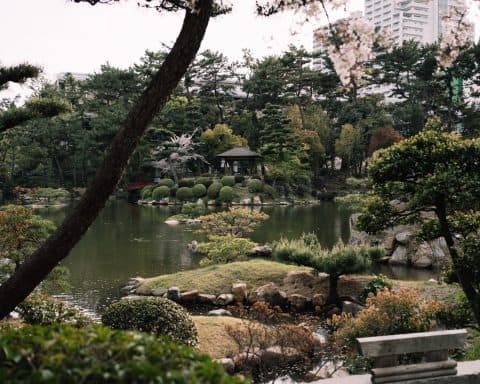
18 Reasons Why Japan is So Photogenic
I often consider the questions ‘Why is Japan so photogenic?’, and ‘Why is Japan so beautiful?’. I’ve been in Japan for a year now,…

Jonny Gleason
Jonny is the founder of A Day of Zen and has an unhealthy obsession with Japan. In 2022 he moved to Japan on a mission to give his audience the best possible information. He's helped over 300,000 plan their trip so far, and is eager to make that number much bigger!
Read the story...
Leave a Reply Cancel reply
Your email address will not be published.
Save my name, email, and website in this browser for the next time I comment.
Notify me of follow-up comments by email.
Notify me of new posts by email.
Copy short link


Is Hiroshima Worth Visiting?
by Melissa Giroux | Jul 14, 2023 | Asia , Japan , Travel Tips
Hiroshima is known around the world for its tragic history.
Wondering if Hiroshima is worth visiting ? If you have limited time in Japan, you may wonder if Hiroshima is worth visiting.
Ready To Travel? Don't Go Without Travel Insurance.
Check Prices
Is it worth your time? Is it worth the trip? Or should you focus on more popular cities instead?
In this guide, we’ll help you decide why Hiroshima should be (or shouldn’t be) on your Japan itinerary.
We’ll discuss the pros and cons of visiting Hiroshima so that you can see if it’s the right destination for you.
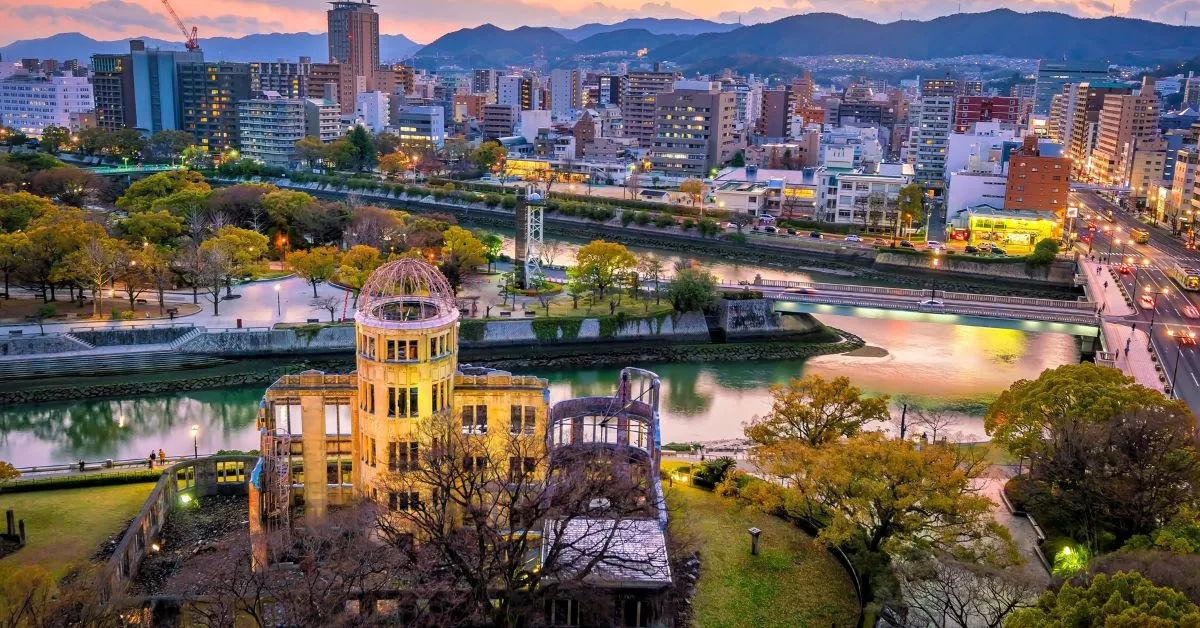
The Pros Of Visiting Hiroshima: Reasons To Visit
There are many reasons why people love visiting Hiroshima. Let’s talk about the main reasons why you may want to visit Hiroshima.
It’s A Great Spot To Learn About Japan’s History
One of the best parts about visiting Hiroshima is that it’s a great place to learn and understand Japan’s history.
Planning your upcoming adventures? Travel by bus! (It's cheap!)
You can visit Hiroshima Peace Memorial Park, which is filled with memorials of the atomic bombing. It’s an important part of history and a place that should be visited and respected.
While you’re there, you can visit the museum. Audioguides are available. Alternatively, you can read the signs to learn more.
It’s A Good Place For Day Trips
Hiroshima is a great place to use as a base for day trips around the area. From Hiroshima, you can easily visit Miyajima Island, which is just a short trip away and full of beautiful sights.
While you can use it as a base to explore the areas that are less touristy, it’s also very accessible from main cities like Osaka or Kyoto.
In fact, you could visit Hiroshima from there easily.
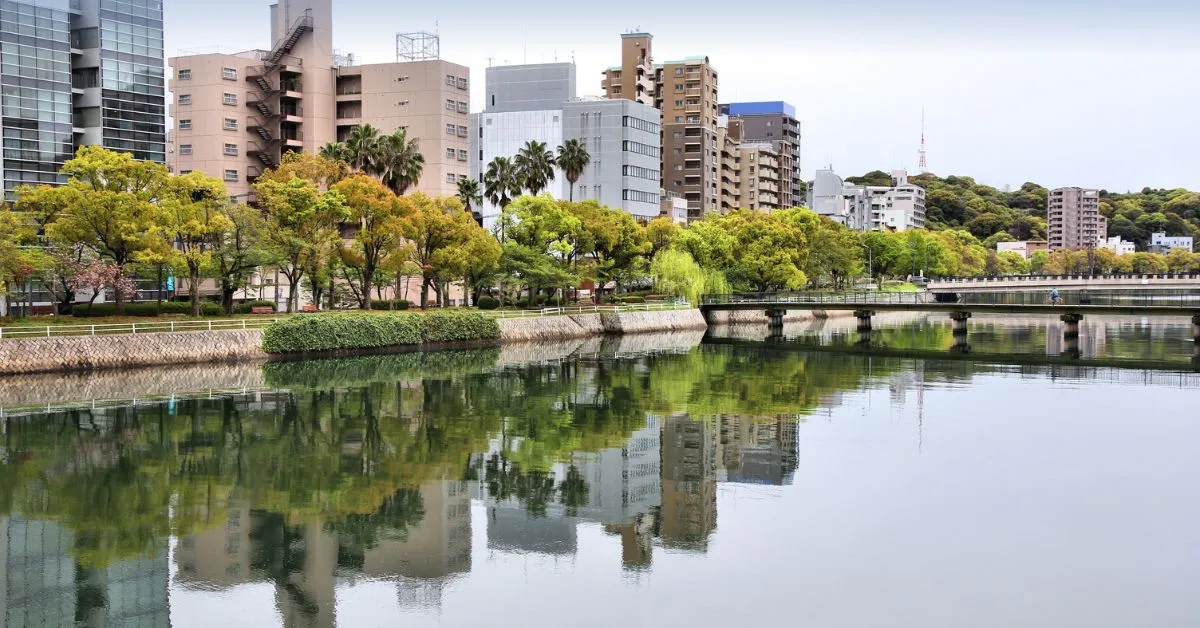
It’s Easy To Get To Hiroshima
You can get to Hiroshima from Kyoto and Osaka by train.
This makes Hiroshima a great destination for those who want to escape from the hustle and bustle of the bigger cities but not go too far away.
You can take a direct train from the main cities, but they can get booked out very quickly, so we suggest you book it in advance. With the JRpass , it’s quite easy.
Want To Visit Hiroshima?
Make sure to book a stay in one of the best hotels in Hiroshima. Best hostel: The Evergreen Hostel Best mid-range hotel: KIRO Hiroshima Best luxury hotel: Sheraton Grand Hiroshima Hotel
The Cons Of Visiting Hiroshima: Reasons To Skip It
Now that we’ve looked at the pros of visiting Hiroshima, let’s take a look at the cons.
Here are some reasons why you might want to skip Hiroshima and visit another destination instead.
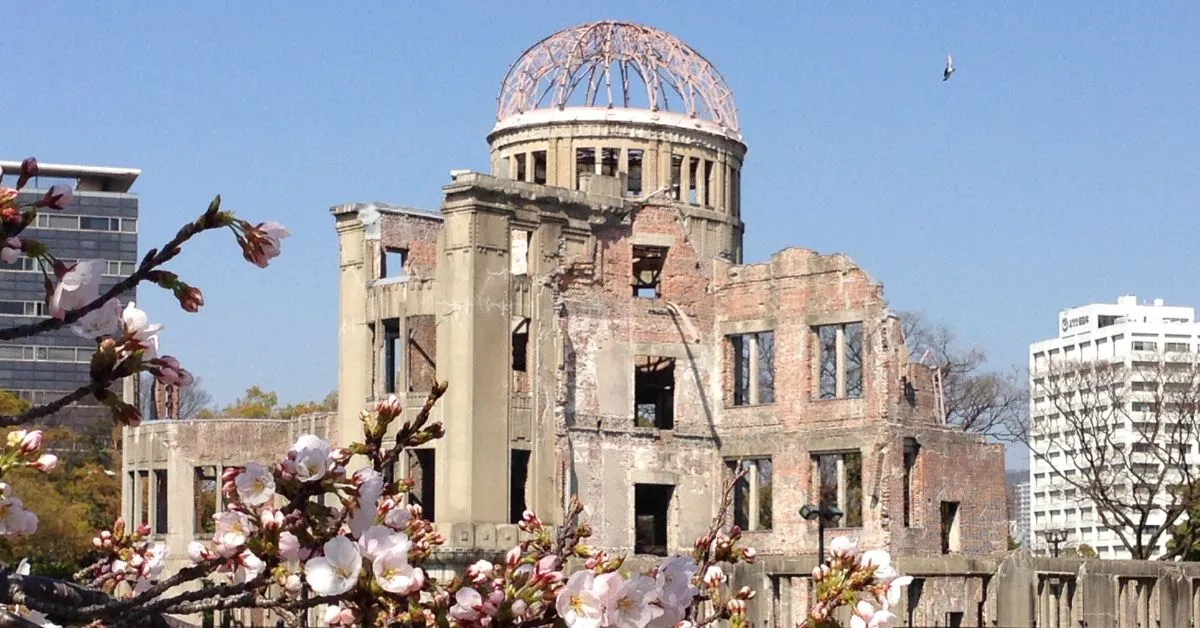
There’s Not Much To Do
Hiroshima is known for its history and tragedy. Once you have visited the Memorial Park and the museum, you may wonder what else you can do.
While you might have the time to make a trip to the nearby areas, you might just want to focus on the main cities if you have limited time in Japan.
Many travelers prefer to visit Hiroshima as part of a day trip so they can have more time in places like Kyoto, Osaka, or Tokyo.
If you decide to stay in the area, we suggest you stay for one or two nights. This way, you’ll have plenty of time to visit the museum and Memorial Park.
It’s A Touristy Spot
One of the downsides of Hiroshima is that it’s a very touristy spot. The town is popular with foreign and Japanese tourists, so you’ll find many crowds here.
However, there’s enough space in the museum and the park for you to learn about Hiroshima’s tragic history.
You could avoid the crowd by traveling in spring, winter, or autumn instead.
The Final Verdict: So Is Hiroshima Worth Visiting?
Is Hiroshima worth visiting? The answer is: it depends.
If you’re looking for a chance to experience to learn about Japan’s history, then Hiroshima is definitely worth visiting.
However, if you’re on a tight schedule, other places in Japan might be better suited for you.
Ultimately, whether or not to visit Hiroshima depends on your preferences. But if you do decide to go, make sure to stay for one or two days to have enough time to visit the museum and Memorial Park.
We personally stayed two nights in the area, and Hiroshima was one of the highlights of our trip to Japan.
Traveling to Japan soon? Read one of the following guides:
- Is Hiroshima worth visiting
- How many days in Tokyo
- How many days in Kyoto

MY TOP RECOMMENDATIONS
BOOK HOTEL ON BOOKING.COM
BOOK HOSTEL ON HOSTELWORLD
GET YOUR TRAVEL INSURANCE
LEARN HOW TO START A TRAVEL BLOG
LEARN HOW TO VOLUNTEER ABROAD


- Experience the Best of Hiroshima and Miyajima in Three Days
This article may contain links to products and services we use and recommend. We may receive compensation when you click on links to those products. For more information, see our Disclosure Policy .
Download your Sustainable Travel Checklist and show the world you care
How much time should you spend in hiroshima and miyajima, when is the best time to visit hiroshima and miyajima, what are ic cards, how to get to hiroshima and miyajima, how to get around hiroshima and miyajima, map of accommodation, points of interest, eateries and transport.
- Day 1 - Travel to and first exploration of Miyajima
Where to stay on Miyajima Island
- What and where to eat on Miyajima
Miyajima deer advice
- Day 2 - Miyajima and Hiroshima
Where to stay in Hiroshima
What and where to eat in hiroshima.
- Day 3 - Hiroshima
What else is there to do in Hiroshima (if you have more time to spend)?
Other recommended experiences in hiroshima, culinary adventures, outdoor activities, what did you do in hiroshima and miyajima that i forgot to mention, author: sandra rosenau.
Hiroshima and nearby Miyajima Island should be on every traveller’s Japanese bucket list. From the iconic A-Bomb Dome [ Official website , Google Maps location ] in Hiroshima to the giant floating vermilion-coloured Torii off Miyajima [ Official website , Google Maps location ], there is an abundance of things to see and do. Whether you’re a history buff, a nature enthusiast or a foodie, our three-day itinerary will help you make the most of your time in this beautiful corner of Japan .
As travellers, we should all be aware of our travel behaviour and its environmental, economic and social impact; and make conscious decisions about it. Too often, we hear negative stories in the media about tourists behaving badly.
Here is your chance to tick some boxes and check out what it really takes to travel with a sustainable mindset.
The fine print: I agree to receive the Minimalist Journeys newsletter full of news, actionable tips and practical advice every month. I know I can unsubscribe at any time. I have read and agree to the Terms of Use and Privacy Policy .
Our short answer would have to be: As long as you can afford – there is plenty to see and do.
That said, we know many people wonder whether to include Hiroshima and Miyajima in a two- or three-week trip to Japan . If that’s you, we recommend setting aside three days, which will give you a good introduction to the area.
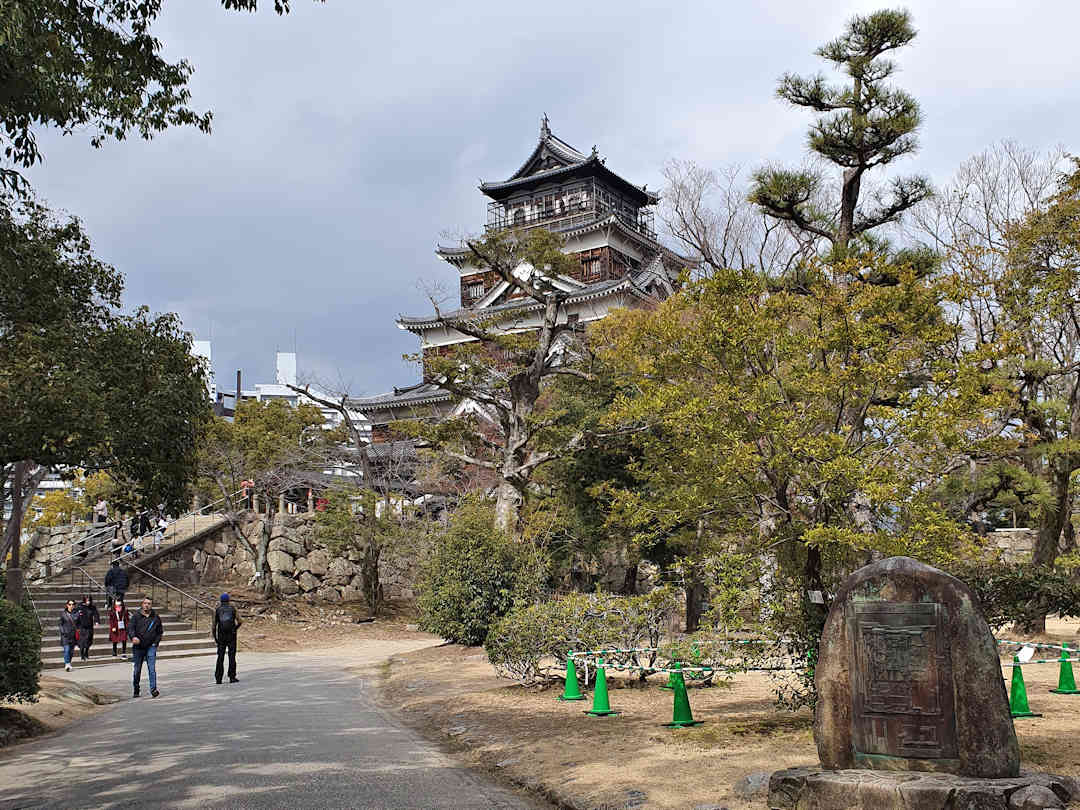
Among our absolute favourites, Hiroshima is welcoming and friendly with wonderful people
Based on our own experience, we recommend visiting between mid-February and mid-March:
- It will be chilly at night, but the days are (mostly) sunny with maximum temperatures in the high teens (Celsius).
- While you will miss the cherry blossom season, it’s a good time to see the plum trees in bloom, which is also very beautiful.
- It’s oyster season – a great opportunity to indulge in some local delicacies.

Mid-February to mid-March is a great time to visit Hiroshima and Miyajima - the plum trees are in bloom, and it's oyster season
In Autumn (especially the first half of November), you can experience the foliage changing colours, offering a stunning display of nature’s beauty.
If you prefer it to be a little warmer (and you don’t care so much about oysters, spring blossoms or foliage colours), May (except during Golden Week) and October are also great periods.
We recommend avoiding
- the cherry blossom season (usually the second half of March) and Golden Week (the first week of May), which are way too crowded to be enjoyable, and
- the summer months (June to September), as they are not only very crowded but also (uncomfortably) hot and humid.

Autumn is another great season to experience Hiroshima and Miyajima | Photo by Andy Jarrige on Pixabay
In Japan , you will come across the term IC card a lot (IC stands for Integrated Circuit ). IC cards are essentially plastic cards that can be topped up and the amount stored on the card is used for transportation - simply by tapping on/off at the card reader - and more and more at convenience stores and other places.
Each region issues their own version of the IC card, for example
- If you enter via Tokyo Narita or Haneda Airports, you would buy the Suica Card or PASMO card.
- If you enter via Osaka Kansai Airport, you will find the ICOCA card for sale.
Fortunately, 10 of the most common IC cards (including the two above) can be used across regions (and likely more will be added over time). Some regions (including Nagano and Okinawa prefectures) only allow their own IC card (at this stage) or cash.
Also, note:
- Cards (including any stored funds) will expire after 10 years of non-use, which means you can reuse the card if you return to Japan within that timeframe.
- You can return it (and get a refund of the money on the card plus the deposit you paid for the card itself) - as long as it's in the region you bought it.
- You can load the IC card onto your smartphone - via Apple Pay or Google Pay - but you won't be able to get a refund of your deposit or any funds stored when you leave the country.
Hiroshima is conveniently located on the Sanyo Shinkansen route between Osaka and Fukuoka (Hakata), making it easily accessible from Osaka, Kyoto and even Tokyo. The Shinkansen takes around 1 hour and 30 minutes from Shin-Osaka, just under 2 hours from Kyoto, and approximately 4 hours from Tokyo.
If you don’t have a JR Pass consider this discounted ticket from Shin-Osaka to Hiroshima .
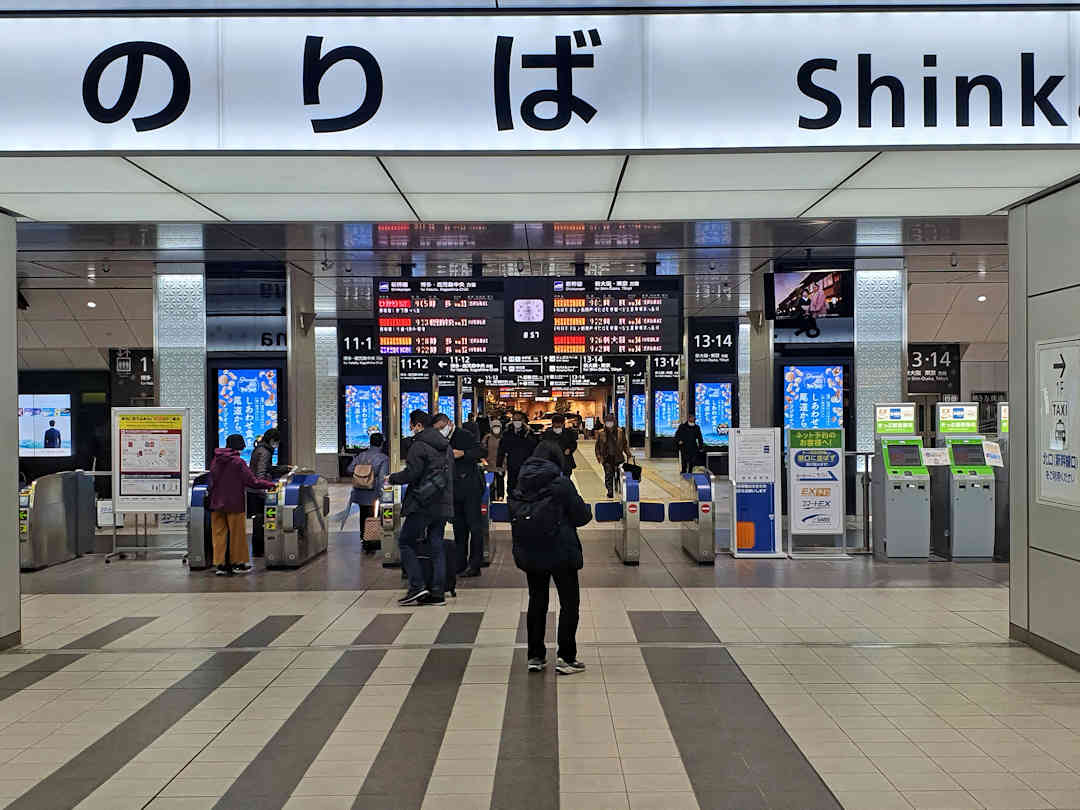
Hiroshima is conveniently located on the Sanyo Shinkansen route between Osaka and Fukuoka (Hakata)
Once in Hiroshima, it’s a short 30-minute ride on the San-yo JR line to Miyajimaguchi Station [ Google Maps location ], the access point to Miyajima island . From the station, it’s a quick stroll to the waterfront and the ferry terminal. The ferry ride to Miyajima Island takes about 10 minutes.
The ferry service to Miyajima Island is provided by two different companies. The JR Pass is only valid on the JR West Ferry. If you don’t have a JR Pass or want to use the other ferry, buy a ferry ticket at the ticket machines or use your IC card.

Only the JR West ferry to Miyajima is covered by the JR Pass
Hiroshima sits in the delta of the Ōta-gawa River as it enters the Seto Inland Sea, making it easy to explore the city on foot and by bicycle. Hiroshima also has a convenient public transportation system, comprising streetcars , JR trains , the Astram Line and buses .
While the sights on Miyajima are all within walking distance from the ferry terminal, Miyajima is a very mountainous island, and some sights on this itinerary include walking uphill. There is a ropeway partway up Mt Misen providing access to the Mount Misen Observatory [ Google Maps location ], but be aware that the ropeway is closed for maintenance twice a year for a few weeks (February/March and June/July). If the ropeway operating is important to you, check the website and/or contact the ropeway operator before your visit.

Hiroshima boasts a convenient public transportation system, including a number of tram lines | Photo by Djedj on Pixabay
Below is a map of the recommended accommodation, points of interest, eateries and transport terminals/stops mentioned in this article.
Day 1 – Travel to and first exploration of Miyajima
Today you will travel by train to Miyajimaguchi Station [ Google Maps location ], with a change at Hiroshima Station [ Google Maps location ]. This journey can be combined with a stopover in Kobe and/or Himeji if desired.
Once in Miyajimaguchi, walk to the Ferry Terminal and take the ferry across to Miyajima. Upon reaching the island, drop off your luggage at your accommodation and then head straight to the Daishō-in temple complex [ Official website , Google Maps location ] (the temple closes at 1700h).

Like Koyasan, Daishō-in on Miyajima was founded by Kōbō-Daishi in 806
The complex is built into the mountainside above Itsukushima-jinja [ Official website , Google Maps location ], the shrine with the Giant Floating Torii you’ll be passing on the ferry over. Daishō-in is one of the most important temples of the Shingon School of Buddhism. Like Koyasan [ Google Maps location ] in the mountains of the Kii Peninsula in Wakayama, it was founded by the monk Kūkai (posthumously known as Kōbō-Daishi) in 806. Take your time exploring the grounds and temple structures – it’s a truly serene place.
Afterwards, enjoy watching the sunset overlooking the Giant Torii. We also recommend buying some provisions for the next day at Foods Shop KUMAKIN [ Google Maps location ] (closes at 1900h).
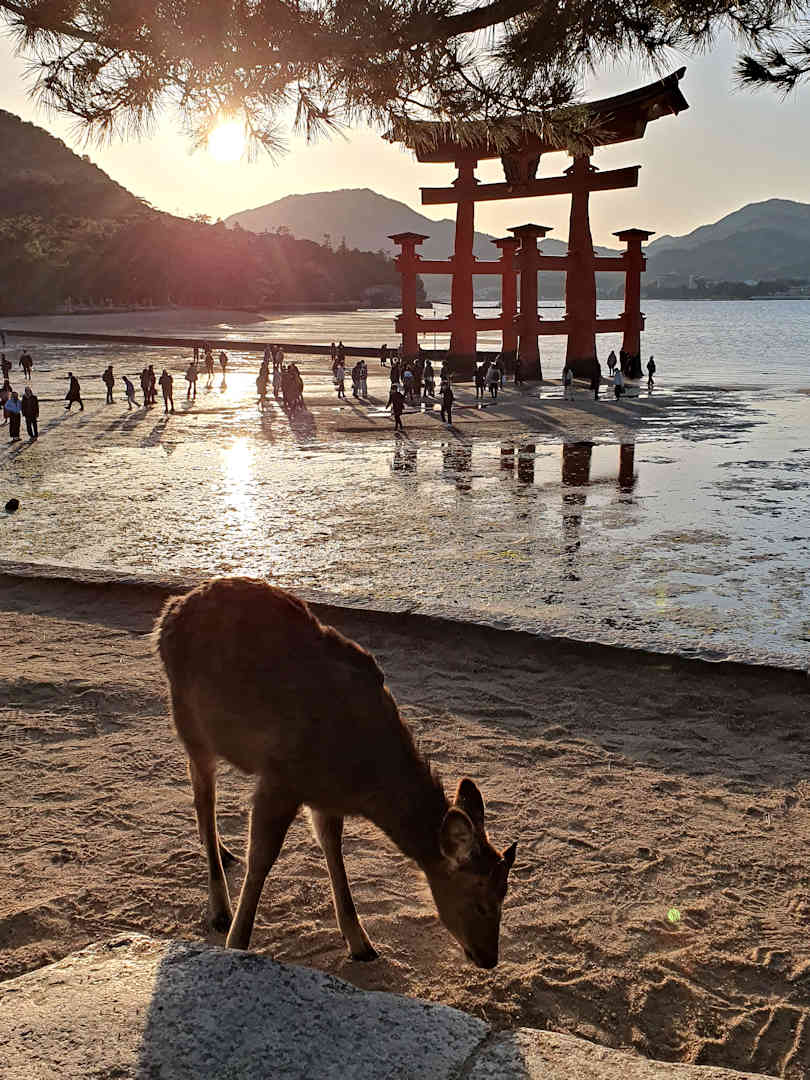
The Itsukushima-jinja Otorii on Miyajima is especially magnificient at sunset, and if the tide is low, you can even walk through it
When booking your accommodation, make sure to ask for a late check-out.
For accommodation, as with any other travel expenses, it’s worth shopping around. When we booked our accommodation, we looked across several booking platforms to find the best value-for-money option but found in this case that Booking.com offered us the best choice and price point. Wherever you book, do make sure you read the fine print to make sure you compare apples with apples. For example, your stay may incur extra charges (like local tourist taxes or cleaning fees). Some booking platforms include them, while with others, you have to pay them to your host upon arrival.
Below are my recommendations for accommodation options that fit the criteria of affordable, often meeting a sustainability certification, and that are close to public transport and points of interest.
What and where to eat on Miyajima
We recommend Okonomiyaki Kishibe [ Google Maps location ], known for its Hiroshima-style Okonomiyaki (The restaurant is closed on Thursdays and Fridays). Or, if you’re craving Miyajima specialities, such as delicious oysters and conger eel (anago), Mikotoya [ Google Maps location ] is the place to go (closed Sundays and Mondays).
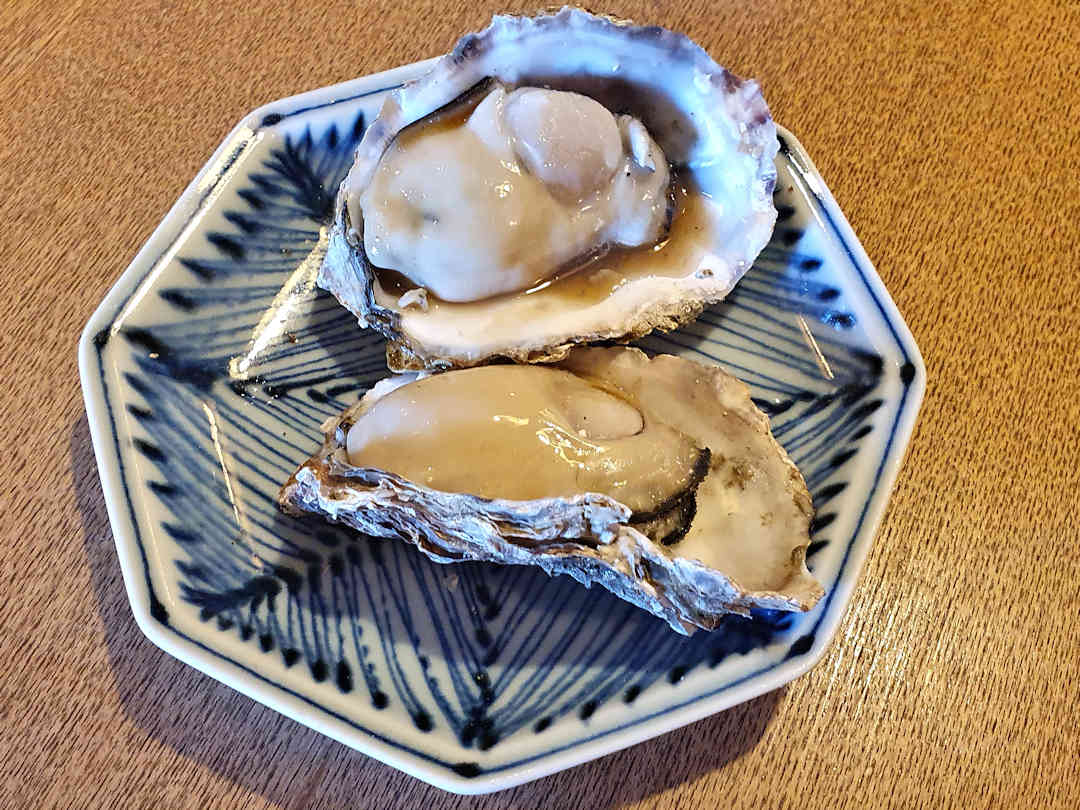
If you happen to visit Miyajima during oyster season make sure you try some - they are delicious
You’ll notice the beautiful Sika deer as soon as you arrive in Miyajima Island. Sika deer are native to Japan , and there are about 500 of them roaming freely around Miyajima.
While the deer may appear tame (and indeed some may come a bit too close for comfort), they are wild animals. Those living in the forests around the island actually avoid humans, and that’s how it should be. Disturbing the deer, taking selfies up close or even worse, feeding them, alters the deer’s behaviour and puts them in harm’s way.
Unfortunately, a lot of tourists coming to Miyajima, get up close and personal with the deer, just for the sake of an Instagram shot. Please don’t be one of them. Observe them from a distance and definitely do not feed them. It is actually an offence to feed the deer and there are a number of posters and signs requesting tourists not to feed them.
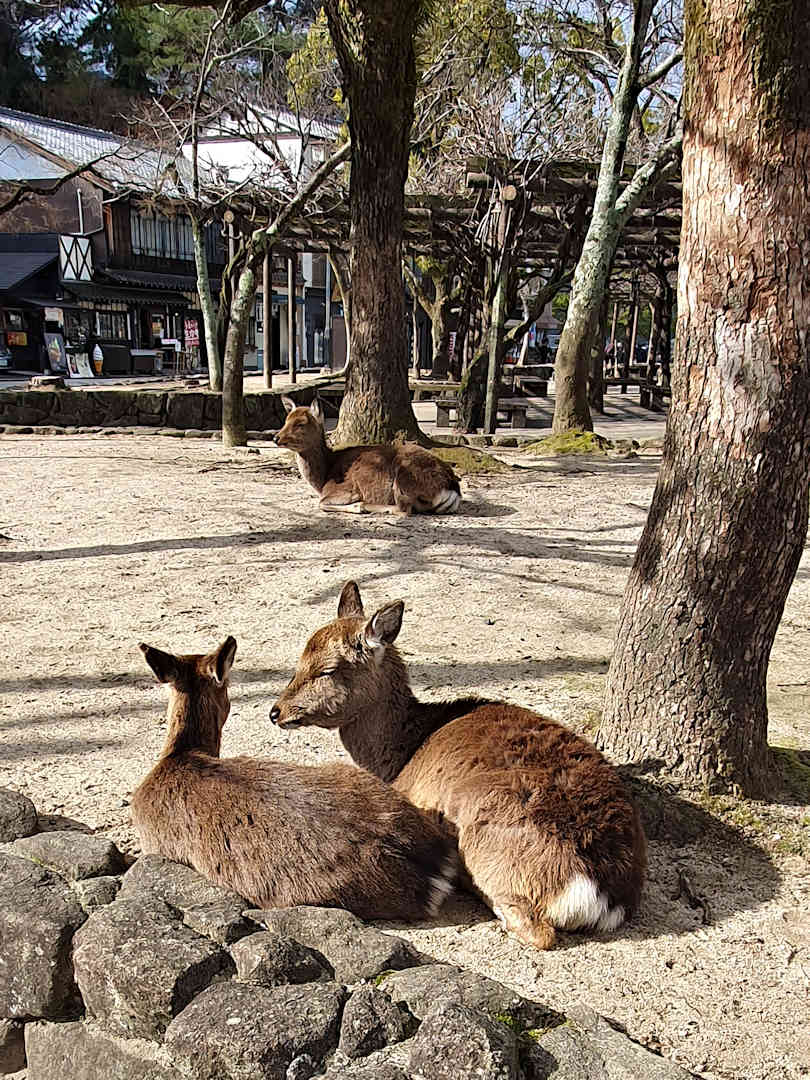
The deer on Miyajima are wild animals - Give them space and don't feed them
Day 2 – Miyajima and Hiroshima
This morning, you’ll be hiking up Mt Misen, the sacred mountain of Miyajima.
It’s a 3-hour round trip (approximately 8 kilometres with a 490-metre elevation gain) – we recommend hiking the Momijidani Course up (approximately 2 hours) and the Daishō-in Course down (approximately 1 hour).
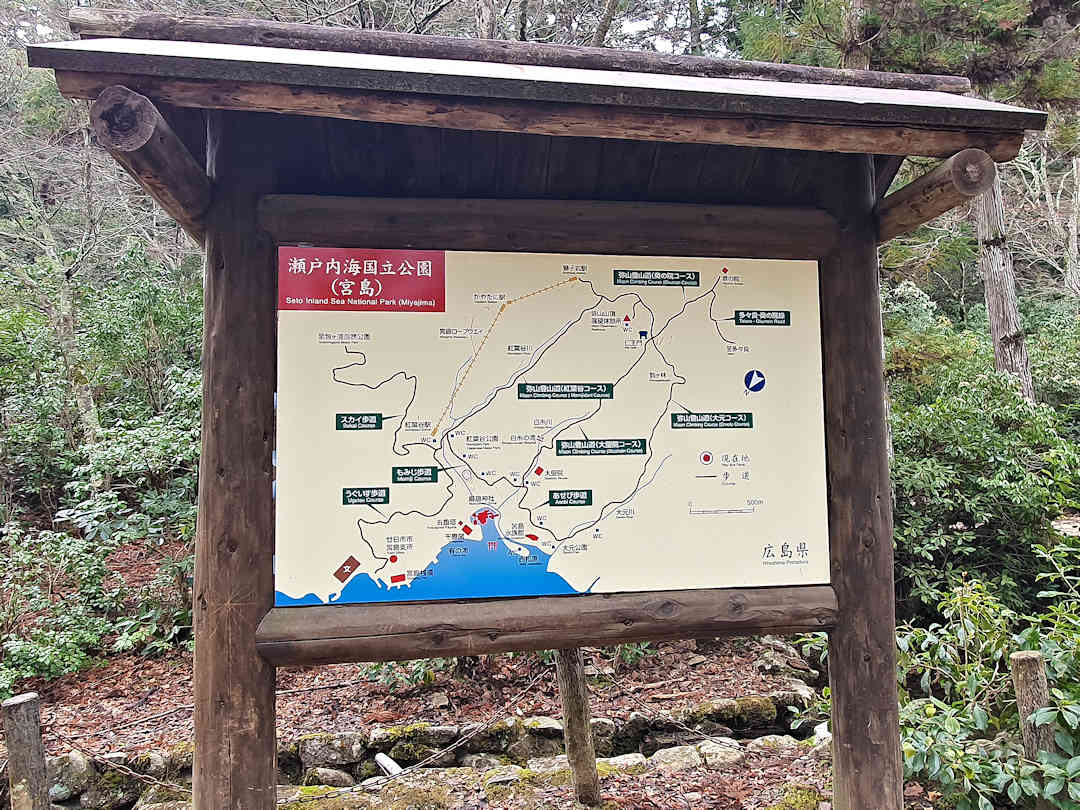
With a number of hiking trails leading to its summit, sacred Mt Misen on Miyajima is a paradise for nature lovers
The ropeway opens at 0900h, so aim for a 0700h to 0730h start of your hike to reach the top before the first ropeway users arrive. The hike is categorised as moderate . It requires at least a basic level of fitness and reasonably healthy knees, as the hike involves a large amount of walking up and down stone steps.
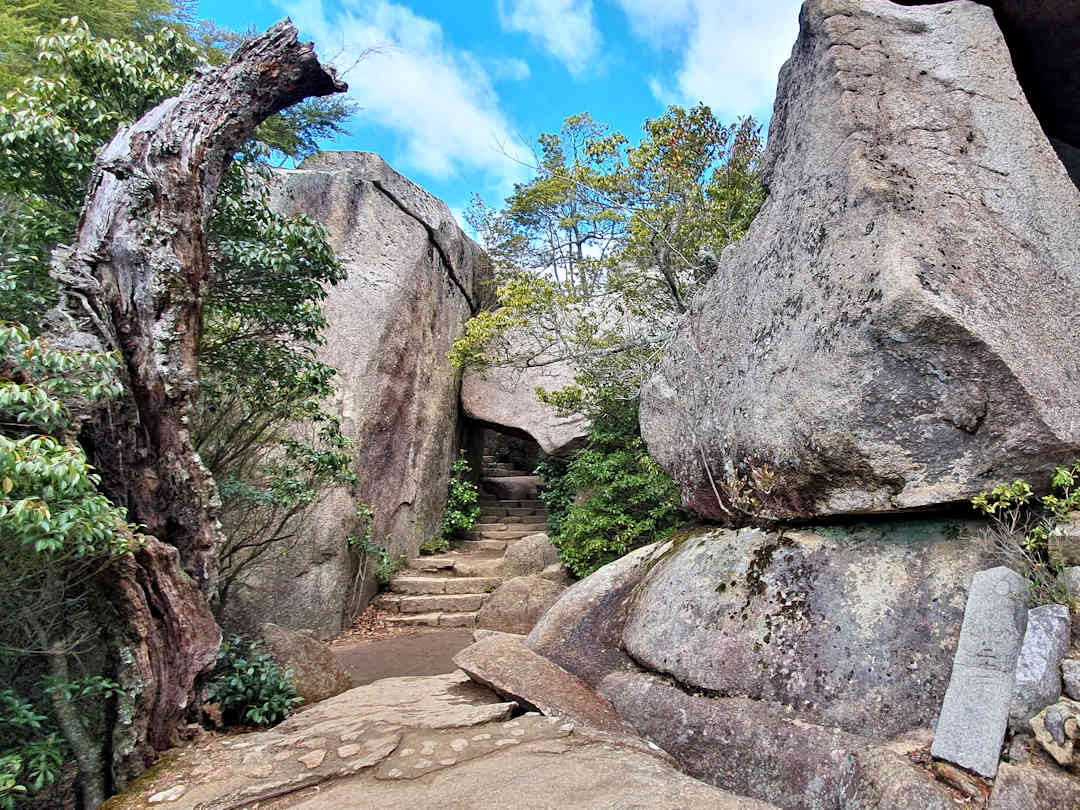
Hiking Mt Misen involves walking up and down a huge number of stone steps - bring hiking poles to make it easier on your knees
Kūkai himself used Mt Misen for ascetic practice. The fire lit by Kūkai 1,200 years ago still burns to this day in the Kiezu-no-Reikado pavilion [ Google Maps location ] near the summit (unsurprisingly, the structure is covered in soot). The fire was also used to light the Flame of Peace [ Google Maps location ] at the Peace Memorial Park in Hiroshima.
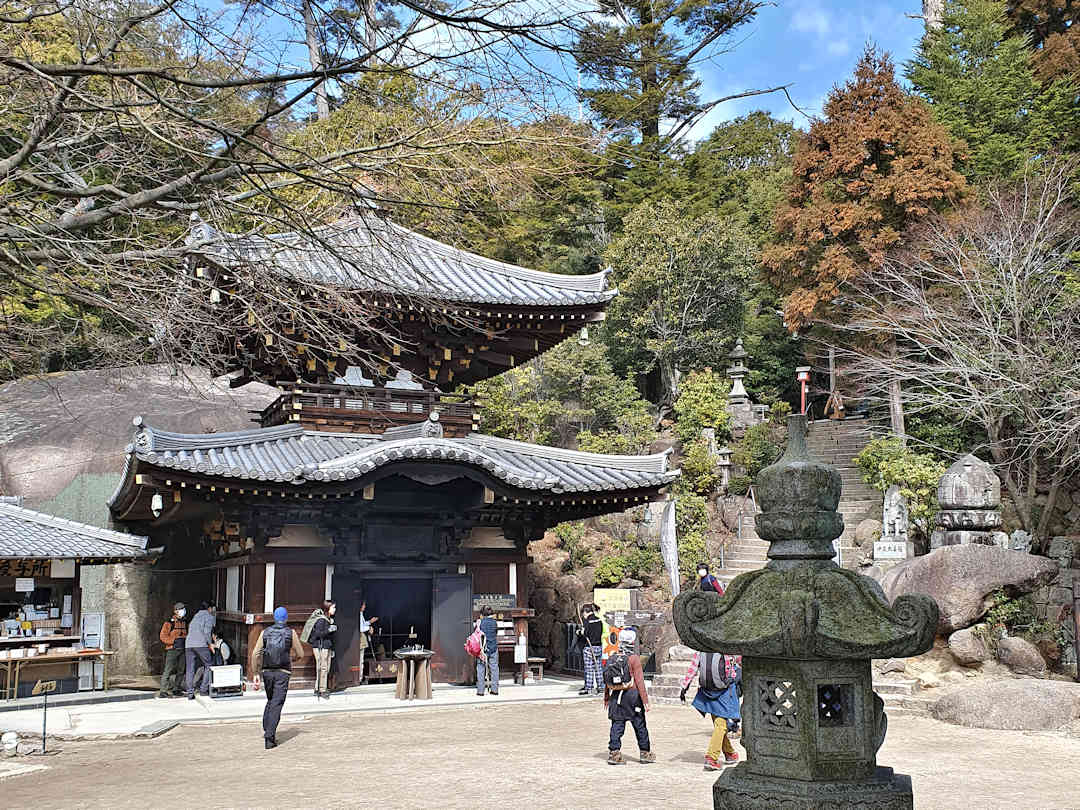
The fire lit by Kūkai 1,200 years ago still burns to this day in a pavilion near the summit of Mt Misen
If you prefer not to do the full hike, you can still experience the beauty of Mt Misen by taking the ropeway to the top. In this case, check out before you head to the ropeway (and ask your accommodation to keep your luggage for a few hours).
Getting to the ropeway still requires an uphill walk of about 1.5 kilometres. The ropeway ride itself takes about 15 minutes. Once at the top, you can visit the Shishiiwa Observatory (100 metres above the top ropeway station) or continue hiking to the summit of Mt Misen (approximately 1 kilometre or 30 minutes largely uphill) for stunning 360-degree views over the Seto Inland Sea.
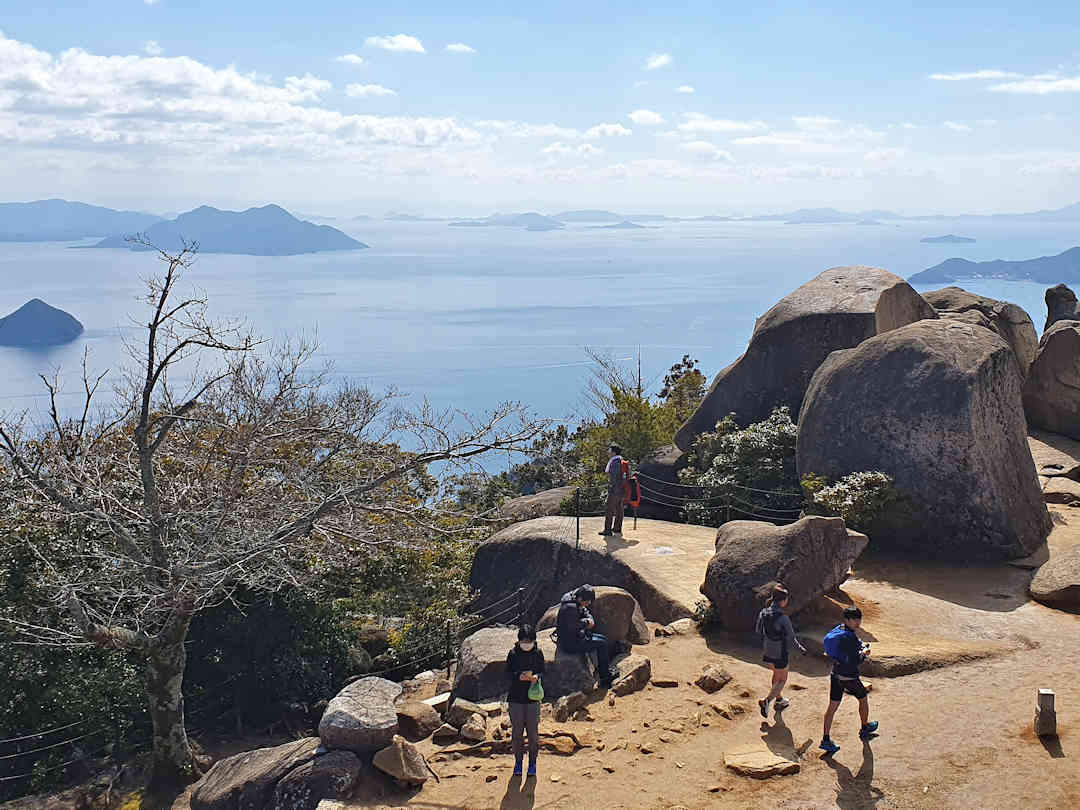
The summit of Mt Misen offers stunning 360 degree views over the Seto Inland Sea
Afterwards, head back to your accommodation for a shower before check-out and/or to pick up your luggage before heading to the ferry terminal.
If you’re looking for an edible souvenir of the island, buy a box of Momiji Manju (a sweet in the shape of a maple leaf, available with a variety of fillings – our favourites were smooth red bean paste and lemon curd).
Take the ferry back to the mainland, then the train back to Hiroshima and check into your accommodation for the night.
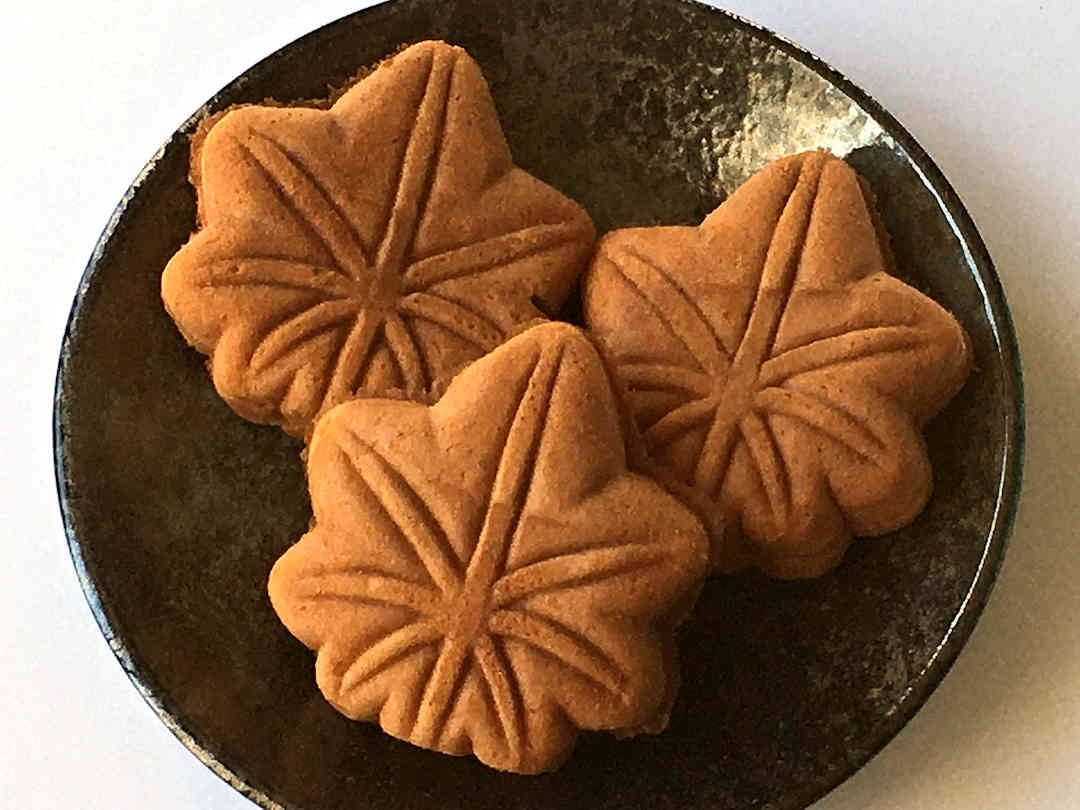
Before you leave Miyajima, make sure to taste Momiji Manju, a maple-leaf-shaped sweet available with a variety of fillings | Photo by Wiki Commons
Our accommodation recommendations for Hiroshima are all close to the sights on this itinerary:
Hiroshima is known for its own style of Okonomiyaki . Try it at Rokutsuboy a in Noboricho [ Google Maps location ] (closed Sundays) OR Okonomimura [ Google Maps location ].
Another must-try speciality is Hiroshima beef. Great places are Rokutsuboya in Noboricho (closed Sundays), Fuoco Yakiniku in Tatemachi [ Google Maps location ] or Aohige [ Google Maps location ] near the A-Bomb Dome.
If you missed out on Miyajima oysters or conger eel, Ekohiiki [ Google Maps location ] is an Izakaya restaurant near the A-Bomb Dome where you can try both.
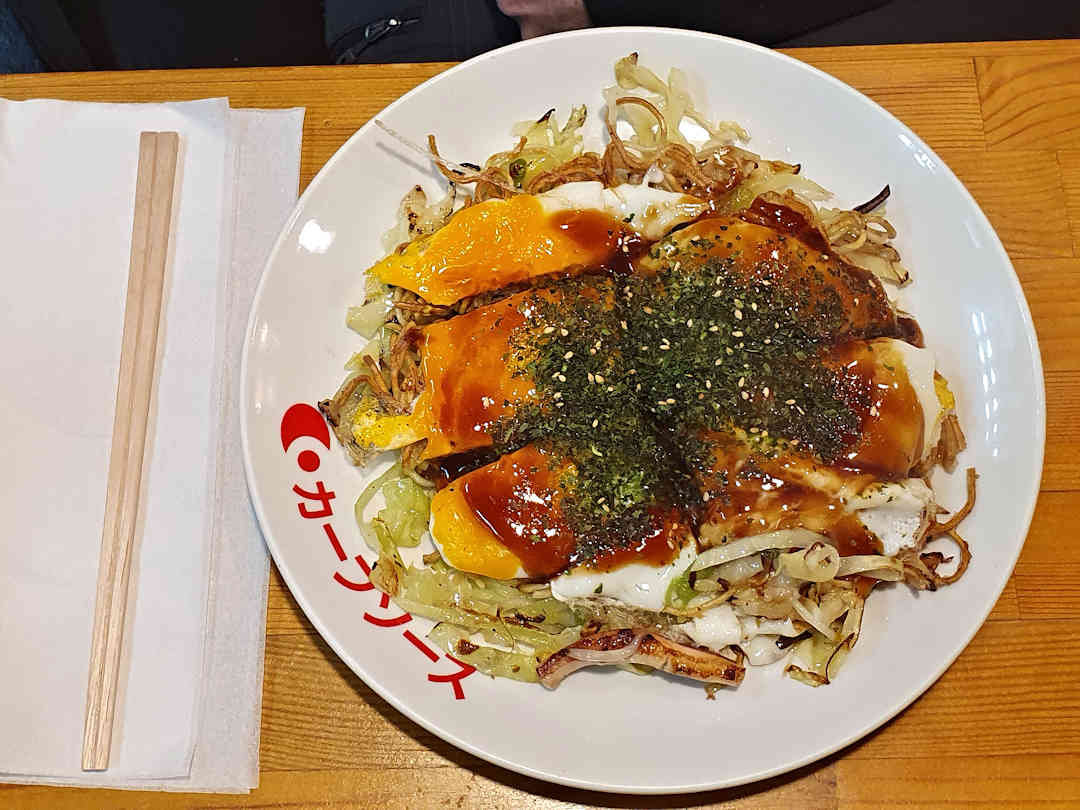
Hiroshima has its own style of Okonomiyaki, which we preferred over the Osaka style. What do you think?
Day 3 – Hiroshima
Today is all about exploring beautiful Hiroshima. So, after breakfast, check out of your accommodation and ask them to store your luggage for the day.
Your first stop will be the Peace Memorial Museum [ Official website , Google Maps location ] housed in two connected buildings near the southern end of the Peace Memorial Park. Take your time exploring the exhibits as you learn more about the events leading up to the atomic bomb, the immediate aftermath, the city’s rebuilding and the lasting impact of the bombing on the city and its people .

The Peace Memorial Museum is a must-see for those visiting Hiroshima
Make sure to join the talks with the descendants of survivors if you have the opportunity.
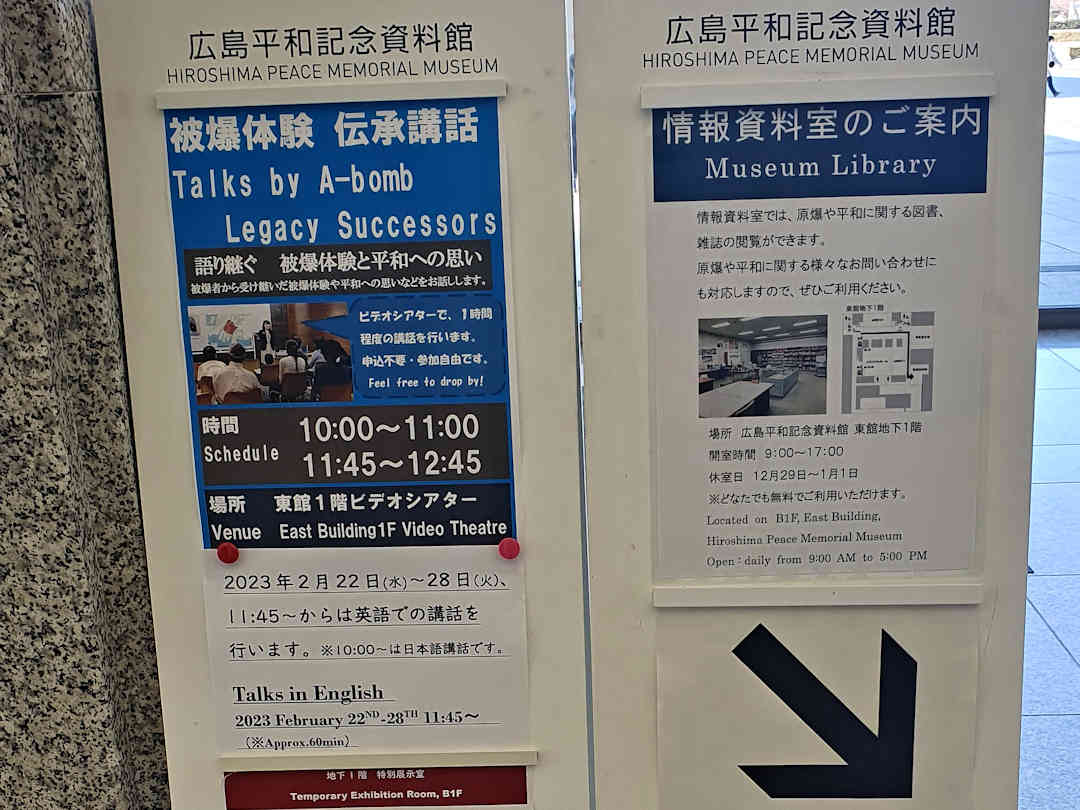
Join talks with the descendants of A-bomb survivors if you have the chance
Afterwards, if you need a bite to eat or just a break to let it all sink in, the museum has a nice, but simple café on the ground floor.
After your museum visit, take a leisurely stroll through the Peace Memorial Park, making sure to stop and pay your respects at the Hiroshima Victims Memorial Cenotaph, the Hiroshima National Peace Memorial Hall, and the Children’s Peace Monument.
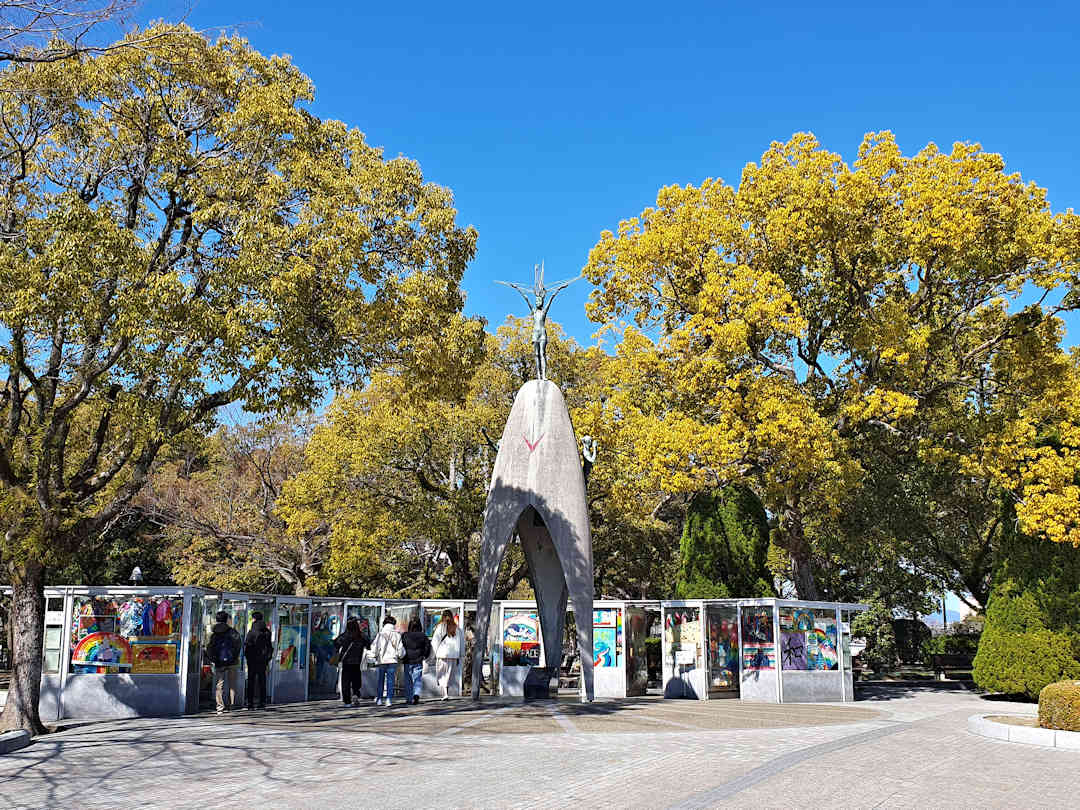
Make sure to visit the Children’s Peace Monument at the northern end of Hiroshima's Peace Memorial Park
Finally, cross Motoyasu Bridge and pay your respects at the Atomic Bomb Dome [ Google Maps location ] and the Hiroshima Atomic Bomb Hypocenter [ Google Maps location ] a block to the east – powerful symbols of peace for current and future generations.

Make sure to pay your respects at the Cenotaph and A-Bomb Dome when visiting Hiroshima
In the afternoon, consider visiting Mitaki-dera Temple [ Google Maps location ], a small temple complex in the hills to the north of the city centre. It takes about 20 minutes by public transport to get to Mitaki Train Station and a further 15-minute uphill walk from there.
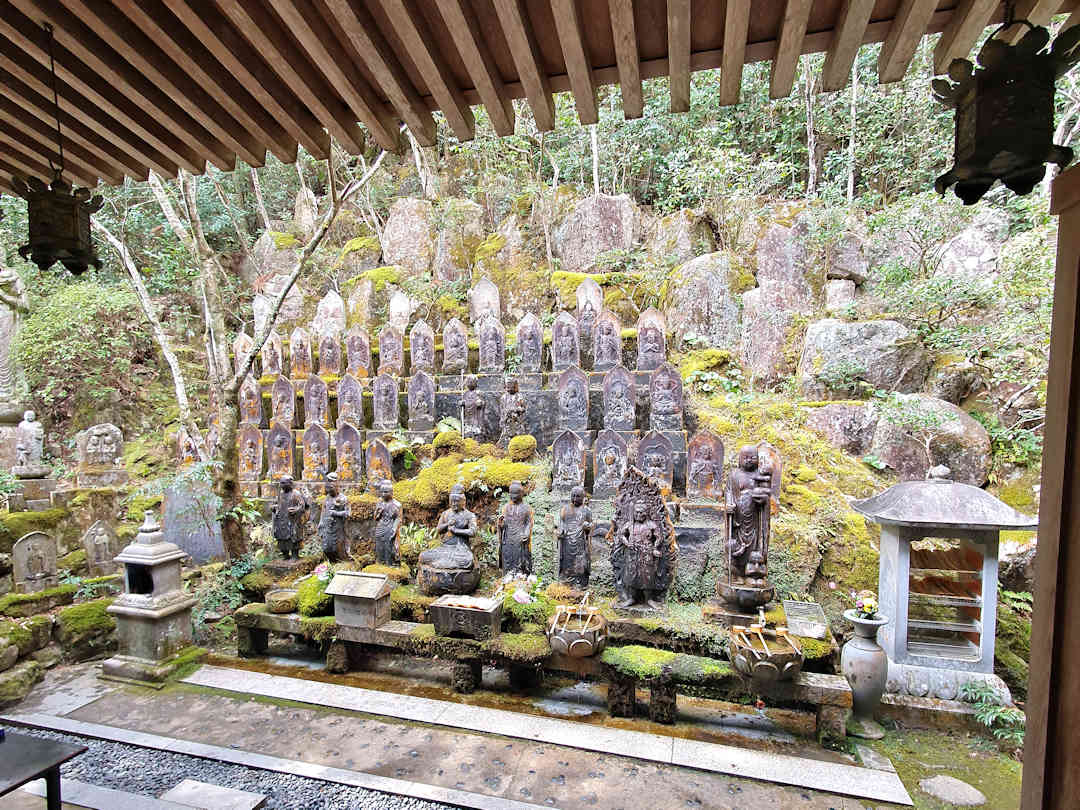
Mitaki-dera Temple is a tranquil oasis north of Hiroshima's city centre
The temple complex is beautifully tranquil with forest paths meandering along streams and waterfalls , between old temple buildings and shrines (some of which survived the A-Bomb blast), and past countless Buddha statues and rock carvings. There is also a stunning 16th-century pagoda which was brought here after the bombing for the spiritual support of the people of Hiroshima.
End your visit with a stop at the lovely Mitaki-dera Temple Tea House [ Google Maps location ] before you return to your accommodation to pick up your luggage and head to Hiroshima Station for your onward journey.
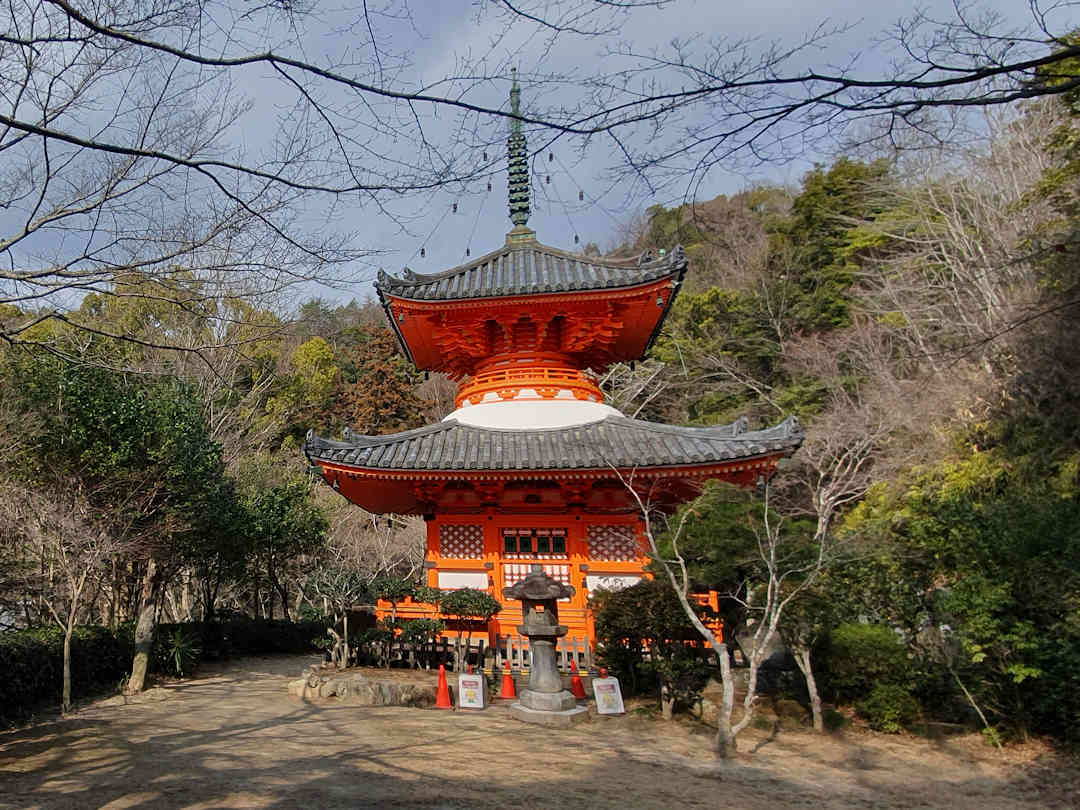
Mitaki-dera 's 16th century Pagoda was relocated here after the bombing for the spiritual support of the people of Hiroshima
If you are able to spend additional days in Hiroshima, we can also recommend:
- visiting the Hiroshima Castle Keep [ Google Maps location ] for historic insights into Japan ’s feudal period and panoramic views over the city centre;
- hiking the 10-kilometre-long Futabanosato Historic Trail ;
- joining a guided tour of the Mazda Museum [ Google Maps location ] and assembly line (Monday-Friday, advance reservation is required ); and
- experiencing a game of baseball at Mazda Stadium [ Google Maps location ].
A note on the Mazda Museum: Even if the tour is only offered in Japanese on the day of your visit, we can recommend attending. The museum exhibits have English signage, and the assembly line is (largely) self-explanatory. Our guide spoke English and was more than happy to answer any questions we had.
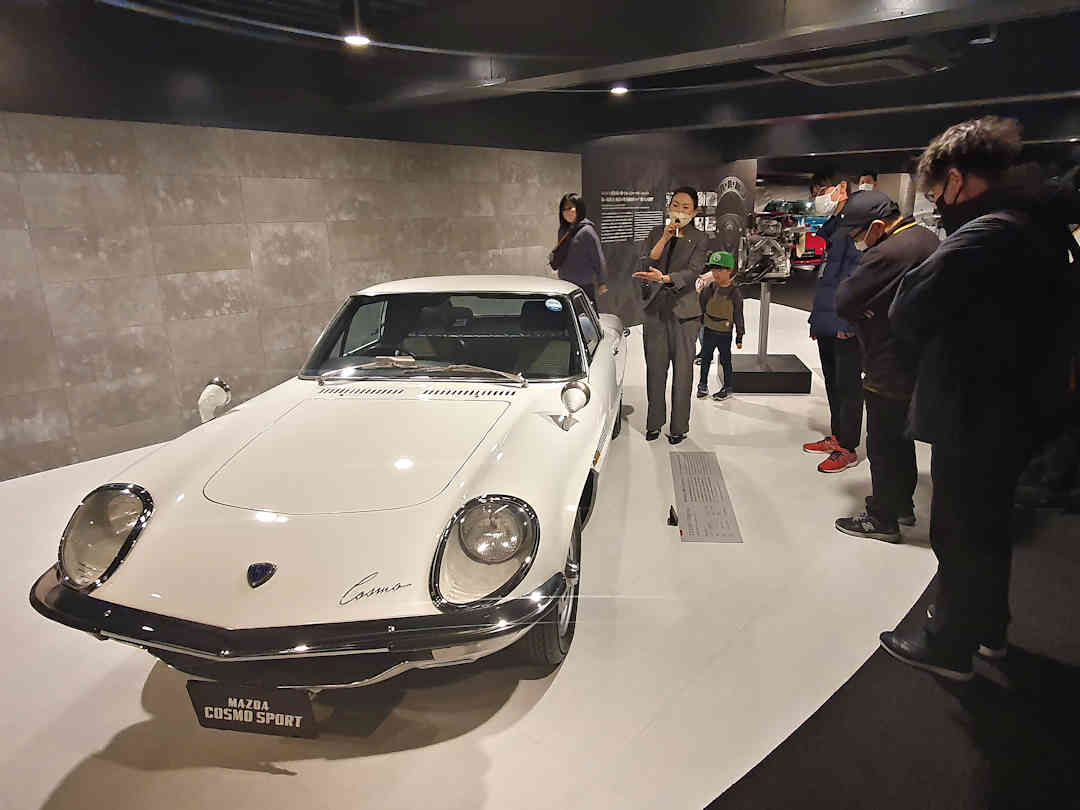
If you have more time to spend in Hiroshima, join a guided tour of the Mazda Museum and assembly line

Hiroshima is a great vantage point for the Shimanami Kaido and Shikoku Circuit cycling routes | Photo by Martin Magnemyr on Unsplash
And if you’re an avid cyclist, Hiroshima is a great vantage point for two epic cycling tours:
- the 70+km long Shimanami Kaido from Onomichi on Honshu Island to Imabari on Shikoku Island (budget at least two days, the more the better), and
- the 1,000km Shikoku Circuit – a complete circumnavigation of the island of Shikoku, starting and ending in Imabari (budget at least two weeks).
Onomichi can be reached by train from Hiroshima in just over an hour.
I wrote this Hiroshima and Miyajima itinerary and guide based on my own experience. If you have been to Hiroshima and/or Miyajima and you have something to add, please feel free to contact me. If you liked my article and tips and found them helpful, I would appreciate it if you could share them with your friends and family via the Share buttons below. Even better, link to the page from your personal blog or social media platforms.

- Travel Planning Guide
Should You Visit Hiroshima?

- Is Hiroshima Worth Visiting?
- Reasons to Visit Hiroshima
- In the Summer?
- In the Autumn?
- In the Winter?
- In the Spring?
What is Hiroshima most famous for?
- What is Hiroshima most known for?
What is the most famous sight in Hiroshima?
- How touristy is Hiroshima?
How long should I spend in Hiroshima?
Is hiroshima worth visiting.
Yes, Hiroshima is worth visiting for a number of reasons. This is a city that everyone should explore, and we loved our time here.
Whether you're a traveling as a family, a couple, or a backpacker, this city has a lot to offer. Any local will tell you what makes it special is the terrific museums and great food.
It's often mentioned as one of the best places to visit in major publications, such as in U.S. News Best Places to Visit in Japan .
Hiroshima is often recognized for its role in World War II. It was the tragic setting of the world's first nuclear attack. Today it is a modern city that is home to a memorial, museum, and park that commemorates those who lost their lives during those tragic events. The city and memorial promote everlasting peace in the world. The city also has many gardens and parks.

5 Reasons to Visit Hiroshima
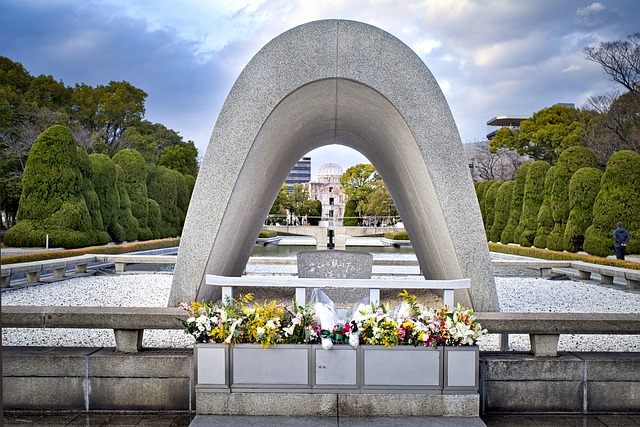
3. Shopping
There are outlet malls as well as morning markets, that make for interesting shopping. Head to old Sanyodo Road to shop where the locals shop and for international brands head to Hondori Central Shopping District.
4. Nightlife
The city has many hidden pubs and traditional Japanese bars. The most vibrant nightlife scene is in the Chugoku-Shikoku district, particularly around Nagarekawa Street.
5. Authenticity
Hiroshima has an authentic vibe where you can experience local culture, cuisine, and activities without the large tourist crowds of other popular destinations.
Is Hiroshima worth visiting in the Summer?
The high season for travel in Hiroshima is the summer, so expect to see more tourists than usual. This destination is somewhat touristy, so in the high season it's usually busier.
The weather in Hiroshima is fairly warm during summer, and stays around 26°C (79°F). But it can get as warm as 29°C (85°F) at times, too. It's also quite rainy during this season, so be prepared.
You'll also find it quite easy to get around on foot, because this is a very walkable city, especially in the nice weather. During this season it's fun to experience the museums and landmarks and the nightlife.
Is Hiroshima worth visiting in the Autumn?
Keep in mind that it can be fairly rainy during autumn, and temperatures hover around 17°C (63°F).
Autumn is the shoulder season for travel in Hiroshima, which means slightly less visitors than in the peak season. Even though Hiroshima is fairly busy with tourists, in the shoulder season there will be smaller crowds and better prices.
Autumn is a great time of year to explore the numerous museums and landmarks around town. They are fun for the whole family as well great for couples. This is a great time of year to wander through the museums.
Is Hiroshima worth visiting in the Winter?
Winter is the low season for travel in Hiroshima. This destination is fairly touristy, but in the low season you can find fewer crowds and better deals.
The weather in Hiroshima can be quite cold during winter, and averages around 4°C (40°F). But be prepared for much lower temperatures, too.
You'll like that you can take public transit easily in the winter, too. You can get around quickly while avoiding bad weather if needed. You'll find plenty to do during winter, as you'll be able to browse through museums, taste delicious cuisine, and enjoy an evening out.
Is Hiroshima worth visiting in the Spring?
This is the shoulder season for travel in Hiroshima. Even though Hiroshima is fairly busy with tourists, in the shoulder season there will be smaller crowds and better prices.
Keep in mind that it can be fairly rainy during spring, and temperatures hover around 14°C (56°F).
During this season it's fun to experience the shops and boutiques, the famous sights and museums, and the nightlife scene.
Hiroshima is most famous for being the sight of the world's first atomic bomb detonation. People visit this impressive city for its great museums. It is also known for its great food and shopping. And many visitors also come to this city for its nightlife. It is often described as park-filled, memorable, and meaningful.
The most popular sight in Hiroshima is Hiroshima Peace Memorial Park . You can see prices and costs for this and other sights in Hiroshima on our travel costs page .
Or, see tickets, activities, and tours for Hiroshima Peace Memorial Park and other attractions here .
How touristy is Hiroshima? Is it a popular city to visit?
Hiroshima is more popular with local tourists than with international visitors. Here are some of the most popular activities and tours. (Prices in US Dollars)
- Half Day Private Guided Walking Tour in Hiroshima City Viator $ 200
- Half Day Private Guided Walking Tour in Hiroshima City: $200
- Hiroshima Miyajima and Bomb Dome Private Tour: $276
- Hiroshima Custom Half Day Tour: $125
- Private Hiroshima and Miyajima Guided Tour: $220
- Hiroshima and Miyajima Bus Tour with Indian Lunch: $118
- Hiroshima Best Spots 6h Private Tour with Licensed Guide: $138
- An Amazing set of Cultural experience: Kimono, Tea Ceremony and Calligraphy: $98
- Japanese Traditional Archery Experience Hiroshima: $36
The ideal length of time for a trip to Hiroshima is two to three days. Since Hiroshima has a variety of activities such as museums, most people need this much time to see and do everything here.
If you have a specific amount of time for your trip, see our advice about how much time to spend here: Should I spend 1, 2, or 3 days in Hiroshima? and Should I spend 3, 4, or 5 days in Hiroshima? .
Subscribe to our Newsletter
Coupons and discounts! Travel tips!

Some of the links on this website are sponsored or affiliate links which help to financially support this site. By clicking the link and making a purchase, we may receive a small commission, but this does not affect the price of your purchase.
- Privacy / Terms of Use
- Activities, Day Trips, Things To Do, and Excursions
Inside Kyoto
A Kyoto Travel Guide
- Hiroshima And Miyajima Itineraries
My Hiroshima and Miyajima itineraries are carefully designed so that you can see the most important sights efficiently and comfortably, whether you go as a daytrip from Osaka/Kyoto, or stay overnight in Hiroshima or Miyajima.

- Hiroshima is only 1 hour and 42 minutes from Kyoto by the fastest shinkansen (bullet train). From Osaka, it’s only 1 hour and 33 minutes. So, if you’re short on time, you can actually visit Hiroshima as a daytrip from these cities (do not try it from Tokyo!). See my Getting to Hiroshima and Miyajima page for details.
- However, I strongly recommend that you spend a night or two in the area so that you can slow down and soak it all up. Then, your only decisions are: Do you spend one or two nights? And, do you stay in Hiroshima or Miyajima, or one night in each place? Read my suggested itineraries below to help you decide.
- For information on the sights mention here, see my Things to Do in Hiroshima and Miyajima page. For transport information, including travel between Hiroshima and Miyajima, see my Getting Around Hiroshima-Miyajima page.
- For restaurant suggestions, see my Best Restaurants in Hiroshima and Miyajima page.
- For my hotel suggestions, see my Best Hotels in Hiroshima and Miyajima page.
Hire A Travel Expert To Plan Your Japan Itinerary

Must-See Hiroshima 1-Day Trip Itinerary
If you’re really in hurry but still want to visit Hiroshima, you can definitely do it as a day trip from Kansai (Kyoto, Osaka etc). Note that if you spend one night in Hiroshima before or after doing this itinerary, you’ll find it more relaxing. Assuming you start from Kyoto, a Nozomi shinkansen leaving at around 7:45am will get you to Hiroshima station around 9:15am. You can always buy a bento or pastries at the station to eat on the train.
Start/9:30am: Hiroshima Station
9:45am: atomic bomb dome, 10:30am: hiroshima peace memorial museum, noon: peace memorial park, 2pm: shukkei-en garden, 3:30pm: return to hiroshima station.

Must-See 1-Day Miyajima Itinerary
This is a six-hour itinerary of Miyajima. You can use it as a stand-along itinerary for the island, or as part of a combined Hiroshima-Miyajima itinerary.
10am: Arrive Miyajima
10:30am: itsukushima-jinja shrine, 11:00am: daisho-in temple, noon: lunch, 1pm: momiji-dani-koen park, 2pm: mt. misen via miyajima ropeway, 4pm: finish in the village, hiroshima and miyajima two-day trip itinerary.
Two days is the perfect amount of time to check out Hiroshima and Miyajima. I strongly suggest visiting both places when you come to this part of Japan. If you only visit Hiroshima, you will only have the searing memories of the Peace Memorial Museum. But, the natural beauty and spiritual atmosphere of Miyajima act to settle those memories and give you the energy to process them. If you’re only going to spend one night in this area, you have to decide where to spend the night. If you want a lot of dining options and nightlife, I recommend spending the night in Hiroshima. If you want peace and quite and want to try a ryokan, consider spending the night in Miyajima.
Check Hotel Availability
Destination, check-in date, check-out date.

Option A: Night in Hiroshima
Day 1: hiroshima and night in hiroshima, day 2: miyajima and return to kyoto/osaka, option b: night on miyajima, day 1: miyajima and night on miyajima, day 2: hiroshima and return to kyoto/osaka, hiroshima-miyajima 3-day trip itinerary, day 2: miyajima and night on miyajima, day 3: miyajima and return to kyoto/osaka.
Where Are These Places Located?
- Open the Hiroshima map
- You will see the list of places on the left hand side. (Click the 3-line icon in the top left corner if not). Scroll down or use the map search (the magnifying glass icon) to find the place you want.
- Click the name of the place in the list. Its location pin will be highlighted on the map.
- Map pins are color coded - BLUE: Hotels | VIOLET: Ryokan | PINK: Places to Eat | YELLOW: Things to See and Do
- If you're using the map on your phone, open the map and then search for the name of the place. The map will then zoom in on its location.
Hiroshima and Miyajima Travel Guide:
- Hiroshima and Miyajima Travel Guide Overview
- Things To Do In Hiroshima and Miyajima
- Hiroshima and Miyajima Walking Tour
- Best Places To Eat In Hiroshima And Miyajima
- Hiroshima And Miyajima Cherry Blossoms
- Hiroshima And Miyajima Fall Foliage
- Hiroshima And Miyajima Districts
- Best Ryokan In Hiroshima And Miyajima
- Best Hotels In Hiroshima And Miyajima
- How To Get To Hiroshima and Miyajima
- Getting Around Hiroshima and Miyajima
- When To Go To Hiroshima and Miyajima
Other Japan Travel Guides:

Japan Itineraries:
To fully plan your trip to Japan, see my comprehensive Japan itineraries which guide you to the best locations and map out each day for you.
- Japan Itineraries Overview
- 1 Week Japan Itinerary: Tokyo and Kyoto
- 10 Day Japan Itinerary: Tokyo, Kyoto and Kanazawa
- 10 Day Japan Itinerary: Tokyo, Kyoto and Takayama
- 2 Week Japan Itinerary: The Grand Tour
- 7 to 10 Day Japan Itinerary: Kyoto, Osaka, Nara and Hiroshima
- Japan With Children Itinerary
Disclosure: InsideKyoto.com is a participant in the Amazon Services LLC Associates Program, an affiliate advertising program designed to provide a means for sites to earn advertising fees by advertising and linking to amazon.com and amazon.co.uk. World Nomads provides travel insurance for travellers in over 100 countries. As an affiliate, we receive a fee when you get a quote from World Nomads using this link. We do not represent World Nomads. This is information only and not a recommendation to buy travel insurance.

IMAGES
VIDEO
COMMENTS
Miyajima Island is a must-visit spot in Hiroshima! It is without a doubt one of the top places to visit in Hiroshima in three days and after hopping off the ferry, you'll understand why! Although only 27 kilometers from Hiroshima mainland, you should allocate about an hour and a half to get to the island, so waking up early is advised!
In terms of popular culture recognition, Hiroshima is more famous than Nagasaki because it was bombed first. For travelers, more visit Hiroshima than Nagasaki because you can (technically) visit it on a day trip from Tokyo, Kyoto or Osaka, thanks to the Shinkansen. Since Nagasaki isn't currently served by bullet train, and requires a journey ...
Visit Hiroshima Peace Memorial Park: It would be impossible to visit Hiroshima and not take the time to visit the 120,000 square meter park memorializing the site of the bombing of Hiroshima.It was decided that, instead of renovating, the area would be preserved with the. Now UNESCO World Heritage, A-Bomb Dome as it stood on that day.
The best sights to see in Hiroshima Shukkei-en Garden. ... While the castle you will see today only dates back to 1958 - the original one having been lost to the atomic bombing of 1945 - Hiroshima Castle is still a historic visit to add to your to-do list in Hiroshima. Also known as "Carp Castle", the landmark now serves as a museum ...
Atomic Bomb Dome should be one of the first things to do in Hiroshima. It is an iconic symbol of the "peace city" - Hiroshima. Atomic Bomb Dome is also called A-Bomb Dome, Genbaku Dome, or the Hiroshima Peace Memorial and it is a part of the Hiroshima Peace Memorial Park.Hiroshima Peace Memorial Park serves as a memorial to people killed in the atomic bombing of Hiroshima on August 6th ...
It is about a 30-minute ride from Hiroshima to Miyajimaguchi Station. Once you arrive at Miyajimaguchi Station, follow the signs for the Miyajima Island ferry. The ferry is no more than a 10-minute walk from the Miyajimaguchi Station. Both, the train and the ferry are covered by the JR Pass.
Hiroshima Orizuru Tower. Hiroshima Orizuru Tower, which opened to the public in 2016, is located right beside the Atomic Bomb Dome in central Hiroshima. The tower is 50 meters tall and gives you a fantastic panoramic view of the Peace Memorial Park, the Atomic Bomb Dome, and Hiroshima city. Well worth a visit!
Miyajima Island & Itsukushima Shrine. The beach and famous Torii gate at Itsukushima Shrine on Miyajima Island. After our visit to the Hiroshima Peace Memorial Park, we visited the second UNESCO World Heritage Site, the Itsukushima Shrine on Miyajima Island. This particular Shinto Shrine has the only Torii gate in the middle of the sea.
Visit Hiroshima during your trip to Japan and learn about the impact of the atomic bombing in this tour. View on Klook. Sea Kayak Experience in Hiroshima. ¥8,000. ★★★★★. 1. View on Klook. Hiroshima City, Discover Hiroshima in a Day. ¥28,896.
48 hours in Hiroshima. Anita Isalska. May 31, 2013 • 6 min read. Friendly, picturesque and a paradise for foodies. This description might not spring to mind when you hear the word ' Hiroshima ', but word is starting to spread about this most surprising of Japanese cities. As the first city in history to suffer a nuclear attack, Hiroshima has ...
Hiroshima Travel Guide. Last Updated: June 3, 2024. Most people visit Hiroshima to learn about the atomic bomb that was dropped on the city by American forces in 1945 at the end of World War II. The memorial to the victims, centered around a bombed-out dome — the only structure that survived the blast — is sobering.
Continue reading to read our insider travel tips and how to maximize your time with these top places to visit in Hiroshima. Click on the links below to jump to certain sections of this Hiroshima 2 day itinerary. Map. Itinerary Day 1: Hiroshima Tourist Spots. Itinerary Day 2: Miyajima Day Trip.
When should you visit Hiroshima? Knowing whether it's worth it to visit Hiroshima might come down to the time of year you're traveling. There's no perfect time to visit Hiroshima, but the usual holidays and popular times of year are probably best avoided.
2) Getting to Hiroshima. A day in Hiroshima can be done in a few different ways depending on your itinerary: . (1) Day trip from Kyoto / Osaka. (2) Day trip from Kyoto / Osaka + Miyajima. (3) Overnight in Hiroshima. In general, you will either be taking a day trip to Hiroshima (most likely from Kyoto / Osaka), or you will be spending a night or ...
Here are the 10 reasons why: Take The Ferry To Miyajima (宮島) Visit Ground Zero If You Are A History Buff. Experience Authentic Okonomiyaki. Explore the Samurai Castle. Ride The Streetcars. Experience The Sunset At The Torii Gate. The Kintaikyo Bridge in Iwakuni. Car Lover's Paradise, The Mazda Museum.
Discover the best things to do in Hiroshima, Japan, with Tripadvisor's guide to the city's top attractions, museums, parks, and historical sites. Whether you want to learn about the atomic bombing, enjoy the local cuisine, or explore the natural beauty of the region, you will find plenty of options for a memorable trip. Read reviews, see photos, and book your tickets online.
The Hiroshima Tourist Pass is a great way to explore the city of Hiroshima without breaking the bank. This pass allows you to travel around on public transportation for 1 day (¥1,000), 2 days (¥1,500), or 3 days (¥2,000). It's perfect for visitors who want to experience all that Hiroshima has to offer in a short amount of time, and it's ...
You can visit Hiroshima Peace Memorial Park, which is filled with memorials of the atomic bombing. It's an important part of history and a place that should be visited and respected. While you're there, you can visit the museum. Audioguides are available. Alternatively, you can read the signs to learn more.
The Visit Hiroshima Tourist Pass will give you unlimited rides on trams, buses, and Miyajima ferries for 1, 2, or 3 consecutive days. It costs JPY 1,000, JPY 1,500, and JPY 2,000 respectively and can be purchased in advance through Klook. People who buy the pass will receive a voucher book with discount coupons to various restaurants and ...
Hiroshima and nearby Miyajima Island should be on every traveller's Japanese bucket list. From the iconic A-Bomb Dome [Official website, Google Maps location] in Hiroshima to the giant floating vermilion-coloured Torii off Miyajima [Official website, Google Maps location], there is an abundance of things to see and do.Whether you're a history buff, a nature enthusiast or a foodie, our ...
Yes, Hiroshima is worth visiting for a number of reasons. This is a city that everyone should explore, and we loved our time here. Whether you're a traveling as a family, a couple, or a backpacker, this city has a lot to offer. Any local will tell you what makes it special is the terrific museums and great food.
Three days in the area really gives you time to slow down and also allows you to spend one night in Hiroshima and one night on Miyajima. Day 1: Hiroshima and night in Hiroshima. Travel from Kyoto or Osaka to Hiroshima by shinkansen and do my Must-See Hiroshima 1-Day Trip Itinerary above. Spend the night at a hotel in Hiroshima.